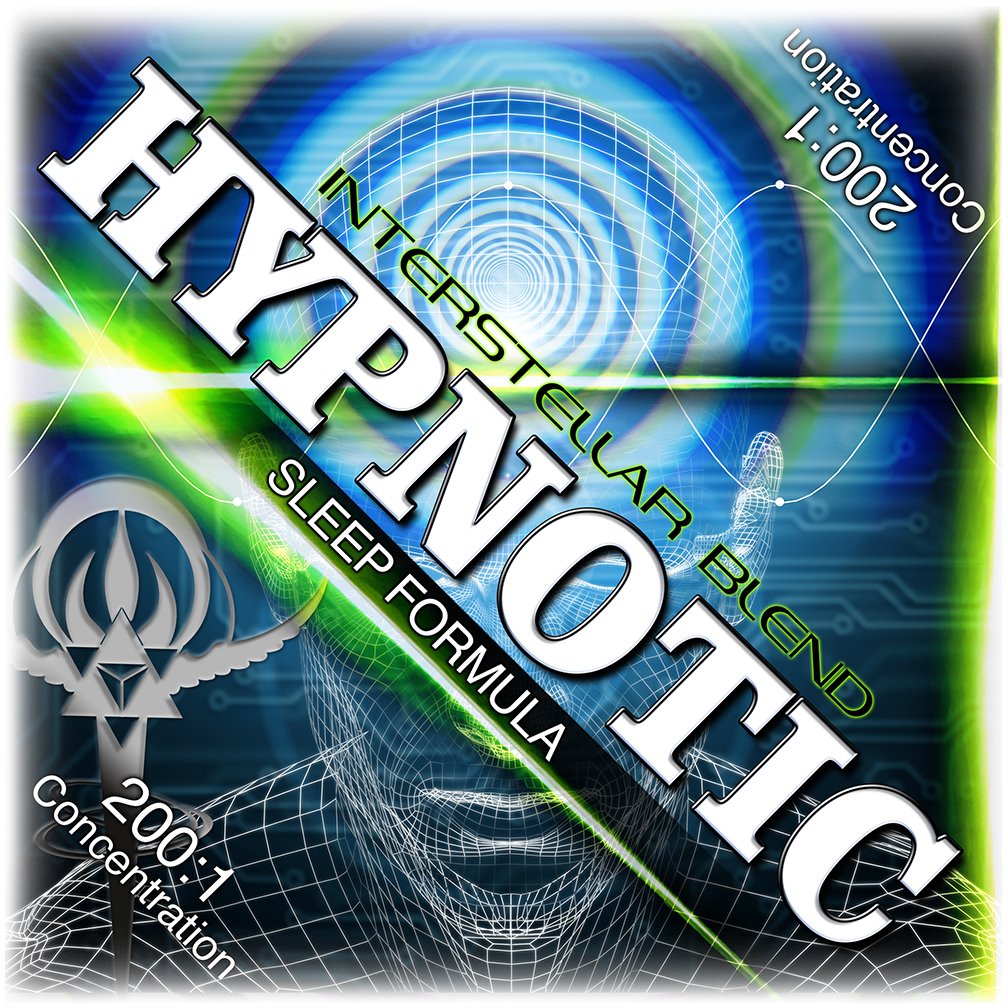
HYPNOTIC : Ultimate Sleep Formula 200:1
May 20, 2020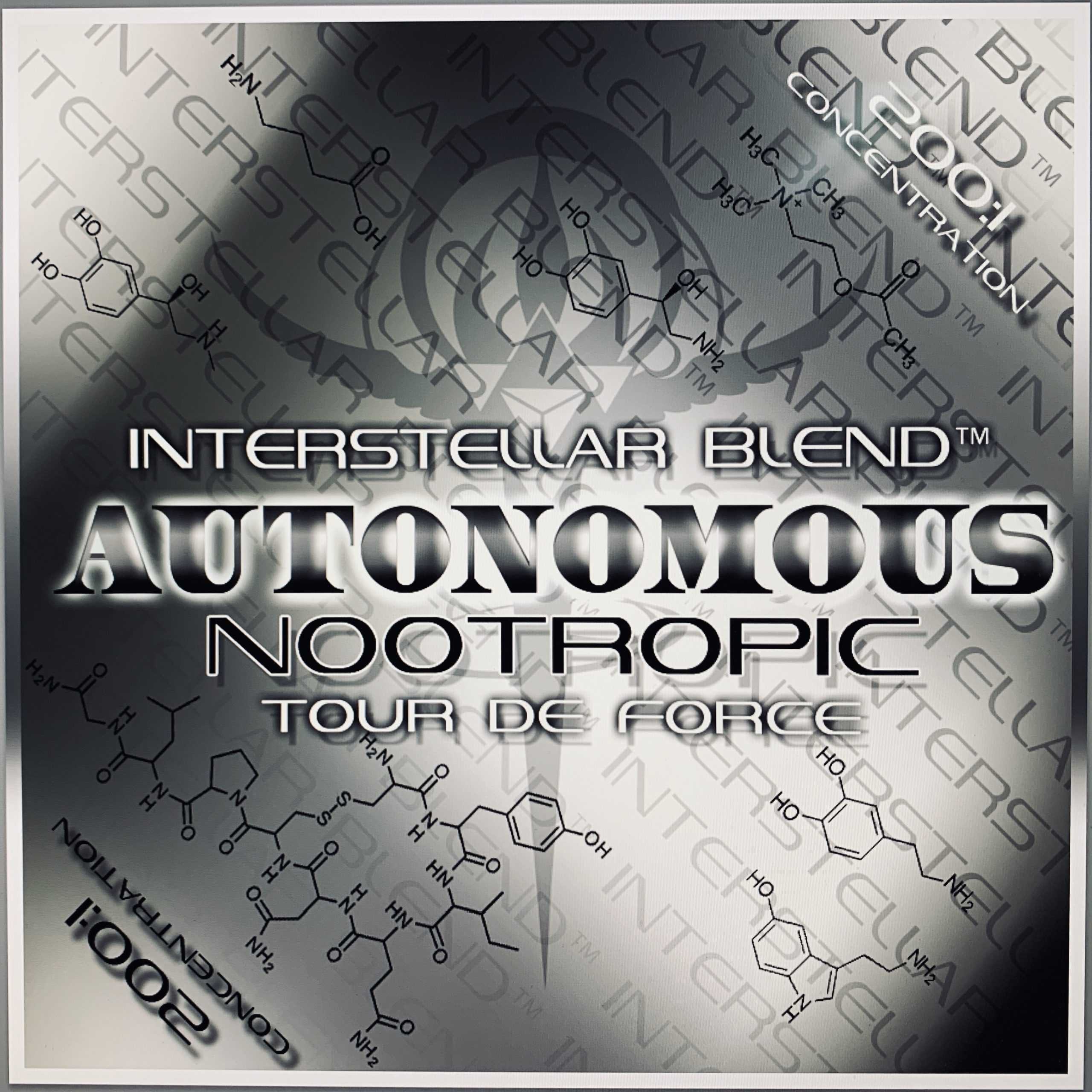
AUTONOMOUS : Nootropic Tour De Force 200:1
September 18, 2020VICTORIOUS : Science Based Anti Viral Formula 200:1
$275.00
introducing
INTERSTELLAR blend
“victorious”
SCIENCE BASED INGREDIENTS
THE MOST COMPREHENSIVE ALL NATURAL ANTIVIRAL FORMULA EVER CREATED
Featuring: 1-Dehydrogingerdione – Zingiber Officinale (Ginger)• 3,2᾿Dihydroxyflavone (3,2᾿Dhf) & 3,4᾿Dihydroxyflavone (3,4᾿Dhf) – Trifolium Repens L. • 6-Gingerol – Zingiber Officinale (Ginger)• Acidicheteroglucan – Tremella Fuciformis • Aconitum Carmichaelii Debx • Ailanthus Altissima Stem Bark • Allantoin – Glyoxylic Acid • Alphitonia Philippinensis Stems • Amygdalin – Semen Armeniacae Amarum • Anemarrhena Asphodeloides • Angelica Sinensis (Oliv.) Diels • Apigenin – Celery • Arctigerin, Arctin – Burdock (Arctium Lappa) • Artemisinin – Artemisia Annua • Aspalathin – Rooibos Tea • Atractylodin ,Β-Eudesmol, Hinesol, Hydroxy-Atractylo – Rhizoma Areactylodis Lanceae • Baicalein – Scutellaria Baicalensis Georgi • Benzaldehyde – Laurus Nobilis Leaves • Berberine – Coptis Chinensis • Beta-Sitosterol – Rice Bran Oil • Betulinic Acid – Betula Platyphylla Suk Bark • Bisdemethoxycurcumin – Turmeric Rhizome • Brachyamide B – Piper Boehmeriaefolium (Miq.) C. Dc • Bulbocapnine – Corydalis Decumbens(Thunb.) • Caffeic Acid – Cimicifuga Simplex (Dc.) Wormsk. Ex Turcz.Root • Calanolide A – Calophyllum Lanigerum • Campesterol – Rapeseed Oil • Carvacrol – Oregano • Chavicine – Black Pepper • Chelidimerine – Chelidonium Majus • Chlorogenic Acid – Green Coffee Bean • Chrysin – Pinus Mon-Ticola Dougl • Cinanserin – Cinnamic Acid • Cinnamomum Cassia Presl Dried Bark • Cirsilineol – Cirsium Lineare (Thunb.) Sch. • Cirsimaritin – Rabdosia Eriocalyx • Cis-Capsaicin (Civamide) – • Colchicine – Colchicum Autumnale L. • Cordifolioside A – Viola Verecunda • Crategolic Acid – Hawthorn • Curcumin – Turmeric Root • Cycloastragenol – Astragalus Membranaceus • Cyclocurcumin – Turmeric Root • Demethoxycurcumin – Turmeric Root • Dianthus Caryophyllus Seed – Carnation • Dioscin, Diosgenin – Wild Yam (Dioscorea Oppositae Thunb)• Douchi (Semen Sojae Praepatum) – Semen Sojae Praepatum • Egcg – Green Tea • Emodin – Rhubarb • Eriodictyol – Lemon • Eugenitin – Clove • Ferruginol – Podocarpus Ferruginea • Fisetin – Rhus Succedanea L • Flavonol Glucoside – Trichilia Connaroides Leaves • Forskolin – Coleus Forskohlii • Fructus Perillae – Perillafrutescens • Fumarophycine – Laptopyrum Reichb • Galangin – Alpinia Officinarum Hance Root • Gallic Acid – Rheumpalmatum L.Root • Genistein – Genista Tinctoria Linn Root • Glycyrrhizic Acid – Licorice Root • Gossypol – Cotton Seed • Guineensine – Piper Longum L. • Gypsum Fibrosum – Gypsum • Hawthorn Flavone – Crataegus Pinnatifida Bunge • Herba Dendrobii – Dendrobium Nobile Lindl • Herbacetin – Flaxseed • Hesperetin – Citrus Aurantium • –Hesperidin Nobiletin B-Phellandrene – Pericarpium Citri Reticulatae • Himachalol – Cupressus Funebris Endl. • Honokiol – Magnolia Officinalis • Houttuynia Cordata – Houttuynia Cordata Thunb • Hypericin Pseudohypericin Protohypericin – Forsythia Suspensa • Isochavicine – Pepper • Isoliquiritigenin – Glycyrrhiza Uralensisfisch Root • Isopiperine – Pepper • Isothymonin – Kaempferia Galanga L • Jatrorrhizine – Phellodendron Amurense Rupr. • Jujuboside A+B – Jujube • Kaempferol – Kaempferol Galanga L • Kaempferol 3-O-Robinobioside – Robinia Pseudoacacia L. • Leachianone – Morus Alba Root Bark • Lepidium Meyenii (Maca ) • Lily – Lilium Auratum • Luteoforol (A Flavan-4-Ol) – Peanut Shell • Luteolin – Peanut Shell • Lycoris Radiata – Lycoris Radiata (L’her.) Herb. • Macaranga Barteri Leaves • Maclura Cochinchinensis (Loureiro) Corner Root • Magnoflorine – Thalictrum Aquilegifolium Root • Marrubium Peregrinum L (Lamiaceae) • Meliacine – Melia Azedarach L • Mint – Mentha Haplocalyx Briq.• Morroniside,7-0-Methylmorroniside, Sweroside, Loganin, Cornus-Tannin 1,2,3 – Cornus Officinalis (Fructus Corni) • Morroniside,Cornus-Tannin 1,2,3 – Fructus Corni • Myricetin – Black Bayberry Fruit • N-Acetylcysteine ethyl ester (NACET) • Naringenin – Amacardi-Um Occidentale L.) • Ndoxyl-Β-Glucoside Uridine, Salicylic Acid,Daucosterol, Β-Sitostero – Radix Isatidis P.E (Satis Tinctoria L. Isatis Indigotica Fort.) • Nothofagin – Aspalathus Linearis • Oleanolic Acid – Olea Europaea L.Leaves • Olomoucine Ii – • Ophiocarpine – Corydalis Ophiocarpa Hook. F. Et Thoms • Ophiopogonin A B C D – Ophiopogon Root • Orientin – Globeflower • Oxypeucedanin Stiamasterol Β-Sitosterol Β-Daucosterin – Angelica Dahurica • Paeoniflorin – Radix Paeoniae Rubra • Patrinia Villosa Juss. – Patrinia Villosa (Thunb. ) Juss. • Peach Kernel – Emen Persicae • Pectolinarin – Linaria Vulgaris Hill Subsp. • Pelargonium Sidoides – Pelargonium Peltatum (L.) Ait. • Pentadienoylpiperidine – Pepper • Phragmitescommunis Trin – Phragmites Australis (Cav.) Trin. Ex Steud • Phyllanthus Orbicularis – Phyllanthus Orbicularis Kunth • Pinusolidic Acid – Vanillin & Malonic Acid • Piperettine – Pepper • Pipericide – Pepper • Piperine – Pepper • Piperolein B – Pepper • Poria Cocos Polysaccharide – Poria Cocos(Schw.)Wolf. • Protocatechuic Acid – Stenoloma Chusanum(L.) Ching Leaves • Protopine – Corydalis Yanhusuo W.T.Wang • Quercetin – Sophora Japonica • Quercetin-3-B-Galactoside – St. John’s Wort • Quercetin-3,7-O-Α-L-Dirhamnoside (Quercitrin) – Sabina Pingii Var. Wilsonii • Quinic Acid – Cinchona Bark • Radix Codonopsis Root • Radix Glehniae – Coasiai Giehnia Root • Radix Platycodonis Platycodigenin, Polygalacic Acid – Platycodon Grandiflorum Root • Radix Scrophulariae Root • Reserpine – Rauvolfia Verticillata (Lour.) Baill. • Resveratrol – Polygonum Cuspidatum • Retrofractamide A – Black Pepper • Rhamnetin – Syzygium Aromaticum • Rhizoma Atractylodis Macrocephalae Root • Rhizoma Pinelliae – Pinellia Ternata (Thunb.) Breit • Rhoifolin – Turpinia Arguya Seem Leaves • Rosmarinic Acid – Rosemary • Rupestonic Acid – Artemisia Rupestris L. • Rutin – Ruta Graveolens L. • Saikosapoins A B C D – Bupleurum (Radix Stellariae) • Salicin – Salix Babylonical Bark • Salidroside, Rosavine, Rosin,Rosarin,Rhodiolin – Rhodiola Rosea • Samarangenin B – Limonium Bicolor (Bag.) Kuntze • Saposhnikovia Divaricata (Trucz.) Schischk Root • Savinin • Schisandrin, Deoxyschisandrin, Neoschisandrin – Schisandra Chinensis • Schizonepeta Tenusfolia Briq Dried Flower • Selaginella Moellendorfii Hieron • Semen Lepidii Semen Descurainiae – Eruca Sativa Mill • Silibinin – Milk Thistle • Silymarin – Milk Thistle • Solanum Rantonnetii Aerial Parts Extact – Lycianthes Rantonnetii Bitter • Somniferine – Ashwagandha/Ajagandha/Kanaje • Stigmasterol – Soybean • Synephrine – Citrus Aurantium Powde • Taxillus Sutchuenensis – Taxillus Sutchuenensis (Lecomte ) Danser • Tinocordifolin – Tinospora Cordifolia • Tinocordifolioside – Tinospora Cordifolia • Tinosporide – Tinospora Cordifolia • Trichostachine – Piper Hancei Maxim • Triterpenoid Saponins – Trichosanthes Kirilowii (Mongolian Snakegourd Fruit) • Umbelliferone – Ruta Graveolens L. • Ursolic Acid – Loquat Leaf • Valinomycin – Bacterium Streptomyces • Verbascum Thapsus L – Mullein • Vicenin – Desmodium Styracifolium • Vincamine – Catharanthus Roseus (L.)G. Don • Vitex Polygama – Vitex Negundo L. Var. Cannabifolia (Sieb. Et Zucc.) Hand.-Mazz • Withaferin A – Ashwagandha • Withanolide – Ashwagandha • Withanolide B – Ashwagandha • Withanone – Ashwaganda • Wogonin – Scutellaria Baicalensis (Radix Scutellariae) • Wrinkled Giant hyssop – Agastache Rugosa (Fisch. Et Mey.) O. Ktze. • Yohimbine – Yohimbe Bark
200:1 CONCENTRATION
very potent
300 1/8 tsp servings per 100g bag.
Take 1/8 – 1/4 serving 2-4 times a day.
ANTIVIRAL EFFECTS OF FLAVONOIDS AND POLYPHENOLS (THOUSANDS OF STUDIES – CLICK TO READ)
May Polyphenols Have a Role Against Coronavirus Infection? An Overview of the Evidence
Overall, this evidence suggests that polyphenols may exert a marked and well-demonstrated activity against coronaviruses, at least in vitro, in addition to the previously demonstrated antiviral activity in vivo. Studies available in the literature agree in establishing that the reduction of virus titer and the inhibition of nucleocapsid protein expression are their main general mechanisms of action at the base of this promising effect of polyphenols. These elucidated mechanisms are of great interest, since nowadays no effective treatments have been licensed, and the development of novel synthetic drugs against specific coronavirus molecular targets are still far from being achieved.
Antiviral effect of flavonoids on human viruses
The effect of several naturally occurring dietary flavonoids including quercetin, naringin, hesperetin, and catechin on the infectivity and replication of herpes simplex virus type 1 (HSV-1), polio-virus type 1, parainfluenza virus type 3 (Pf-3), and respiratory syncytial virus (RSV) was studied in vitro in cell culture monolayers employing the technique of viral plaque reduction. Quercetin caused a concentration-dependent reduction in the infectivity of each virus. In addition, it reduced intracellular replication of each virus when monolayers were infected and subsequently cultured in medium containing quercetin. Preincubation of tissue culture cell monolayers with quercetin did not affect the ability of the viruses to infect or replicate in the tissue culture monolayers. Hesperetin had no effect on infectivity but it reduced intracellular replication of each of the viruses. Catechin inhibited the infectivity but not the replication of RSV and HSV-1 and had negligible effects on the other viruses. Naringin had no effect on either the infectivity or the replication of any of the viruses studied. Thus, naturally occurring flavonoids possess a variable spectrum of antiviral activity against certain RNA (RSV, Pf-3, polio) and DNA (HSV-1) viruses acting to inhibit infectivity and/or replication.
Discovery of anti-2019-nCoV agents toward respiratory diseases via docking screening
The 2019 novel coronavirus (2019-nCoV) causes novel coronavirus pneumonia (NCP). Given that approved drug repurposing becomes a common strategy to quickly find antiviral treatments, a collection of FDA-approved drugs can be powerful resources for new anti-NCP indication discoveries. In addition to synthetic compounds, Chinese Patent Drugs (CPD), also play a key role in the treatment of virus related infections diseases in China. Here we compiled major components from 38 CPDs that are commonly used in the respiratory diseases and docked them against two drug targets, ACE2 receptor and viral main protease. According to our docking screening, 10 antiviral components, including hesperidin, saikosaponin A, rutin, corosolic acid, verbascoside, baicalin, glycyrrhizin, mulberroside A, cynaroside, and bilirubin, can directly bind to both host cell target ACE2 receptor and viral target main protease. In combination of the docking results, the natural abundance of the substances, and botanical knowledge, we proposed that artemisinin, rutin, glycyrrhizin, cholic acid, hyodeoxycholic acid, puerarin, oleanic acid, andrographolide, matrine, codeine, morphine, chlorogenic acid, and baicalin (or Yinhuang Injection containing chlorogenic acid and baicalin) might be of value for clinical trials during a 2019-nCov outbreak.
A recent outbreak of the novel coronavirus, COVID‐19, in the city of Wuhan, Hubei province, China and its ensuing worldwide spread have resulted in lakhs of infections and thousands of deaths. As of now, there are no registered therapies for treating the contagious COVID‐19 infections, henceforth drug repositioning may provide a fast way out. In the present study, a total of thirty-five compounds including commonly used anti-viral drugs were screened against chymotrypsin-like protease (3CLpro) using SwissDock. Interaction between amino acid of targeted protein and ligands was visualized by UCSF Chimera. Docking studies revealed that the phytochemicals such as cordifolin, anisofolin A, apigenin 7-glucoside, luteolin, laballenic acid, quercetin, luteolin-4-glucoside exhibited significant binding energy with the enzyme viz. – 8.77, -8.72, -8.36, -8.35, -8.13, -8.04 and -7.87 Kcal/Mol respectively. Therefore, new lead compounds can be used for drug development against SARS‐CoV‐2 infections.
COVID-19, a rapidly spreading new strain of coronavirus, has affected more than 150 countries and received worldwide attention. The lack of efficacious drugs or vaccines against SARS-CoV-2 has further worsened the situation. Thus, there is an urgent need to boost up research for the development of effective therapeutics and affordable diagnostic against COVID-19. The crystallized form of SARS-CoV-2 main protease (Mpro) was demonstrated by a Chinese researcher Liu et al. (2020) which is a novel therapeutic drug target.
This study was conducted to evaluate the efficacy of medicinal plant-based bioactive compounds against COVID-19 Mpro by molecular docking study. Molecular docking investigations were performed by using Molegro Virtual Docker 7 to analyze the inhibition probability of these compounds against COVID-19. COVID-19 Mpro was docked with 80 flavonoid compounds and the binding energies were obtained from the docking of (PDB ID: 6LU7: Resolution 2.16 Å) with the native ligand. According to obtained results, hesperidin, rutin, diosmin, apiin, diacetylcurcumin, (E)-1-(2-Hydroxy-4-methoxyphenyl)-3-[3-[(E)-3-(2-hydroxy-4- methoxyphenyl)-3-oxoprop-1-enyl]phenyl]prop-2-en-1-one, and beta,beta’-(4-Methoxy-1,3- phenylene)bis(2′-hydroxy-4′,6′-dimethoxyacrylophenone have been found as more effective on COVID-19 than nelfinavir. So, this study will pave a way for doing advanced experimental research to evaluate the real medicinal potential of these compounds to cure COVID-19.
Potential of Flavonoid-Inspired Phytomedicines against COVID-19
Flavonoids are widely used as phytomedicines. Here, we report on flavonoid phytomedicines with potential for development into prophylactics or therapeutics against coronavirus disease 2019 (COVID-19). These flavonoid-based phytomedicines include: caflanone, Equivir, hesperetin, myricetin, and Linebacker. Our in silico studies show that these flavonoid-based molecules can bind with high affinity to the spike protein, helicase, and protease sites on the ACE2 receptor used by the severe acute respiratory syndrome coronavirus 2 to infect cells and cause COVID-19. Meanwhile, in vitro studies show potential of caflanone to inhibit virus entry factors including, ABL-2, cathepsin L, cytokines (IL-1β, IL-6, IL-8, Mip-1α, TNF-α), and PI4Kiiiβ as well as AXL-2, which facilitates mother-to-fetus transmission of coronavirus.
Since most of the drug candidates presently available for COVID-19 substantially act on viral main protease, by using molecular docking analysis, we have predicted the protease inhibitor activity of several natural products that can emerge as potential drug candidates inhibiting viral protease. A promising binding of natural products with the COVID-19 main protease was revealed by docking analysis. Among the several natural products screened by docking analysis, glycyrrhizin, tryptanthrine, rhein, and berberine were found to exhibit a higher degree of interaction with the viral protease accompanied by lowest binding energy with favorable drug-like properties. Thus these natural products may emerge as potential COVID-19 main protease inhibitor. However, additional exploration is inevitable for the investigation of the inherent use of the herbs containing these natural products and their in-vivo activity.
Targeting SARS-CoV-2 Spike Protein of COVID-19 with Naturally Occurring Phytochemicals
Spike glycoprotein found on the surface of SARS-CoV-2 (SARS-CoV-2S) is a class I fusion protein which helps the virus in its initial attachment with human Angiotensin converting enzyme 2 (ACE2) receptor and its consecutive fusion with the host cells. The attachment is mediated by the S1 subunit of the protein via its receptor binding domain. Upon binding with the receptor the protein changes its conformation from a pre-fusion to a post-fusion form. The membrane fusion and internalization of the virus is brought about by the S2 domain of the spike protein. From ancient times people have relied on naturally occurring substances like phytochemicals to fight against diseases and infection. Among these phytochemicals, flavonoids and non-flavonoids have been found to be the active source of different anti-microbial agents. Recently, studies have shown that these phytochemicals have essential anti-viral activities. We performed a molecular docking study using 10 potential naturally occurring flavonoids/non-flavonoids against the SARS-CoV-2 spike protein and compared their affinity with the FDA approved drug hydroxychloroquine (HCQ). Interestingly, the docking analysis suggested that C-terminal of S1 domain and S2 domain of the spike protein are important for binding with these compounds.
Kamferol, curcumin, pterostilbene, and HCQ interact with the C-terminal of S1 domain with binding energies of -7.4, -7.1, -6.7 and -5.6 Kcal/mol, respectively. Fisetin, quercetin, isorhamnetin, genistein, luteolin, resveratrol and apigenin on the other hand, interact with the S2 domain of spike protein with the binding energies of -8.5, -8.5, -8.3, -8.2, -8.2, -7.9, -7.7 Kcal/mol, respectively. Our study suggested that, these flavonoid and non-flavonoid moieties have significantly high binding affinity for the two main important domains of the spike protein which is responsible for the attachment and internalization of the virus in the host cell and their binding affinities are much higher compared to that of HCQ. In addition, ADME (absorption, distribution, metabolism and excretion) analysis also suggested that these compounds consist of drug likeness property which may help for further explore as anti-SARS-CoV-2 agents. Further, in vitro and in vivo study of these compounds will provide a clear path for the development of novel compounds that would most likely prevent the receptor binding or internalization of the SARS-CoV-2 spike protein and therefore could be used as drugs for COVID-19 therapy.
Roles of flavonoids against coronavirus infection
In terms of public health, the 21st century has been characterized by coronavirus pandemics: in 2002-03 the virus SARS-CoV caused SARS; in 2012 MERS-CoV emerged and in 2019 a new human betacoronavirus strain, called SARS-CoV-2, caused the unprecedented COVID-19 outbreak. During the course of the current epidemic, medical challenges to save lives and scientific research aimed to reveal the genetic evolution and the biochemistry of the vital cycle of the new pathogen could lead to new preventive and therapeutic strategies against SARS-CoV-2. Up to now, there is no cure for COVID-19 and waiting for an efficacious vaccine, the development of “savage” protocols, based on “old” anti-inflammatory and anti-viral drugs represents a valid and alternative therapeutic approach. As an alternative or additional therapeutic/preventive option, different in silico and in vitro studies demonstrated that small natural molecules, belonging to polyphenols family, can interfere with various stages of coronavirus entry and replication cycle.
Here, we reviewed the capacity of well-known (e.g. quercetin, baicalin, luteolin, hesperetin, gallocatechin gallate, epigallocatechin gallate) and uncommon (e.g. scutellarein, amentoflavone, papyriflavonol A) flavonoids, secondary metabolites widely present in plant tissues with antioxidant and anti-microbial functions, to inhibit key proteins involved in coronavirus infective cycle, such as PLpro, 3CLpro, NTPase/helicase. Due to their pleiotropic activities and lack of systemic toxicity, flavonoids and their derivative may represent target compounds to be tested in future clinical trials to enrich the drug arsenal against coronavirus infections.
In conclusion, the interest of scientists for the antiviral capacity of flavonoids against human coronavirus infections can benefit of the enormous amount of resources that governments, health agencies, and private companies are pouring in the field, searching for a cure against SARS-CoV-2. This situation barely resembles what happened in the eighties-nineties following the AIDS pandemic, when the basic knowledge in the immunological mechanisms controlling the response to HIV infection underwent amazing and unpredictable progresses. Waiting for a valuable vaccine against COVID-19, the pharmacological approach remains a priority and flavonoids may contribute to it. In this scenario, the “pleiotropic” properties of flavonoids that we mentioned at the beginning of this review, risks to become the passepartout to counteract coronaviruses since they can be effective on both sides, viral and host cells, to inhibit infection. In fact, recent works hypothesized that flavonoids can inhibit both TMPRSS2 and Furin, which cleave the SARS-CoV-2 Spike protein facilitating SARS-CoV-2 infectivity. Molecular docking-based screening and in vitro assays using recombinant proteins indicated that (−)-epicatechin 3-O-(3′-O-methyl) gallate for TMPRSS2 [84] and baicalein and oroxylin A glycoside for Furin [85] can bind and inhibit their respective proteases blocking virus propagation.
INGREDIENTS & studies
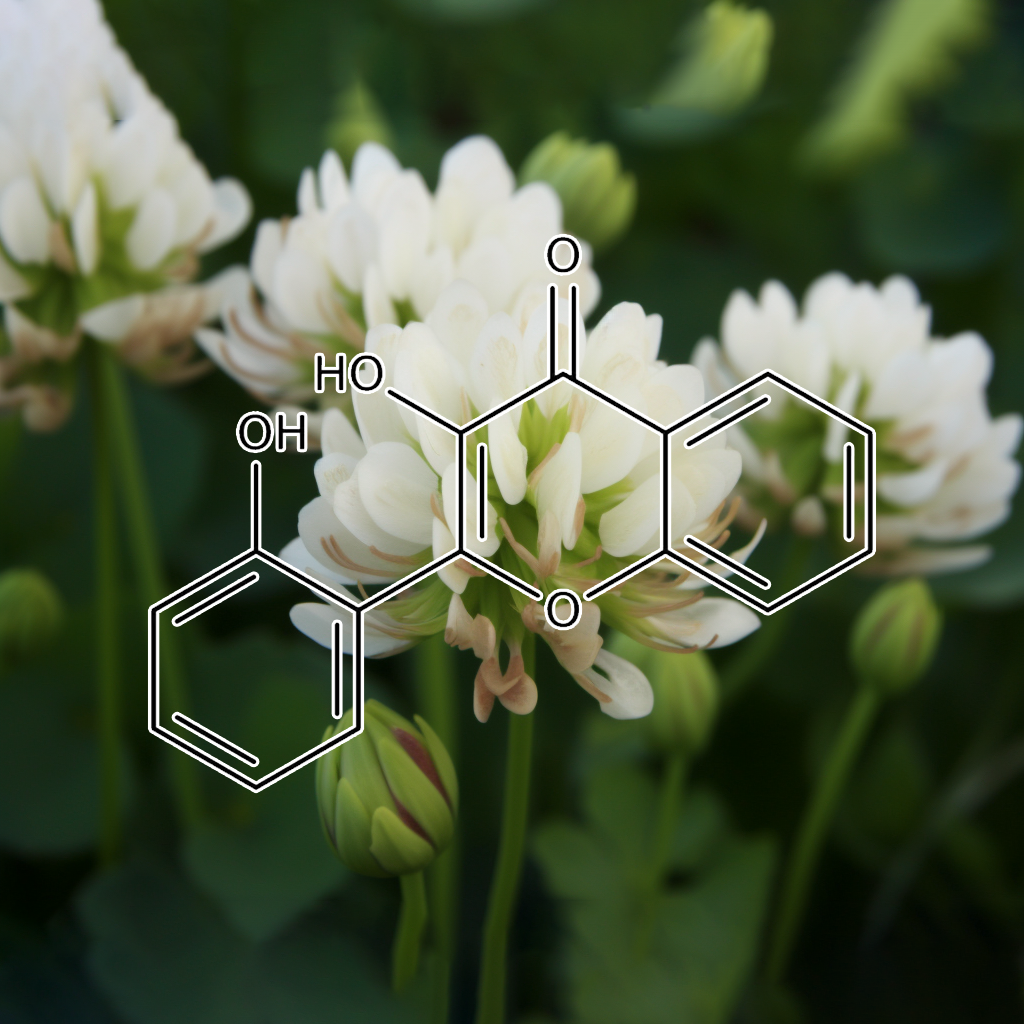
3,2᾿dihydroxyflavone (Trifolium repens L.)
Influenza virus infection causes thousands of deaths and millions of hospitalizations worldwide every year and the emergence of resistance to anti-influenza drugs has prompted scientists to seek new natural antiviral materials. In this study, we screened 13 different flavonoids from various flavonoid groups to identify the most potent antiviral flavonoid against human influenza A/PR/8/34 (H1N1). The 3-hydroxyl group flavonoids, including 3,2᾿dihydroxyflavone (3,2᾿DHF) and 3,4᾿dihydroxyflavone (3,4᾿DHF), showed potent anti-influenza activity. They inhibited viral neuraminidase activity and viral adsorption onto cells. To confirm the anti-influenza activity of these flavonoids, we used an in vivo mouse model.
In mice infected with human influenza, oral administration of 3,4᾿DHF significantly decreased virus titers and pathological changes in the lung and reduced body weight loss and death. Our data suggest that 3-hydroxyl group flavonoids, particularly 3,4᾿DHF, have potent antiviral activity against human influenza A/PR/8/34 (H1N1) in vitro and in vivo. Further clinical studies are needed to investigate the therapeutic and prophylactic potential of the 3-hydroxyl group flavonoids in treating influenza pandemics.
- Antiviral Activity Of 3, 4′-Dihydroxyflavone On Influenza A virus
- Antiviral effect of methylated flavonol isorhamnetin against influenza
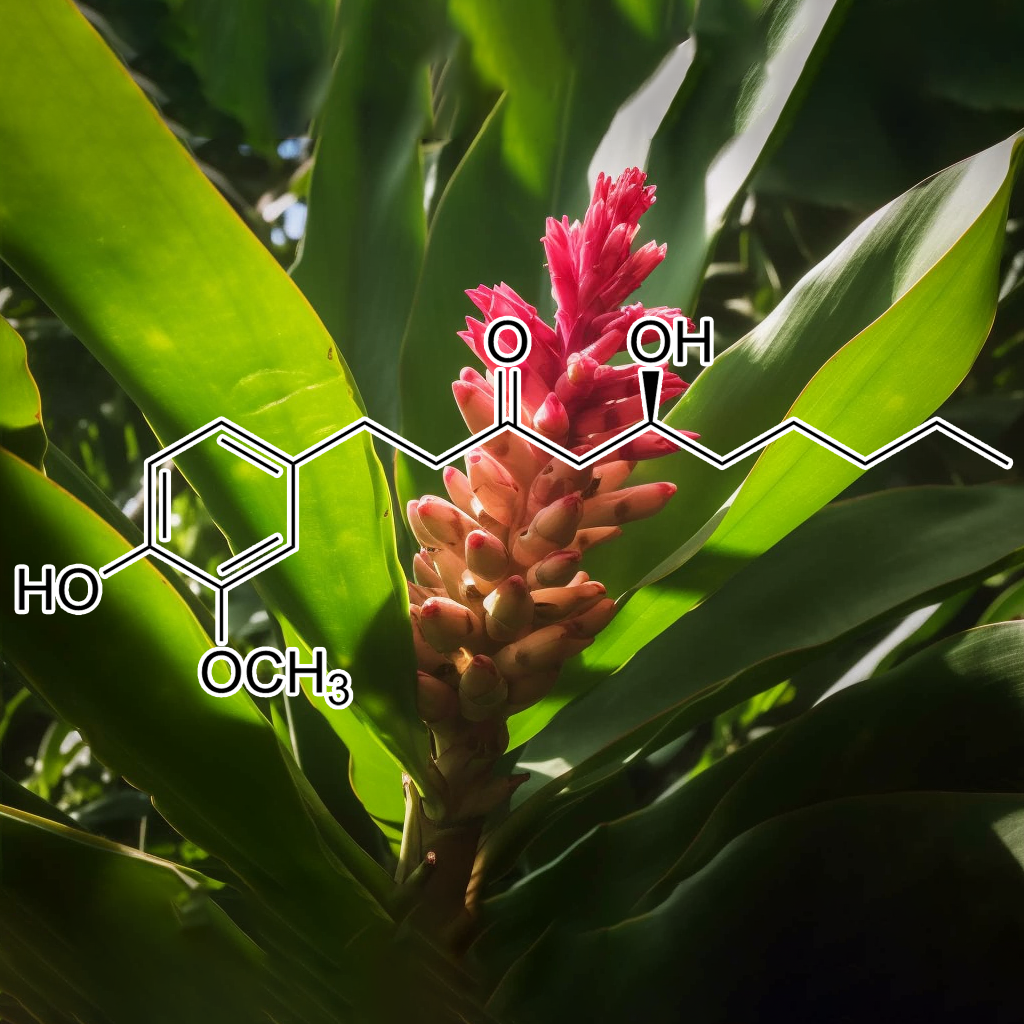
6-gingerol (ginger extract)
- A Brief Study On Zingiber Officinale-A Review
- A Mini Review On The Phytochemistry, Toxicology And Antiviral Activity Of Some Medically Interesting Zingiberaceae Species
- A Review On Medicinal Uses Of Zingiber Officinale (Ginger)
- Adsorption Of Polyphenols From Ginger Rhizomes On An Anion Exchange Resin Amberlite Ir-400–Study On Effect Of Ph And Temperature
- An Overview: Ginger, A Tremendous Herb
- Anticancer Effect Of Gingerol And Crude Ginger Extract On Ethylene Thiourea Induced Thyroid & Liver Cancer In Albino …
- Antimicrobial Activity Of Ginger (Zingiber Officinale) And Its Application In Food Products
- Antimicrobial Effect And Enzymatic Activity Of Extract Of Zingiber Officinale Roscoe And Stability In Topical Preparations
- Assessment Of Antimicrobial Potential Of 10% Ginger Extract Against Streptococcus Mutans, Candida Albicans, And Enterococcus Faecalis: An In Vitro Study
- Beneficial Therapeutic Effects Of Nigella Sativa And/Or Zingiber Officinale In Hcv Patients In Egypt
- Bioactive Compounds And Bioactivities Of Ginger (Zingiber Officinale Roscoe)
- Bioactive Principles And Nutraceuticals In Zingiberaceous Spices
- Biological Basis For The Use Of Botanicals In Osteoarthritis And Rheumatoid Arthritis: A Review
- Characterisation Of Ginger Extracts Obtained By Subcritical Water
- Chromatographic Analysis, Antioxidant, Anti-Inflammatory, And Xanthine Oxidase Inhibitory Activities Of Ginger Extracts And Its Reference Compounds
- Cyto-Biochemical And Antimicrobial Investigations On Essential Oil Of Zingiber Officinale Roscoe
- Effect Of 6‐Gingerol On Physicochemical Properties Of Grass Carp (Ctenopharyngodon Idellus) Surimi Fortified With Perilla Oil During Refrigerated Storage
- Effects Of Ginger Or Ginger And Thyme Extract In Laying Hens Feeding On Productive Results And Eggs Quality
- Ethanolic Extract Of Ginger On The Histology Of The Pancrease In Adult Wistar Rats
- Experimental Advances In Pharmacology Of Gingerol And Analogues
- Extract From Zingiber Officinale Rosc. In Oral Solid From Of A Drug
- Functional Coffee Substitute Prepared From Ginger By Subcritical Water
- Ginger And Its Bioactive Component Inhibit Enterotoxigenic Escherichia Coli Heat-Labile Enterotoxin-Induced Diarrhea In Mice
- Ginger And Its Constituents: Role In Prevention And Treatment Of Gastrointestinal Cancer
- Ginger As An Alternative Medicine To Urban Population–A Review
- Ginger Extract Inhibits The Replication Of T2 Bacteriophage By Inhibiting The Synthesis Of Nucleosides
- Ginger In Oral Care
- Ginger Rhizomes (Zingiber Officinale): A Spice With Multiple Health Beneficial Potentials
- Ginger: A Functional Herb
- Ginger: Panacea Or Consumer’S Hype?
- Harnessing The Therapeutic Properties Of Ginger (Zingiber Officinale Roscoe) For The Management Of Plant Diseases
- Herbal Antioxidant Agents And Its Pharmacological And Medicinal Properties
- Herbal Extracts As Antiviral Agents
- Inhibition Of Pro-Inflammatory Molecules By Ginger (Zingiber Officinale Roscoe) And Its Anti-Inflammatory Effects On Arthritis Patients
- Nutrient Profiling And Antioxidant Potential Of Three Different Varieties Of Zingiber Officinale.
- Pharmacological Activities Of Ginger (Zingiber Officinale): A Reviw
- Pharmacological Activity Of Zingiber Officinale
- Phytochemistry And Pharmacological Properties Of Ginger (Zingiber Officinale)
- Potential Health Benefits And Scientific Review Of Ginger
- Potential Pharmacological Benefits Of Ginger (Zingiber Officinale)–A
- Preparative Separation Of Gingerols From Zingiber Officinale By High-Speed Counter-Current Chromatography Using Stepwise Elution
- Protective And Therapeutic Potential Of Ginger (Zingiber Officinale) Extract And [6]‐Gingerol In Cancer: A Comprehensive Review
- Proven Health Benefits Of Ginger
- Review On Pharmacological Activities Of Mangifera Indica And Zingiber Officinale
- Some Medicinal Plant Extracts Exhibit Potency Against viral Hepatitis C
- Study On Microwave-Assisted Extraction Of Gingerol In Ginger
- Therapeutic Properties Of Zingiber Officinale Roscoe: A Review
- Toxic, Cytogenetic And Antitumor Evaluations Of [6]-Gingerol In Non-Clinical In Vitro Studies
- Traditional Health Boosters: Onion, Ginger And Garlic
- Zingiber Officinale (Ginger): A Future Outlook On Its Potential In Prevention And Treatment Of Diabetes And Prediabetic States
- Zingiber Officinale Roscoe Aqueous Extract Modulates Matrixmetalloproteinases And Tissue Inhibitors Of Metalloproteinases Expressions In Dengue virus -Infected Cells …
- Zingiberis Rhizoma: A Comprehensive Review On The Ginger Effect And Efficacy Profiles
- [6]-Gingerol Exhibits Potent Anti-Mycobacterial And Immunomodulatory Activity Against Tuberculosis
- 6-Gingerol Exerts Anti-Inflammatory Effects And Protective Properties On Lta-Induced Mastitis
- 6‐Gingerol Mediates Its Anti Tumor Activities In Human Oral And Cervical Cancer Cell Lines Through Apoptosis And Cell Cycle Arrest
- 6-Gingerol: A Therapeutically Potent Lead Candidate In Anti-Inflammatory Drug Discovery
- A Comparative Study Of The Anti-Breast Cancer And Immunomodulatory Effects Of [6]-,[8]-, And [10]-Gingerol
- A Ginger Component, 6-Gingerol Helps Prevention Of Sepsis By Inducing Anti-Bacterial Immune Responses
- A Phase Ii Randomized Double-Blind Placebo-Controlled Study Of 6-Gingerol As An Anti-Emetic In Solid Tumor Patients Receiving Moderately To Highly Emetogenic …
- Analgesic And Anti-Inflammatory Activities Of [6]-Gingerol
- Anti-Helicobacter Pylori Effect Of 6-Gingerol In Vitro
- Anti-Hyperglycaemic, Lipid Lowering And Anti-Oxidant Properties Of [6]-Gingerol In Db/Db Mice
- Anti‐Invasion Effects Of 6‐Shogaol And 6‐Gingerol, Two Active Components In Ginger, On Human Hepatocarcinoma Cells
- Anti-Oxidant Activity Of 6-Gingerol As A Hydroxyl Radical Scavenger By Hydrogen Atom Transfer, Radical Addition And Electron Transfer Mechanisms
- Assessment Of Anti-Cancerous Potential Of 6-Gingerol (Tongling White Ginger) And Its Synergy With Drugs On Human Cervical Adenocarcinoma Cells
- Bioinformatics And Experimental Studies Of Anti-Leukemic Activity From 6-Gingerol Demonstrate Its Role In P53 Mediated Apoptosis Pathway
- Comparative Antioxidant And Anti-Inflammatory Effects Of [6]-Gingerol,[8]-Gingerol,[10]-Gingerol And [6]-Shogaol
- Determination Of 6-Gingerol In Ginger Anti-Dandruff Shampoo By Hplc
- Determination Of 6-Gingerol In Taohua Anti-Diarrhea Granula By Hplc [J]
- Fabrication Of 6-Gingerol, Doxorubicin And Alginate Hydroxyapatite Into A Bio-Compatible Formulation: Enhanced Anti-Proliferative Effect On Breast And Liver …
- In Vitro Anti-Hydatic And Immunomodulatory Effects Of Ginger And [6] Gingerol
- In Vitro Anti-Hydatic And Immunomodulatory Effects Of Ginger And [6]-Gingerol
- Inhibition Of Adipogenesis In 3T3-L1 Cells By The Anti-Inflammatory Agents 6-Gingerol And Retinoic Acid
- Proteasome Inhibition Mediates P53 Reactivation And Anti-Cancer Activity Of 6-Gingerol In Cervical Cancer Cells
- Safety Evaluation Of Anti-Glioma Drug 6-Gingerol
- Structure–Activity Relationships Of 6-And 8-Gingerol Analogs As Anti-Biofilm Agents
- The Anti-Inflammatory Effect Of 6-Gingerol On Focal Ischemia-Reperfusion Injury In Rats
Acidicheterogluca (Tremella fuciformis)
- Coccidiosis Immunization: Effects Of Mushroom And Herb Polysaccharides On Immune Responses Of Chickens Infected With Eimeria Tenella
- Effects Of Mushroom And Herb Polysaccharides On Cellular And Humoral Immune Responses Of Eimeria Tenella-Infected Chickens
- Effects Of Mushroom And Herb Polysaccharides, As Alternatives For An Antibiotic, On The Cecal Microbial Ecosystem In Broiler Chickens
- In Vitro Fermentation Characteristics Of Two Mushroom Species, An Herb, And Their Polysaccharide Fractions, Using Chicken Cecal Contents As Inoculum
- Interference Of Cranberry Constituents In Cell–Cell Signaling System Of Vibrio Harveyi
- Ringless Honey Mushroom (Armillaria Tabescens): Identification And Info
- Like the maitake and shiitake mushrooms, Tremella can enhance the immune system. The mushroom has acidic polysaccharides that boost the strength of white blood cells that protect the body from bacteria, virus es, and the like. In two separate studies, Tremella ranked alongside the maitake mushroom in terms of effectiveness in immune system enhancement.
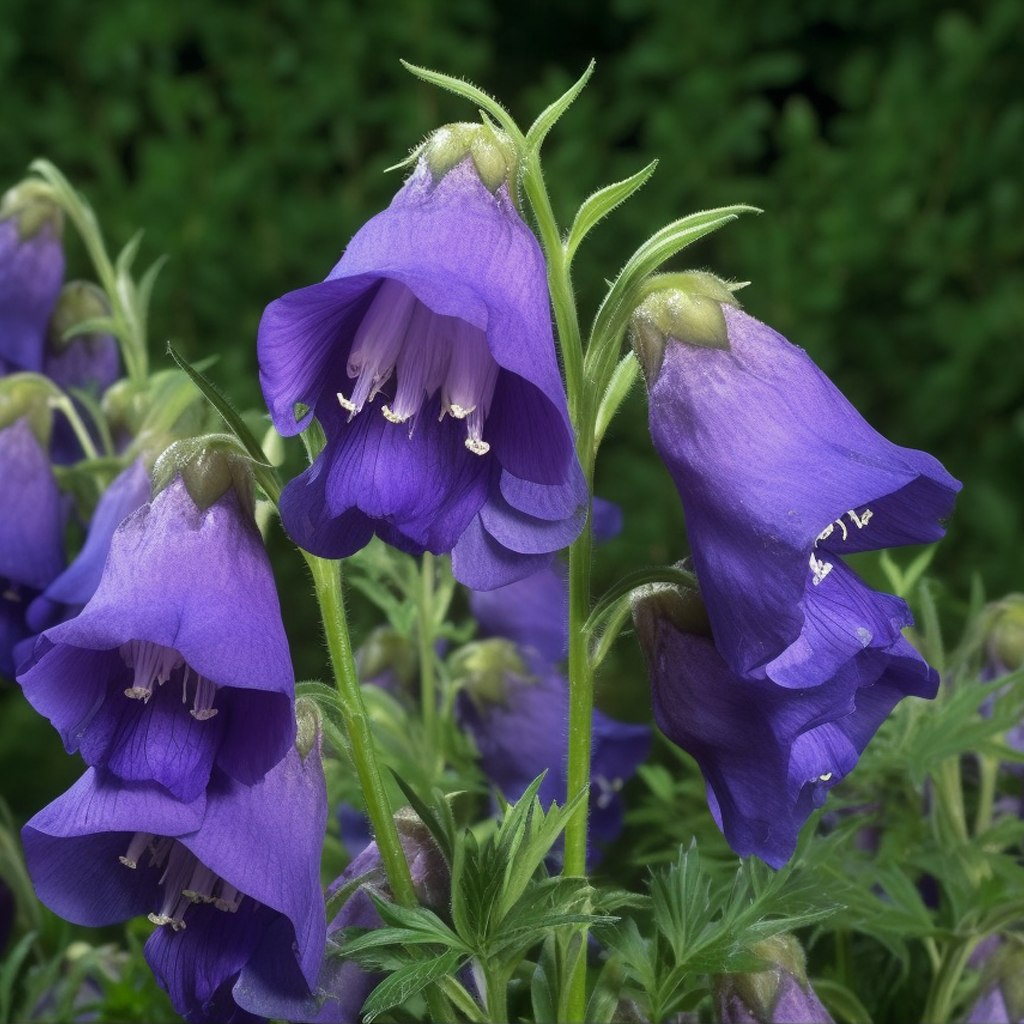
Aconitum carmichaelii
Four diterpenoid alkaloids, namely, (a) hypaconitine, (b) songorine, (c) mesaconitine and (d) aconitine, were isolated from the ethanol root extract of Aconitum carmichaelii Debx. The antiviral activities of these alkaloids against tobacco mosaic virus (TMV) and cucumber mosaic virus (CMV) were evaluated. Antiviral activity test in vivo showed that compounds a and c, which were C19-diterpenoid alkaloids, showed inactivation efficacy values of 82.4 and 85.6% against TMV at 500 μg/mL, respectively.
By contrast, compound c presented inactivation activity of 52.1% against CMV at 500 μg/mL, which was almost equal to that of the commercial Ningnanmycin (87.1% inactivation activity against TMV and 53.8% inactivation activity against CMV). C19-Diterpenoid alkaloids displayed moderate to high antiviral activity against TMV and CMV at 500 μg/mL, dosage plays an important role in antiviral activities. This paper is the first report on the evolution of aconite diterpenoid alkaloids for antiviral activity against CMV.
- Antiviral Activity Of Aconite Alkaloids From Aconitum Carmichaelii Debx
- Alkaloids isolated from the lateral root of Aconitum carmichaelii
- Application of metabolomics in toxicity evaluation of traditional Chinese medicines
- Effects of Magnolia officinalis compatibility with Polygala tenuifolia on mitochondrial metabolism in rats’ liver based on bio-thermodynamics
- Genus Tinospora: ethnopharmacology, phytochemistry, and pharmacology
- Herbs Used in Traditional Chinese Medicine in Treatment of Heart Diseases
- Indexed in Science Citation Index Expanded
- Market Survey On Traditionalmedicine Of The Third Month Fair In Dali Prefecture In Yunnan Province, Southwest China
- Preparative separation of C19-diterpenoid alkaloids from Aconitum carmichaelii Debx by pH‑zone-refining counter-current chromatography
- Protective effect of crude polysaccharide from Pao-Tian-Xiong derived from monkshood, against chronic renal failure in mice.
- Recent pharmaceutical evidence on the compatibility rationality of traditional Chinese medicine
- Safety Evaluation of Awei Capsule: Assessment of Acute and Subchronic Toxicity in rodent
- UPLC‐ESI/MS determination of 17 active constituents in two categorized formulas of traditional Chinese medicine, Sanhuang Xiexin Tang and Fuzi Xiexin Tang
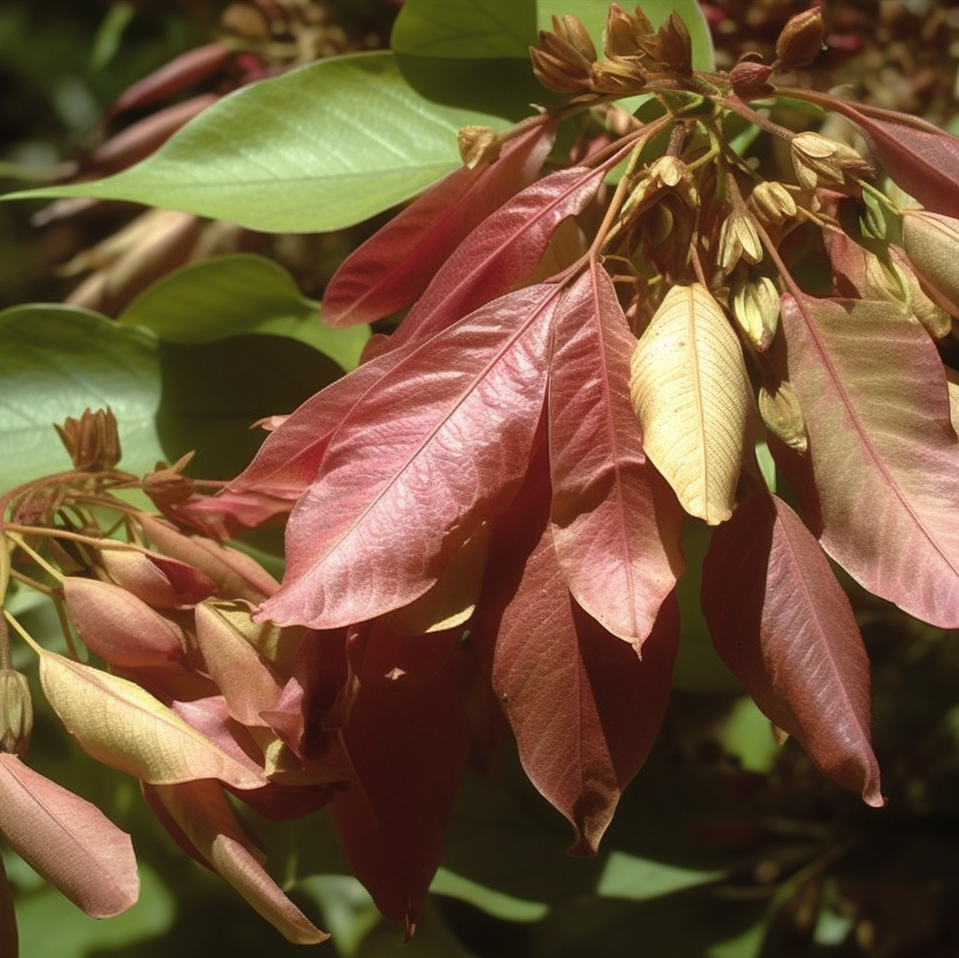
Ailanthus altissima
In order to search for the anti-HIV agents from natural products, eighty MeOH extracts of medicinal plants were applied to a syncytia formation inhibition assay which is based on the interaction between the HIV-1 envelope glycoprotein gp120/gp41 and the cellular membrane protein CD4 of T lymphocytes. Among them, Ailanthus altissima showed a potent virus-cell fusion inhibitory activity.
- Chemistry And Biological Activities Of Ailanthus Altissima Swingle: A Review
- Herbicidal Effect Of Ailanthus Altissima Leaves Water Extracts On Medicago Sativa Seeds Germination
- Pharmacological Evaluation Of Anti-Fertility Effect Of Stem Bark Of Ailanthus Altissima In Wistar Albino Rats
- Research On The In Vitro Bacteriostatic Effect Of Quassiawood Alkaloid On Escherichia Coli
- Screening Of Ailanthus Altissima Extract Paste Formula And Biological Determination
- Studies On The Control Efficiency Of Extracts From Leaves Of Ailanthus Altissima Swingle On Myzus Persicae Sulzer
- Verticillium Wilt Of Ailanthus Altissima
- Virus-cell fusion inhibitory compounds from Ailanthus altissima Swingle
- Antiviral effect of Ailanthus altissima and Brucea javanica on tobacco mosaic virus
- Anti-viral activity ofAilanthus altissima crude extract onRice stripe virus in rice suspension cells
- Quassinoids as inhibitors of Epstein-Barr virus early antigen activation
- Ailanthone induces G2/M cell cycle arrest and apoptosis of SGC‑7901 human gastric cancer cells
- Ailanthus altissima (the Tree of Heaven): In Vitro Culture and the Formation of Alkaloids and Quassinoids
- CAROTENOID PROFILE OF AILANTHUS ALTISSIMA STEM BARK, IN-VITRO ANTIOXIDANT AND ANTINEOPLASTIC ACTIVITIES
- Flavonoids from the leaves of Ailanthus altissima swingle and their antioxidant activity
- Medicinal plants: Prospective drug candidates against the dreaded Coronavirus
- Plants as sources of antimalarial and amoebicidal compounds
- Preclinical toxicology and toxicokinetic evaluation of ailanthone, a natural product against castration-resistant prostate cancer, in mice
- Protein patterns and chemical constituents of Ailanthus altissima (Miller) Swingle and Ailanthus excelsa Roxb.
- The Formation and Regulation of 1-Methoxycanthin-6-one Production in Ailanthus altissima Cell Suspension Cultures
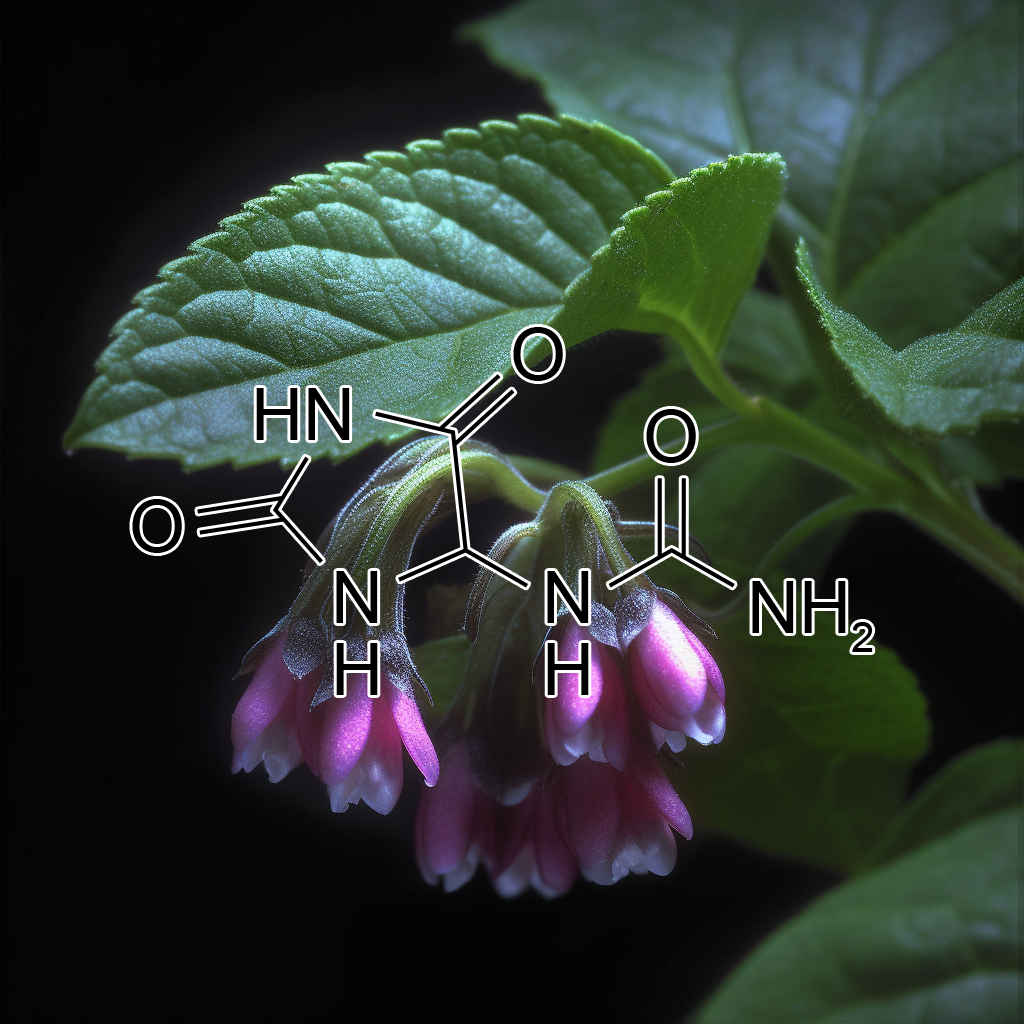
allantoin (Glyoxylic acid)
- A Review Of The Medicinal Properties And Applications Of Pycnanthus Angolensis (Welw) Warb
- Biguanide Related Compounds In Traditional Antidiabetic Functional Foods
- Biodiversity Conservation With Special Reference To Medicinal Climbers: Present Scenario, Challenges, Strategies, And Policies
- Estimation Influences Of Green Tea As Medical Herb For Treating Diabetes Mellitus
- Nitrogen Metabolism In Mosquitoes
- Synthesis And Reactivity Of 5-Methylenehydantoins
- The Utilization Of Urine Processing For The Advancement Of Life Support Technologies
- Compound for the control of herpes simplex virus using glycyrrhizic acid, lipoic acid, allantoin, and slippery elm
- Effect of Wen-Pi-Tang extract on lung damage by influenza virus infection
- The Two of Uninary Allantoin and Urea-N and Induction of Primary Moloney Sarcoma Virus-induced Tumors in Micice
- A quest of Anti-acne Potential of Herbal Medicines for extermination of MDR Staphylococcus aureus
- Acridine—a neglected antibacterial chromophore
- Alternative sources of fibrinolytic, anticoagulative, antimicrobial and anticancer molecules
- An in vitro antimicrobial comparison of miswak extract with commercially available non‐alcohol mouthrinses
- An investigation into multifaceted mechanisms of action of allantoin in wound healing
- An overview of antimicrobial properties of different classes of phytochemicals
- antibacterial Activity of Aristolochia bracteata Root Extracts
- antibacterial ACTIVITY OF SOME TERRESTRIAL GASTROPODS FROM EGYPT AGAINST STAPHYLOCOCCUS AUREUS AND ESCHERICHIA COLI
- antibacterial and antifungal activities of proteins extracted from seven different snails
- antibacterial and Antioxidant Activities of the Essential Oil from the Roots of Angelica tennuifolia
- antibacterial potential of secondary metabolites produced by Aspergillus sp., an endophyte of Mitrephora wangii
- antibacterial PROPERTIES OF CRUDE AQUEOUS Hylocereus polyrhizus PEEL EXTRACTS IN LIPSTICK FORMULATION AGAINST GRAM-POSITIVE …
- antibacterial properties of human amniotic membranes
- Anti-Inflammatory and antibacterial Activity of the Chitosan/Chlorhexidine Gel Commercial Preparation for Postexodontia Treatment: An In Vitro Study
- antimicrobial activities of extracts and flavonoid glycosides of corn silk (Zea mays L)
- antimicrobial activities ofStreptomyces pulcher, S. canescens andS. citreofluorescens against fungal and bacterial pathogens of tomatoin vitro
- antimicrobial activity and phytochemical properties of corn (Zea mays L.) silk
- antimicrobial activity of copaiba oil: A review and a call for further research
- antimicrobial activity of enterocins from Enterococcus faecalis SL-5 against Propionibacterium acnes, the causative agent in acne vulgaris, and its therapeutic effect
- antimicrobial activity of various parts of Polyalthia longifolia var. pendula: isolation of active principles from the leaves and the berries
- antimicrobial compounds from the excretions of surgical maggots, Lucilia sericata (Meigen) (Diptera, Calliphoridae)
- antimicrobial Effect of Cow Urine and Goat Urine against common Dental Caries Pathogens: An in vitro Comparative Study
- antimicrobial materials derived from the endophytic fungus Fusarium sp. of Eucommia ulmoides
- antimicrobial meroterpenoids from the endophytic fungus Penicillium sp. T2-8 associated with Gastrodia elata
- antimicrobial Metabolites from the Endophytic Fungus Aspergillus sp. of Eucommia ulmoides
- antimicrobial N-brominated hydantoin and uracil grafted polystyrene beads
- antimicrobial treatments of hemp fibers grafted with β-cyclodextrin derivatives
- Antimicrobial, antioxidant and cytotoxic activity of silver nanoparticles synthesized by leaf extract of Erythrina suberosa (Roxb.)
- Antimycobacterial, antimicrobial, antioxidant activities and in silico PASS investigations of root fractions and extract of Cordia dichotoma Forst
- Antioxidant and antibacterial Effects of Some Medicinal Plants of Iran
- Antioxidant and antimicrobial activities of Salvia multicaulis
- Antioxidant and antimicrobial activity of a new generation phyto-gel
- Antioxidative, antimicrobial and anticytotoxic activities of seungmagalgeuntang and fermented seungmagalgeuntang
- Biosynthesis and antibacterial activity of silver and gold nanoparticles from the leaf and callus extracts of Amaranthus dubius, Gunnera perpensa, Ceratotheca …
- Biosynthesis of mixed nanocrystalline Zn–Mg–Cu oxide nanocomposites and their antimicrobial behavior
- Calendula (Calendula officinalis)
- Camphor oil extraction from Cinnamomum camphora and its antibacterial activity [J]
- Catalyst-Free Three-Component Synthesis, Antibacterial, Antifungal, and Docking Studies of Spiroindoline Derivatives
- Characterization, antimicrobial, antioxidant, and anticoagulant activities of silver nanoparticles synthesized from Petiveria alliacea L. leaf extract
- Chemical Composition and antibacterial Effect of Plantago Major Extract on Periodontal Pathogens
- Chemical Constituents and antimicrobial Activity of Branches and Leaves of Cordia insignis (Boraginaceae)
- Comparison of some secondary metabolite content in the seventeen species of the Boraginaceae family
- Copper-releasing, borate-based glasses with antibacterial properties: synthesis and in vitro characterization
- Cytotoxicity, antiviral and antimicrobial activities of alkaloids, flavonoids, and phenolic acids
- Development and evaluation of antimicrobial herbal cosmetic preparation
- Dopa-based facile procedure to synthesize AgNP/cellulose nanofiber composite for antibacterial applications
- Ecofriendly Biosynthesis of Zinc Oxide and Magnesium Oxide Particles from Medicinal Plant Pisonia grandis R.Br. Leaf Extract and Their antimicrobial Activity
- Empirical formula: C4 H9 O7 Al2 Cl N4
- Evaluation for the Antimicrobial, Antioxidant and Antithrombosis Activity of Natural Spices for Fresh-cut yam.
- Evaluation of antibacterial Activity and Phenolic Contents of Four Nigerian Medicinal Plants
- Evaluation of antibacterial and antitumor activities of some Turkish endemic plants
- Evaluation of antimicrobial, antithrombin, and antioxidant activity of Aerial Bulbils of Dioscorea batatas Decne
- Evaluation of antimicrobial, antithrombin, and antioxidant activity of Dioscorea batatas Decne
- Evidence on antimicrobial Efficacy of Commercial Toothpaste
- Experiment-based quantitative modeling for the antibacterial activity of silver nanoparticles
- extracts obtained from stigmata of Zea mays L. against uropathogenic E. coli and Benzethonium chloride as frequent contaminant faking potential antibacterial …
- Fabrication of bioinspired chitosan/gelatin/allantoin biocomposite film for wound dressing application
- Formulation and evaluation of antibacterial creams and gels containing metal ions for topical application
- Genomic analysis unveils important aspects of population structure, virulence, and antimicrobial resistance in Klebsiella aerogenes
- Globularia alypum methanolic extract improves burn wound healing process and inflammation in rats and possesses antibacterial and antioxidant activities
- In vitro antibacterial activity of selected medicinal plants traditionally used in Iran against plant and human pathogenic bacteria
- In vivo antioxidative property, antimicrobial and wound healing activity of flower extracts of Pyrostegia venusta (Ker Gawl) Miers
- Isolation and Structural Elucidation of Allantoin a Bioactive Compound from Cleome viscosa L.: A Combined Experimental and Computational Investigation
- Lucifensin, the long-sought antimicrobial factor of medicinal maggots of the blowfly Lucilia sericata
- New antimicrobial alkaloids from the roots of Polyalthia longifolia var. pendula
- Nigritanine as a New Potential antimicrobial Alkaloid for the Treatment of Staphylococcus aureus-Induced Infections
- Novel streptopyrroles from Streptomyces rimosus with bacterial protein histidine kinase inhibitory and antimicrobial activities
- Preclinical study of the efficacy and safety of wound healing gel containing chitosan, taurine and allantoin
- Preparation and characteristics of antibacterial chitosan films modified with N-halamine for biomedical application
- Qualitative Determination of the Secondary Metabolites and Evaluation of the antimicrobial Activity of Leaf Extracts from Different Plant Families (Boraginaceae …
- Screening the UV-blocking and antimicrobial properties of herbal nanoparticles prepared from Aloe vera leaves for textile applications
- Secondary metabolites from the Actinomycete Acrocarpospora punica
- Selective antimicrobial activity of maggots against pathogenic bacteria
- Solid lipid nanoparticles containing copaiba oil and allantoin: development and role of nanoencapsulation on the antifungal activity
- Stability, antibacterial ability, and inhibition of “zinc burning” of amitrole as thermal stabilizer for transparent poly (vinyl chloride)
- STUDY OF antimicrobial AND HAIR REGROWTH ACTIVITY OF TRIDAX PROCUMBENS FOR SCALP DISORDER
- Study on Synthesis of Diazolidinyl Urea as Preservative [J]
- Supramolecular Hydrogels Based on Cellulose for Sustained Release of Therapeutic Substances with antimicrobial and Wound Healing Properties
- Survey of the antimicrobial Activity of Commercially Available Australian Tea Tree (Melaleuca alternifolia) Essential Oil Products In Vitro
- The effects of a topical gel containing chitosan, 0, 2% chlorhexidine, allantoin and despanthenol on the wound healing process subsequent to impacted lower …
- The identification and quantification of bioactive compounds from the aqueous extract of comfrey root by UHPLC-DAD-HESI-MS method and its microbial activity
- The identification and quantification of bioactive compounds from the aqueous extract of comfrey root by…
- The pharmacology of Anchusa italica and Anchusa strigosa–A review
- The physical properties, antioxidant and antimicrobial activity of chitosan–gelatin edible films incorporated with the extract from hop plant
- Urate Oxidase produced by Lucilia sericata medical maggots is localized in Malpighian tubes and facilitates allantoin production
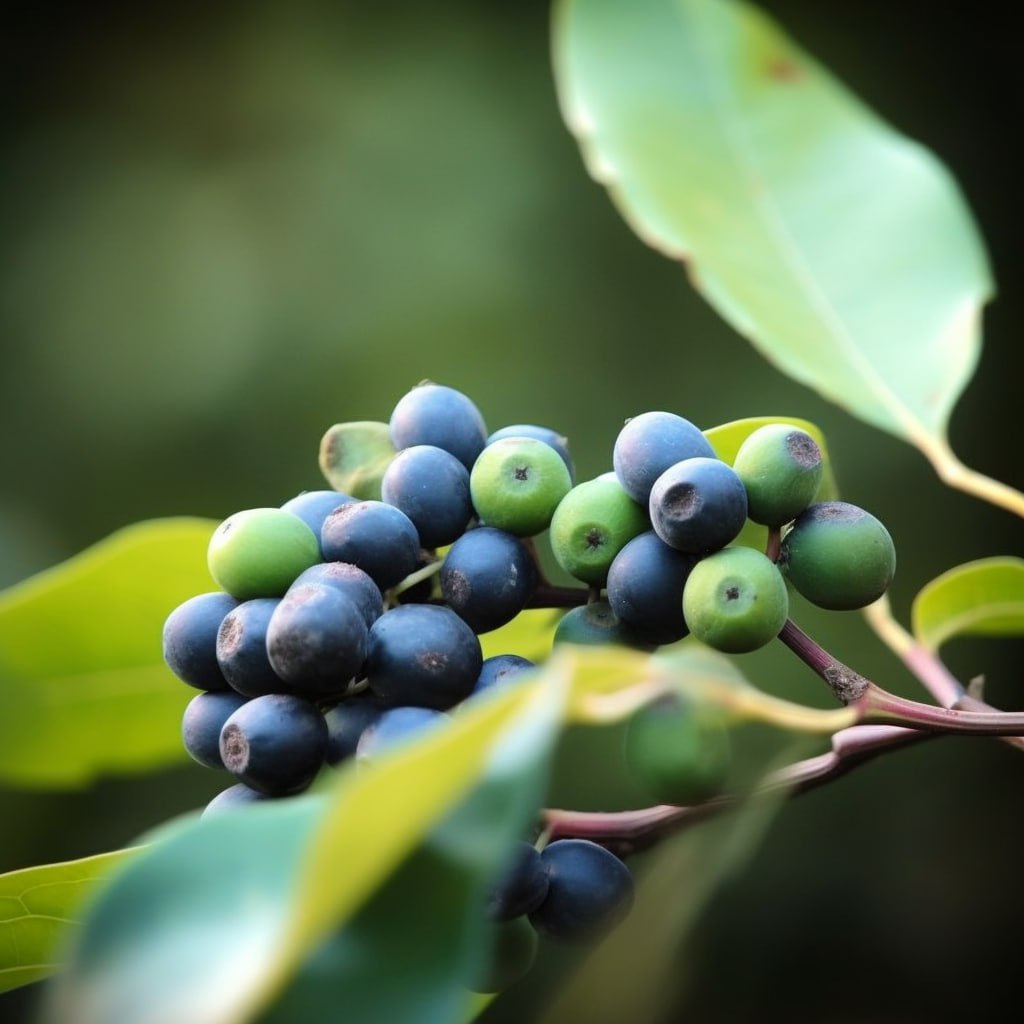
Alphitonia philippinensis
Three new flavonol glycosides, namely, isorhamnetin 3-O-(6″-O-(Z)-p-coumaroyl)-β-d-glucopyranoside, quercetin 3-O-α-l-rhamnopyranosyl(1-2)-α-l-arabinopyranosyl(1-2)-α-l-rhamnopyranoside, and quercetin 3-O-α-l-arabinopyranosyl(1-2)-α-l-rhamnopyranoside, were isolated from the stems of Alphitonia philippinensis collected from Hainan Island, China. Some of the isolated triterpenoids and flavonoid glycosides showed cytotoxicity against human PC-3 cells and hepatoma HA22T cells, and the inhibition of replication on HSV-1 (131). Viral diseases, especially of skin, can be treated with a virucide encapsulated in multilamellar phospholipid liposomes. Rosmarinic acid (70), incorporated in phospholipid mixture demonstrated effectiveness in humans afflicted with HSV (132). Flavonol glycosides (from quercetin and isorhamnetin) derived from the stems of Alphitonia philippinensis have been reported to inhibit the replication of HSV-1.
- Evaluation Of Antioxidant Activity And Phytochemical Screening Of Leaves, Barks, Stems And Fruits Of Alphitonia Philippinensis (Rhamnaceae) From Brunei
- Triterpenoids With A Five-Membered A-Ring: Distribution In Nature, Transformations, Synthesis, And Biological Activity
- Antiviral activity of phytochemicals: a current perspective
- Gastroprotective activity of the hydroethanolic extract and ethyl acetate fraction from Kalanchoe pinnata (Lam.) Pers.
- Medicinal uses of selected fruit trees and woody perennials
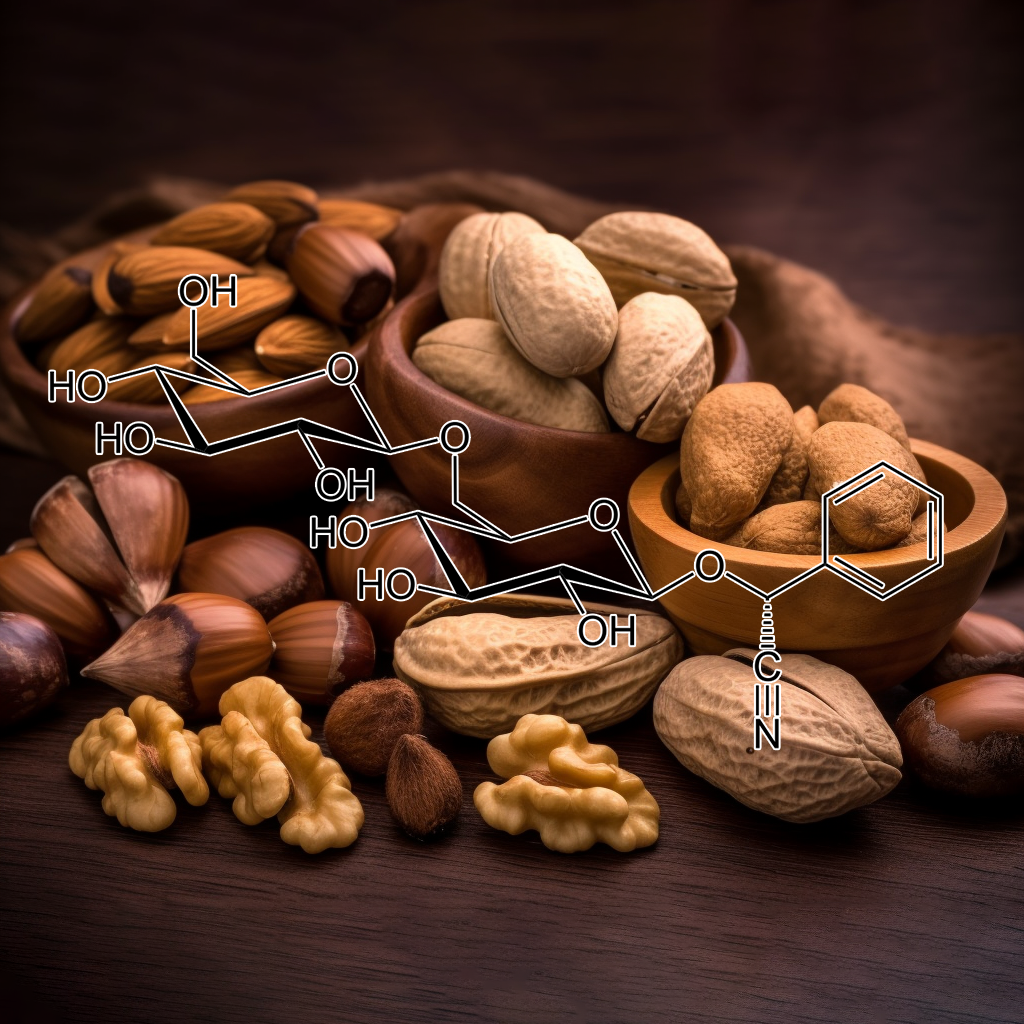
Amygdalin (Semen Armeniacae Amarum)
Contribution of traditional Chinese medicine to the treatment of COVID-19
Amygdalin could Inhibit IFN-γ, NF-κB and NLRP3 signaling pathways so as to reduce the inflammatory response (Paoletti et al., 2013; Zhang et al., 2017). These reports provided the scientific ground of integrating TCM therapy from the aspects of their compositions’ potential targeting proteins and signaling pathways in the treatment of COVID-19.
- A Network Analysis Of The Chinese Medicine Lianhua-Qingwen Formula To Identify Its Main Effective Components
- Antitussive, Anti-Pyretic And Toxicological Evaluation Of Ma-Xing-Gan-Shi-Tang In Rodents
- Anti-virus Effect Of Traditional Chinese Medicine Yi-Fu-Qing Granule On Acute Respiratory Tract Infections.
- Chinese Herbal Medicine For Coronavirus Disease 2019: A Systematic Review And Meta-Analysis
- Determination Of Amygdalin In Maxing Shigan Decoction By Hpce
- Determination The Active Compounds Of Herbal Preparation By Uhplc–Ms/Ms And Its Application On The Preclinical Pharmacokinetics Of Pure Ephedrine, Single Herbal …
- Effect Of Compatibility On Content Of Amygdalin In Sanao Decoction
- Effects Of Different Principles Of Traditional Chinese Medicine Treatment On Tlr7/Nf-Κb Signaling Pathway In Influenza virus Infected Mice
- Ma Xing Shi Gan Decoction Attenuates Pm2. 5 Induced Lung Injury Via Inhibiting Hmgb1/Tlr4/Nfκb Signal Pathway In Rat
- Yidu-Toxicity Blocking Lung Decoction Ameliorates Inflammation In Severe Pneumonia Of Sars-Cov-2 Patients With Yidu-Toxicity Blocking Lung Syndrome
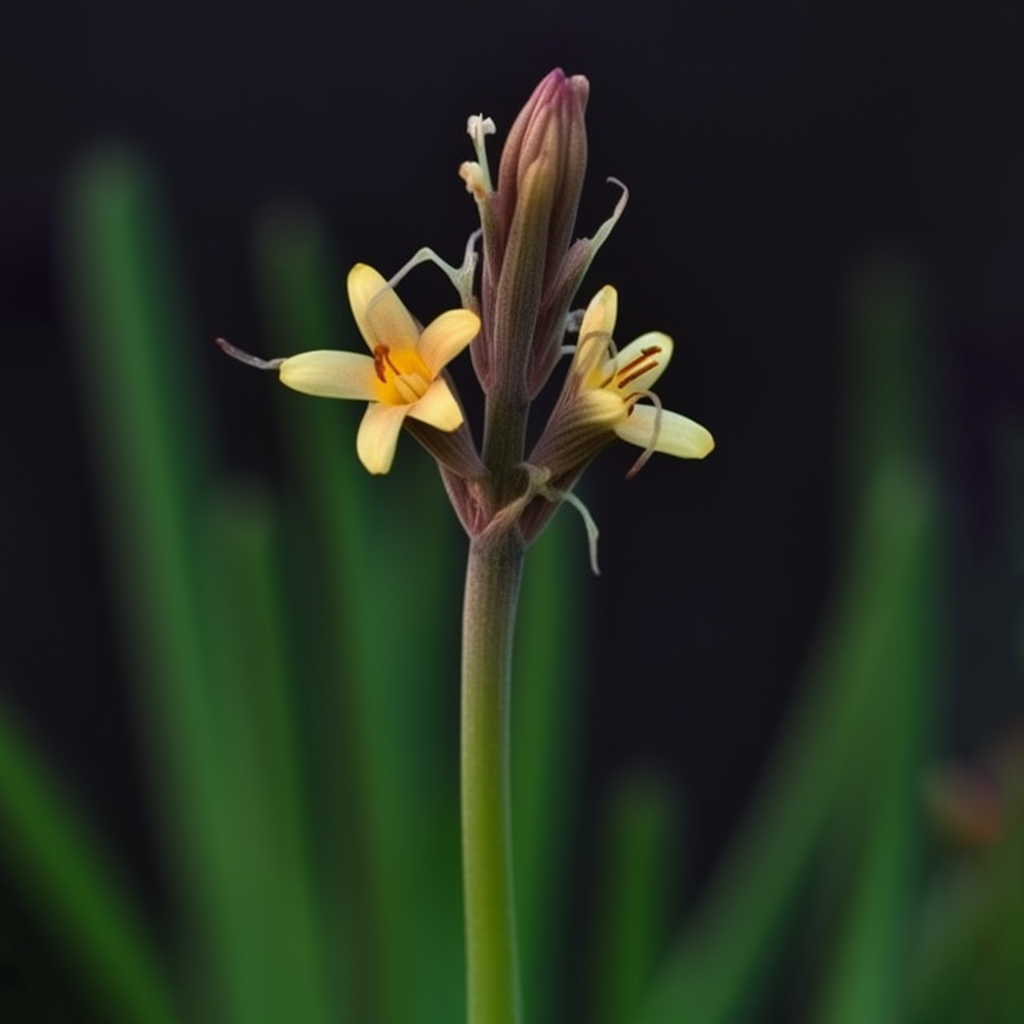
Anemarrhena asphodeloides
Two known steroidal saponins, timosaponin A-III (1) and anemarsaponin B (2) were isolated from the BuOH fraction of the rhizomes of Anemarrhena asphodeloides Bunge (Liliaceae) together with the xanthone derivatives, mangiferin (3) and neomangiferin (4). Structures of the isolates were identified using 1D and 2D NMR techniques and by comparison with the published values. Timosaponin A-III (1) exhibited potent inhibitory effects on the respiratory syncytial virus (RSV), with an IC50 value of 1.00 µM.
- (-)-Nyasol (Cis-Hinokiresinol), A Norneolignan From The Rhizomes Of Anemarrhena Asphodeloides, Is A Broad Spectrum Inhibitor Of Eicosanoid And Nitric Oxide …
- A Fructan From Anemarrhena Asphodeloides Bunge Showing Neuroprotective And Immunoregulatory Effects
- A Metabolomic Approach To Determine The Geographical Origins Of Anemarrhena Asphodeloides By Using Uplc–Qtof Ms
- Anemarrhenae Asphodeloides Rhizoma Extract Enriched In Mangiferin Protects Pc12 Cells Against A Neurotoxic Agent-3-Nitropropionic Acid
- Anti-Inflammatory Effect Of Anemarsaponin B Isolated From The Rhizomes Of Anemarrhena Asphodeloides In Lps-Induced Raw 264.7 Macrophages Is Mediated By …
- Anti-Inflammatory Effect Of Win-34B, A New Herbal Formula For Osteoarthritis Composed Of Lonicera Japonica Thunb And Anemarrhena Asphodeloides Bunge In …
- Anti-Respiratory Syncytial virus (Rsv) Activity Of Timosaponin A-Iii From The Rhizomes Of Anemarrhena Asphodeloides
- Identification Of Nyasol And Structurally Related Compounds As The Active Principles From Anemarrhena Asphodeloides Against Respiratory Syncytial virus (Rsv)
- The Genus Anemarrhena Bunge: A Review On Ethnopharmacology, Phytochemistry And Pharmacology
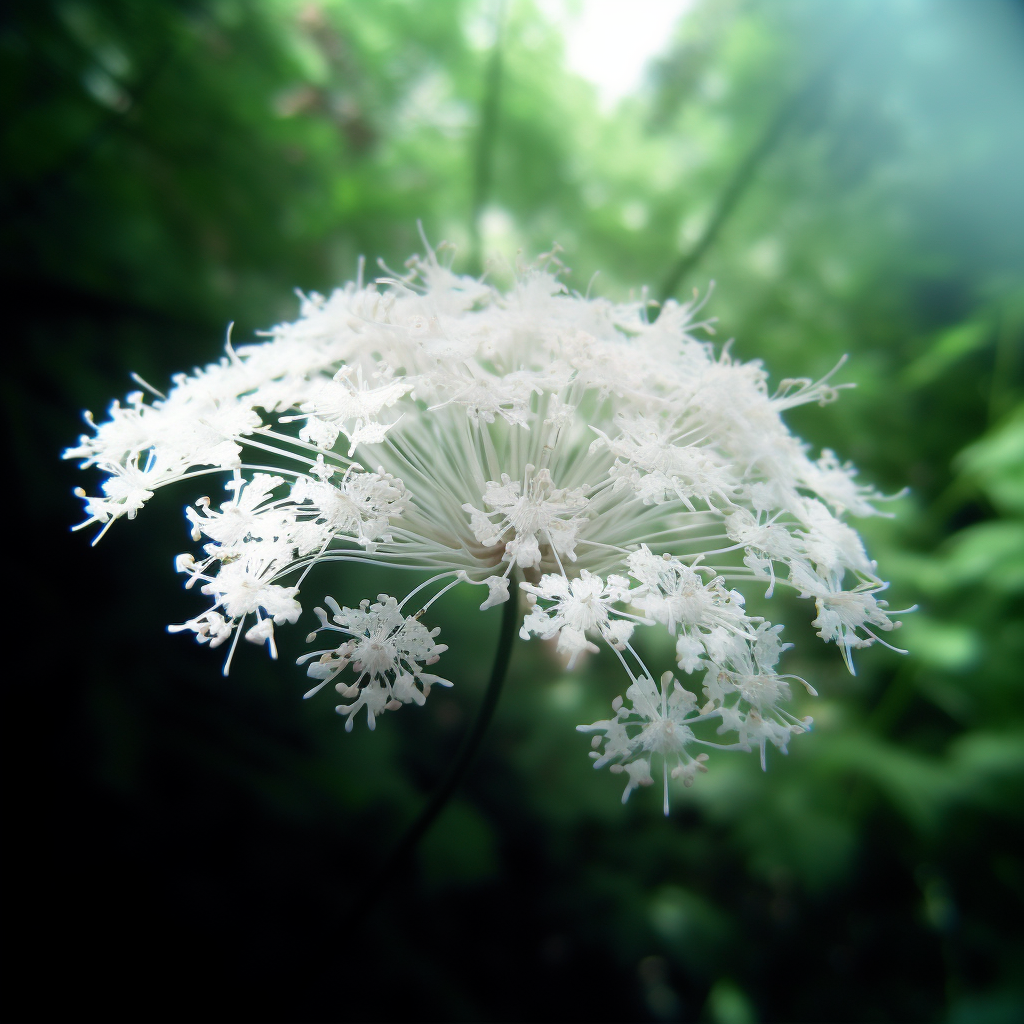
Angelica sinensis
Increased oxidative stress and disturbed glutathione redox system play an important role in the pathogenesis of human immunodeficiency virus (HIV) infection. Depletion in intracellular levels of reduced glutathione (GSH) contributes to an increment in tumor necrosis factor α (TNF-α)-stimulated-HIV-1-transcription, activation of HIV-1-replication, sensitivity to TNF-α-induced cell death, and impairment of CD4+ cell function and survival. Therefore, several studies have investigated the effect of GSH-enhancer agents such as N-acetyl cystein in the treatment of patients with HIV infection. With regard to the beneficial effects of Angelica sinensis, a Chinese medicinal herb, on GSH redox system and the pathogenic role of GSH depletion in HIV infection and the immunomodulator effects of active ingredients of this herb, we postulated that Angelica sinensis may be of value in the treatment of HIV-infected patients.
- Angelica Sinensis Polysaccharide Attenuates Concanavalin A-Induced Liver Injury In Mice
- Antiviral Activity Of Guiqi Polysaccharides Against Enterovirus 71 In Vitro
- Biotransformation Of Neuro-Inflammation Inhibitor Kellerin Using Angelica Sinensis (Oliv.) Diels Callus
- Dong Quai (Angelica Sinensis [Oliv.] Diels), Chinese Angelica
- Lowering Sugar Effect And Mechanism Of Angelica Polysaccharide To Wister Diabetic Rats Induced By Stz [J]
- Macrophage Activation By An Acidic Polysaccharide Isolated From Angelica Sinensis (Oliv.) Diels
- Pharmacological Action And Toxicity Of Angelica Sinensis
- Radix Angelica Sinensis Soup Production By Decocting Process Using High Pressure
- Therapeutic Effect Of Qigui Tangtong Ning Granules On Diabetic Peripheral Neuropathy In Rats
- Use Of A Magnetic Ultrafiltration Membrane For The Separation Of Angelica Sinensis Root Polysaccharides

Apigenin (celery extract)
Targeting SARS-CoV-2 Spike Protein of COVID-19 with Naturally Occurring Phytochemicals
Apigenin has shown potent antiviral activity against hepatitis B virus, adenoviruses, african swine fever virus and some RNA viruses in vitro.
- Anti‐Obesity Effects Of Enzyme‐Treated Celery Extract In Mice Fed With High‐Fat Diet
- Apigenin Inhibits African Swine Fever virus Infection In Vitro
- Botanical Therapeutics: Phytochemical Screening And Biological Assessment Of Chamomile, Parsley And Celery Extracts Against A375 Human Melanoma
- Inhibition Of Epstein-Barr virus Reactivation By The Flavonoid Apigenin
- Potency Of Herbal Plants Formulation As Anticholesterole Agent: In Vitro Studies
- Role Of Phenolic Compounds In Peptic Ulcer: An Overview
- The Expected Protective Role Of Celery Oil On Induced Toxic Effects Of Acrylamide On The Testis Of Adult Albino Rat: A Morphological, Morphometric And
- The Flavonoid Apigenin Inhibits Hepatitis C virus Replication By Decreasing Mature Microrna122 Levels
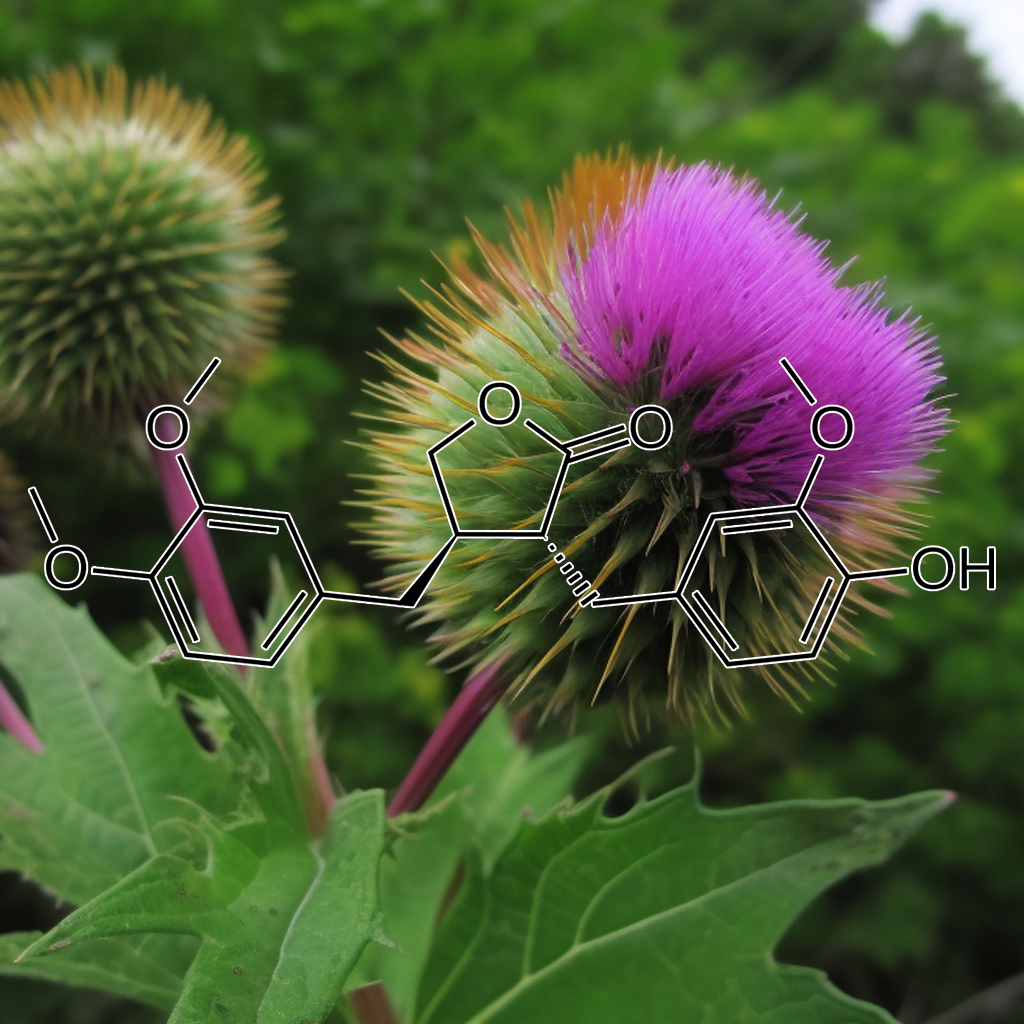
arctigeNin, arctin (Arctium Lappa)
Arctiin and its aglucone, arctigenin from the fruits of Arctium lappa L. showed potent in vitro antiviral activities against influenza A virus (A/NWS/33, H1N1) (IFV). Based on the data from time-of-addition experiments and on release tests of progeny viruses, arctigenin was assumed to interfere with early event(s) of viral replication after viral penetration into cells, and to suppress the release of progeny viruses from the host cells. Arctiin was orally effective against either IFV-inoculated normal or 5-fluorouracil (5-FU)-treated mice, being less effective as compared with oseltamivir.
Noticeably, arctiin produced a larger amount of virus-specific antibody than those of control and oseltamivir in sera collected from 5-FU-treated mice. Furthermore, oral treatment of 5-FU-treated mice with arctiin did not induce any resistant viruses, although the same treatment with oseltamivir induced resistant viruses at a 50% frequency. When the combination of arctiin and oseltamivir was administered to normal mice infected with IFV, the virus yields in both bronchoalveolar lavage fluids and lungs were significantly reduced relative to those in the mice treated with arctiin or oseltamivir alone. Thus, monotherapy of arctiin or combined therapy of arctiin with oseltamivir would be another treatment option for influenza.
- Therapeutic effect of arctiin and arctigenin in immunocompetent and immunocompromised mice infected with influenza A virus
- Evaluation on the antiviral activity of arctigenin against spring viraemia of carp virus
- Synthesis and in vitro activities evaluation of arctigenin derivatives against spring viraemia of carp virus
- Arctigenin as a lead structure for inhibitors of human immunodeficiency virus type-1 integrase
- Synthesis and antiviral activity of a new arctigenin derivative against IHNV (infectious hematopoietic necrosis virus) in vitro and in vivo
- Antioxidants: potential antiviral agents for Japanese encephalitis virus infection
- Antiviral activity of Arctigenin against Newcastle Disease virus in vitro
- Evaluation on antiviral activity of a novel arctigenin derivative against multiple rhabdoviruses in aquaculture
- Plant-derived leading compounds for chemotherapy of human immunodeficiency virus (HIV) infection
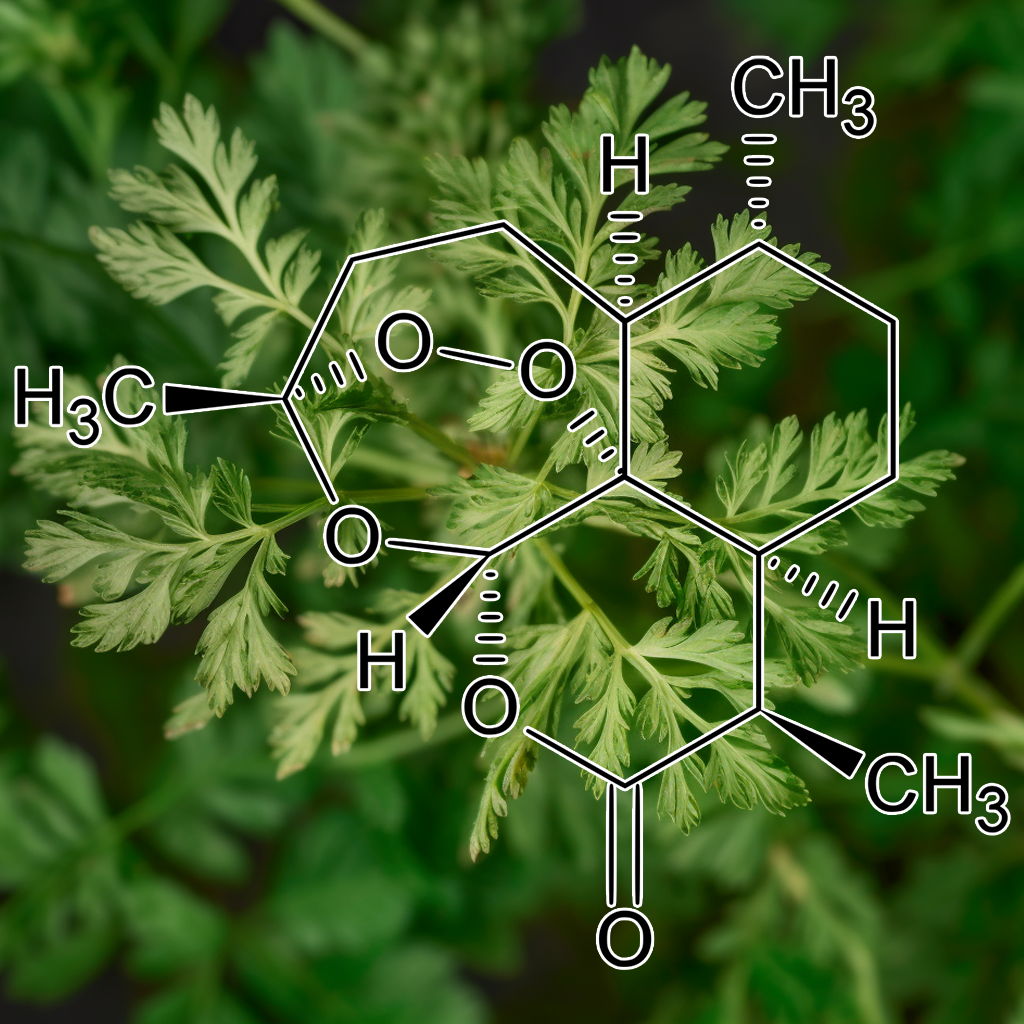
artemisinin (Artemisia annua)
Discuss about the application of Artemisia annua prescriptions in the treatment of COVID-19
The applications of traditional Chinese medicine (TCM) have been playing an important role in treating the epidemics of Coronavirus Disease 2019 (COVID-19), which is now prevalent all over the world. Exploring the mechanisms of TCM compound prescriptions might be difficult though, pharmacological studies on elucidating the effective components of TCM could serve as the experimental basis in the application of TCM compound prescription in treating COVID-19. As the critical active ingredients of Qinghao (Artemisia annua), artemisinin was initially used as antimalaria drug.
Artemisia annua prescriptions take significant effect against pneumonia. Sharing similarities in pharmacology with artemisinin, chloroquine has been confirmed effective in inhibiting Severe Acute Respiratory Syndrome coronavirus 2 (SARS-Cov-2) both in vitro and practically. In this context, we discussed the application of Artemisia annua prescriptions against COVID-19 along with the antiviral effect of chloroquine.
Conclusion
With similar pharmacological effects between chloroquine and artemisinin in treating infectious diseases, this paper discusses the modern scientific basis for the application of Artemisia annua prescriptions in COVID-19. Except for antimalarial, most of the other pharmacological studies on artemisinin and its derivatives are still on the bench or at animal level, with only a few in clinical trials. Artemisinin treatment on COVID-19 has not been reported yet. As a treasure of TCM, compound prescription has played an important role in plagues in history. The main cause of COVID-19 in Wuhan is damp-heat according to TCM theory. The prescription for clearing heat and eliminating dampness based on Artemisia annua is widely used in this epidemic. Based on the antiviral and anti-inflammatory effects of artemisinin and its derivatives, Artemisia annua prescriptions have great value to dig into and are promising to be used in more infectious diseases. But more in vitro experiments need to be carried out to provide more evidence, such as the influence of Artemisia or Artemisia annua prescriptions on inflammatory factors express
- Access To New Highly Potent Antileukemia, Antiviral And Antimalarial Agents Via Hybridization Of Natural Products (Homo) Egonol, Thymoquinone And Artemisinin
- Antiviral Effect Of Artemisinin From Artemisia Annua Against A Model Member Of The Flaviviridae Family, The Bovine viral Diarrhoea virus (Bvdv)
- Artemisia Annua (Sweet Annie), Other Artemisia Species, Artemisinin, Artemisinin Derivatives, And Malaria
- Artemisia Annua: Trials Are Needed For Covid‐19
- Artemisinin Analogues As Potent Inhibitors Of In Vitro Hepatitis C virus Replication
- Crystallization Of Artemisinin From Chromatography Fractions Of Artemisia Annua Extract
- Delayed Clearance Of Plasmodium Falciparum In Patients With Human Immunodeficiency virus Co-Infection Treated With Artemisinin
- Effect Of Artemisinin/Artesunate As Inhibitors Of Hepatitis B virus Production In An “In Vitro” Replicative System
- Frontispiece: Synthesis Of Artemisinin‐Derived Dimers, Trimers And Dendrimers: Investigation Of Their Antimalarial And Antiviral Activities Including Putative …
- Hemin Potentiates The Anti-Hepatitis C virus Activity Of The Antimalarial Drug Artemisinin
- Highly Potent Artemisinin-Derived Dimers And Trimers: Synthesis And Evaluation Of Their Antimalarial, Antileukemia And Antiviral Activities
- Stability And Antiviral Activity Against Human Cytomegalovirus Of Artemisinin Derivatives
- Synthesis And In Vitro Anti-Human Immunodeficiency virus Activity Of Artemisinin (Qinghaosu)-Related Trioxanes
- Synthesis Of Artemisinin‐Derived Dimers, Trimers And Dendrimers: Investigation Of Their Antimalarial And Antiviral Activities Including Putative Mechanisms Of Action
- Synthesis Of Thymoquinone–Artemisinin Hybrids: New Potent Antileukemia, Antiviral, And Antimalarial Agents
- The Antiviral Activities Of Artemisinin And Artesunate
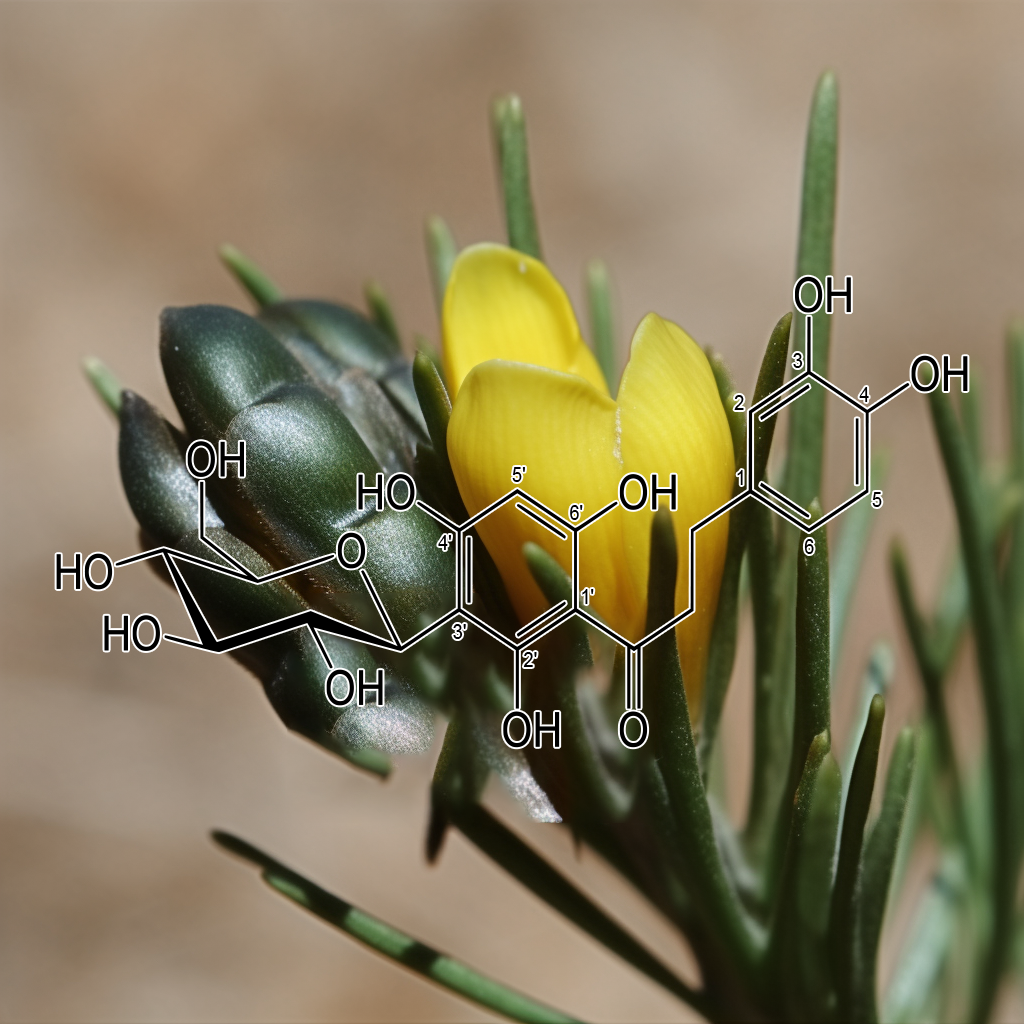
aspalathin
Aspalathus Linearis (Burm.f.) R. Dahlrgen (Rooibos)
- A Kinetic And Equilibrium Study Of Rooibos Tea Infusions.
- A Review Of The Bioactivity Of South African Herbal Teas: Rooibos (Aspalathus Linearis) And Honeybush (Cyclopia Intermedia)
- Antioxidant Properties Of Rooibos (Aspalathus Linearis)–In Vitro And In Vivo Evidence
- Antioxidants Of Rooibos Tea-A Possible Explanation For Its Health Promoting Properties?
- Antiviral Activity Of Aspalathus Linearis Against Human Influenza virus
- Aspalathin A Unique Phytochemical From The South African Rooibos Plant (Aspalathus Linearis): A Mini Review
- Commercially Important Medicinal Plants Of South Africa: A Review
- Concise Total Syntheses Of Aspalathin And Nothofagin
- Development Of A Sensory Lexicon And Sensory Wheel For Rooibos (Aspalathus Linearis) And The Role Of Its Phenolic Composition On Taste And Mouthfeel.
- Effect Of Rooibos (Aspalathus Linearis) On Growth Control Of Clostridium Perfringens And Lipid Oxidation Of Ready‐To‐Eat Jokbal (Pig’S Trotters)
- Hepatotoxicity Due To Red Bush Tea Consumption: A Case Report
- Identification Of Phenolic Compounds In Aqueous And Ethanolic Rooibos Extracts (Aspalathus Linearis) By Hplc-Esi-Ms (Tof/It)
- Rooibos Tea As A Likely Health Food Supplement
- Rooibos Tea Extracts Inhibit Osteoclast Formation And Activity Through The Attenuation Of Nf-Κb Activity In Raw264. 7 Murine Macrophages
- Rooibos Tea: New Research Documents Antioxidant And Anticancer Properties
- Rooibos Tea: Research Into Antioxidant And Antimutagenic Properties
- Rooibos-The New” White Tea” For Hair And Skin Care
- Selective Bronchodilatory Effect Of Rooibos Tea (Aspalathus Linearis) And Its Flavonoid, Chrysoeriol
- Tea And Bone Health: Findings From Human Studies, Potential Mechanisms, And Identification Of Knowledge Gaps
- The Transport Of The Rooibos Tea Flavonoid Aspalathin Across The Skin And The Intestinal Epithelium
- Traditional Medicines In Africa: An Appraisal Of Ten Potent African Medicinal Plants
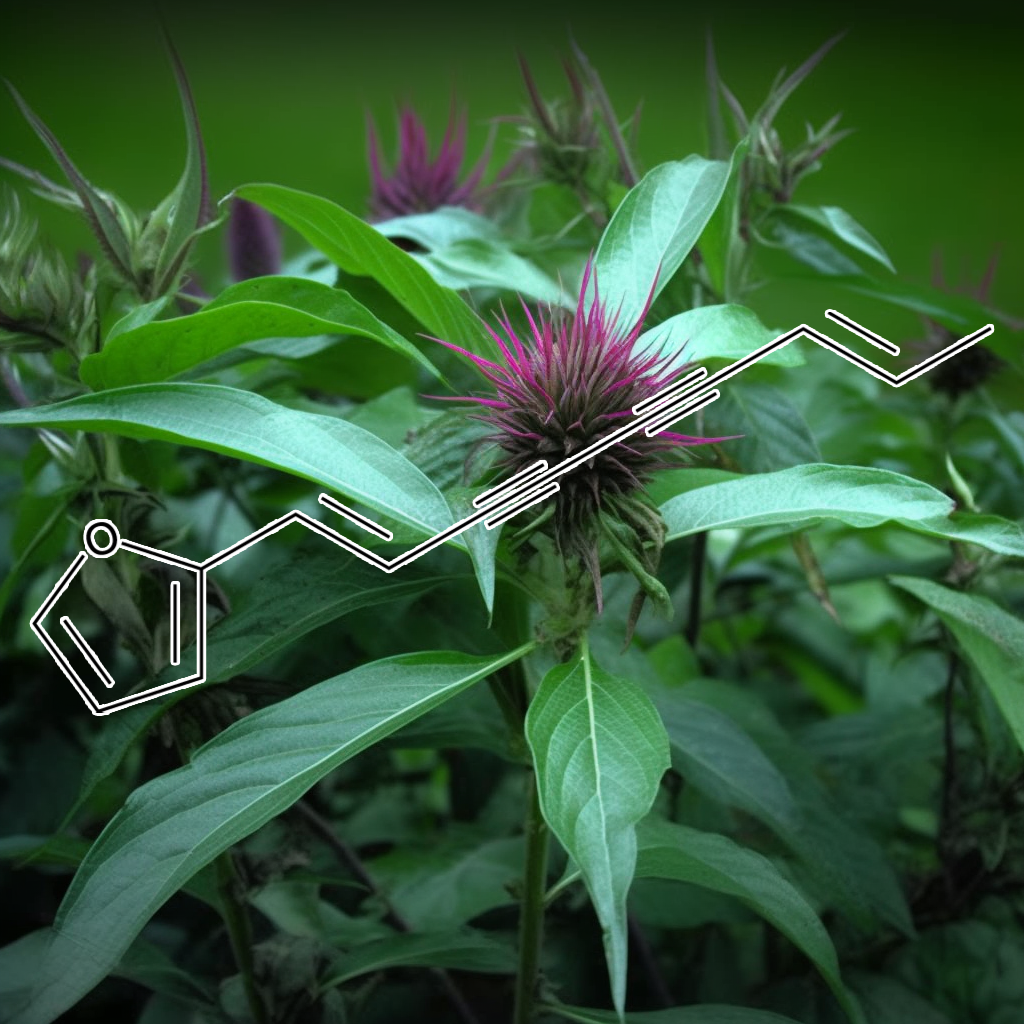
atractylodin (Areactylodis Lanceae)
- Alisol a 24-acetate isolated from the Alismatis Rhizoma improves hepatic lipid deposition in hyperlipidemic mice by ABCA1/ABCG1 pathway
- Antiviral herbs-present and future
- Berberine and its derivatives: a patent review (2009–2012)
- Clinical studies of immunomodulatory activities of Yunzhi-Danshen in breast cancer and nasopharyngeal carcinoma patients, and Lingzhi-San Miao San in …
- Determination of Hinesol in Rhizoma Atraxtylodis from Different Areas [J]
- Erzhu Qinggan Jiedu Recipe improves the clinical outcome of hepatocellular Cancer after surgical resection: a case–control retrospective study
- Immunostimulants in traditional Chinese medicine
- Pharmacological effects of medicinal components of Atractylodes lancea (Thunb.) DC.
- Radix Bupleuri: a review of traditional uses, botany, phytochemistry, pharmacology, and toxicology
- Research Development on Prepared Method and Theoretical Research of Rhizome Atractylodis [J]
- The Transcript Profile of a Traditional Chinese Medicine, Atractylodes lancea, Revealing Its Sesquiterpenoid Biosynthesis of the Major Active Components
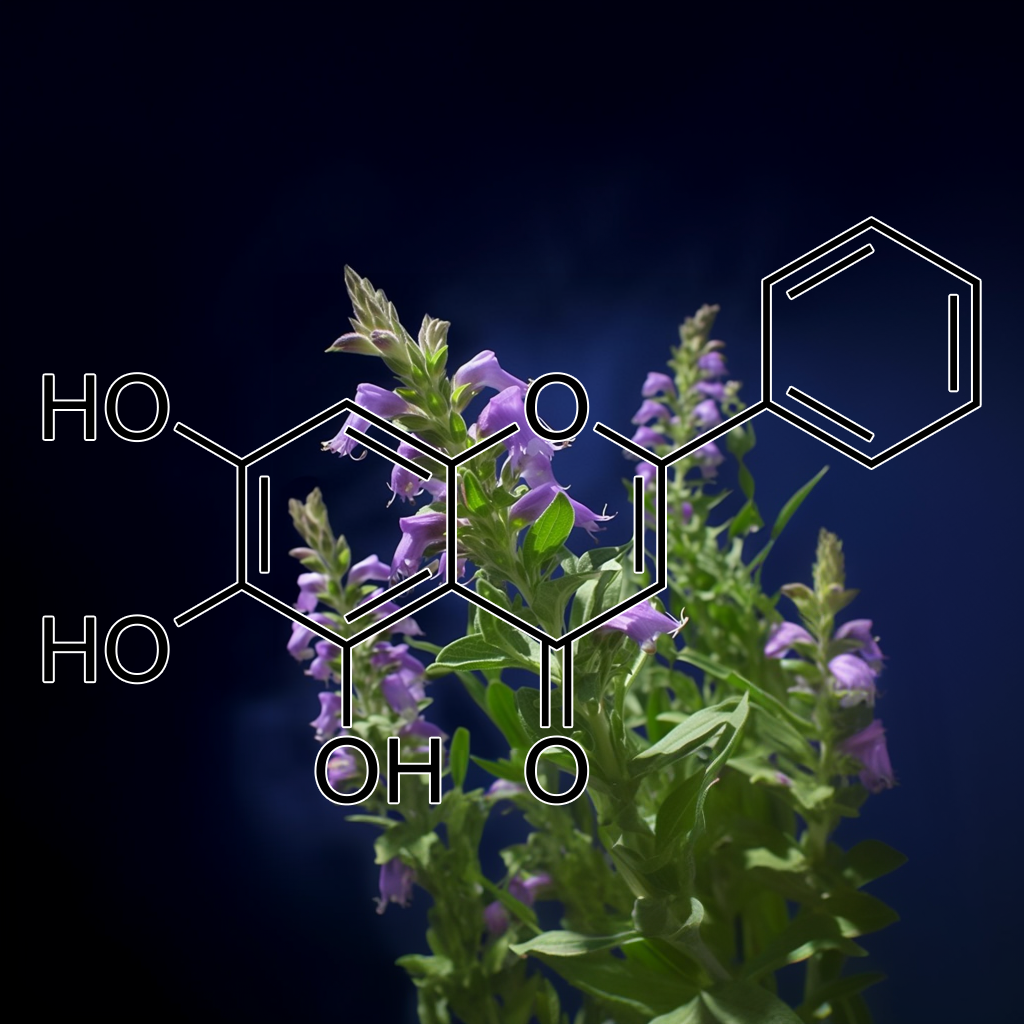
Baicalein (Scutellaria baicalensis)
- Antigastritic And Anti Helicobacter Pylori Effects Of Baicalein From Scutellaria Baicalensis
- Antioxidative And Anti-Inflammatory Activities Of Polyhydroxyflavonoids Of Scutellaria Baicalensis Georgi
- Antiviral Activity Of Baicalein And Quercetin Against The Japanese Encephalitis virus
- Antiviral Activity Of Silymarin In Comparison With Baicalein Against Ev-A71
- Antiviral Effects Of Baicalein On Human Cytomegalovirus In Vitro
- Arsenic Accumulation In Scutellaria Baicalensis Georgi And Its Effects On Plant Growth And Pharmaceutical Components
- Baicalein Attenuates Inflammatory Responses By Suppressing Tlr4 Mediated Nf-Κb And Mapk Signaling Pathways In Lps-Induced Mastitis In Mice
- Baicalein Induces Apoptosis In Scc-4 Human Tongue Cancer Cells Via A Ca2+-Dependent Mitochondrial Pathway
- Baicalein Induces Apoptosis Through Ros-Mediated Mitochondrial Dysfunction Pathway In Hl-60 Cells.
- Baicalein Inhibits Il-1Β-And Tnf-Α-Induced Inflammatory Cytokine Production From Human Mast Cells Via Regulation Of The Nf-Κb Pathway
- Baicalein Protects Against Cardiac Hypertrophy Through Blocking Mek‐Erk1/2 Signaling
- Baicalein, An Active Component Of Scutellaria Baicalensis Georgi, Prevents Lysophosphatidylcholine-Induced Cardiac Injury By Reducing Reactive Oxygen …
- Baicalein, Ethyl Acetate, And Chloroform Extracts Of Scutellaria Baicalensis Inhibit The Neuraminidase Activity Of Pandemic 2009 H1N1 And Seasonal Influenza …
- Baicalin From Scutellaria Baicalensis Blocks Respiratory Syncytial virus (Rsv) Infection And Reduces Inflammatory Cell Infiltration And Lung Injury In Mice
- Baicalin, A Metabolite Of Baicalein With Antiviral Activity Against Dengue virus
- Biological Properties Of Baicalein In Cardiovascular System
- Combination Effects Of Baicalein With Antibiotics Against Oral Pathogens
- Deep Sequencing Of The Scutellaria Baicalensis Georgi Transcriptome Reveals Flavonoid Biosynthetic Profiling And Organ-Specific Gene Expression
- Different Effects Of Baicalein, Baicalin And Wogonin On Mitochondrial Function, Glutathione Content And Cell Cycle Progression In Human Hepatoma Cell Lines
- Differential Antiviral And Anti-Inflammatory Mechanisms Of The Flavonoids Biochanin A And Baicalein In H5N1 Influenza A virus -Infected Cells
- Endothelium-Dependent Contraction And Direct Relaxation Induced By Baicalein In Rat Mesenteric Artery
- Free Radical Scavenging And Antioxidant Activities Of Flavonoids Extracted From The Radix Of Scutellaria Baicalensis Georgi
- Isolation And Purification Of Baicalein, Wogonin And Oroxylin A From The Medicinal Plant Scutellaria Baicalensis By High-Speed Counter-Current Chromatography
- Neuroprotective Effect Of Baicalein Against Mptp Neurotoxicity: Behavioral, Biochemical And Immunohistochemical Profile
- New Therapeutic Aspects Of Flavones: The Anticancer Properties Of Scutellaria And Its Main Active Constituents Wogonin, Baicalein And Baicalin
- Novel Antiviral Activity Of Baicalein Against Dengue virus
- Pharmacokinetics Of Baicalein, Baicalin And Wogonin After Oral Administration Of A Standardized Extract Ofscutellaria Baicalensis, Pf-2405 In Rats
- Protective Effects Of Flavonoids In The Roots Of Scutellaria Baicalensis Georgi Against Hydrogen Peroxide-Induced Oxidative Stress In Hs-Sy5Y Cells
- Scutellaria Baicalensis And A Constituent Flavonoid, Baicalein, Attenuate Ritonavir‐Induced Gastrointestinal Side‐Effects
- Scutellaria Baicalensis Extract And Baicalein Inhibit Replication Of Sars-Cov-2 And Its 3C-Like Protease In Vitro
- Scutellaria Baicalensis, The Golden Herb From The Garden Of Chinese Medicinal Plants
- Separation Methods Used For Scutellaria Baicalensis Active Components
- Study Of The Chemical Composition And Antimicrobial Activities Of Ethanolic Extracts From Roots Of Scutellaria Baicalensis Georgi
- Synthesis And Biological Evaluation Of Baicalein Derivatives As Potent Antitumor Agents
- The Anti-Inflammatory Activity Of Scutellaria Rivularis Extracts And Its Active Components, Baicalin, Baicalein And Wogonin
- The Baikal Scullcap (Scutellaria Baicalensis Georgi)–A Potential Source Of New Drugs
- The Fascinating Effects Of Baicalein On Cancer: A Review
- The Stimulatory Activities Of Baicalein And Baicalin Compounds Derived From Scutellaria Baicalensis On Insulin Secretion In Vitro
- Therapeutic Potentials Of Baicalin And Its Aglycone, Baicalein Against Inflammatory Disorders
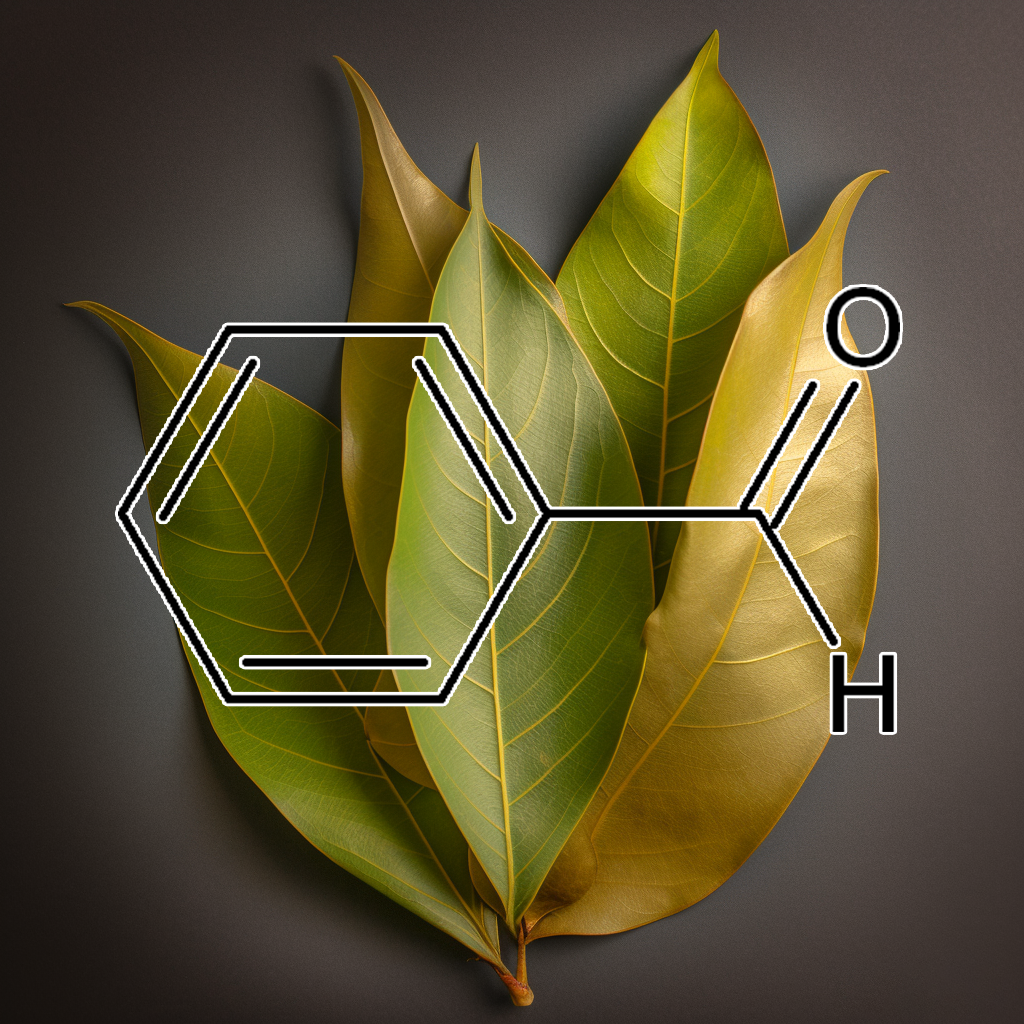
benzaldehyde (Laurus nobilis)
- Cytotoxicity And Antiviral Activity Of Palladium (Ii) And Platinum (Ii) Complexes With 2-(Diphenylphosphino) Benzaldehyde 1-Adamantoylhydrazone
- Hydrogen Bonds And Antiviral Activity Of Benzaldehyde Derivatives
- Substituted Benzaldehyde Thiosemicarbazone With Antiviral Activity Against Poliovirus
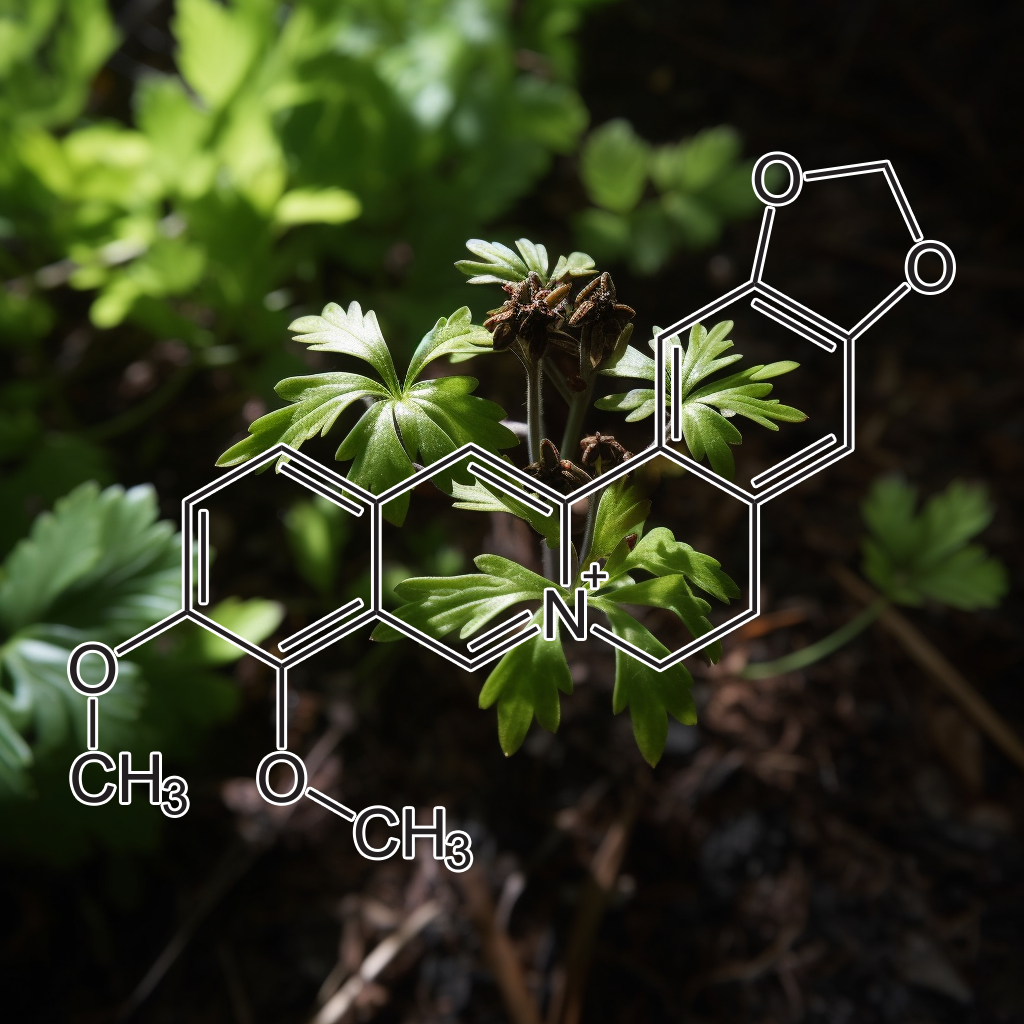
Berberine (Coptis chinensis)
- Antiviral Activity Of Berberine
- Antiviral Activity Of Berberine And Related Compounds Against Human Cytomegalovirus
- Assessment Of The Embryotoxicity Of Four Chinese Herbal Extracts Using The Embryonic Stem Cell Test
- Coptis Chinensis
- Electrospinning Fabrication Of Poly (Vinyl Alcohol)/Coptis Chinensis Extract Nanofibers For Antimicrobial Exploits
- In Vitro Antiviral Activity Of A Berberine Derivant Hb-13 Against Herpes Simplex virus
- In Vivo And In Vitro Antiviral Effects Of Berberine On Influenza virus
- Research Of Antiviral Mechanisms Of Action Of Berberine Derivate Hb-13 Against Herpes Simplex virus Type 2 [J]
- Synthesis And Biological Evaluation Of Berberine Derivatives As A New Class Of Broad-Spectrum Antiviral Agents Against Coxsackievirus B
- Synthesis And Evolution Of Berberine Derivatives As A New Class Of Antiviral Agents Against Enterovirus 71 Through The Mek/Erk Pathway And Autophagy
- The Antiviral Alkaloid Berberine Ameliorates Neuropathic Pain In Rats With Peripheral Nerve Injury
- The Antiviral Alkaloid Berberine Reduces Chikungunya virus -Induced Mitogen-Activated Protein Kinase Signaling
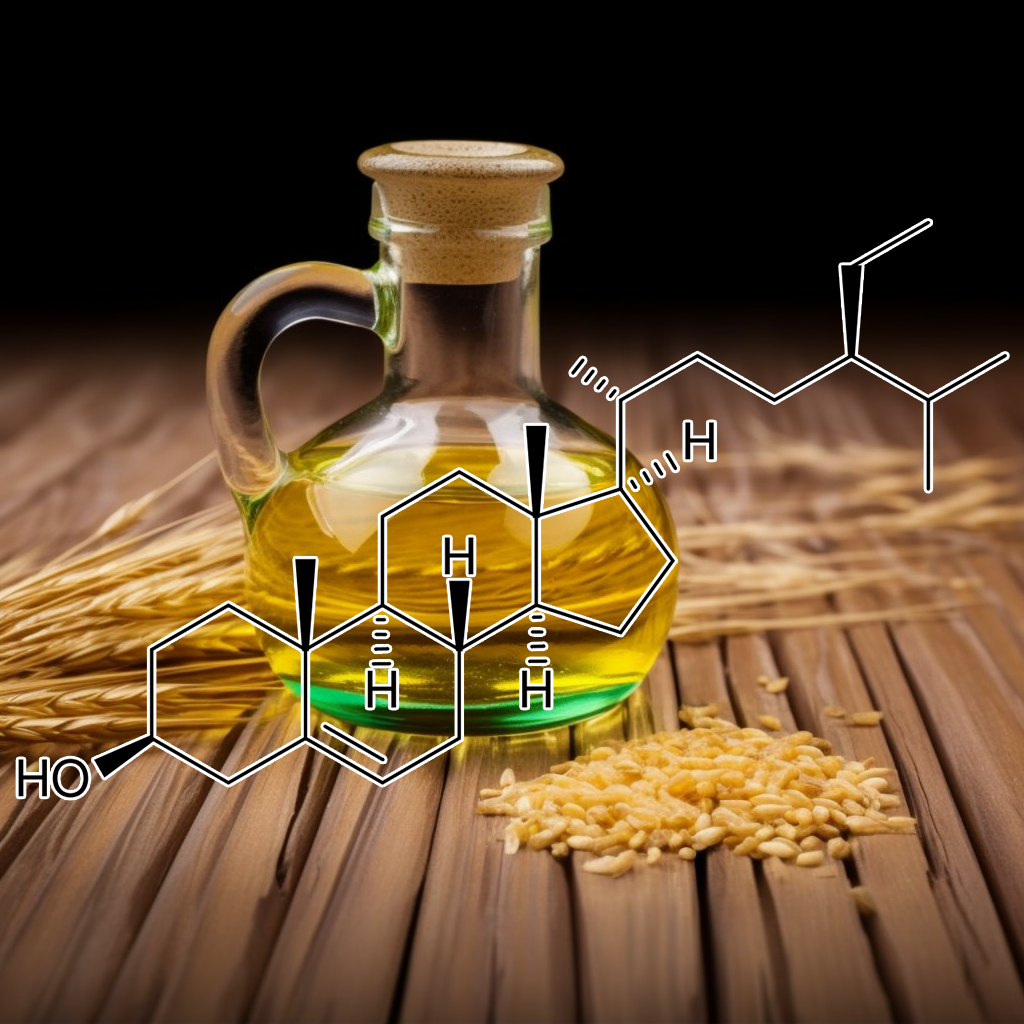
Beta-sitosterol
- 4 Other Important
- Are Logicol And Proactive Are Rip-Off?
- Food Industry Waste: Mine Of Nutraceuticals
- Hibiscus Sabdariffa
- Lesson No. 26 Heena (Mehndi)
- Phytochemicals As Bioactive Agents
- Plant Estrogens
- Safety Evaluation Of Supercritical Carbon Dioxide Extract Of Aloe Vera Gel
- The Importance Of Sitosterol And Sitosterolin In Human And Animal Nutrition
- β-sitosterol ameliorates influenza A virus -induced proinflammatory response and acute lung injury in mice by disrupting the cross-talk between RIG-I and IFN/STAT signaling
- Suppression of hepatitis B virus-derived human hepatocellular carcinoma by NF-κB-inducing kinase-specific siRNA using liver-targeting liposome
- Immune Modulation and Anti-HIV Effect
BS has been shown to act as a powerful immune modulator [134]. BS exhibits immune-modulating activities in HIV-infected patients [135]. It has also been reported that BS targets specific T-helper (Th) lymphocytes, increasing Th1 activity and improving T-lymphocyte and natural killer (NK) cell activity [135,136]. In another study it was observed that BS maintains stable CD 4 cell counts in AIDS, declines apoptosis of CD 4 lymphocytes slightly, thereby slowing HIV. A significant decrease in IL-6 levels in the same study leads to a further claim that there is slowing down of viral replication rates in infected cells thereby decreasing viral load [137]. Neurath et al. (2005) proposes BS as an envelope virus neutralizing compound (EVNC) and thus acting as an HIV-1 entry inhibitor [138].
This claim has been substantiated by the fact that the EVNCs in the body fluid neutralize viruses in the blood stream and elicit an immune response to the neutralized authentically folded virus particle [139,140]. Even though the effect of BS on entry and exit out of the cell is not available, it is evident that BS facilitates the development of a potentially protective immunity against HIV. However, further study for considering BS as potential therapeutic agent has not progressed. Therefore, extensive study is suggested.
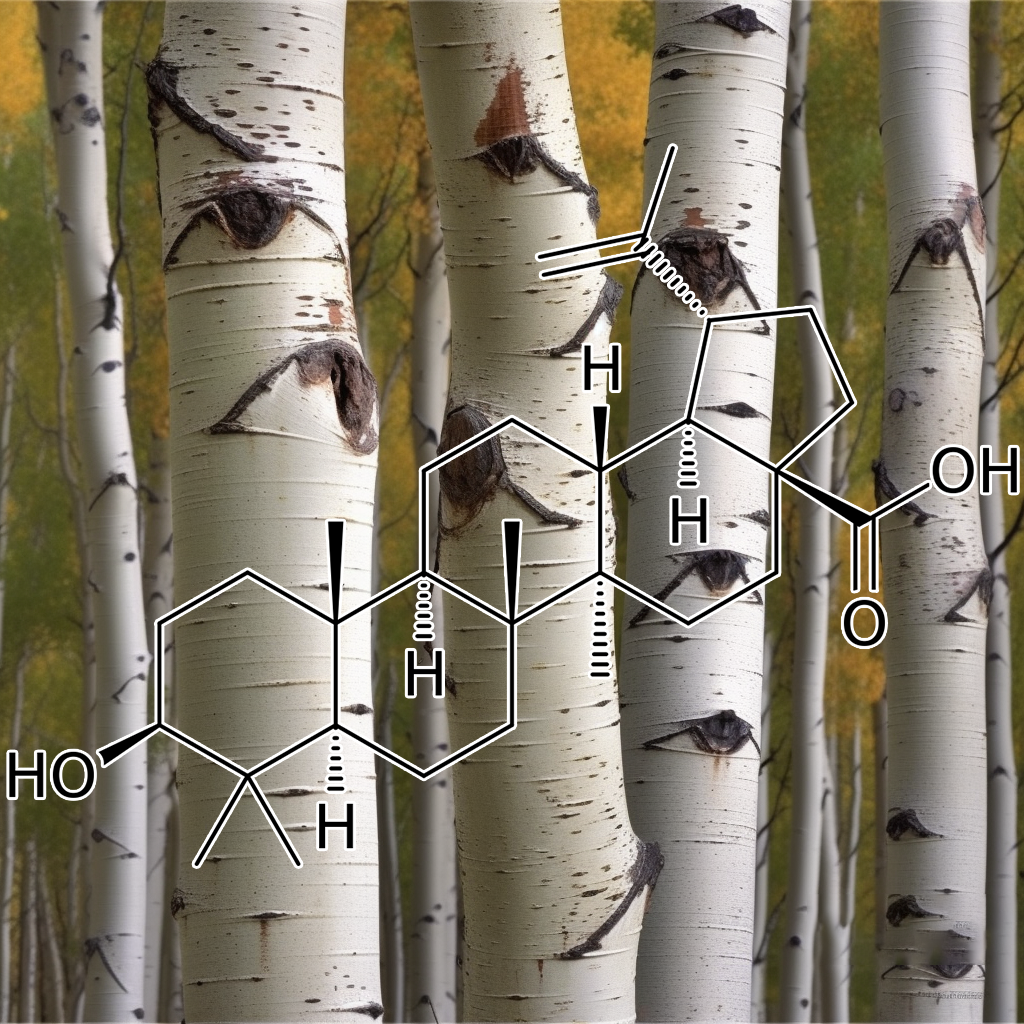
Betulinic acid (Betula platyphylla)
- Analysis Of Three Types Of Triterpenoids In Tetraploid White Birches (Betula Platyphylla Suk.) And Selection Of Plus Trees
- Anti-Aids Agents. 78. Design, Synthesis, Metabolic Stability Assessment, And Antiviral Evaluation Of Novel Betulinic Acid Derivatives As Potent Anti-Human …
- Extraction Of Phytochemicals Betulin And Betulinic Acid From The Chaga Mushroom And Their Effect On Mcf-7 Cells
- Ionic Derivatives Of Betulinic Acid Exhibit Antiviral Activity Against Herpes Simplex virus Type-2 (Hsv-2), But Not Hiv-1 Reverse Transcriptase
- Parameter Optimization And Potential Bioactivity Evaluation Of A Betulin Extract From White Birch Bark
- Synthesis And Antiviral Activity Of Hydrazides And Substituted Benzalhydrazides Of Betulinic Acid And Its Derivatives
- Synthesis And Antiviral Activity Of Ureides And Carbamates Of Betulinic Acid And Its Derivatives
- Synthesis Of New Betulinic Acid/Betulin-Derived Dimers And Hybrids With Potent Antimalarial And Antiviral Activities
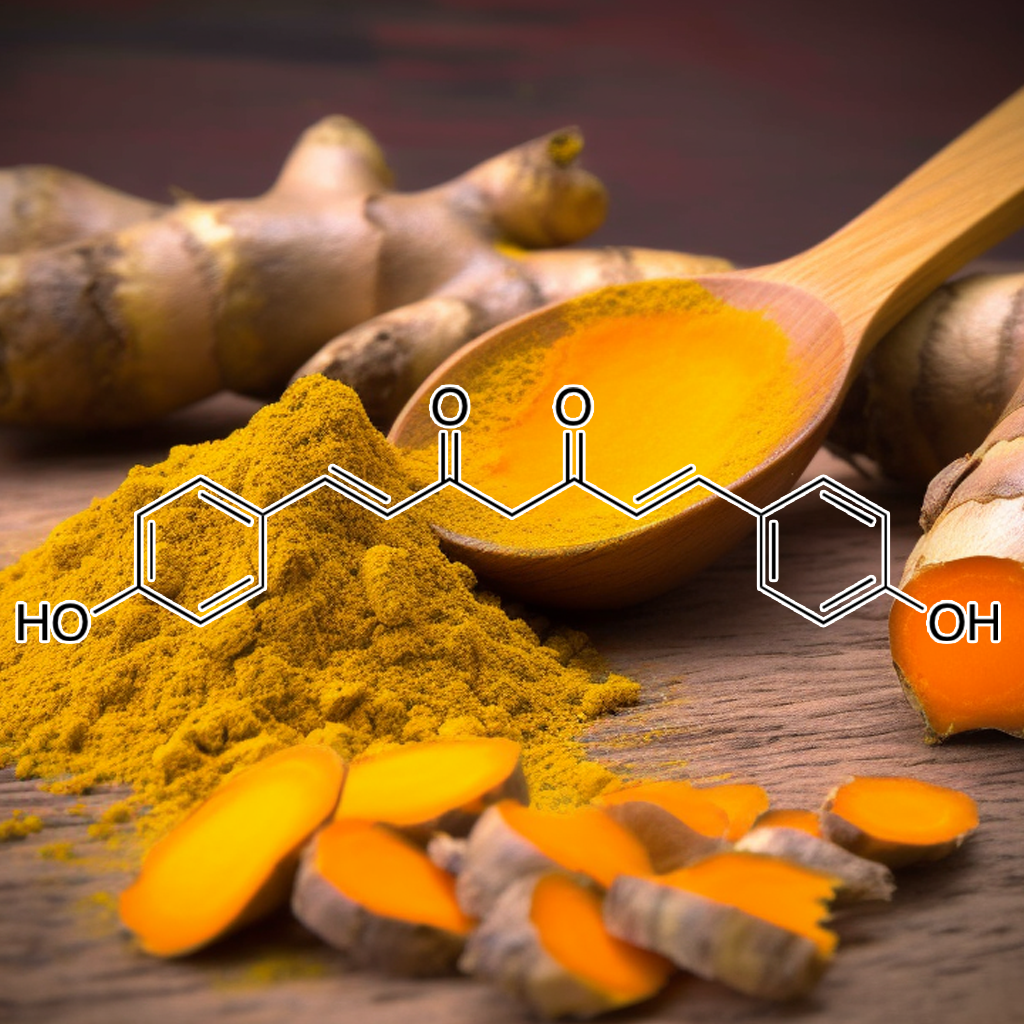
Bisdemethoxycurcumin (turmeric)
- Bioefficacy Of Turmeric Rhizome Extracts With Alum On Microbes: An In Vitro Approach
- Effects Of Dietary Supplementation With Turmeric Rhizome Extract On Growth Performance, Carcass Characteristics, Antioxidant Capability, And Meat Quality Of Wenchang
- Effects Of Neem, Turmeric And Papaya Leaf Extract Mixture On Growth Performance Of Broilers
- Pros And Cons Of Curcumin As Bioactive Phyto-Compound For Effective Management Of Insect Pests
- Werayut Pothițirat’*, Sundari Desi Nuryanti “, Phatsawee Jansook”, Kingkan Sanpanya’And Wandee Gritsanapan
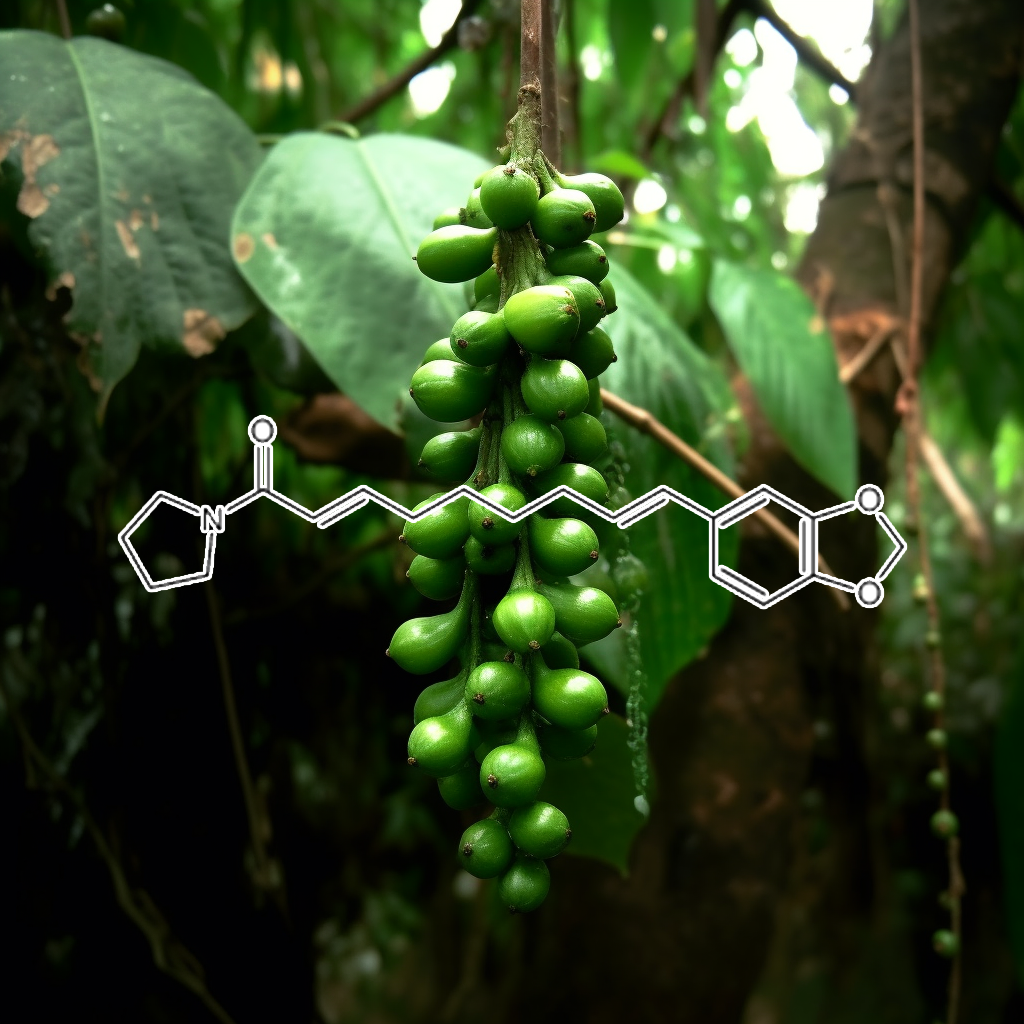
Brachyamide B (Piper boehmeriaefolium)
- A Review Of The Literature And Latest Advances In Research Of Piper Sarmentosum
- A Review On Diversified Use Of The King Of Spices: Piper Nigrum (Black Pepper)
- Lc-Ms Analysis Of Phytocomponents In The Methanol Extract Of Piper Sarmentosum Leaves
- Review On Kukkiladhi Choornam Used In Traditional Medicine And Research Activities
Broussonetia papyrifera
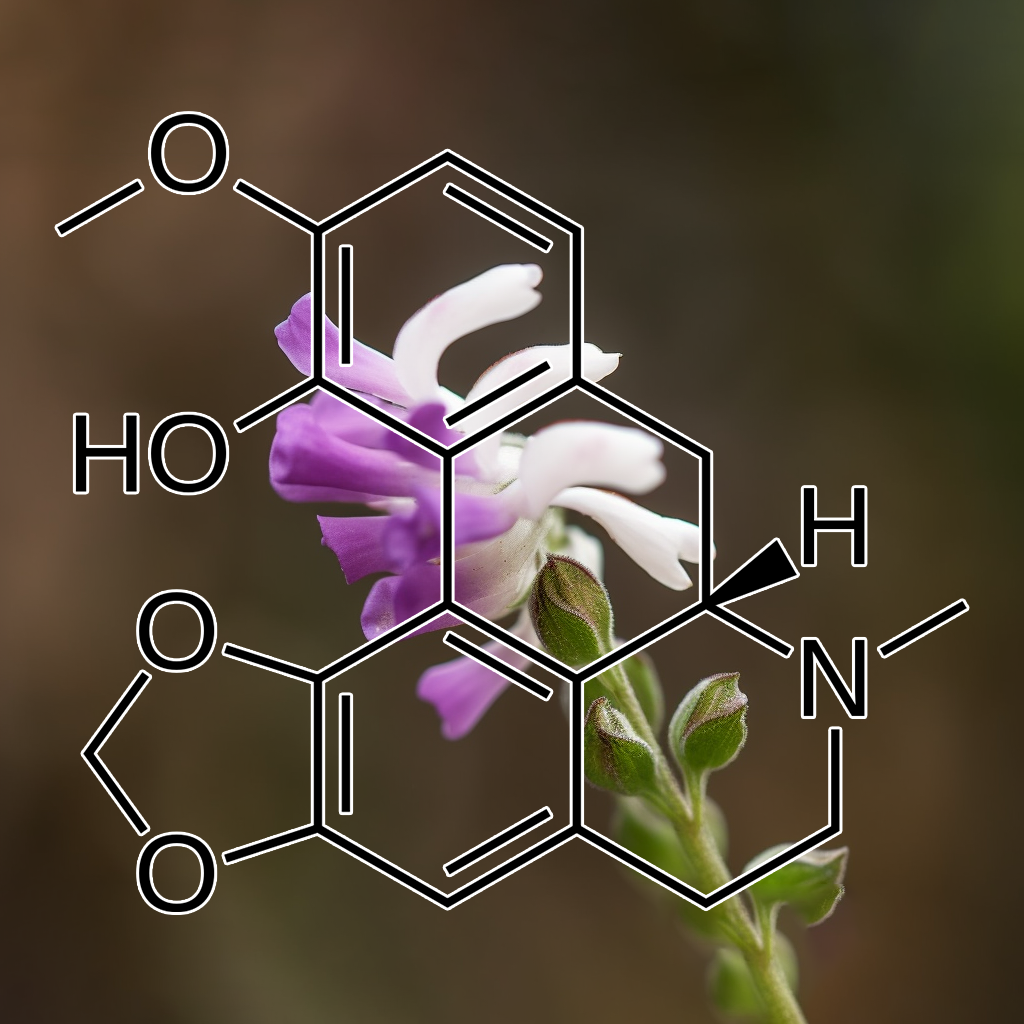
bulbocapnine (Corydalis decumbens)
- Anticataleptic Actions Of Amantadine Hydroehloride
- Anti-Hepatitis B Activity Of Isoquinoline Alkaloids Of Plant Origin
- Antiviral And Antimicrobial Evaluation Of Some Heterocyclic Compounds From Turkish Plants
- Antiviral And Antimicrobial Profiles Of Selected Isoquinoline Alkaloids From Fumaria And Corydalis Species
- Biologically Active Isoquinoline Alkaloids With Drug-Like Properties From The Genus Corydalis
- Cytotoxic And Antitumor Potentialities Of Aporphinoid Alkaloids
- Cytotoxicity, Antiviral And Antimicrobial Activities Of Alkaloids, Flavonoids, And Phenolic Acids
- Natural Antiviral Compounds
- New Skeletons And New Concepts In Amaryllidaceae Alkaloids
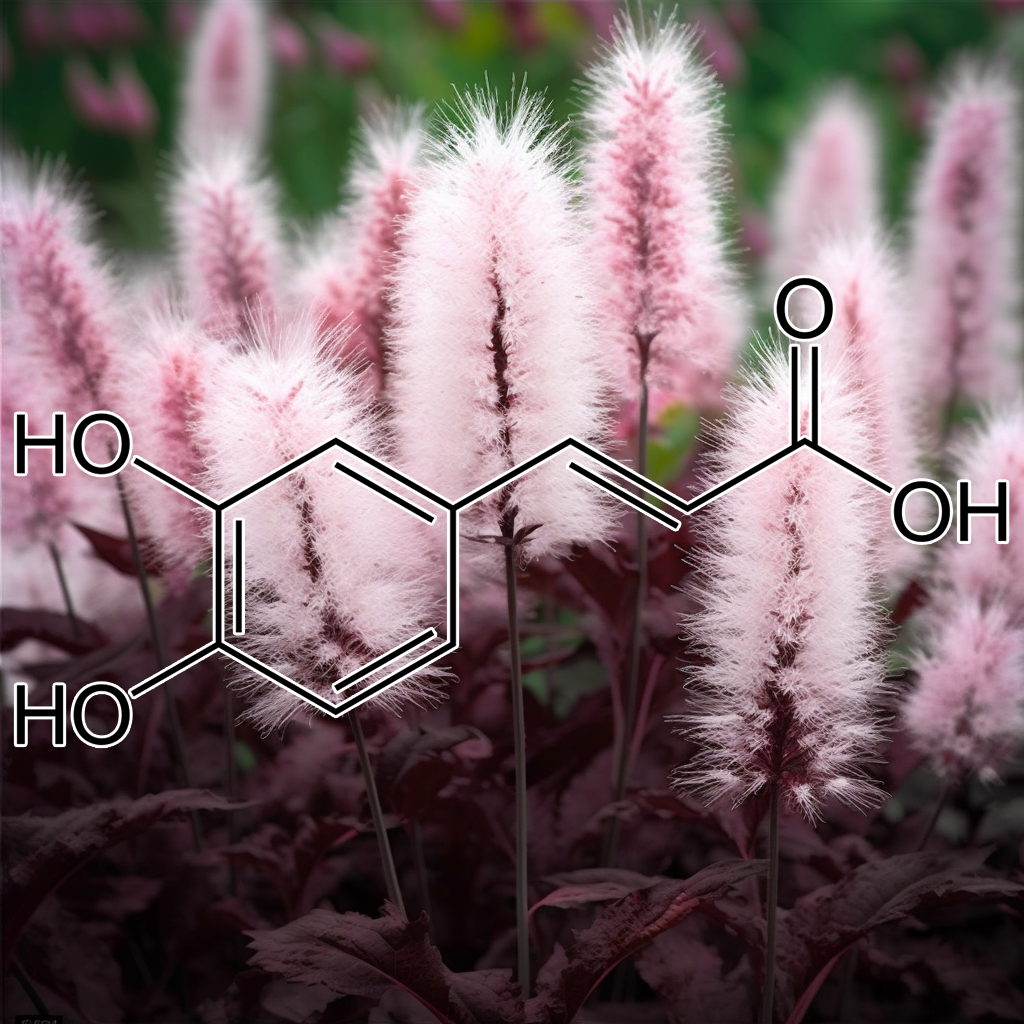
caffeic acid
- Anti-Hiv Activities Of Natural Antioxidant Caffeic Acid Derivatives: Toward An Antiviral Supplementation Diet
- Antioxidant, Antibacterial, And Antiviral Effects Of Two Essential Oils, Their Components, And Caffeic Acid For Use As Feed Additives In Poultry
- Antiviral Activity Of Enzymatically Oxidized Caffeic Acid Against Herpesvirus Hominis Type 1 And Type 2.
- Antiviral Activity Of Metal Chelates Of Caffeic Acid And Similar Compounds Towards Herpes Simplex, Vsv-Ebola Pseudotyped And Vaccinia virus es
- Antiviral Properties Of Caffeic Acid Phenethyl Ester And Its Potential Application
- Caffeic Acid Inhibits Hcv Replication Via Induction Of Ifnα Antiviral Response Through P62-Mediated Keap1/Nrf2 Signaling Pathway
- Caffeic Acid Oligomers From Mesona Chinensis And Their In Vitro Antiviral Activities
- In Vitro Antiviral Efficacy Of Caffeic Acid Against Canine Distemper virus
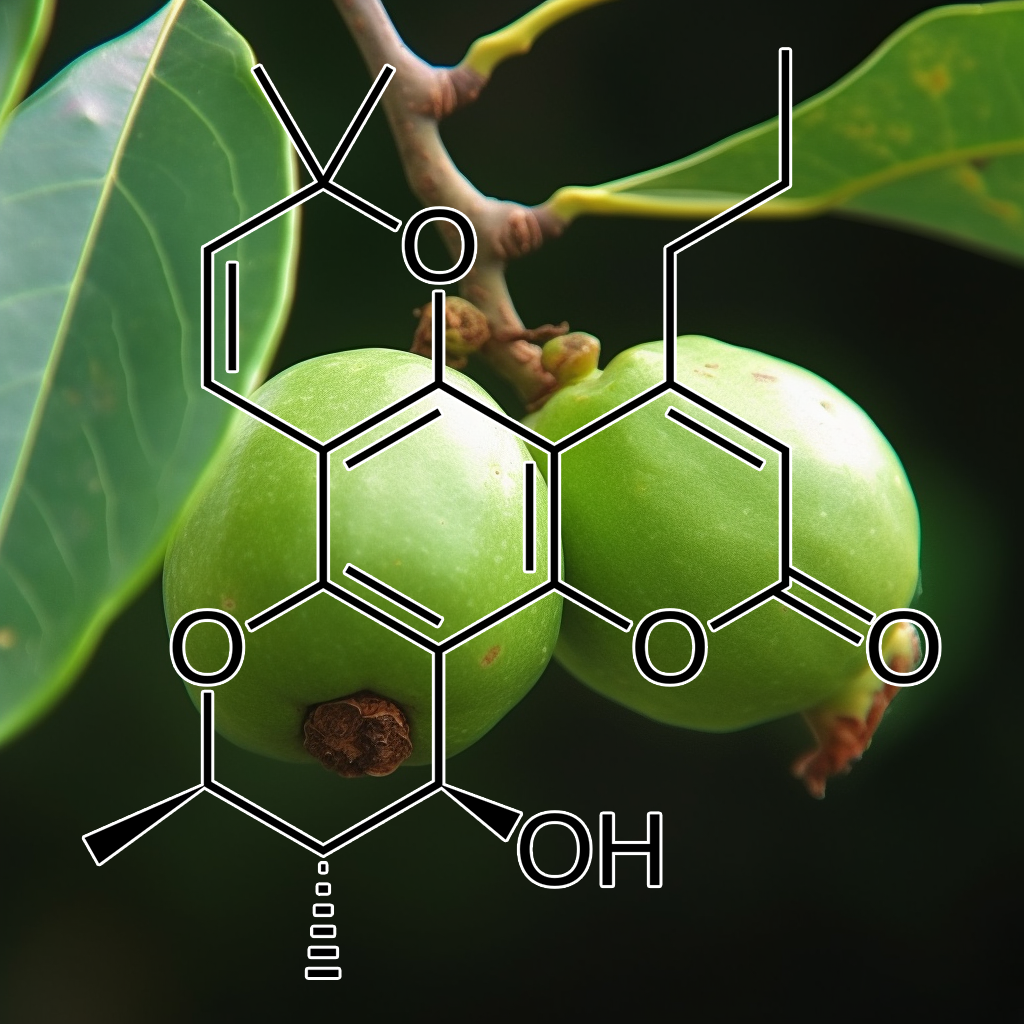
Calanolide A (Calophyllum lanigerum)
- An Efficient And Scalable Method For The Isolation Of Costatolide, A Naturally-Occurring Anti-Hiv Agent, From The Latex Of Calophyllum Teysmannii Var. Inophylloide
- Anti-Hiv-1 Activity Of Calanolides Used In Combination With Other Mechanistically Diverse Inhibitors Of Hiv-1 Replication
- Antiviral Activity And Mechanism Of Action Of Calanolide A Against The Human Immunodeficiency virus Type-1.
- Calanolide A New Non-Nucleoside Reverse Transcriptase Inhibitor (Nnrti): A Review
- Chemical Library And Structure–Activity Relationships Of 11-Demethyl-12-Oxo Calanolide A Analogues As Anti-Hiv-1 Agents
- Concise Synthesis Of Anti-Hiv-1 Active (+)-Inophyllum B And (+)-Calanolide A By Application Of (−)-Quinine-Catalyzed Intramolecular Oxo-Michael Addition
- Current Lead Natural Products For The Chemotherapy Of Human Immunodeficiency virus (Hiv) Infection
- Highly Suppressing Wild-Type Hiv-1 And Y181C Mutant Hiv-1 Strains By 10-Chloromethyl-11-Demethyl-12-Oxo-Calanolide A With Druggable Profile
- Hiv Inhibitory Natural Products. Part 7. The Calanolides, A Novel Hiv-Inhibitory Class Of Coumarin Derivatives From The Tropical Rainforest Tree, Calophyllum Lanigerum
- Hiv Reverse Transcriptase Inhibitors Of Natural Origin
- Hiv-1 Inhibitory Compounds From Calophyllum Brasiliense Leaves
- Hiv-Inhibitory Coumarins From Latex Of The Tropical Rainforest Tree Calophyllum Teysmannii Var. Inophylloide
- Kinetic Analysis Of Inhibition Of Human Immunodeficiency virus Type-1 Reverse Transcriptase By Calanolide A.
- Pharmaceutical Properties Of Related Calanolide Compounds With Activity Against Human Immunodeficiency virus
- Plant Derived Antivirals: A Potential Source Of Drug Development
- Preclinical Investigation Of The Anti-Hiv Activity Of Calanolide A. Characterization Of The Nature Of Calanolide A As A Novel Reverse Transcriptase Inhibitor.
- Pyranocoumarins From Tropical Species Of The Genus Calophyllum: A Chemotaxonomic Study Of Extracts In The National Cancer Institute Collection
- Review On Natural Coumarin Lead Compounds For Their Pharmacological Activity
- Safety And Pharmacokinetic Profile Of Multiple Escalating Doses Of (+)-Calanolide A, A Naturally Occurring Nonnucleoside Reverse Transcriptase Inhibitor, In Healthy Hiv
- Sensitivity And Resistance To (+)-Calanolide A Of Wild-Type And Mutated Forms Of Hiv-1 Reverse Transcriptase
- Specific Inhibition Of The Reverse Transcriptase Of Human Immunodeficiency virus Type 1 And The Chimeric Enzymes Of Human Immunodeficiency virus Type 1 And Type 2
- Structural Analogues Of The Calanolide Anti-Hiv Agents. Modification Of The Trans-10,11-Dimethyldihydropyran-12-Ol Ring (Ring C)
- Structure−Activity Modifications Of The Hiv-1 Inhibitors (+)-Calanolide A And (−)-Calanolide B
- Synthesis, Chromatographic Resolution, And Anti-Human Immunodeficiency virus Activity Of (±)-Calanolide A And Its Enantiomers
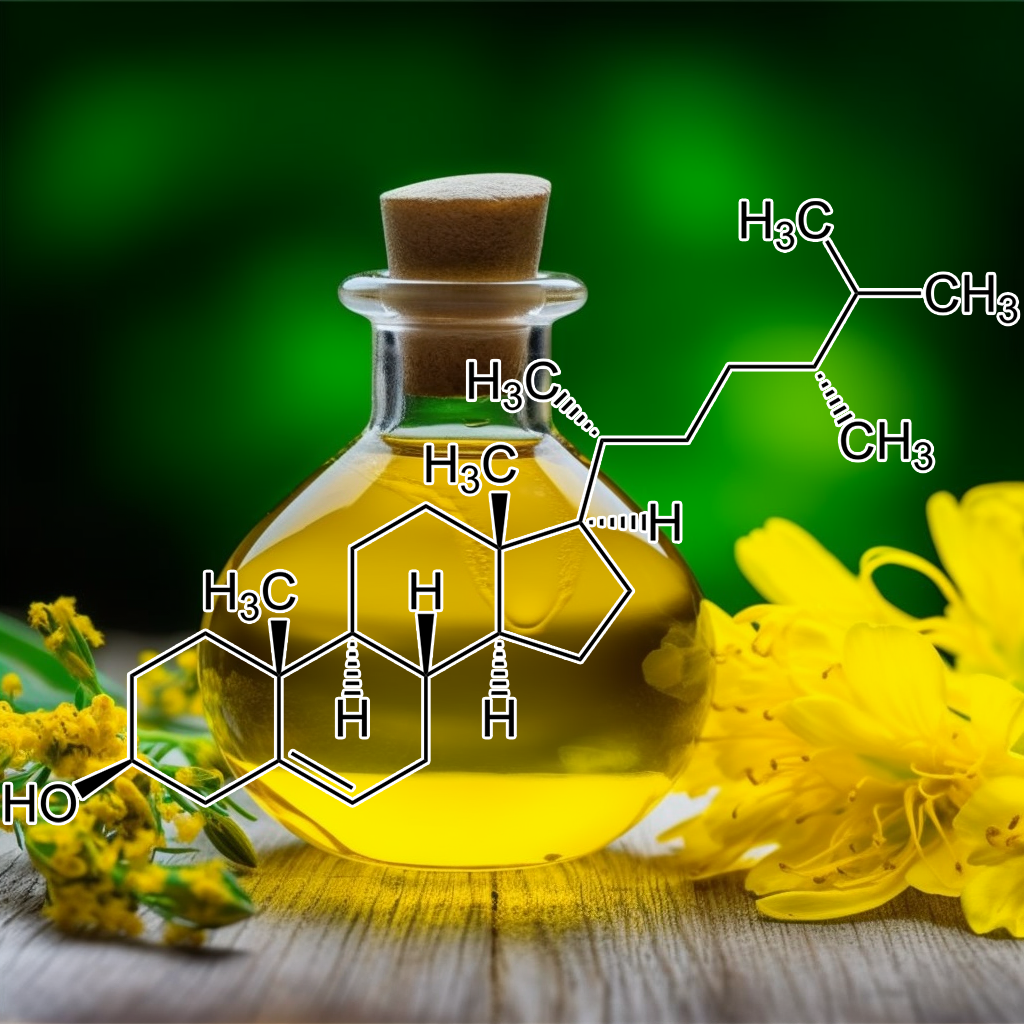
Campesterol (Rapeseed oil)
- Anti-Aging
- Anti-Aging Serum
- Aromaticstudies. Com
- Balanced, Progressive & Inspiring Education For A New Generation Of Aromatherapists.
- Date Seeds: A Promising Source Of Oil With Functional Properties
- Evaluation Of Balanitesaegyptiaca Oil As Untraditional Source Of Oil And Its Anti-Inflammatory Activity
- Inhibitory Effects Of Grape Seeds Powder, Extract And Oil On Gentamicin Induced Nephrotoxicity In Rats
- Natural Skin Care Serum
- Potential Benefits Of Jujube (Zizyphus Lotus L.) Bioactive Compounds For Nutrition And Health
- Prickly Pear Seed Oil Benefits On The Skin
- Prickly Pear Serum
- Pumpkin (Cucurbita Pepo L.) Seed Oil
- Valorization Of Fruits By-Products To Unconventional Sources Of Additives, Oil, Biomolecules And Innovative Functional Foods
- Plant sterols: functional lipids in immune functionand inflammation?
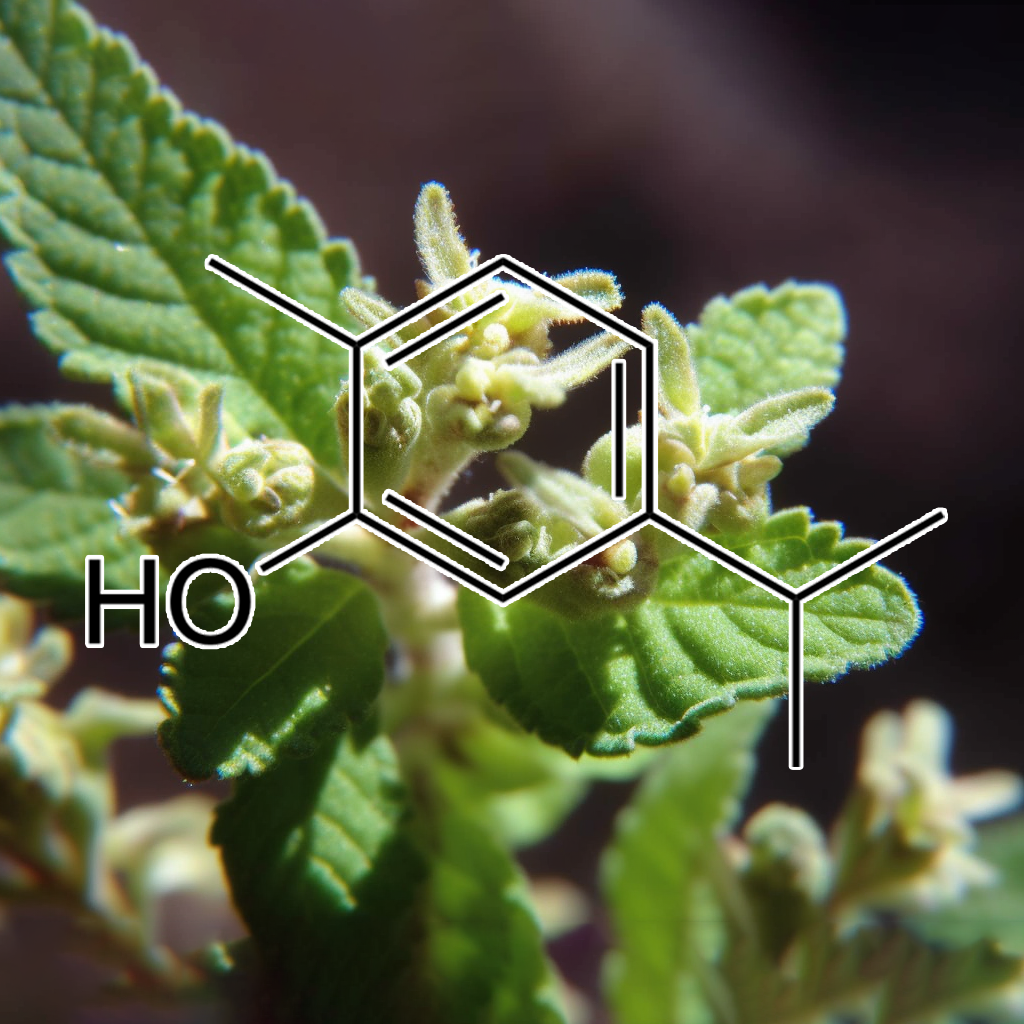
Carvacrol (Oregano)
Mexican oregano (Lippia graveolens) is a plant found in Mexico and Central America that is traditionally used as a medicinal herb. In the present study, we investigated the antiviral activity of the essential oil of Mexican oregano and its major component, carvacrol, against different human and animal viruses. The MTT test (3–4,5-dimethythiazol-2yl)-2,5-diphenyl tetrazolium bromide) was conducted to determine the selectivity index (SI) of the essential oil, which was equal to 13.1, 7.4, 10.8, 9.7, and 7.2 for acyclovir-resistant herpes simplex virus type 1 (ACVR-HHV-1), acyclovir-sensitive HHV-1, human respiratory syncytial virus (HRSV), bovine herpesvirus type 2 (BoHV-2), and bovine viral diarrhoea virus (BVDV), respectively.
The human rotavirus (RV) and BoHV-1 and 5 were not inhibited by the essential oil. Carvacrol alone exhibited high antiviral activity against RV with a SI of 33, but it was less efficient than the oil for the other viruses. Thus, Mexican oregano oil and its main component, carvacrol, are able to inhibit different human and animal viruses in vitro. Specifically, the antiviral effects of Mexican oregano oil on ACVR-HHV-1 and HRSV and of carvacrol on RV justify more detailed studies.
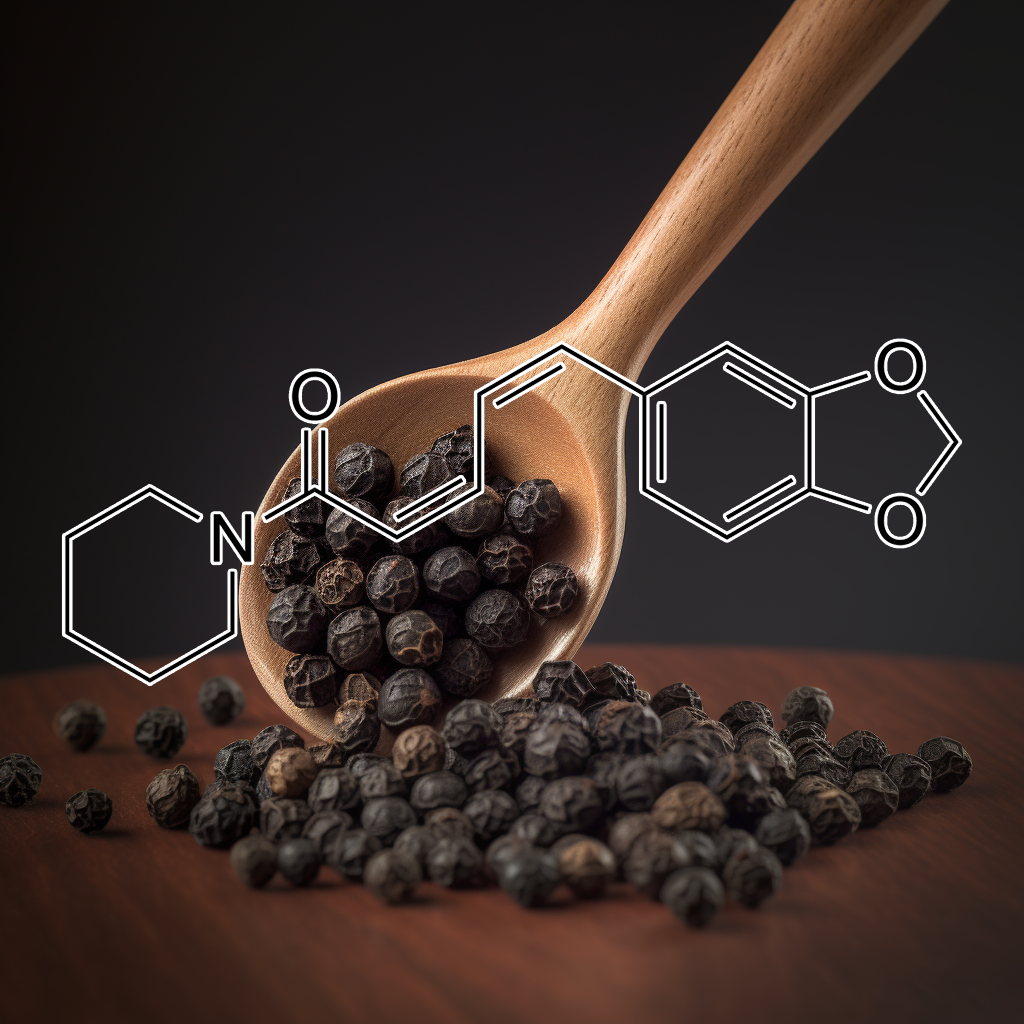
Chavicine (black pepper)
- A Review On Different Sources Of Piper Nigrum L. Adulterants
- A Review On Diversified Use Of The King Of Spices: Piper Nigrum (Black Pepper)
- An Exploration Of Significant Curative Spices: A
- Antiradical Properties Of Essential Oils And Extracts From Coriander, Cardamom, White, Red, And Black Peppers
- Isolation Of Piperdine From Piper Nigrum And Its Antiproliferative Activity
- Phytochemicals From The Bark Of Rhamnus Caroliniana
- Piperine: A Comprehensive Review Of Methods Of Isolation, Purification And Biological Properties
- Postharvest Processing And Benefits Of Black Pepper, Coriander, Cinnamon, Fenugreek, And Turmeric Spices
- Quantitative Structure–Cytotoxicity Relationship Of Newly Synthesized Piperic Acid Esters
- Quantitative Structure–Cytotoxicity Relationship Of Piperic Acid Amides
- Review On Kukkiladhi Choornam Used In Traditional Medicine And Research Activities
- Role Of Spices In Preventing Chronic Problems: A Review
- Therapeutic Actions & Potentials Of Black Pepper
- Traditional Chinese Functional Foods
- Trikatu-A Combination Of Three Bioavailability Enhancers
- Why Spices Are Unique?
- World Journal Of Pharmaceutical And Life Sciences Wjpls

chelidimerine (Chelidonium majus)
- Chelidonium Majus L.(Greater Celandine)–A Review On Its Phytochemical And Therapeutic Perspectives
- Suppressive Effects Of Chelidonium Majus Methanol Extract In Knee Joint, Regional Lymph Nodes, And Spleen On Collagen-Induced Arthritis In Mice
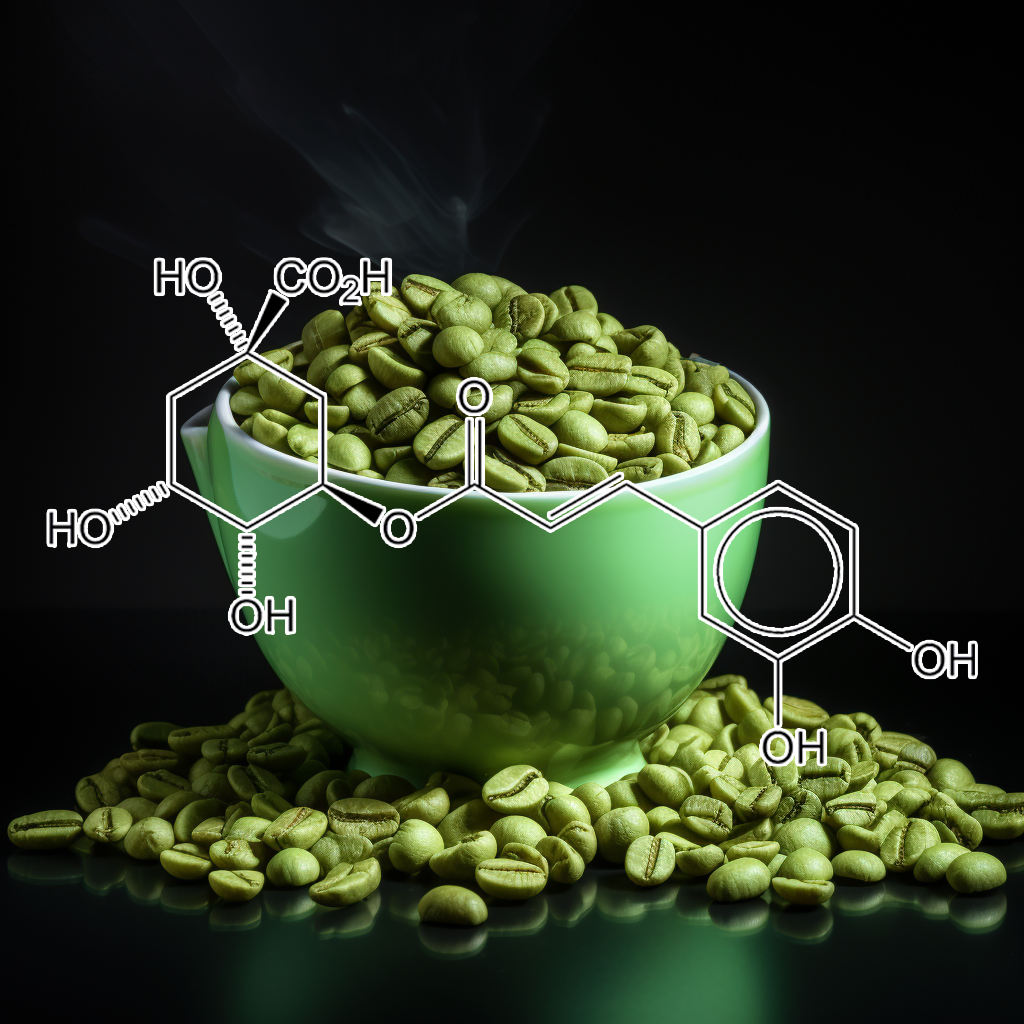
chlorogenic acid
- And Vasodilator Effects Of Methanolic Extract Of Inula Viscosa: Biological Evaluation And Pom Analysis Of Cynarin, Chlorogenic Acid As Potential Hypertensive
- Anti-Hepatitis B virus Activity Of Chlorogenic Acid And Its Related Compounds
- Antiviral Activity Of Chlorogenic Acid Against Influenza A (H1N1/H3N2) virus And Its Inhibition Of Neuraminidase
- Bioactivity Of Fermented Green Coffee Bean Extract Containing High Chlorogenic Acid And Surfactin
- Chlorogenic Acid (Cga): A Pharmacological Review And Call For Further Research
- Coffee Consumption And Coronary Heart Diseases: A Mini-Review
- Consumption Of Green Coffee And The Risk Of Chronic Diseases
- Determination Of Antibacterial Activity Of Green Coffee Bean Extract On Periodontogenic Bacteria Like Porphyromonas Gingivalis, Prevotella Intermedia
- Effect Of Green Coffee Bean Extract On Streptococcus Mutans Count: A Randomised Control Trial
- Effect Of Green Coffee Beans Extract Ointments For Wound Healing
- Effect Of Kombucha Culture On Caffeine And Chlorogenic Acid Content In Fermentation Of Robusta Green Coffee Beans …
- Effect Of Silymarin Versus Silymarin And Green Coffee Extract On Thioacetamide Induced Liver Injury In Adult Male Albino Rats (Histological And Immunohistochemical
- Emergency Antiviral Drug Discovery During A Pandemic-A Case Study On The Application Of Natural Compounds To Treat Covid-19
- Enter Stage Right Chlorogenic Acid
- Extraction Of Chlorogenic Acid From Chinese Herbal Medicine And Its Antiviral Effect On Porcine Parvovirus In Vitro [J]
- Fermentation Of Green Coffee Bean (Coffee Arabica) With Lactic Acid Bacteria And Characterization Of Its Biochemical Properties
- Identifying Anti-Hsv Compounds From Unrelated Plants Using Nmr And Lc–Ms Metabolomic Analysis
- Safety And Efficacy Of Banaba–Moringa Oleifera–Green Coffee Bean Extracts And Vitamin D3 In A Sustained Release Weight Management Supplement
- Salting-Out Gradients In Centrifugal Partition Chromatography For The Isolation Of Chlorogenic Acids From Green Coffee Beans
- Studies On Antiviral Effect Of Chlorogenic Acid On Prrsv In Vitro
- To Evaluate The Antimicrobial Efficacy Of Green Coffee Bean Extract On Periopathogens-A Clinico-Microbiological Study
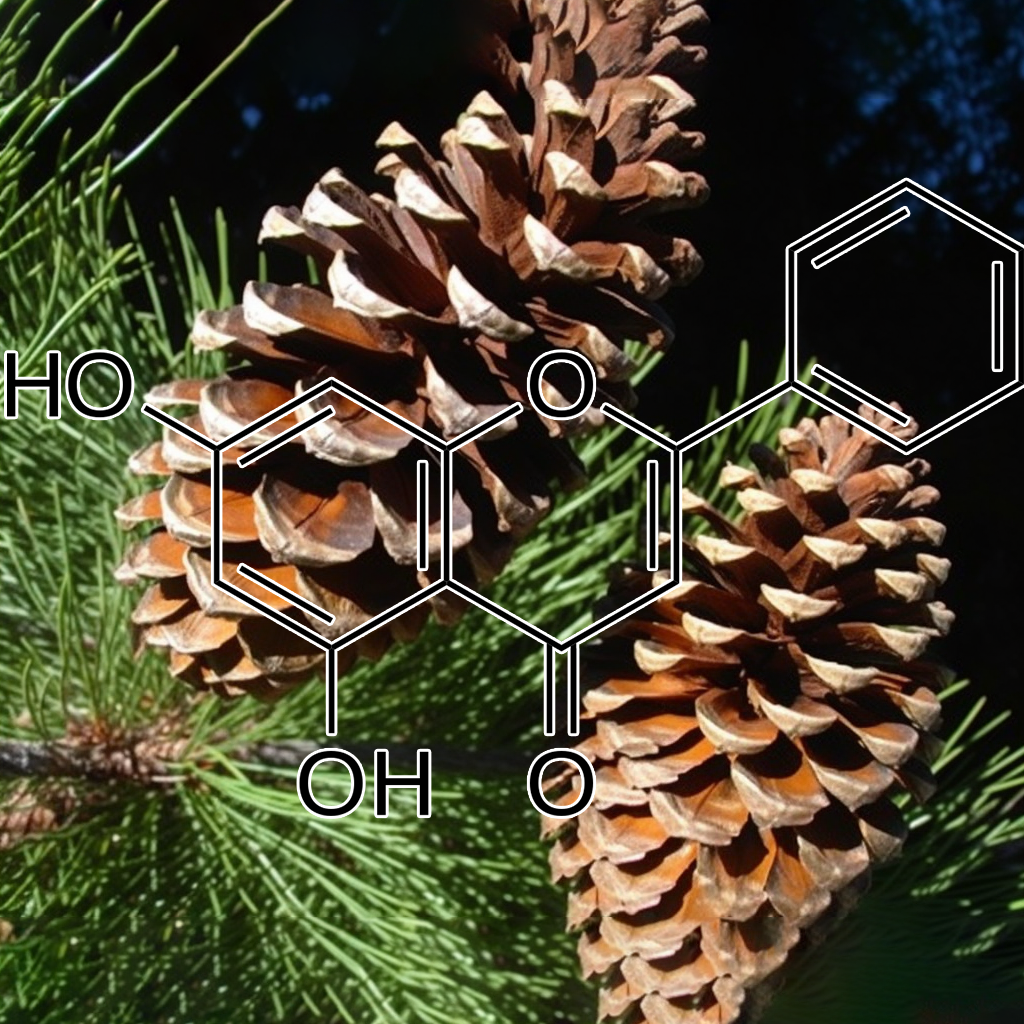
Chrysin (Pinus monticola)
- Alleviation Of Doxorubicin-Induced Nephrotoxicity And Hepatotoxicity By Chrysin In Wistar Rats
- An Efficient Synthesis Of Chrysin
- An Overview On Immunoregulatory And Anti-Inflammatory Properties Of Chrysin And Flavonoids Substances
- Anti-Enterovirus 71 Effects Of Chrysin And Its Phosphate Ester
- Antiherpetic Activities Of Flavonoids Against Herpes Simplex virus Type 1 (Hsv-1) And Type 2 (Hsv-2)In Vitro
- Antinociceptive Effect Of Chrysin In Diabetic Neuropathy And Formalin-Induced Pain Models
- Antitumor Properties Of A Vanadyl (Iv) Complex With The Flavonoid Chrysin [Vo (Chrysin) 2 Etoh] 2 In A Human Osteosarcoma Model: The Role Of Oxidative Stress
- Antiviral Activity And Mode Of Action Of Propolis Extracts And Selected Compounds
- Antiviral Activity Of Chrysin Derivatives Against Coxsackievirus B3 In Vitro And In Vivo
- Antiviral Activity Of Silymarin Against Chikungunya virus
- Apigenin, Chrysin, And Luteolin Selectively Inhibit Chymotrypsin-Like And Trypsin-Like Proteasome Catalytic Activities In Tumor Cells
- Application Of Visible And Near Infrared Spectroscopy For Rapid Analysis Of Chrysin And Galangin In Chinese Propolis
- Behavioral Characterisation Of The Flavonoids Apigenin And Chrysin
- Beneficial Effects Of Chrysin On The Reproductive System Of Adult Male Rats
- Chemopreventive And Therapeutic Potential Of Chrysin In Cancer: Mechanistic Perspectives
- Chrysin Cocrystals: Characterization And Evaluation
- Chrysin Enhances Sensitivity Of Bel-7402/Adm Cells To Doxorubicin By Suppressing Pi3K/Akt/Nrf2 And Erk/Nrf2 Pathway
- Chrysin Functionalized Nhc–Au (I) Complexes: Synthesis, Characterization And Effects On The Nematode Caenorhabditis Elegans
- Chrysin Increases The Therapeutic Efficacy Of Docetaxel And Mitigates Docetaxel-Induced Edema
- Chrysin Rich Scutellaria Discolor Colebr. Induces Cervical Cancer Cell Death Via The Induction Of Cell Cycle Arrest And Caspase-Dependent Apoptosis
- Chrysin, A Flavonoid Attenuates Histological Changes Of Hyperammonemic Rats: A Dose Dependent Study
- Chrysin, A Natural And Biologically Active Flavonoid, Influences A Murine Leukemia Model In Vivo Through Enhancing Populations Of T-And B-Cells, And Promoting …
- Chrysin, Abundant In Morinda Citrifolia Fruit Water–Etoac Extracts, Combined With Apigenin Synergistically Induced Apoptosis And Inhibited Migration In Human …
- Chrysin: A Histone Deacetylase 8 Inhibitor With Anticancer Activity And A Suitable Candidate For The Standardization Of Chinese Propolis
- Chrysin: Is It An Effective Aromatase Inhibitor
- Chrysin: Sources, Beneficial Pharmacological Activities, And Molecular Mechanism Of Action
- Chrysin-Piperazine Conjugates As Antioxidant And Anticancer Agents
- Computational Studies Of The Binding Mechanism Of Calmodulin With Chrysin
- Constituents Of Propolis: Chrysin, Caffeic Acid, P-Coumaric Acid, And Ferulic Acid Induce Prodh/Pox-Dependent Apoptosis In Human Tongue Squamous Cell …
- Convergent Synthesis Of Moslosooflavone, Isowogonin And Norwogonin From Chrysin
- Design, Synthesis And Biological Evaluation Of Chrysin Benzimidazole Derivatives As Potential Anticancer Agents
- Development Of Novel N-Isopropylacrylamide (Nipaam) Based Hydrogels With Varying Content Of Chrysin Multiacrylate
- Effects Of Chrysin On Urinary Testosterone Levels In Human Males
- Effects Of Chrysin, Apigenin, Genistein And Their Homoleptic Copper (Ii) Complexes On The Growth And Metastatic Potential Of Cancer Cells
- Effects Of The Flavonoid Chrysin On Nitrofurantoin Pharmacokinetics In Rats: Potential Involvement Of Abcg2
- Egyptian Propolis: 2. Chemical Composition, Antiviral And Antimicrobial Activities Of East Nile Delta Propolis
- Ethanolic Extract Of Propolis, Chrysin, Cape Inhibit Human Astroglia Cells
- Evaluation Of The Mutagenic Activity Of Chrysin, A Flavonoid Inhibitor Of The Aromatization Process
- First And Second Derivative Spectrophotometric Determination Of Flavonoids Chrysin And Quercetin
- Flavonoids Chrysin And Benzoflavone, Potent Breast Cancer Resistance Protein Inhibitors, Have No Significant Effect On Topotecan Pharmacokinetics In Rats Or Mdr1A/1B …
- Fluorine-Containing Chrysin Derivatives: Synthesis And Biological Activity
- Identifying Novel Antiviral Targets Against Enterovirus 71: Where Are We?
- Improved Chemotherapeutic Efficacy Of Injectable Chrysin Encapsulated By Copolymer Nanoparticles
- In Vitro Antiviral Activity Of Propolis
- Influence Of Chrysin On Hepatic Marker Enzymes And Lipid Profile Against D-Galactosamine-Induced Hepatotoxicity Rats
- Inhibition Of Dengue virus Replication By Diisopropyl Chrysin-7-Yl Phosphate
- Nephroprotective Efficacy Of Chrysin Against Cisplatin‐Induced Toxicity Via Attenuation Of Oxidative Stress
- Optimization Of Ultrasound-Assisted Extraction Of Quercetin, Luteolin, Apigenin, Pinocembrin And Chrysin From Flos Populi By Plackett-Burman Design Combined …
- Phytochemistry Chrysin: Sources, Bene Fi Cial Pharmacological Activities, And Molecular Mechanism Of Action
- Probing The Origins Of Anticancer Activity Of Chrysin Derivatives
- Protective Effects Of Chinese Propolis And Its Component, Chrysin, Against Neuronal Cell Death Via Inhibition Of Mitochondrial Apoptosis Pathway In Sh-Sy5Y Cells
- Quantification Of Baicalein, Chrysin, Biochanin-A And Ellagic Acid In Root Bark Of Oroxylum Indicum By Rp-Hplc With Uv Detection
- Research Progress Of Chrysin Derivatives With Potential Biological Activities
- Role Of Oxidative Stress In The Antitumoral Action Of A New Vanadyl (Iv) Complex With The Flavonoid Chrysin In Two Osteoblast Cell Lines: Relationship With The …
- Simultaneous Determination Of Baicalin, Wogonoside, Baicalein, Wogonin, Oroxylin A And Chrysin Of Radix Scutellariae Extract In Rat Plasma By Liquid Chromatography …
- Spectroscopic And Thermodynamic Study Of Chrysin And Quercetin Complexes With Cu (Ii)
- Synergistic Effect Of Free And Nano-Encapsulated Chrysin-Curcumin On Inhibition Of Htert Gene Expression In Sw480 Colorectal Cancer Cell Line
- Synthesis And Evaluation Of Antitumour Activity In Vitro And In Vivo Of Chrysin Salicylate Derivatives
- Synthesis And Molecular Docking Studies Of Chrysin Derivatives As Antibacterial Agents
- Synthesis Of New Types Of N‐Arylpiperazine Phosphoramide Analogues Of Chrysin
- Synthesis Of The Novel Phosphoramidate Derivatives Of Chrysin
- Synthesis, Structural Study And Biological Activity Of New Derivatives Of Chrysin Containing A 2-Mercaptopyridyl Or 5-(Trifluoromethyl)-2-Mercaptopyridyl Fragments
- Synthetic Derivatives Of Chrysin And Their Biological Activities
- The Caffeoylics As A New Family Of Natural Antiviral Compounds
- The Dependence On Ionic Strength Of The Protonation Of Water-Insoluble Flavonoids Chrysin And Daidzein In Naclo4 Non-Aqueous Solutions
- The Nature Of Phosphorylated Chrysin− Protein Interactions Involved In Noncovalent Complex Formation By Electrospray Ionization Mass Spectroscopy
- The O-Methylation Of Chrysin Markedly Improves Its Intestinal Anti-Inflammatory Properties: Structure–Activity Relationships Of Flavones
- The Relationship Between Pharmacological Properties And Structure-Activity Of Chrysin Derivatives
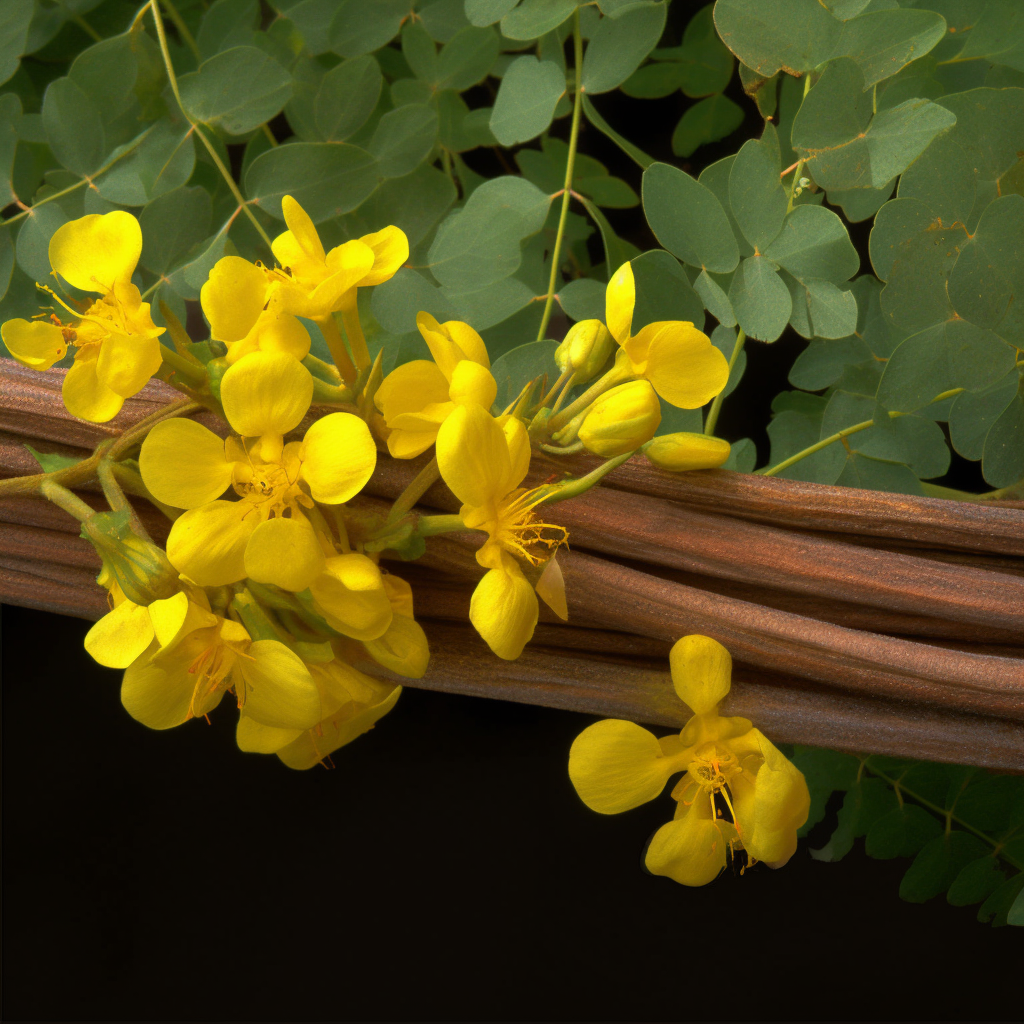
Cinnamomum cassia bark
- Activities Of Korean Medicinal Herbs And Traditional Prescriptions Against Herpes Simplex virus Type-1
- Analysis Of The Volatile Organic Compounds In Cinnamomum Cassia Bark By Direct Sample Introduction Thermal Desorption Gas Chromatography–Mass Spectrometry
- Anti-Tmv Mechanism Of Volatile Oil Extracted From Allium Satuvum L.[J]
- Aroma Profile Of Folium Isatidis Leaf As A Raw Material Of Making Bingqu For Chixiang Aroma- And Flavor-Type Baijiu
- Chinese Liver Balance Tcm Conc.(30 Caps)
- Cinnamomum Cassia Presl: A Review Of Its Traditional Uses, Phytochemistry, Pharmacology And Toxicology
- Content Determination Of The Major Constituents Of Yinchenzhufu Decoction Via Ultra High-Performance Liquid Chromatography Coupled With Electrospray Ionisation …
- Development Of An Ionic Liquid-Based Microwave-Assisted Method For Simultaneous Extraction And Distillation For Determination Of Proanthocyanidins And Essential Oil …
- Endophytic Actinomycetes Associated With Cinnamomum Cassia Presl In Hoa Binh Province, Vietnam: Distribution, Antimicrobial Activity And, Genetic Features
- Magnolol And Honokiol From Magnolia Officinalis Enhanced Antiviral Immune Responses Against Grass Carp Reovirus In Ctenopharyngodon Idella Kidney Cells
- Serum Pharmacological Study Of Oleum Cinnamomi On Coxsackievirus B_3 [J]
- The Antiadenovirus Activities Of Cinnamaldehyde In Vitro
- The Combined Therapy Of A Traditional Chinese Medicine Formula And Western Medicine For A Critically Ill Case Infected With Covid-19
- Therapeutic And Pharmaceutical Potential Of Cinnamomum Tamala
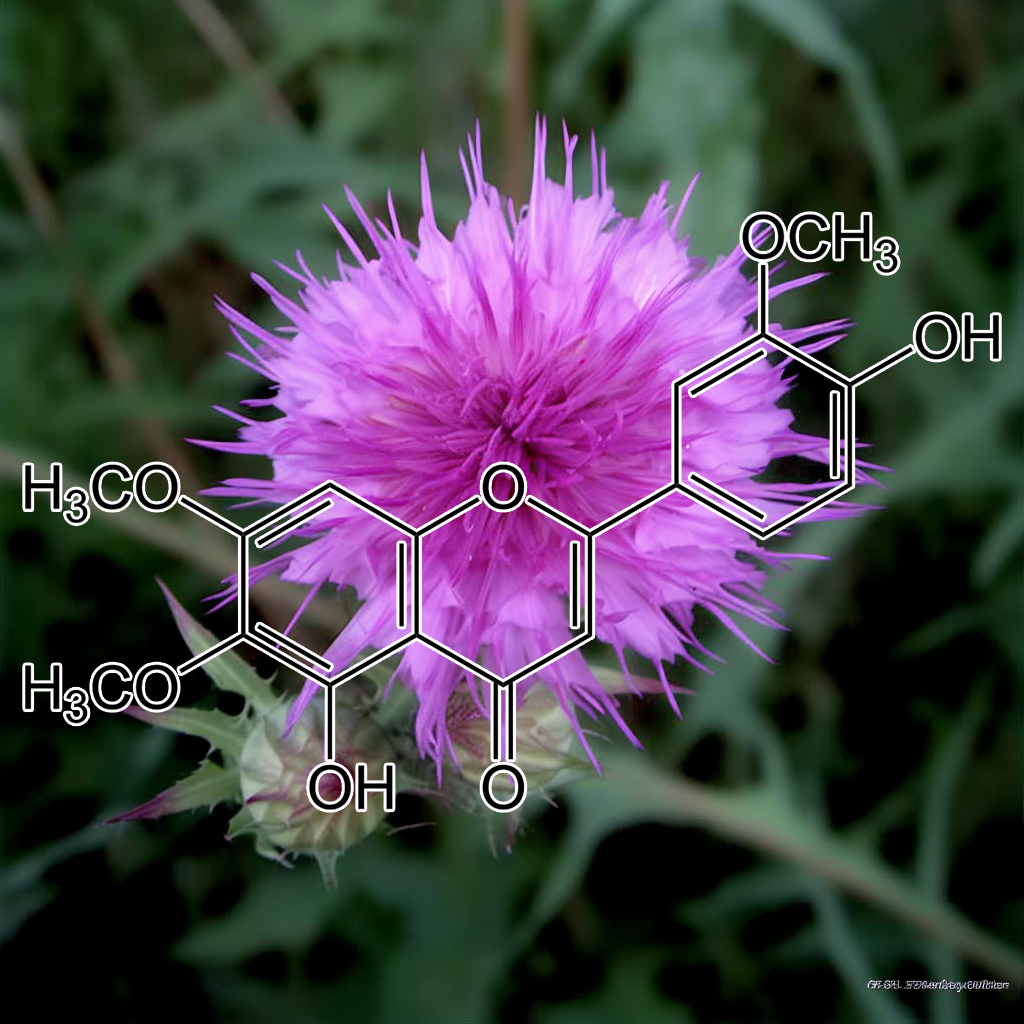
Cirsilineol (Cirsium lineare)
- Antiviral Agents Of Plant Origin. Antiherpetic Activity Of Acacetin
- Small Molecule Inhibitors Of Epithelial‐Mesenchymal Transition For The Treatment Of Cancer And Fibrosis
- The Protection Of Thymus Vulgaris Leaves Alcoholic Extract Against Hepatotoxicity Of Alcohol In Rats
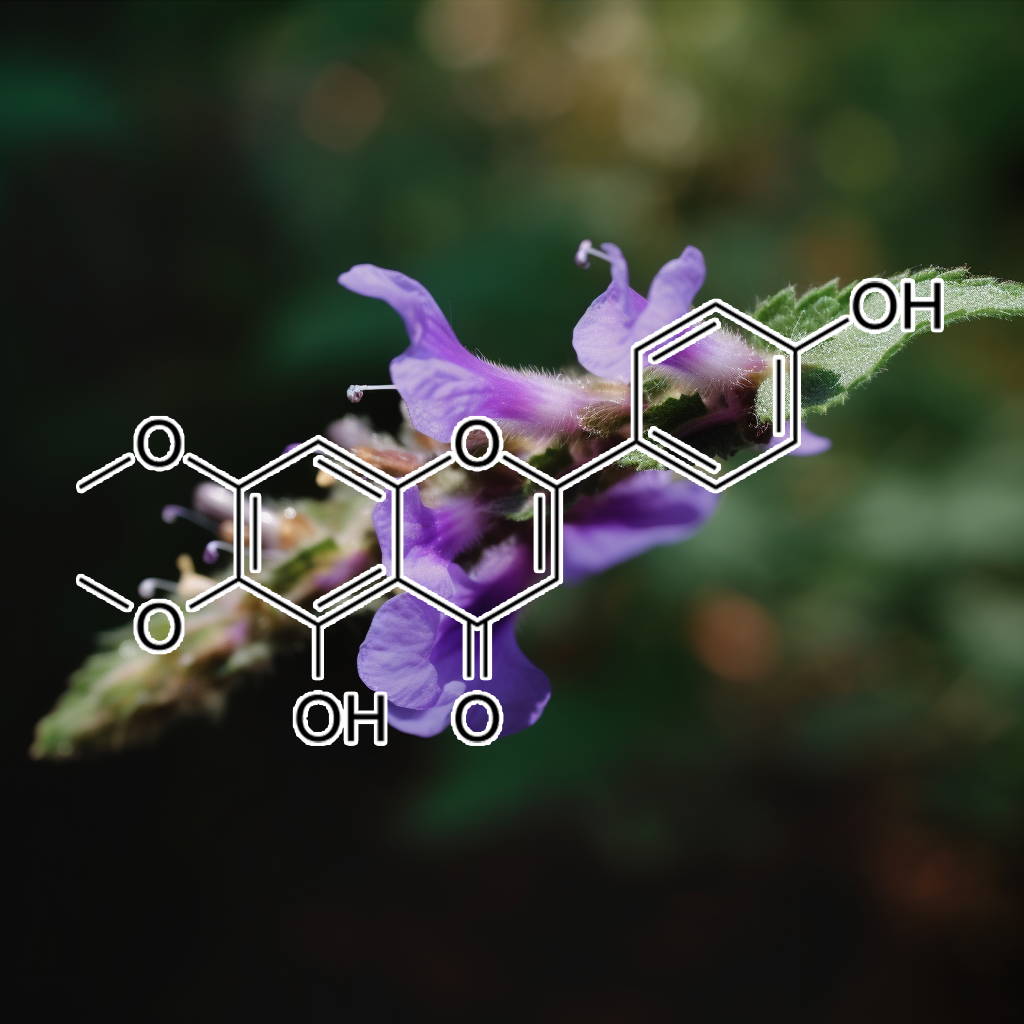
Cirsimaritin (Rabdosia eriocalyx)
- Antiviral Activity Of Natural Occurring Flavonoids In Vitro
- Cirsimaritin Inhibits Influenza A virus Replication By Downregulating The Nf-Κb Signal Transduction Pathway
- Cirsimaritin, A Lung Squamous Carcinoma Cells (Ncih-520) Proliferation Inhibitor
- Effects Of Cirsimaritin, A Flavone Isolated From Artemisia Judaica, On Isolated Guinea-Pig Ileum
- Effects Of Selected Flavonoids On Deformability, Osmotic Fragility And Aggregation Of Human Erythrocytes
- Seasonal Variation Of Free Flavone Aglycones From Sideritis Leucantha (Lamiaceae)
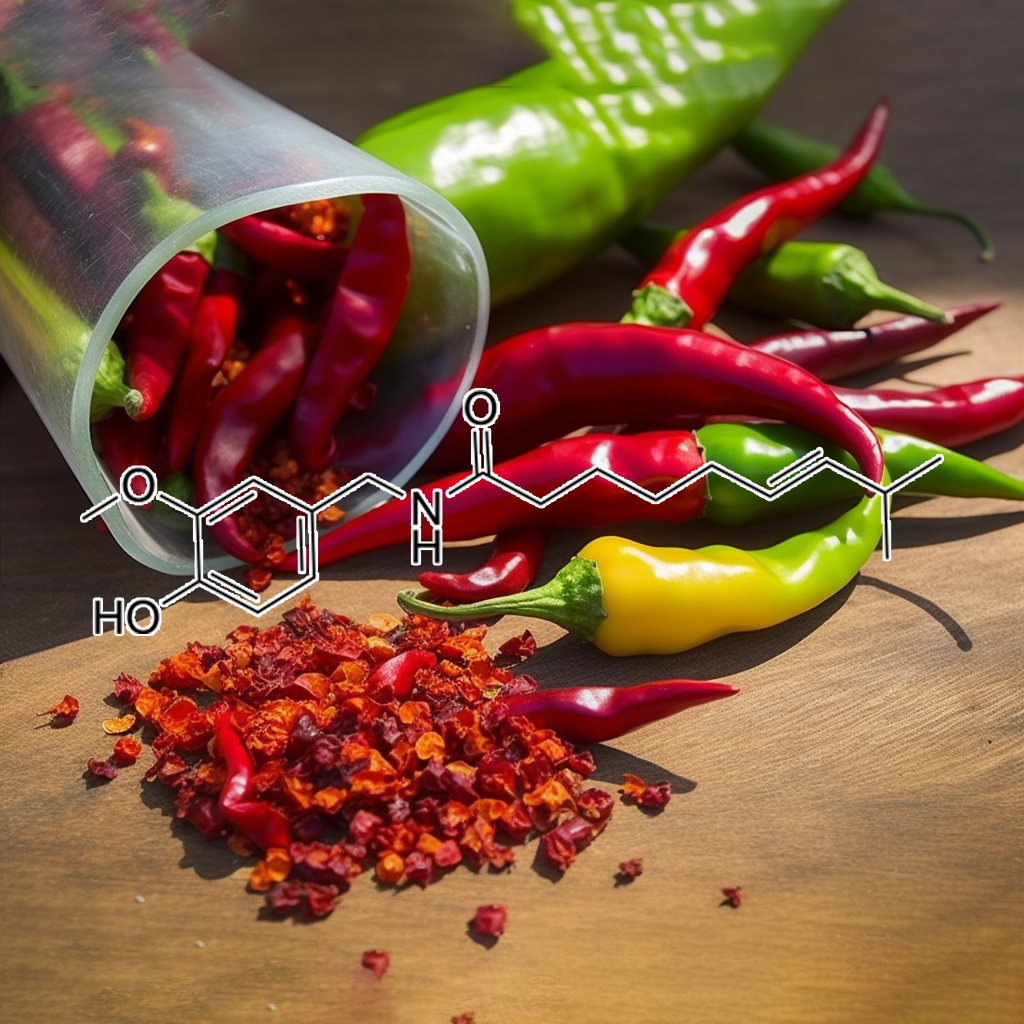
cis-capsaicin (civamide)
- Civamide (Cis-Capsaicin) For Treatment Of Primary Or Recurrent Experimental Genital Herpes
- Cytotoxicity, Antiviral And Antimicrobial Activities Of Alkaloids, Flavonoids, And Phenolic Acids
- Herpes Simplex virus : Drug Resistance And New Treatment Options Using Natural Products
- Pharmacological Importance Of An Ethnobotanical Plant: Capsicum Annuum L.
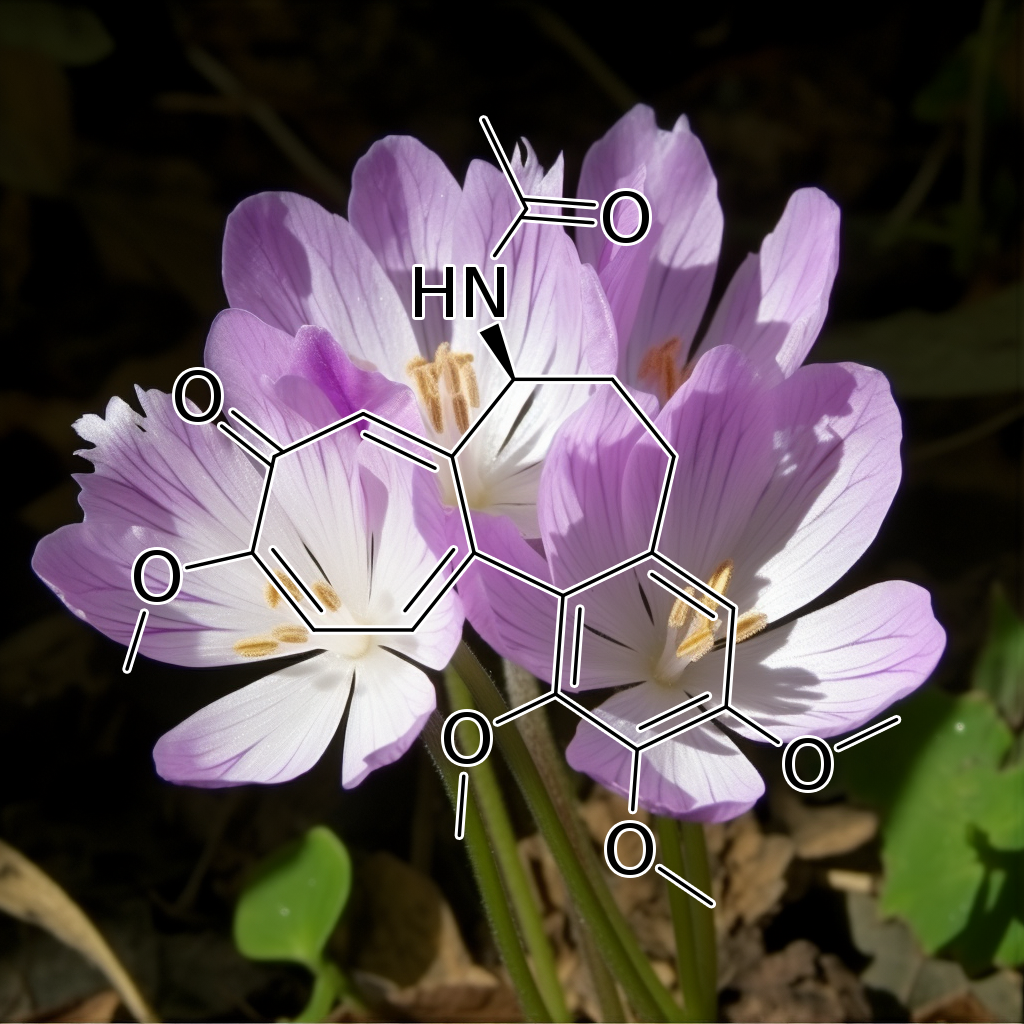
colchicine (Colchicum autumnale)
- An Overview Of Tubulin Inhibitors That Interact With The Colchicine Binding Site
- Colchicine–An Overview For Plant Biotechnologists
- Cytotoxicity, Antiviral And Antimicrobial Activities Of Alkaloids, Flavonoids, And Phenolic Acids
- Effects Of Mineral Nutrients On Physiological And Biochemical Processes Related To Secondary Metabolites Production In Medicinal Herbs
- Investigation Of Morphological And Anatomical Changes In Catharanthus Roseus (L.) G. Don Due To Colchicine Induced Polyploidy
- Morphological, Physiological, Cytological And Phytochemical Studies In Diploid And Colchicine-Induced Tetraploid Plants Of Echinacea Purpurea (L.)
- Plant-Derived Natural Product Research Aimed At New Drug Discovery
- Sensitive Detection Of Colchicine At A Glassy Carbon Electrode Modified With Magnetic Ionic Liquid/Cuo Nanoparticles/Carbon Nanofibers In Pharmaceutical And Plasma …
- Study Of The Mechanism Of Liver Injury Induced By Colchicin [J]
- Synthesis, Biological Evaluation, And Molecular Docking Of Combretastatin And Colchicine Derivatives And Their Hce1‐Activated Prodrugs As Antiviral Agents
- Tcm-Based New Drug Discovery And Development In China
- The Value Of Plants Used In Traditional Medicine For Drug Discovery.
- Topical Herbal Remedies For Treatment Of Joint Pain According To Iranian Traditional Medicine
- Tubulin Inhibitors Targeting The Colchicine Binding Site: A Perspective Of Privileged Structures
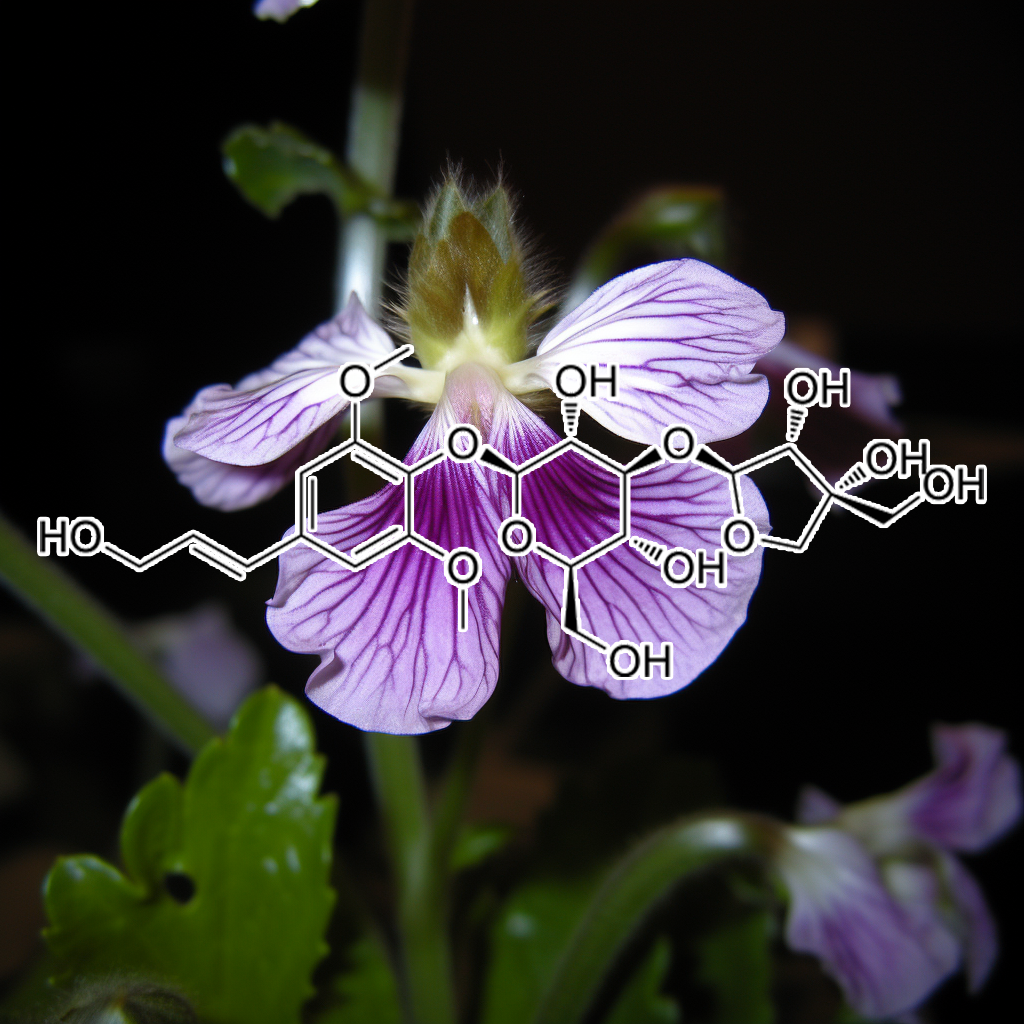
Cordifolioside A (Viola verecunda)
- A Review On Rasayana
- Antiviral Compound Screening, Peptide Designing, And Protein Network Construction Of Influenza A virus (Strain A/Puerto Rico/8/1934 H1N1)
- Herbal Immunomodulators-A Remedial Panacea For Designing And Developing Effective Drugs And Medicines: Current Scenario And Future Prospects
- Herbal Immunomodulors: A Review
- Identification Of Bio-Active Components In Leaf Extracts Of Aloe Vera, Ocimum Tenuiflorum (Tulasi) And Tinospora Cordifolia (Amrutballi)
- Indian Traditional Ayurvedic Treatment Regime For Novel Coronavirus , Covid-19
- Pharmacological Potential Of Tinospora Cordifolia (Willd.) Miers Ex Hook. & Thoms.(Giloy): A Review
- Prevention Of Hepatotoxicity Due To Anti Tuberculosis Treatment: A Novel Integrative Approach
- Review On Pharmacological Profile Of Medicinal Vine: Tinospora Cordifolia
- Tinospora Cordifolia: Ethnobotany, Phytopharmacology And Phytochemistry Aspects
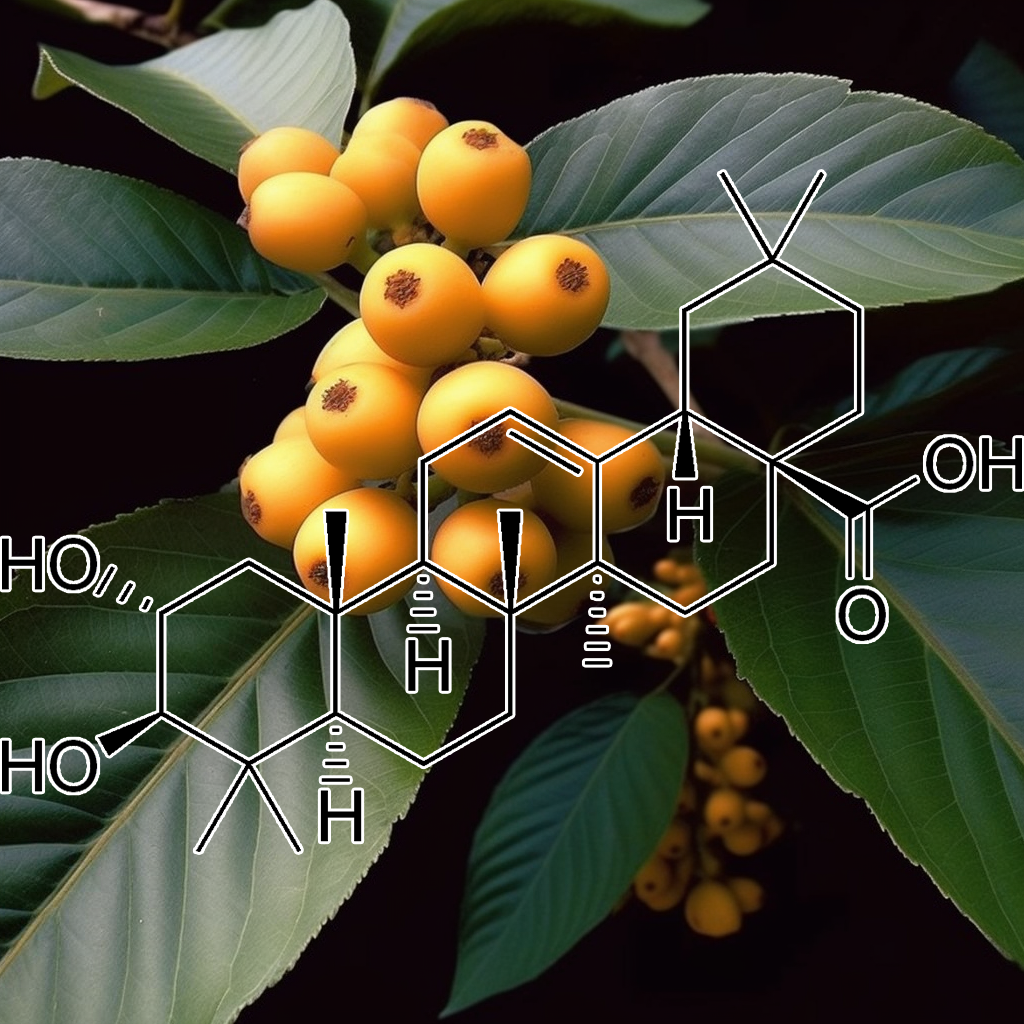
Crategolic acid (Loquat leaf)
- Anti-Inflammatory Actions Of Pentacyclic Triterpenes
- Eugenia Caryophyllata Thunberg (Family Myrtaceae): A Review
- In Silico Analysis Of Phytochemicals From Clove Against Bronchitis
- In Vitro Antiviral Activity Of Plant Extracts On Goatpox virus Replication
- Maslinic Acid, A Natural Phytoalexin-Type Triterpene From Olives—A Promising Nutraceutical?
- Profile Of Bioactive Compounds In Syzygium Cumini–A Review
- Purification And Characterization Of Antiviral Substance From The Bud Of Syzygium Aromatica
- Shortlisting Phytochemicals Exhibiting Inhibitory Activity Against Major Proteins Of Sars-Cov-2 Through Virtual Screening
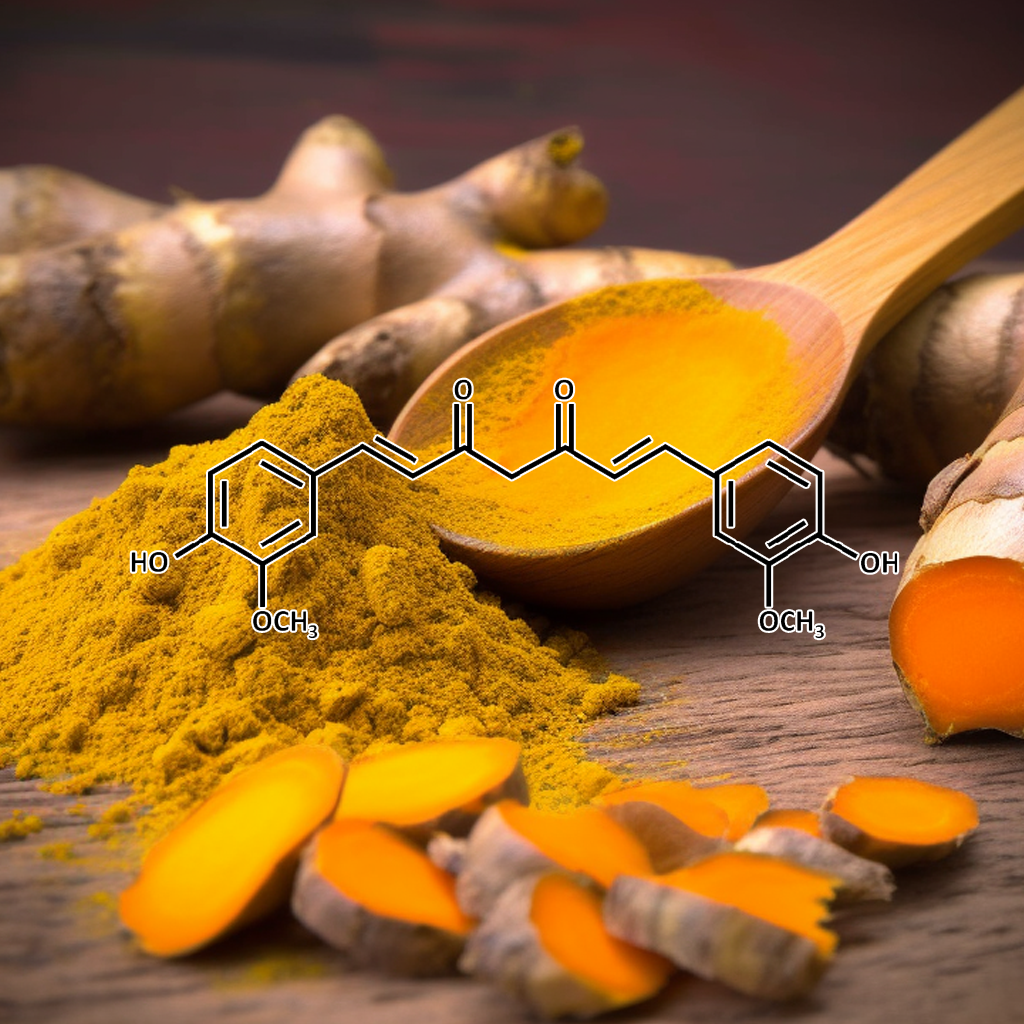
Curcumin (Turmeric Root)
- 3D-Quantitative Structure–Activity Relationship And Antiviral Effects Of Curcumin Derivatives As Potent Inhibitors Of Influenza H1N1 Neuraminidase
- A Review On Antibacterial, Antiviral, And Antifungal Activity Of Curcumin
- Antiviral Action Of Curcumin Encapsulated In Nanoemulsion Against Four Serotypes Of Dengue virus
- Antiviral Activity Of Chitosan Nanoparticles Encapsulating Curcumin Against Hepatitis C virus Genotype 4A In Human Hepatoma Cell Lines
- Antiviral Activity Of Curcumin Loaded Milk Proteins Nanoparticles On Potato virus Y.
- Antiviral Activity Of Curcumin-Nanoemulsion Associated With Photodynamic Therapy In Vulvar Cell Lines Transducing Different Variants Of Hpv-16
- Antiviral And Quantitative Structure Activity Relationship Study For Dihydropyridones Derived From Curcumin.
- Antiviral Carbon Dots: High Amplification Of The Antiviral Activity Of Curcumin Through Transformation Into Carbon Quantum Dots (Small 41/2019)
- Antiviral Potential Of Curcumin
- Co-Encapsulation Of Acyclovir And Curcumin Into Microparticles Improves The Physicochemical Characteristics And Potentiates In Vitro Antiviral Action: Influence Of The …
- Correction To Multisite Inhibitors For Enteric Coronavirus : Antiviral Cationic Carbon Dots Based On Curcumin
- Curcuma Longa Linn. A Phytochemical And Phytopharmacological Review
- Curcumin Against Hepatitis C virus Infection: Spicing Up Antiviral Therapies With ‘Nutraceuticals’?
- Curcumin Is An Ape1 Redox Inhibitor And Exhibits An Antiviral Activity Against Kshv Replication And Pathogenesis
- Curcumin Shows Antiviral Properties Against Norovirus
- Curcumin: Clinical Trial Finds No Antiviral Effect.
- Design And Development Of Curcumin Bioconjugates As Antiviral Agents
- virus -antiviral-ca”>Erratum: Multisite Inhibitors For Enteric Coronavirus : Antiviral Cationic Carbon Dots Based On Curcumin (Acs Applied Nano Materials (2018) 1: 10 (5451− 5459
- Evaluation Of Antiviral Activities Of Curcumin Derivatives Against Hsv-1 In Vero Cell Line
- High Amplification Of The Antiviral Activity Of Curcumin Through Transformation Into Carbon Quantum Dots
- Inhibitory Effect Of Curcumin On Imp Dehydrogenase, The Target For Anticancer And Antiviral Chemotherapy Agents
- Inhibitory Effect Of Herbal Remedies On 12-O-Tetradecanoylphorbol-13-Acetate-Promoted Epstein–Barr virus Early Antigen Activation
- Multisite Inhibitors For Enteric Coronavirus : Antiviral Cationic Carbon Dots Based On Curcumin
- Nutraceuticals In Gastrointestinal Disorders
- Phcog Mag: Plant Review Recent Trends In Curcuma Longa Linn
- Synergistic Antiviral Effect Of Curcumin Functionalized Graphene Oxide Against Respiratory Syncytial virus Infection
- Synthesis, Antibacterial And Antiviral Properties Of Curcumin Bioconjugates Bearing Dipeptide, Fatty Acids And Folic Acid
- The Antiviral Effects Of Curcumin Nanomicelles On The Attachment And Entry Of Hepatitis C virus
- The Investigation Of Antiviral Mechanisms Of Chitosan Nanoparticles Encapsulating Curcumin Against Hepatitis C virus Genotype–4A On Human Hepatoma Cell Lines
- Turmeric/Curcumin Benefits
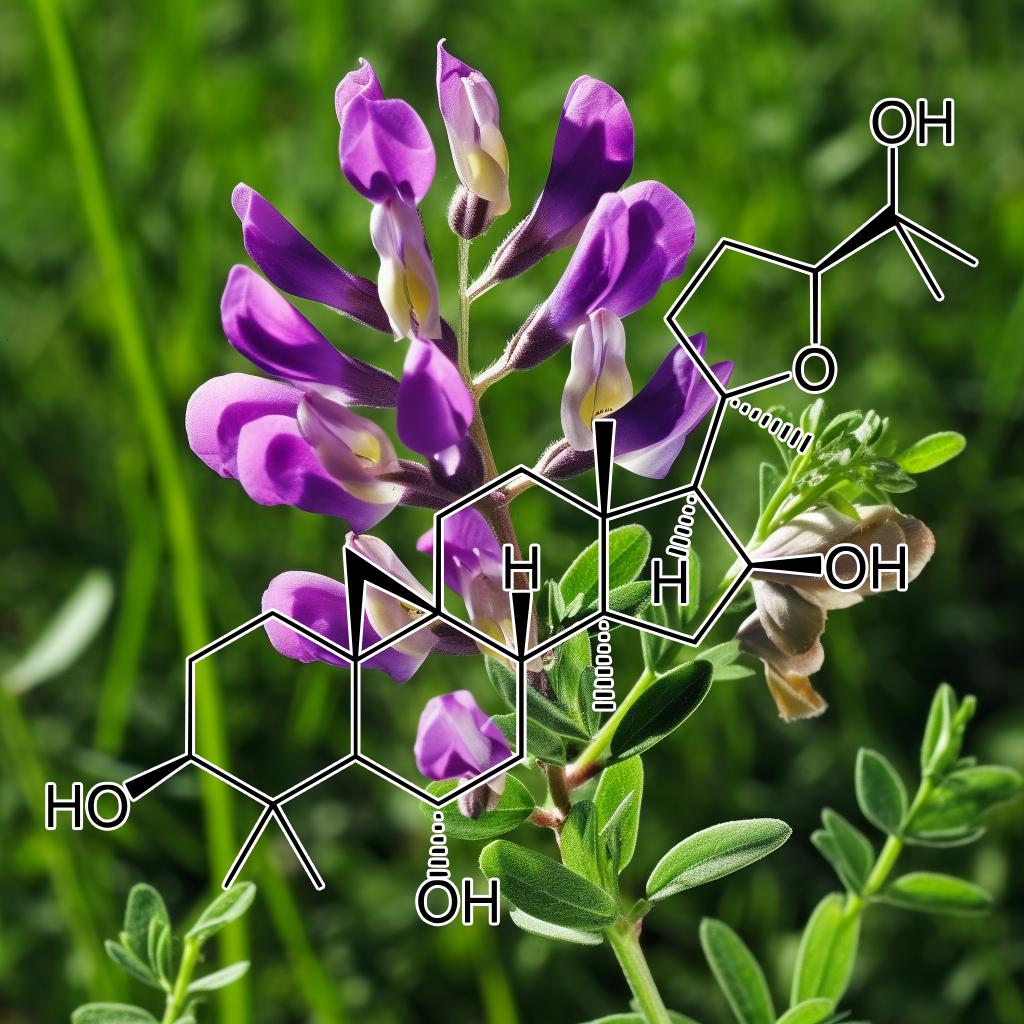
Cycloastragenol (Astragalus membranaceus)
- A Rapid Method For Sensitive Profiling Of Bioactive Triterpene And Flavonoid From Astragalus Mongholicus And Astragalus Membranaceus By Ultra-Pressure Liquid …
- Astragaloside Iv And Cycloastragenol Stimulate The Phosphorylation Of Extracellular Signal-Regulated Protein Kinase In Multiple Cell Types
- Astragaloside Iv Derived From Astragalus Membranaceus
- Astragalus Membranaceus: A Review Study Of Its Anti-Carcinoma Activities
- Biological Active Ingredients Of Traditional Chinese Herb Astragalus Membranaceus On Treatment Of Diabetes: A Systematic Review
- Cycloastragenol Is A Potent Telomerase Activator In Neuronal Cells: Implications For Depression Management
- Cycloastragenol, A Triterpene Aglycone Derived From Radix Astragali, Suppresses The Accumulation Of Cytoplasmic Lipid Droplet In 3T3-L1 Adipocytes
- Cycloastragenol: An Exciting Novel Candidate For Age‑Associated Diseases
- Enhanced Astragaloside Production And Transcriptional Responses Of Biosynthetic Genes In Astragalus Membranaceus Hairy Root Cultures By Elicitation With Methyl …
- Enzymatic Bioconversion Of Cycloastragenol-6-O-Β-D-Glucoside Into Cycloastragenol By A Novel Recombinant Β-Glucosidase From Phycicoccus Sp. Soil748
- Further Saponins And Flavonoids From Astragalus Verrucosus Moris
- Microbial Transformation Of The Anti-Aging Agent Cycloastragenol By Mucor Racemosus
- Optimization Of Astragalus Membranaceus Hairy Roots Induction And Culture Conditions For Augmentation Production Of Astragalosides
- Preventive Effects Of Astragaloside Iv And Its Active Sapogenin Cycloastragenol On Cardiac Fibrosis Of Mice By Inhibiting The Nlrp3 Inflammasome
- Smith Degradation, An Efficient Method For The Preparation Of Cycloastragenol From Astragaloside Iv
- Terpenoid And Flavonoid Biosynthesis In Astragalus Membranaceus
- The Role Of Astragalus Membranaceus As Immunomodulator In Poultry
- Triterpene Glycosides From Astragalus Icmadophilus
- Uv Elicitation For Promoting Astragaloside Production In Astragalus Membranaceus Hairy Root Cultures With Transcriptional Expression Of Biosynthetic Genes
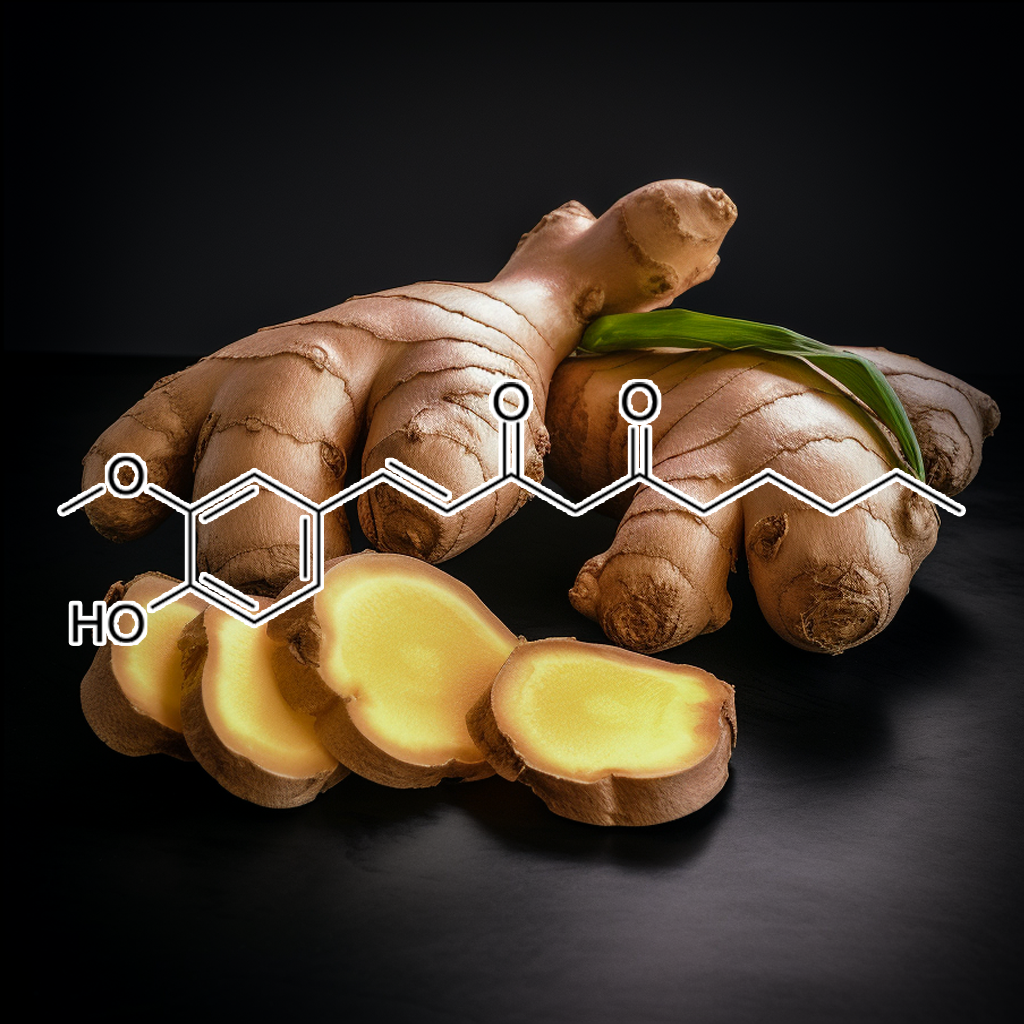
dehydrogingerdione (ginger extract)
- Ginger And Its Constituents: Role In Prevention And Treatment Of Gastrointestinal Cancer
- Review On Kukkiladhi Choornam Used In Traditional Medicine And Research Activities
Zingiber Officinale - Zingiber Officinale Rosc. (Zingiberaceae)
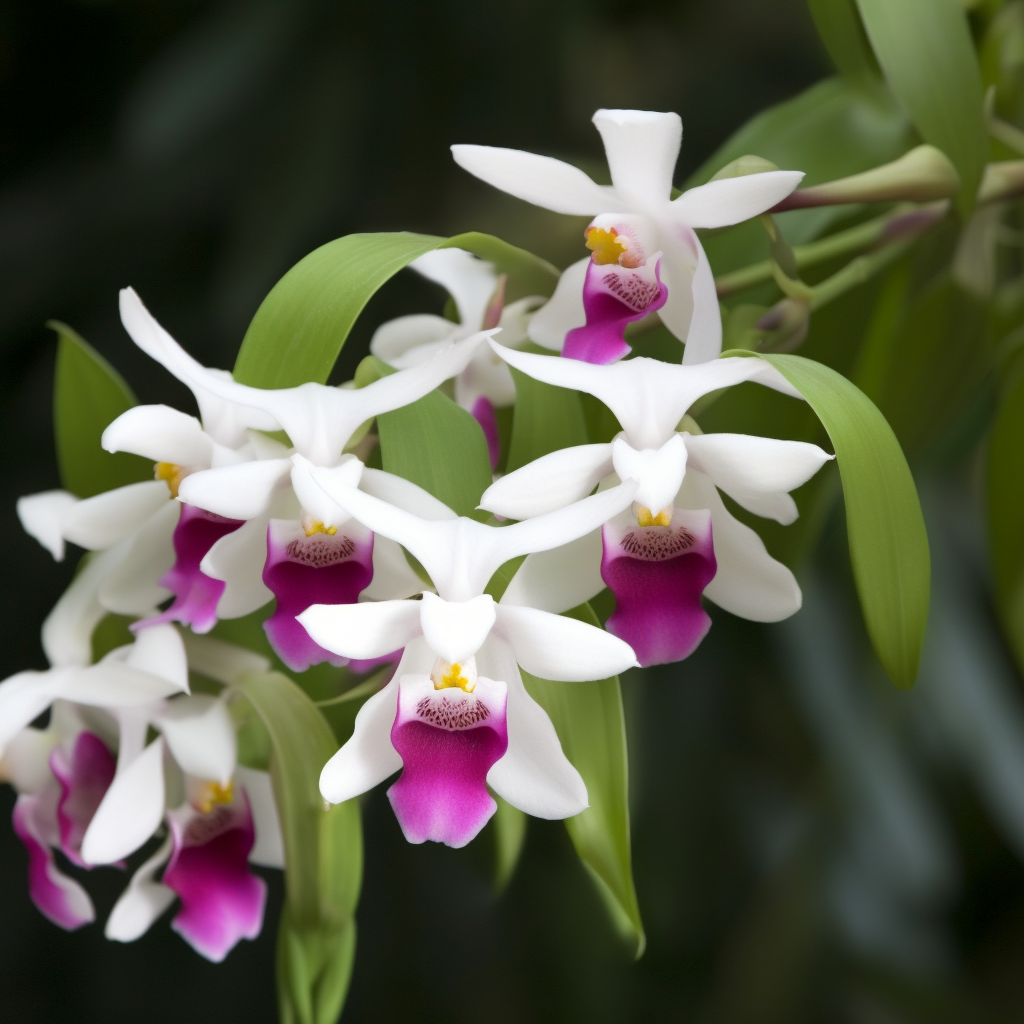
Dendrobium nobile
- A Polysaccharide Found In Dendrobium Nobile Lindl Stimulates Calcium Signaling Pathway And Enhances Tobacco Defense Against Tmv
A Review And Comment On The Current Situation Of 2019 Novel Coronavirus Prevention By Traditional Chinese Medicine - Anti-Aging Properties Of Dendrobium Nobile Lindl.: From Molecular Mechanisms To Potential Treatments
- Genetic Stability And Phytochemical Analysis Of The In Vitro Regenerated Plants Of Dendrobium Nobile Lindl., An Endangered Medicinal Orchid
- Naturally Potential Antiviral Agent Polysaccharide From Dendrobium Nobile Lindl
- The Natural Product Berberine Is A Human Prolyl Oligopeptidase Inhibitor
- The Structure-Activity Relationship And Molecular Mechanism Of Anti-Tumor Polysaccharide Isolated From Dendrobium Nobile Lindl.

Demethoxycurcumin
- A Transcriptomic Analysis Of Turmeric: Curcumin Represses The Expression Of Cholesterol Biosynthetic Genes And Synergizes With Simvastatin
- Curcuma Longa Linn. A Phytochemical And Phytopharmacological Review
- Extraction Of Curcumin From Turmeric Roots
- Role Of Curcumin In Idiopathic Pulmonary Arterial Hypertension Treatment: A New Therapeutic Possibility
- Turmeric, The Golden Spice: From Traditional Medicine To Modern Medicine
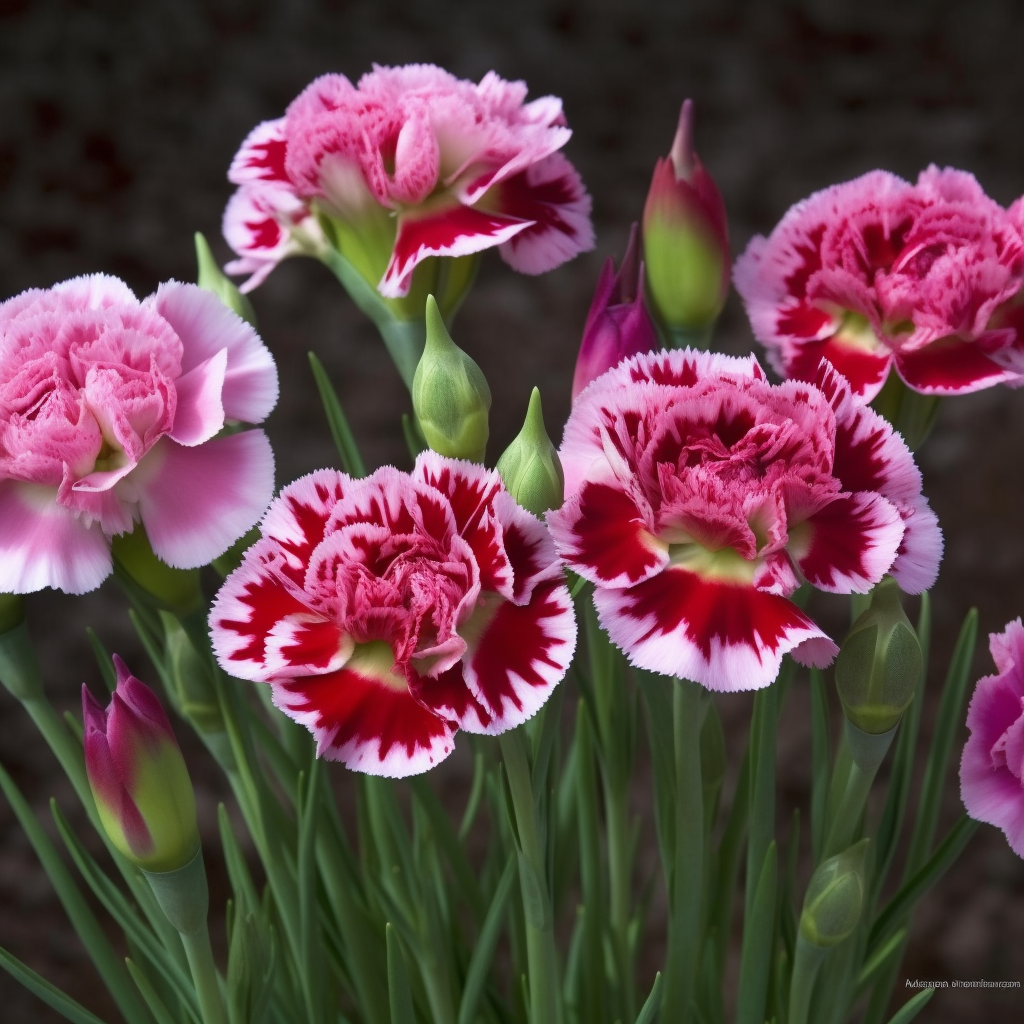
Dianthus caryophyllus
- Chemical Contents And Medical Importance Of Dianthus Caryophyllus-A Review
- Dianthus Species (Carnation): In Vitro Culture And The Biosynthesis Of Dianthalexin And Other Secondary Metabolites
- Expression Of Flavonoid 3′, 5′-Hydroxylase And Acetolactate Synthase Genes In Transgenic Carnation: Assessing The Safety Of A Nonfood Plant
- Induction Of Plant virus Resistance: 2. Leaf Extract From Carnation Plants (Dianthus Caryophyllus L.) As Inducer Of Resistance
- Potency Of Plant Products In Control Ofvirus Diseases Of Plants
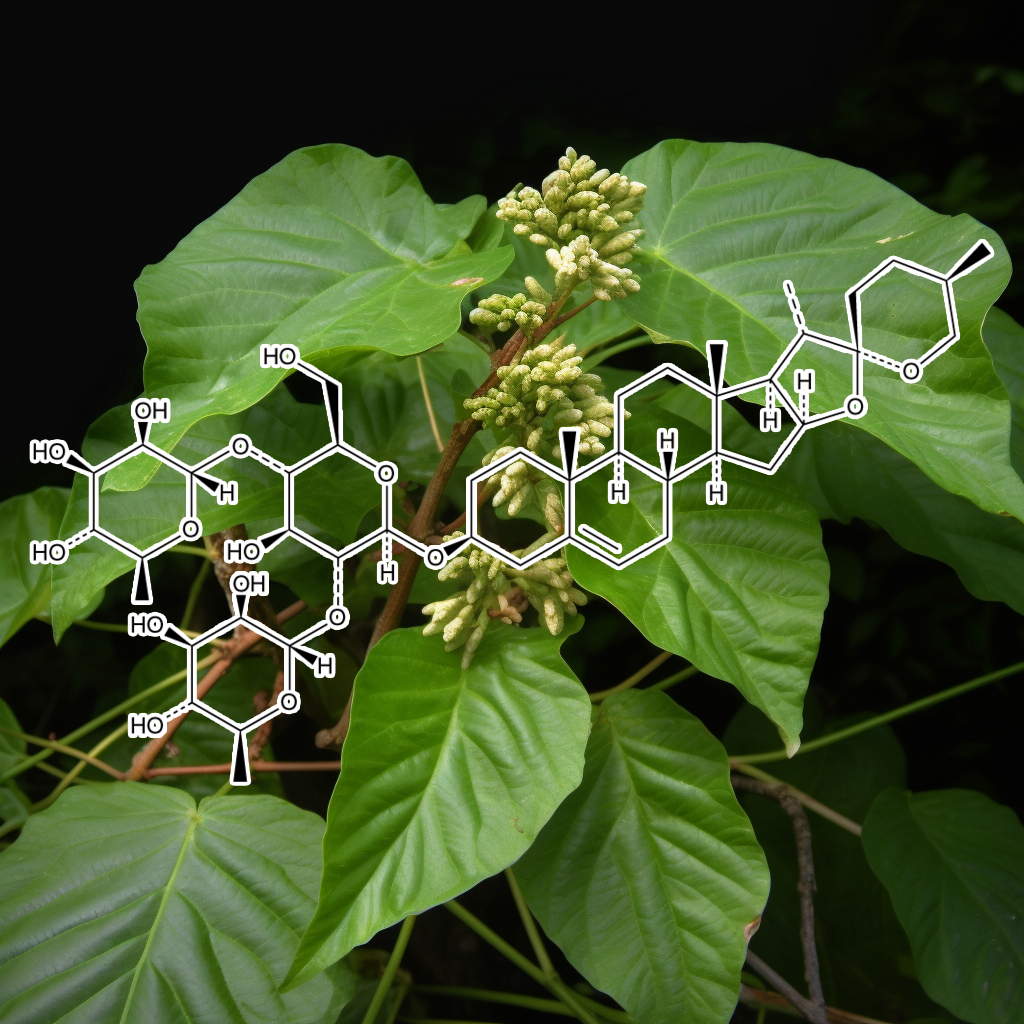
Dioscin (Dioscorea oppositae)
- A Boost To The Antiviral Activity: Cholesterol Tagged Peptides Derived From Glycoprotein B Of Herpes Simplex virus Type I
- A Cholesterol Tag At The N Terminus Of The Relatively Broad-Spectrum Fusion Inhibitory Peptide Targets An Earlier Stage Of Fusion Glycoprotein Activation And Increases The …
- Addition Of A Cholesterol Group To An Hiv-1 Peptide Fusion Inhibitor Dramatically Increases Its Antiviral Potency
- Assembled Dopamine Nanolayers Wrapped Carbon Nanotubes As Carbon-Carbon Bi-Functional Nanocatalyst For Highly Efficient Oxygen Reduction Reaction And Antiviral …
- Baseline Cholesterol Is Associated With The Response To Antiviral Therapy In Chronic Hepatitis C
- Capturing A Fusion Intermediate Of Influenza Hemagglutinin With A Cholesterol-Conjugated Peptide, A New Antiviral Strategy For Influenza virus
- Characterization Of Cholesterol Targeting Antimicrobial Peptides And Assessment Of Their Antiviral Activity In Vitro
- Cholesterol Conjugation Potentiates The Antiviral Activity Of An Hiv Immunoadhesin
- Cholesterol Metabolism–Impact For Sars-Cov-2 Infection Prognosis, Entry, And Antiviral Therapies
- Dietary Cholesterol Intake Is Associated With Progression Of Liver Disease In Patients With Chronic Hepatitis C: Analysis Of The Hepatitis C Antiviral Long-Term Treatment …
- Dioscin Attenuates High‑Fat Diet‑Induced Insulin Resistance Of Adipose Tissue Through The Irs‑1/Pi3K/Akt Signaling Pathway
- Dioscin, A Steroidal Saponin Isolated From Dioscorea Nipponica, Attenuates Collagen-Induced Arthritis By Inhibiting Th17 Cell Response
- Dioscin: A Diverse Acting Natural Compound With Therapeutic Potential In Metabolic Diseases, Cancer, Inflammation And Infections
- Diosgenin, A Plant-Derived Sapogenin, Exhibits Antiviral Activity In Vitro Against Hepatitis C virus
- Diosgenin, A Steroid Saponin Constituent Of Yams And Fenugreek: Emerging Evidence For Applications In Medicine
- Dramatic Potentiation Of The Antiviral Activity Of Hiv Antibodies By Cholesterol Conjugation
- Effect Of An Antiviral And Vitamins A, C, D On Dopamine And Some Oxidative Stress Markers In Rat Brain Exposed To Ozone
- Effects Of Dioscin On Dna Methyltransferase 1 Protein Expression In Human Breast Cancer Cell Lines
- Engagement Of Cellular Cholesterol In The Life Cycle Of Classical Swine Fever virus : Its Potential As An Antiviral Target
- Ethnopharmacological Potential And Medicinal Uses Of Miracle Herb Dioscorea Spp.
- How Are Stat1 And Cholesterol Metabolism Associated In Antiviral Responses?
- Il28B Gene Polymorphism Is Correlated With Changes In Low‐Density Lipoprotein Cholesterol Levels After Clearance Of Hepatitis C virus Using Direct‐Acting Antiviral …
- Immunometabolic Effect Of Cholesterol In Hepatitis C Infection: Implications In Clinical Management And Antiviral Therapy
- Influence Of Basal Level Of The General Cholesterol On Efficacy Of Antiviral Therapy Of The Chronic Hepatitis With Peg-Interferon-Α 2B And Ribavirin
- Levels Of Some Antiviral Antibodies In Patients With Different Serum Content Of Total Cholesterol
- Lymphocyte Proliferation On Hypersensitivity Of Balb/C Mice After Given Ethanol Extract Tuber Of Dioscorea Alata L.
- Medicinal Aspect Of Saponins Shows Their Wide Range Of Pharmacological/Biological Activities
- Modulation Of Cell Proteome By 25-Hydroxycholesterol And 27-Hydroxycholesterol: A Link Between Cholesterol Metabolism And Antiviral Defense
- Modulation Of Macrophage Antiviral Responses By Lipin-2: Type I Interferon, Inflammasome And Cholesterol Homeostasis
- Original Contribution: Top 10 Botanical Ingredients In 2010 Anti‐Aging Creams
- P-040. Direct-Acting Antiviral Drugs Used In The Treatment Of Hcv Increase Cholesterol Levels
- Polyunsaturated Liposomes Are Antiviral Against Hepatitis B And C virus es And Hiv By Decreasing Cholesterol Levels In Infected Cells
- Porcine Reproductive And Respiratory Syndrome virus Nsp1Β And Nsp11 Antagonize The Antiviral Activity Of Cholesterol-25-Hydroxylase Via Lysosomal Degradation
- Potency Of Purple Yam (Dioscorea Alata L) As An Immunomodulatory Agent
- Skin Ageing: Natural Weapons And Strategies
- Synthesis And Biological Evaluation Of Novel 3-O-Tethered Triazoles Of Diosgenin As Potent Antiproliferative Agents
- Targeting Cellular Squalene Synthase, An Enzyme Essential For Cholesterol Biosynthesis, Is A Potential Antiviral Strategy Against Hepatitis C virus
- The Antiviral Effector Ifitm3 Disrupts Intracellular Cholesterol Homeostasis To Block viral Entry
- The Effect Of Antiviral Therapy On Serum Cholesterol Levels In Chronic Hepatitis C
- The Effect Of Wild Yam (Dioscorea Villosa) Tincture On Memory And Learning In Mice

Douchi (Sojae Praepatum)
- A Retrospective Study On Clinical Features Of And Treatment Methods For 77 Severe Cases Of Sars
- Bacillus Strains As Human Probiotics: Characterization, Safety, Microbiome, And Probiotic Carrier
- Comparative Evaluation Of Phenolic Profile, Antioxidative And Cytotoxic Activities Of Different Geranium Species
- Complementary And Alternative Medicine Is Expected To Make Greater Contribution In Controlling The Prevalence Of Influenza
- Effects Of Sodium Nitrite On Proliferation And Apoptosis On Human Hepatocarcinoma Cells
- Medical Applications Of Fermentation Technology
- Protective Effects Of Xiaoerchiqiaoqingre Granule On Children With Acute Upper Respiratory Tract Infection
- The Application Of Fermentation Technology In Traditional Chinese Medicine: A Review
- The Optimal Decoction Time Of Yinqiao Powder On Inhibit Influenza A virus Fm1 In Mice

Egcg (green tea extract)
- A Subacute Toxicity Evaluation Of Green Tea (Camellia Sinensis) Extract In Mice
- Amino-Functionalized Ordered Mesoporous Silica Sba-15, A Rapid And Efficient Adsorbent For The Adsorption Of (−)-Epigallocatechin Gallate From Green Tea Extract
- Anti‐Infective Properties Of Epigallocatechin‐3‐Gallate (Egcg), A Component Of Green Tea
- Anti-Invasive Effects Of Green Tea Polyphenol Epigallocatechin-3-Gallate (Egcg), A Natural Inhibitor Of Metallo And Serine Proteases
- Antimicrobial Potential Of Epigallocatechin-3-Gallate (Egcg): A Green Tea Polyphenol
- Antioxidant And Antiviral Activities Of Lipophilic Epigallocatechin Gallate (Egcg) Derivatives
- Antiviral Activity Of Alginate-Oleic Acid Based Coatings Incorporating Green Tea Extract On Strawberries And Raspberries
- Antiviral Activity Of Green Tea Catechins Against Feline Calicivirus As A Surrogate For Norovirus
- Antiviral Effect Of Catechins In Green Tea On Influenza virus
- Antiviral Effect Of Epigallocatechin Gallate (Egcg) On Influenza A virus
- Antiviral Effect Of Tea Catechin Egcg On Influenza virus Fm1 Strain In Vitro
- Antiviral Mechanism Of Action Of Epigallocatechin-3-O-Gallate And Its Fatty Acid Esters
- Comparison Of In Vitro Antiviral Activity Of Tea Polyphenols Against Influenza A And B virus es And Structure–Activity Relationship Analysis
- Delineation Of Antimutagenic Activity Of Catechin, Epicatechin And Green Tea Extract
- Development Of New Antioxidant Active Packaging Films Based On Ethylene Vinyl Alcohol Copolymer (Evoh) And Green Tea Extract
- Epigallocatechin Gallate, A Constituent Of Green Tea, Represses Hepatic Glucose Production
- Epigallocatechin Gallate, A Constituent Of Green Tea, Suppresses Cytokine-Induced Pancreatic Β-Cell Damage
- Evaluation Of Antiviral Effect Of Epigallocatechin Gallate, Epigallocatechin, Epicatechin Gallate And Green Tea Extract Against Fowl Adenovirus -4
- Evaluation Of Green Tea Extract As A Safe Personal Hygiene Against viral Infections
- Evaluation Of The Antiviral Activity Of A Green Tea Solution As A Hand-Wash Disinfectant
- Fostering The Antiviral Activity Of Green Tea Extract For Sanitizing Purposes Through Controlled Storage Conditions
- Green Tea Extract And Its Major Component Epigallocatechin Gallate Inhibits Hepatitis B virus In Vitro
- Green Tea Extract And Its Major Polyphenol (−)-Epigallocatechin Gallate Improve Muscle Function In A Mouse Model For Duchenne Muscular Dystrophy
- Green Tea Extract For Periodontal Health
- Green Tea Polyphenol, Epigallocatechin-3-Gallate, Possesses The Antiviral Activity Necessary To Fight Against The Hepatitis B virus Replication In Vitro
- Green Tea: A Promising Natural Product In Oral Health
- In Vitro Evaluation Of The Antiviral Activity Of The Synthetic Epigallocatechin Gallate Analog-Epigallocatechin Gallate (Egcg) Palmitate Against Porcine Reproductive And …
- Multiple Antiviral Approaches Of (–)-Epigallocatechin-3-Gallate (Egcg) Against Porcine Reproductive And Respiratory Syndrome virus Infection In Vitro
- Of Influenza A virus Nuclear Antigen Production And Neuraminidase Activity By A Nutrient Mixture Containing Ascorbic Acid, Green Tea Extract And Amino Acids
- virus /sinecatechins-external-genital-warts/?add-to-cart=11221″>Sinecatechins 10% Ointment: A Green Tea Extract For The Treatment Of External Genital Warts
- Tea Catechins As A Potential Alternative Anti-Infectious Agent
- The Green Tea Catechin, Epigallocatechin Gallate Inhibits Chikungunya virus Infection
- The Green Tea Polyphenol, Epigallocatechin-3-Gallate (Egcg)—One Step Forward In Antiviral Therapy Against Hepatitis C virus
- The Role Of Green Tea Extract And Powder In Mitigating Metabolic Syndromes With Special Reference To Hyperglycemia And Hypercholesterolemia
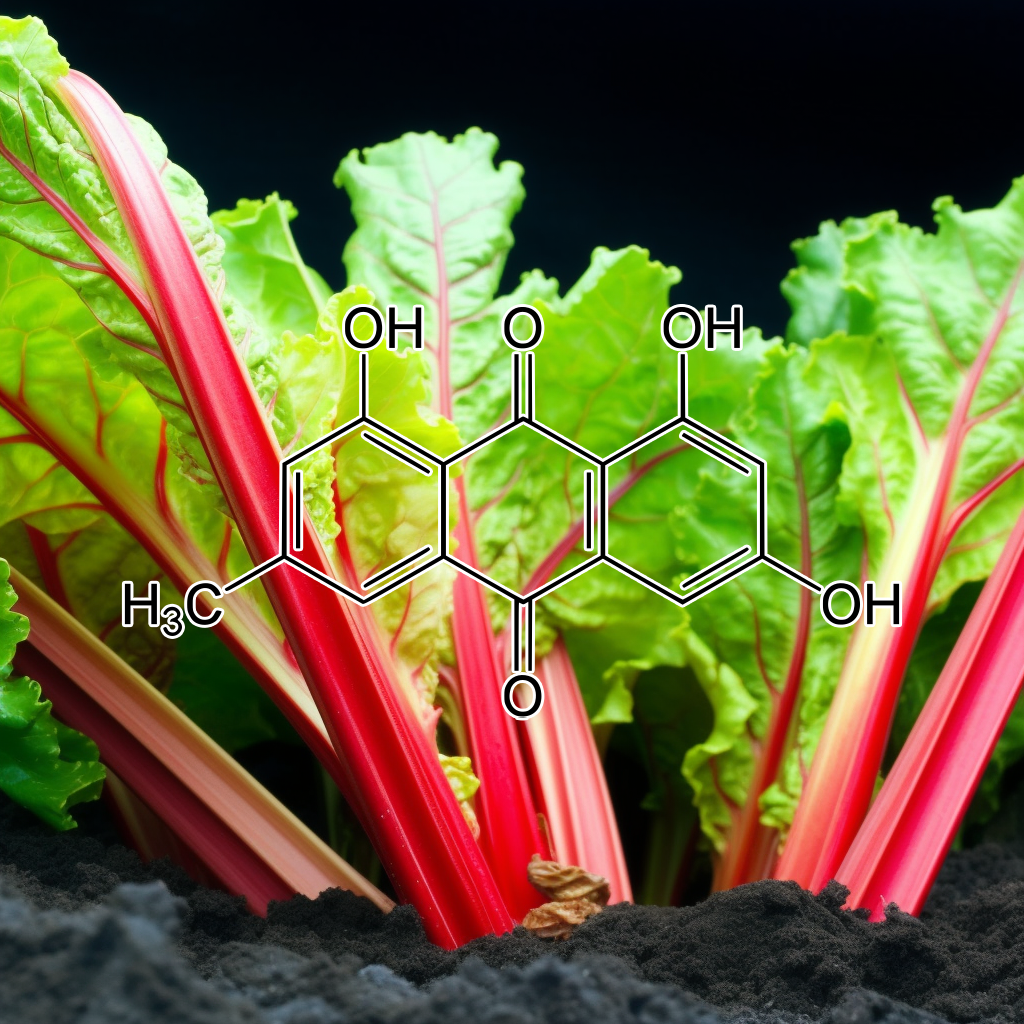
Emodin (Rhubarb extract)
- A Fruitful Decade From 2005 To 2014 For Anthraquinone Patents
- Advances In Bio-Active Constituents, Pharmacology And Clinical Applications Of Rhubarb
- Advantages Of Economic Cultivation Of The Genus Rheum Plants In The Republic Of Moldova
- Allelopathic Effect Of Rhubarb Extracts On The Growth Of Microcystis Aeruginosa
- Aloe-Emodin Is An Interferon-Inducing Agent With Antiviral Activity Against Japanese Encephalitis virus And Enterovirus 71
- Aloe-Emodin, Rhein And Emodin Determined By Liquid Chromatography–Mass Spectrometry After Oral Administration Of A Rhubarb Peony Decoction And Rhubarb Extract …
- Aloe‐Emodin: A Review Of Its Pharmacology, Toxicity, And Pharmacokinetics
- Antiviral Activity Of Aloe-Emodin Against Influenza A virus Via Galectin-3 Up-Regulation
- Antiviral Effect Of Emodin From Rheum Palmatum Against Coxsakievirus B_5 And Human Respiratory Syncytial virus In Vitro
- Antiviral Effect Of Emodin From Rheum Palmatum Against Coxsakievirus B5 And Human Respiratory Syncytial virus In Vitro
- Bidirectional Solid Fermentation Using Trametes Robiniophila Murr. For Enhancing Efficacy And Reducing Toxicity Of Rhubarb (Rheum Palmatum L.)
- Chemistry And Pharmacology Of Rhubarb (Rheum Species)— A Review
- Emodin Ameliorates Bleomycin-Induced Pulmonary Fibrosis In Rats By Suppressing Epithelial-Mesenchymal Transition And Fibroblast Activation
- Experimental Study On The Antiviral Action Of Emodin In Combination With Other Chinese Active Medicine Components On Coxsackie virus B_3 Replication
- Interaction Of Five Anthraquinones From Rhubarb With Human Organic Anion Transporter 1 (Slc22A6) And 3 (Slc22A8) And Drug–Drug Interaction In Rats
- Pharmacokinetics Of Anthraquinones In Rat Plasma After Oral Administration Of A Rhubarb Extract
- Purgative Herbs,”
- Simultaneous Determination Of Seven Anthraquinones In Rat Plasma By Ultra High Performance Liquid Chromatography–Tandem Mass Spectrometry And …
- Synthesis And Antiviral Activities Of Novel 1, 4-Pentadien-3-One Derivatives Bearing An Emodin Moiety
- Synthesis And Antiviral Activity Of Novel Thioether Derivatives Containing 1, 3, 4-Oxadiazole/Thiadiazole And Emodin Moieties
- The Experimental Study On Inhibition Effects Of Rhubarb Ethanol Extract On Measles virus Infection In Vitro
- The Inhibitory Effect Of Rheum Palmatum Against Coxsackievirus B3In Vitro And In Vivo

Eriodictyol (lemon extract)
- A Phytotherapic Formulation For Allergic Rhinitis In Autistic Children
- Antibacterial Activity Of Plant Extracts Against Foodborne Pathogenic Bacteria And Food Spoilage Bacteria
- Anti-Carcinogenic Effect Of Lemon & Lemon Products In Cancer Therapy: A Summary Of The Evidence
- Medical And Nutritional Aspects Of Citrus Bioflavonoids
- Use Of Natural Preservatives For Shelf Life Extension Of Fruit Juices
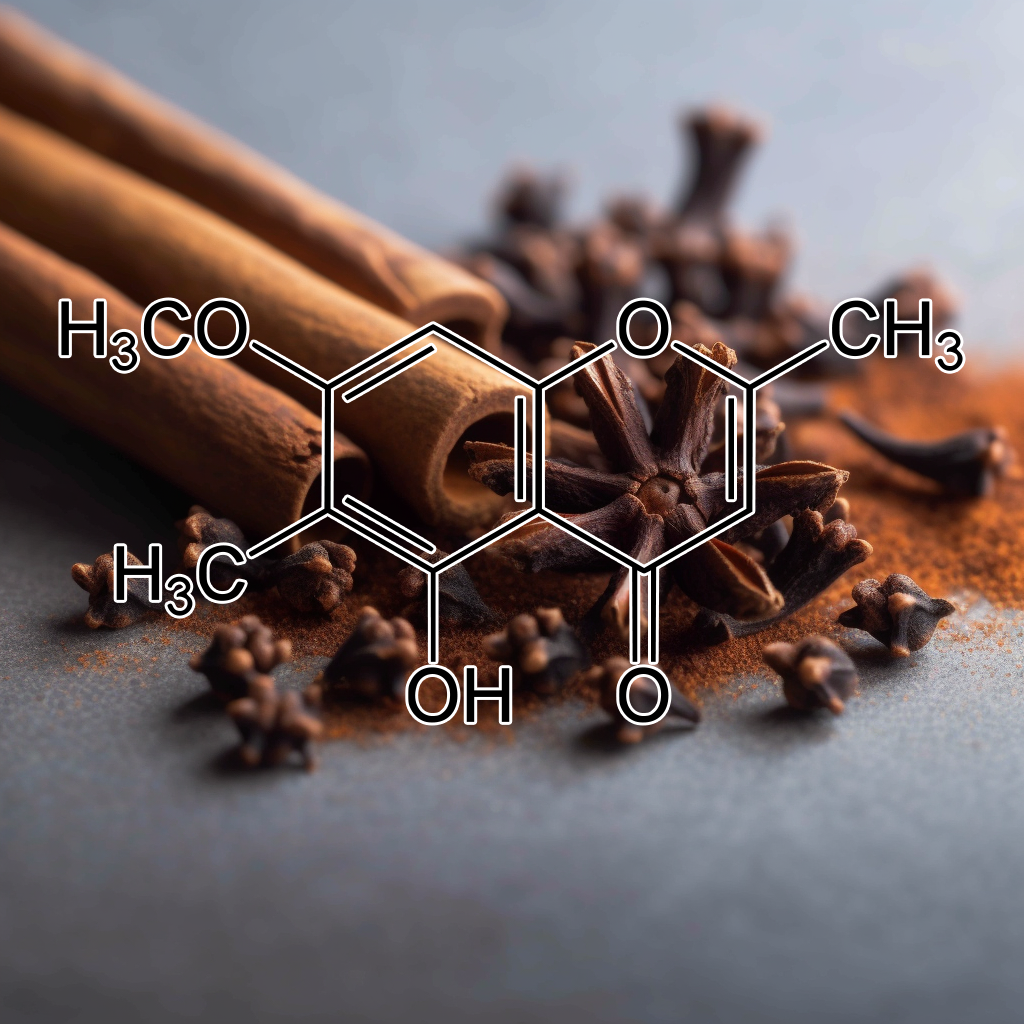
Eugenitin (clove extract)
- Clove Extract Inhibits Tumor Growth And Promotes Cell Cycle Arrest And Apoptosis
- Green Synthesis And Antibacterial Effects Of Aqueous Colloidal Solutions Of Silver Nanoparticles Using Clove Eugenol
- Green Synthesis Of Silver Nanoparticles By Using Eugenol And Evaluation Of Antimicrobial Potential
- Hepatoprotective Effect Of Methanolic Extract Of Syzygium Aromaticum Against Hydralazine Induced Toxicity: An In Vitro Study
- In Silico Analysis Of Phytochemicals From Clove Against Bronchitis

ferruginol (PodocarpuS ferruginea)
- Antibiofilm And Antiviral Potential Of Leaf Extracts From Moringa Oleifera And Rosemary (Rosmarinus Officinalis Lam.)
- Anti-Herpetic And Anti-Dengue Activity Of Abietane Ferruginol Analogues Synthesized From (+)-Dehydroabietylamine
- Antiviral Activity Of Phytochemicals: A Comprehensive Review
- Antiviral Effect Of Compounds Derived From Angelica Archangelica L. On Herpes Simplex virus -1 And Coxsackievirus B3 Infections
- Cucurbitacin B Interacts Synergistically With Antibiotics Against Staphylococcus Aureus Clinical Isolates And Exhibits Antiviral Activity Against Hsv-1
- Cytotoxic, Immunomodulatory, Antimycotic, And Antiviral Activities Of Semisynthetic 14-Hydroxyabietane Derivatives And Triptoquinone C-4 Epimers
- Diterpenes And Their Derivatives As Promising Agents Against Dengue virus And Dengue Vectors: A Literature‐Based Review
- Epicubenol And Ferruginol Induce Dc From Human Monocytes And Differentiate Il-10-Producing Regulatory T Cells In Vitro
- Foliage Oil Terpenes Of Prumnopitys Ferruginea (D. Don) Laubenf. Variation In Acorenone Levels
- Specific Plant Terpenoids And Lignoids Possess Potent Antiviral Activities Against Severe Acute Respiratory Syndrome Coronavirus
- Synthesis, Antiviral And Cytotoxic Activity Of Novel Terpenyl Hybrid Molecules Prepared By Click Chemistry
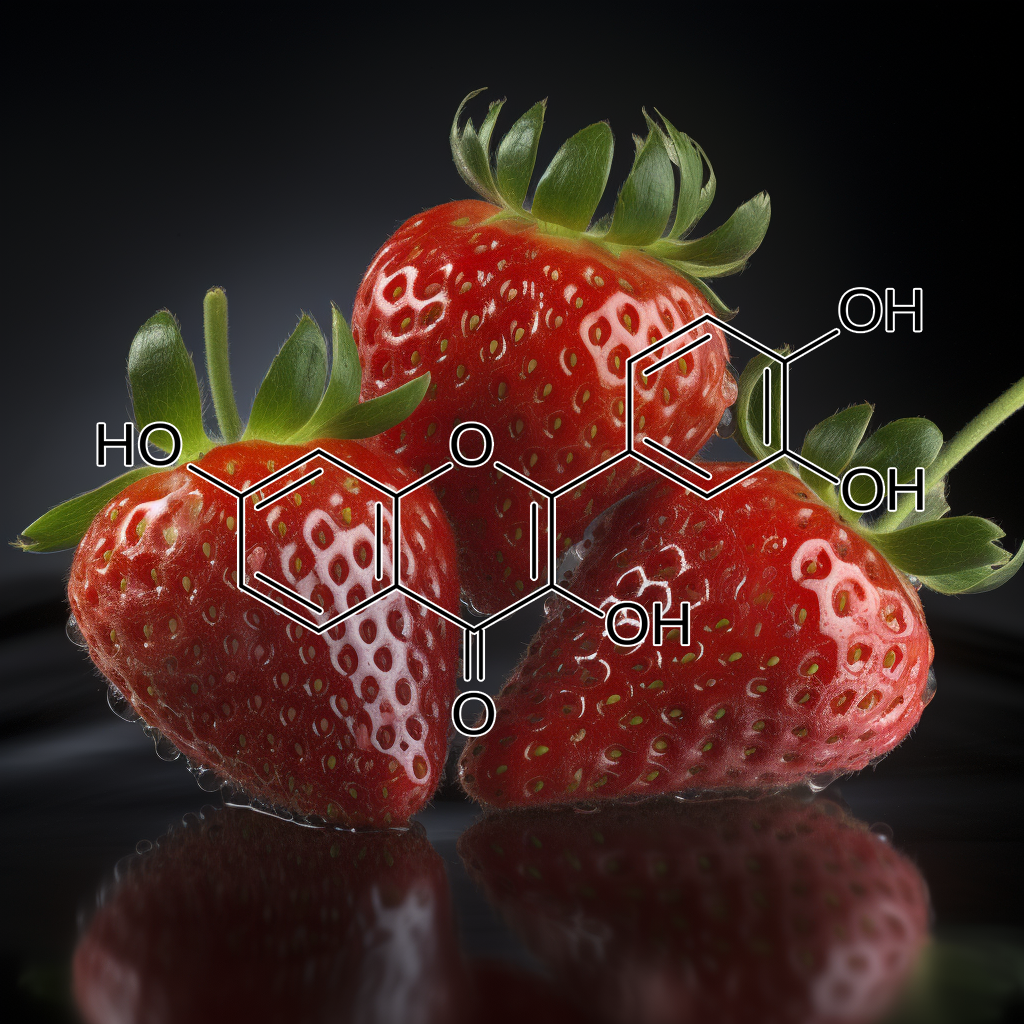
Fisetin (Rhus succedanea)
- Antifungal And Cytotoxicity Activities Of The Fresh Xylem Sap Of Hymenaea Courbaril L. And Its Major Constituent Fisetin
- Anti-Septic Effects Of Fisetin In Vitro And In Vivo
- Antiviral Activity Of Some Flavonoids On Herpes Simplex virus es
- Emerging Novel Drug Delivery Strategies For Bioactive Flavonol Fisetin In Biomedicine
- Ethnomedicines For The Development Of Anti-Herpesvirus Agent
- Fisetin As A Promising Antifungal Agent Against Cryptocococcus Neoformans Species Complex
- Fisetin Yeast-Based Bio-Capsules Via Osmoporation: Effects Of Process Variables On The Encapsulation Efficiency And Internalized Fisetin Content
- Flavone: An Important Scaffold For Medicinal Chemistry
- Flavonol-Rich Rvhxr From Rhus Verniciflua Stokes And Its Major Compound Fisetin Inhibits Inflammation-Related Cytokines And Angiogenic Factor In Rheumatoid Arthritic …
- In Vitro Antifungal Activity And Cytotoxicity Effects Of Fresh Xylem Sap Of Hymenaea Courbaril L. And Its Major Constituent Fisetin
- In Vitro Antiviral Activity Of Fisetin, Rutin And Naringenin Against Dengue virus Type-2
- Interference Of Fisetin With Targets Of The Nuclear Factor-Κb Signal Transduction Pathway Activated By Epstein-Barr virus Encoded Latent Membrane Protein 1.
- Study Of The Interaction Between Fisetin And Human Serum Albumin: A Biophysical Approach
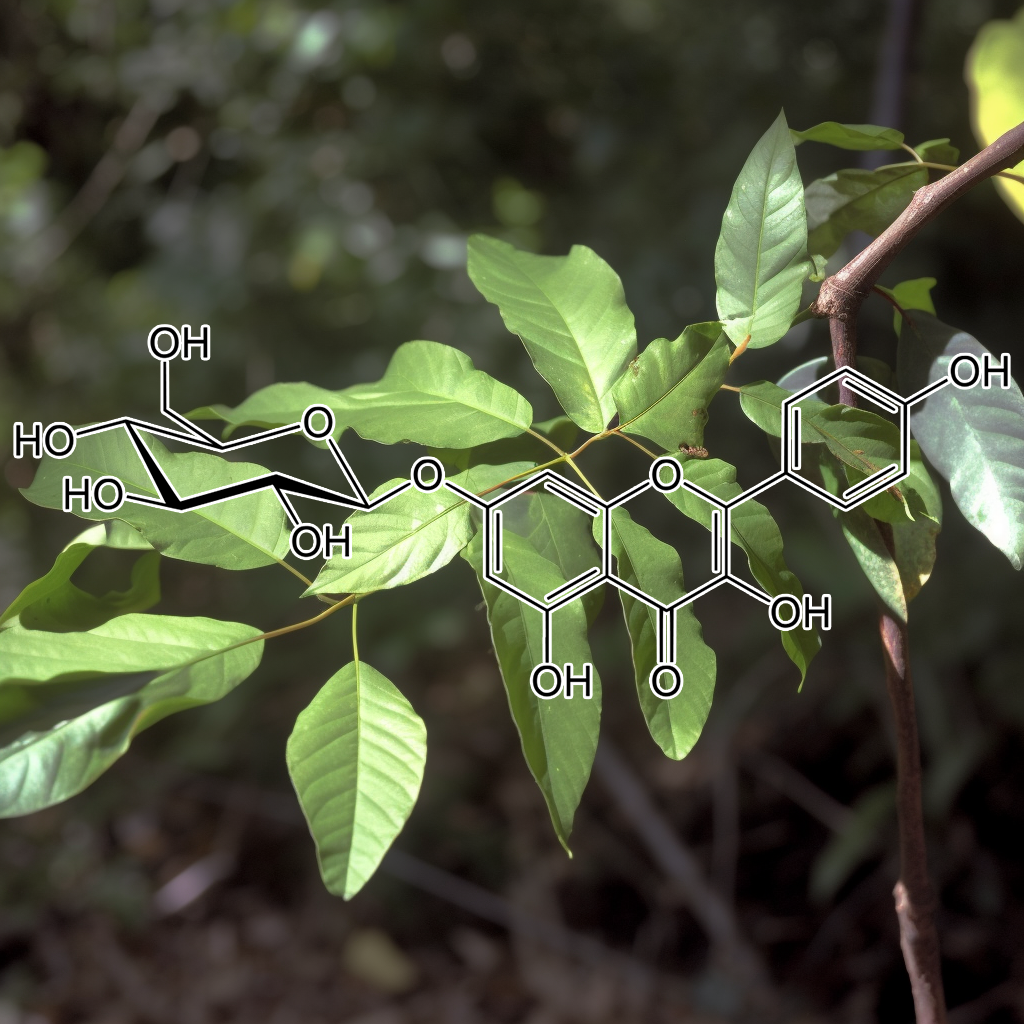
Flavonol glucoside (Trichilia connaroides)
- A Survey Of Plants With Anti-Hiv Active Compounds And Their Modes Of Action
- Absorption And Metabolism Of [2-14C] Quercetin-4′-Glucoside In Rats Ex Vivo And In Vitro
- Antioxidant And Cytotoxic Flavonoids From The Flowers Of Melastoma Malabathricum L.
- Extreme Effects Of Seabuckthorn Extracts On Influenza virus es And Human Cancer Cells And Correlation Between Flavonol Glycosides And Biological Activities Of …
- Flavonol Catabolism In Arabidopsis Thaliana: Subcellular Localization Of A Flavonol 3-O-Glucoside Beta-Glucosidase And Biochemical Evidence For A Flavonol …
- In Vitro Antiviral Activity Of Twenty-Seven Medicinal Plant Extracts From Southwest Nigeria Against Three Serotypes Of Echovirus es
- Lipase-Catalyzed Direct And Regioselective Acylation Of Flavonoid Glucoside For Mechanistic Investigation Of Stable Plant Pigments
- Localization Of Partially Methylated Flavonol Glucosides In Chrysosplenium Americanum: Immunogold Labeling
- The Flavonoid Isoquercitrin Precludes Initiation Of Zika virus Infection In Human Cells
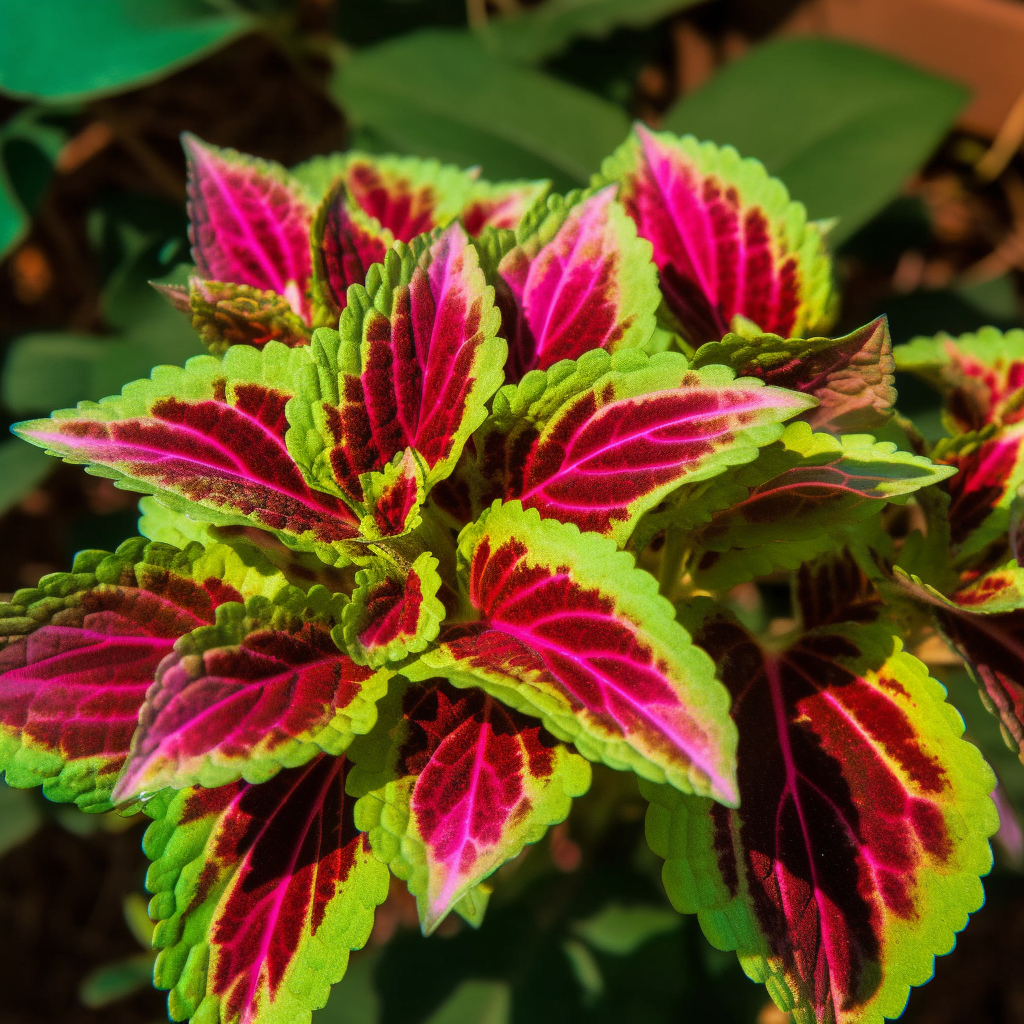
forskolin (Coleus Forskohlii)
- A Novel Method To Augment Extraction Of Mangiferin By Application Of Microwave On Three Phase Partitioning
- A Place Of Natural Safety
- Anticonvulsant Activity Of Extracts Of Plectranthus Barbatus Leaves In Mice
- Anti-Hiv Activity Of Indian Medicinal Plants
- Anti-Hiv Potential Of Medicinally Important Plants Rajandeep Kaur And Rajeev Kharb
- Arbuscular Mycorrhizal Symbiosis And Active Ingredients Of Medicinal Plants: Current Research Status And Prospectives
- B Radiation In Altering The Metabolite Profile, Essential Oil Content And Composition, And Free Radical Scavenging Activities Of Coleus Forskohlii, An Indigenous
- Bk virus Early Rna Transcripts In Stably Transformed Cells: Enhanced Levels Induced By Dibutyryl Cyclic Amp, Forskolin And 12-O-Tetradecanoylphorbol-13-Acetate …
- Cent Percent Safe Centum Plants For Antiobesity
- Cloning And Expression Analysis Of Chalcone Synthase Gene From Coleus Forskohlii
- Coleus Spp.: In Vitro Culture And The Production Of Forskolin And Rosmarinic Acid
- Complementary And Alternative Medicine In Asthma And Copd
- Cough Control The Natural Way
- C-Terminal Trans-Activation Sub-Region Of Vp16 Is Uniquely Required For Forskolin-Induced Herpes Simplex virus Type 1 Reactivation From Quiescently Infected …
- Distinct Effect Of Forskolin And Interferon-Γ On Cell Proliferation And Regulation Of Histocompatibility Antigen Expression In Hematopoietic Cells
- Enhanced Accumulation Of Scopoletin In Cell Suspension Culture Of Spilanthes Acmella Murr. Using Precursor Feeding
- Forskolin Ameliorates Scopolamine Induced Memory Impairment In Rats
- Forskolin Increases Propagation Of Influenza virus In Madin-Darby Canine Kidney Cells (Vac5P. 1118)
- Herpesvirus Quiescence In Neuronal Cells. V: Forskolin-Responsiveness Of The Herpes Simplex virus Type 1 Α0 Promoter And Contribution Of The Putative Camp Response …
- Immune-Regulatory Transcriptional Responses In Multiple Organs Of Atlantic Salmon After Tributyltin Exposure, Alone Or In Combination With Forskolin
- In Vitro Inhibition Of Esbl Positive Multidrug Resisting Uropathogenic Bacteria Using Coleus Forskohlii
- Increased Cyclic Amp Response To Forskolin In Epstein-Barr virus -Transformed Human B-Lymphocytes Derived From Schizophrenics
- Inhibition Of Tumor Cell Proliferation By Coleon C
- Inhibitory Effect Of Some Triterpenoid Saponins On Glucose Transport In Tumor Cells And Its Application To In Vitro Cytotoxic And Antiviral Activities
- Isolation, Identification And Bioactive Potential Of Bacterial Endophytes From Coleus
- Microwave-Assisted Extraction Of Forskolin From Coleus Roots And Its Purification By Adsorptive Separation Using Functionalized Polymer Designed By Molecular …
- Phytochemical And Molecular Analyses Of Some Coleus Cultivars Cultivated In Egypt
- Plant-Derived Natural Products In Drug Discovery And Development: An Overview
- Positive Inotropic Effect Of The Leaf Extracts Of Parent And Tissue Culture Plants Of Coleus Amboinicus On An Isolated Perfused Frog Heart Preparation
- Rosmarinic Acid Production By Coleus Forskohliihairy Root Cultures
- Studies On Phytochemical Analysis, Antioxidant And Lipid Peroxidation Inhibitory Effects Of A Medicinal Plant, Coleus Forskohlii
- Supplementary Figure S1. Neuronal Conversion In Response To Different Dosage Of Forskolin (Fsk). Tuj1+ Cells Were Examined 5 Days Post Treatment Of Imr-90
- V Coleus Spp.: In Vitro Culture And The Production
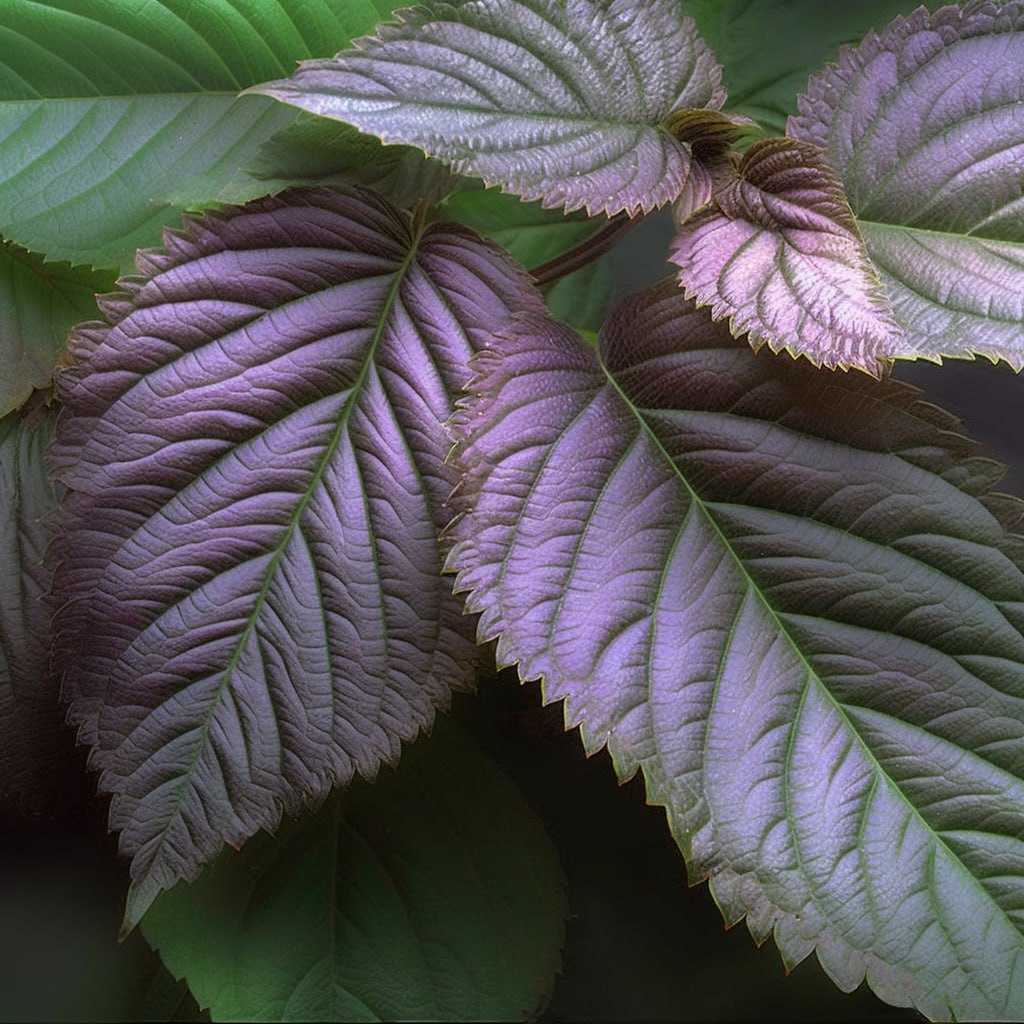
Fructus Perillae
- Chinese Medicinal Herbs For Childhood Pneumonia: A Systematic Review Of Effectiveness And Safety
- Ethnomedicinal, Phytochemical And Pharmacological Investigations Of Perilla Frutescens (L.) Britt.
- Improved Pulmonary Inflammation And Fibrosis Progression After Influenza A (H1N1) Infection By Chinese Herbal Medicine: A Case Report
- Utilization Of Chinese Medicine For Respiratory Discomforts By Patients With A Medical History Of Tuberculosis In Taiwan
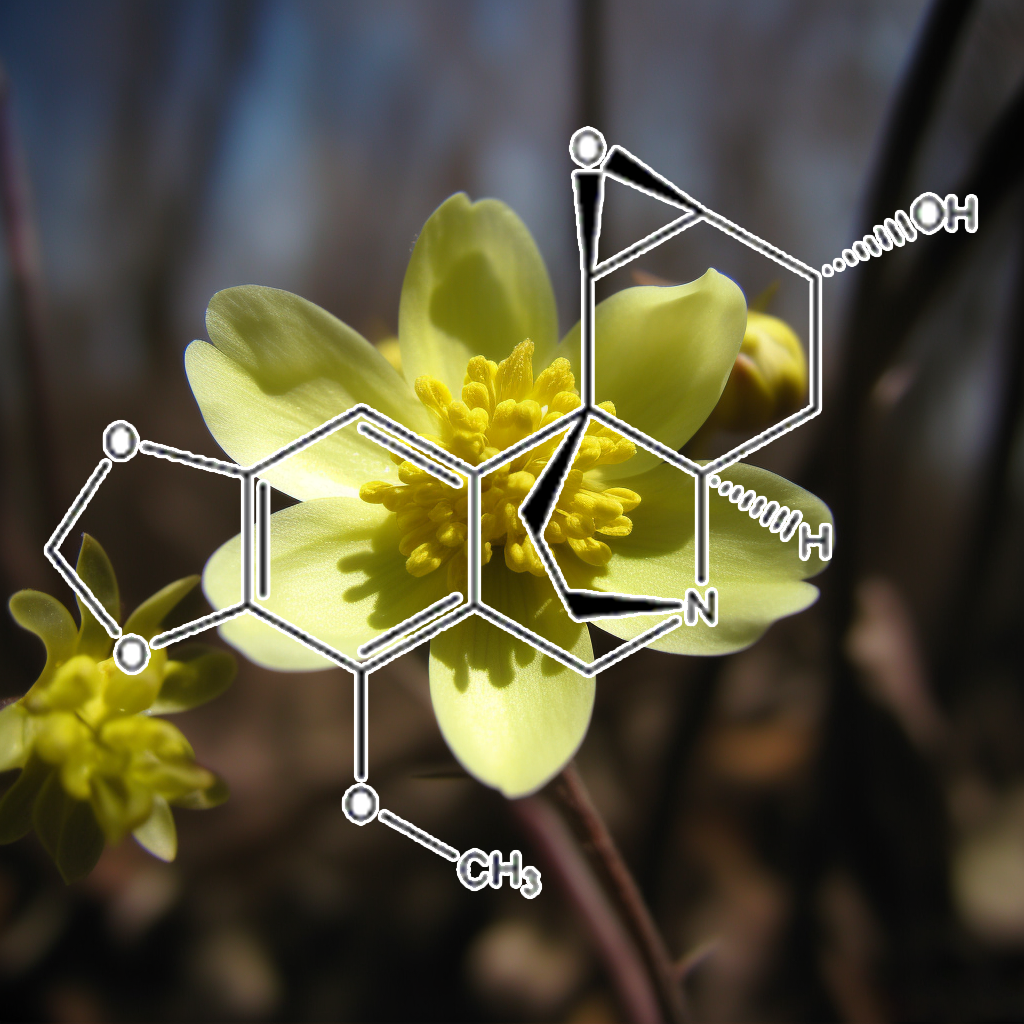
fumarophycine (Laptopyrum Reichb)
- A Perspective On The Anti-Infective Activity Of Goldenseal (Hydrastis Canadensis) And Its Contribution To The Development Of Multidrug Pump Inhibitors
- Anti-Hepatitis B Activity Of Isoquinoline Alkaloids Of Plant Origin
- Antiviral And Antimicrobial Evaluation Of Some Heterocyclic Compounds From Turkish Plants
- Antiviral And Antimicrobial Profiles Of Selected Isoquinoline Alkaloids From Fumaria And Corydalis Species
- Cytotoxicity, Antiviral And Antimicrobial Activities Of Alkaloids, Flavonoids, And Phenolic AcidsDegree Of Patient Satisfaction With Health Care Performance Assesed By Marketing
- SurveysEvaluation Of Antimicrobial Activity Of Some Medicinal Plant Extracts Grown On Gaza Strip (Palestine) Against Some Bacterial PathogensLead Compounds And Drug Candidates
- From Some Turkish Plants For Human HealthNatural Antiviral Compounds
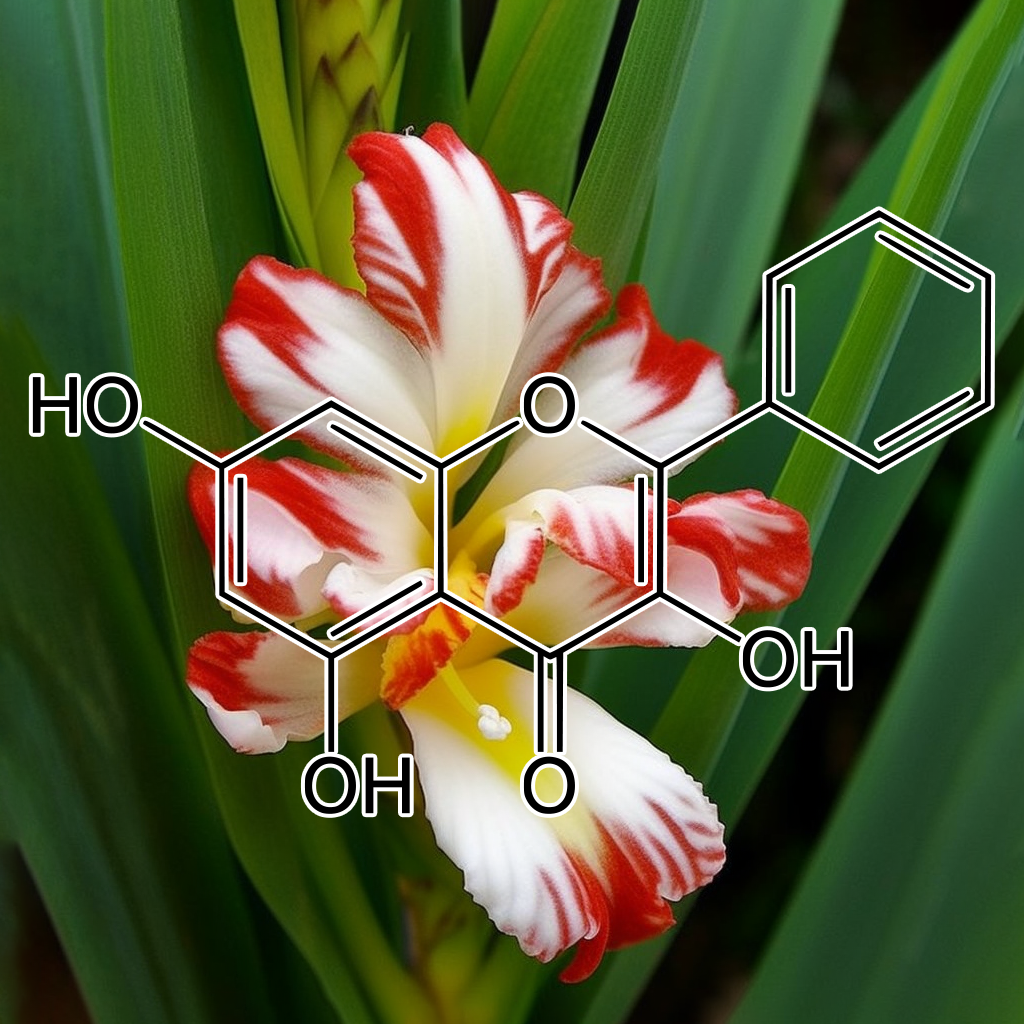
galangin (Alpinia officinarum)
- Analysis Of Potential Amino Acid Biomarkers In Brain Tissue And The Effect Of Galangin On Cerebral Ischemia
- Antifungal Activity Of Alpinia Officinarum Hance Against Candida Albicans
- Anti-Obesity Effects Of Galangin, A Pancreatic Lipase Inhibitor In Cafeteria Diet Fed Female Rats
- Antiviral Activity Of Galangin Isolated From The Aerial Parts Of Helichrysum Aureonitens
- Chemopreventive Mechanisms Of Galangin Against Hepatocellular Carcinoma: A Review
- Chromatographic Fingerprint Analysis And Quantitative Evaluate The Rhizomes Of Alpinia Officinarum Hance (Lesser Galangal)
- Comparative Pharmacokinetic Study Of Five Flavonoids In Normal Rats And Rats With Gastric Ulcer Following Oral Administration Of Mongolian Medicine, Shudage-4 By …
- Comparison Of Antioxidant Activity And Main Active Compounds Among Different Parts Of Alpinia Officinarum Hance Using High-Performance Thin Layer …
- Discrimination Of Two Cultivars Of Alpinia Officinarum Hance Using An Electronic Nose And Gas Chromatography-Mass Spectrometry Coupled With Chemometrics
- Galangin As A Plant Phenolic And Usage In Health And Disease
- Galangin Suppresses Renal Inflammation Via The Inhibition Of Nf-Κb, Pi3K/Akt And Nlrp3 In Uric Acid Treated Nrk-52E Tubular Epithelial Cells
- Galangin, A Dietary Flavonoid, Ameliorates Hyperglycaemia And Lipid Abnormalities In Rats With Streptozotocin-Induced Hyperglycaemia
- Galangin, A Dietary Flavonoid, Improves Antioxidant Status And Reduces Hyperglycemia-Mediated Oxidative Stress In Streptozotocin-Induced Diabetic Rats
- Galangin, A Natural Flavonoid Reduces Mitochondrial Oxidative Damage In Streptozotocin-Induced Diabetic Rats
- Growth Of A Human Mammary Tumor Cell Line Is Blocked By Galangin, A Naturally Occurring Bioflavonoid, And Is Accompanied By Down-Regulation Of Cyclins D3 …
- Protective Effect Of Galangin In Concanavalin A-Induced Hepatitis In Mice
- Qualitative Analysis Of Various Plant Extracts Of Alpinia Officinarum.
- Simultaneous Quantification Of Seventeen Bioactive Components In Rhizome And Aerial Parts Of Alpinia Officinarum Hance Using Lc-Ms/Ms
- Study On Extraction Technology Of Total Flavonoids From Alpinia Officinarum Hance
- Synergistic Effects Of The Combination Of Galangin With Gentamicin Against Methicillin-Resistant Staphylococcus Aureus
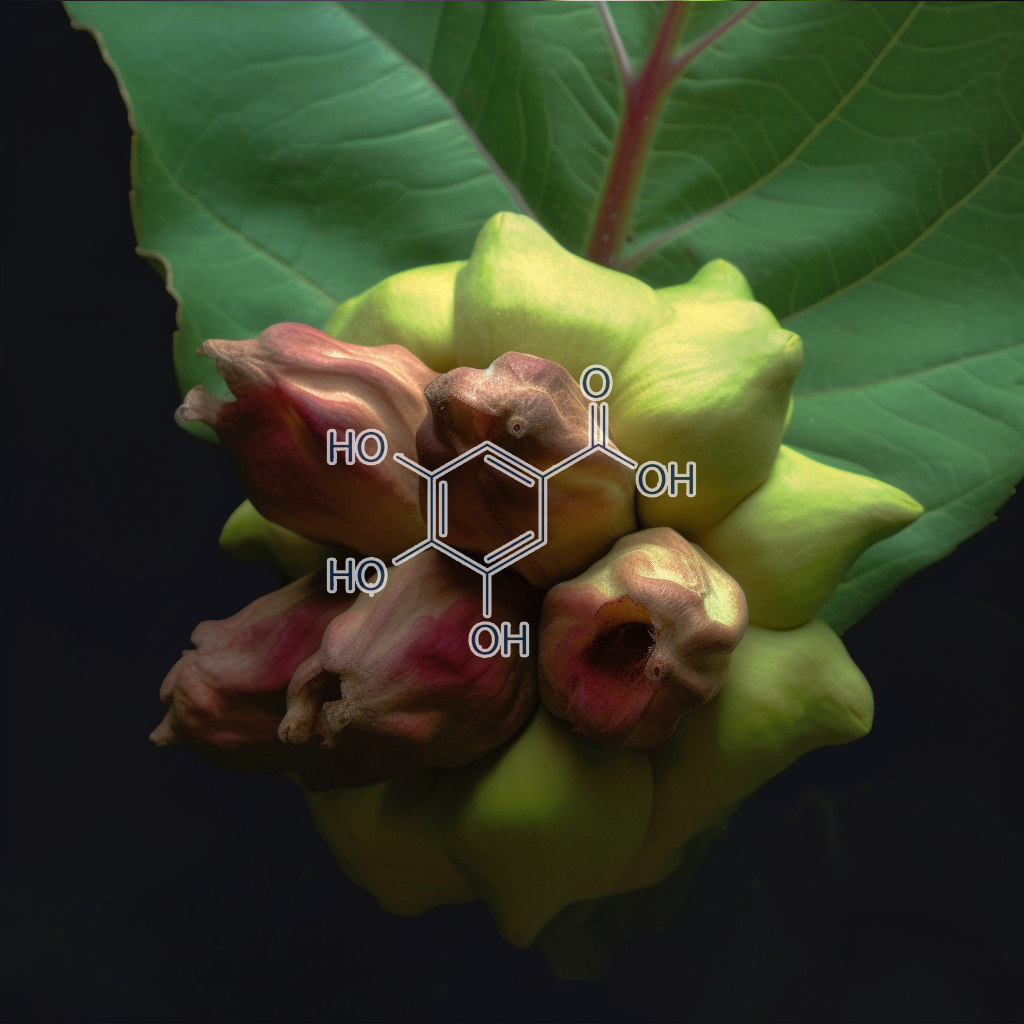
gallic acid (Rheumpalmatum)
- Antioxidant Activity And Total Phenolic Content Of Rheum Palmatum Roots
- Antioxidant Phenolic Constituents In Roots Of Rheum Officinale And Rubia Cordifolia: Structure−Radical Scavenging Activity Relationships
- Anti-Pandemic Influenza A (H1N1) virus Potential Of Catechin And Gallic Acid
- Antiviral Activity Of Gallic Acid Against Coxsackievirus B3 And Coxsackievirus B4
- Antiviral Effects Of Black Raspberry (Rubus Coreanus) Seed And Its Gallic Acid Against Influenza virus Infection
- Antiviral Effects Of Black Raspberry (Rubus Coreanus) Seed Extract And Its Polyphenolic Compounds On Norovirus Surrogates
- Application Of High‐Speed Counter‐Current Chromatography For The Isolation Of Antiviral Eremophilenolides From Ligularia Atroviolacea
- Bidirectional Solid Fermentation Using Trametes Robiniophila Murr. For Enhancing Efficacy And Reducing Toxicity Of Rhubarb
- Ethnopharmacologic Study Of Chinese Rhubarb
- Frangulosid As A Novel Hepatitis B virus Dna Polymerase Inhibitor: A Virtual Screening Study
- Gallic Acid Decreases Hepatitis C virus Expression Through Its Antioxidant Capacity
- In Silico Study Of Gallic Acid Derivatives As Novel Antiviral Agents Of Hepatitis C
- In Vitro Antioxidant Activity Of Sanguisorbae Radix Ethanol Extracts
- Ionic Liquid-Immobilized Nay Zeolite-Based Matrix Solid Phase Dispersion For The Extraction Of Active Constituents In Rheum Palmatum L.
- Limonium Sinense And Gallic Acid Suppress Hepatitis C virus Infection By Blocking Early viral Entry
- Limonium Sinense And Gallic Acid Suppress Hepatitis C virus Infection By Blocking Early viral Entry.
- Radix Et Rhizoma Rhei — Dahuang
- Reduction In Antiviral Activity Of Human Beta Interferon By Gallic Acid.
- Rumex Dentatus, Commelina Benghalensis, Ajuga Bracteosa, Ziziphus Mauritiana As Well As Their Compounds Of Gallic Acid And Emodin Against Dengue virus
- Screening And Analyzing The Potential Bioactive Components From Rhubarb, Using A Multivariate Data Processing Approach And Ultra-High Performance Liquid
- Screening Of Traditional Medicines For Their Inhibitory Activity Against Hiv‐1 Protease
- Significant Elevation Of Antiviral Activity Of Strictinin From Pu’Er Tea After Thermal Degradation To Ellagic Acid And Gallic Acid
- Two New Compounds From The Roots Of Rheum Palmatum
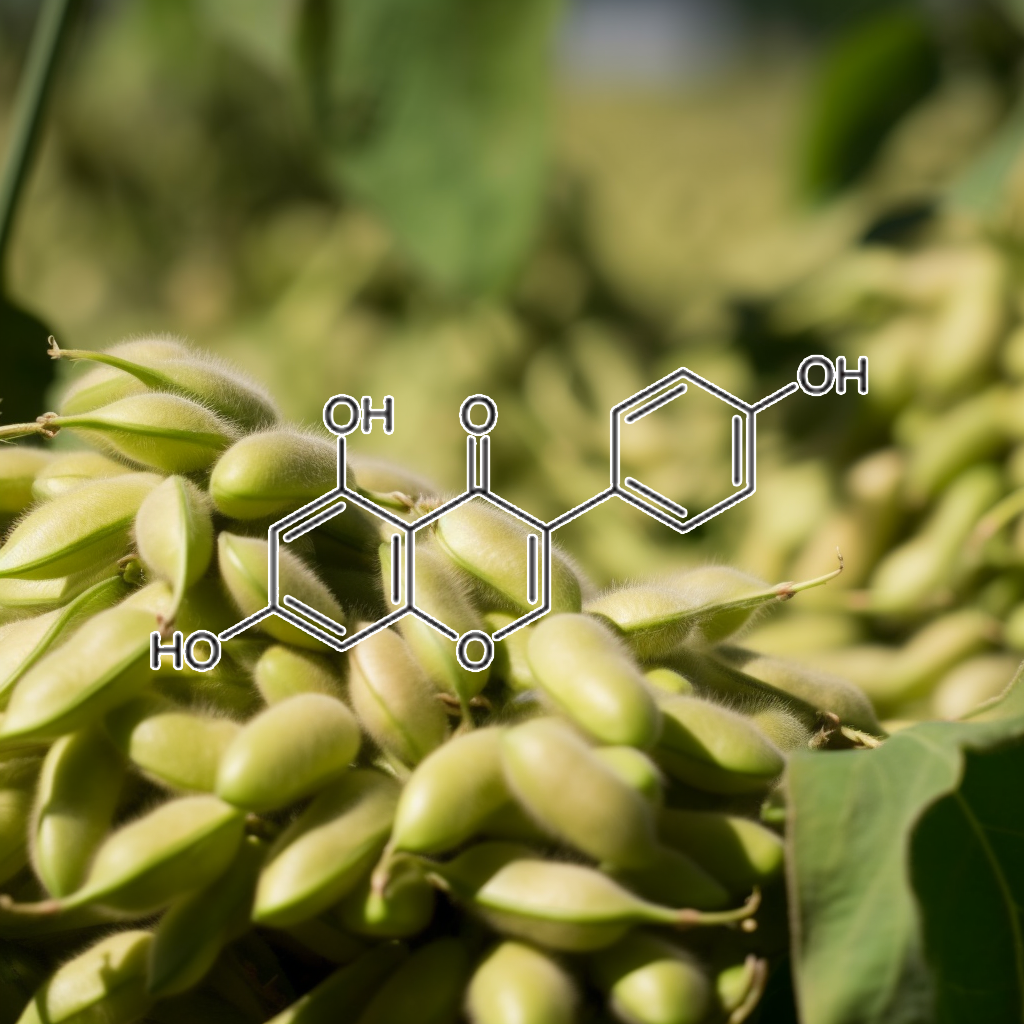
Genistein (Genista tinctoria)
- Anticarcinogenic Effects Of Isoflavones May Be Mediated By Genistein In Mouse Mammary Tumor virus -Induced Breast Cancer
- Genistein As Antiviral Drug Against Hiv Ion Channel
- Genistein Has Antiviral Activity Against Herpes B virus And Acts Synergistically With Antiviral Treatments To Reduce Effective Dose
- Genistein Inhibits African Swine Fever virus Replication In Vitro By Disrupting viral Dna Synthesis
- Genistein Inhibits The Replication Of Avian Leucosis virus Subgroup J In Df-1 Cells
- Genistein, A General Kinase Inhibitor, As A Potential Antiviral For Arenaviral Hemorrhagic Fever As Described In The Pirital virus -Syrian Golden Hamster Model
- Genistein, A Protein Tyrosine Kinase Inhibitor, Suppresses The Fusogenicity Of Moloney Murine Leukemia virus Envelope Protein In Xc Cells
- Human Immunodeficiency virus Type 1 Induction Mediated By Genistein Is Linked To Cell Cycle Arrest In G2
- Inhibition Of Herpes Simplex virus Replication By Genistein, An Inhibitor Of Protein-Tyrosine Kinase
- Inhibition Of Lassa virus And Ebola virus Infection In Host Cells Treated With The Kinase Inhibitors Genistein And Tyrphostin
- Inhibitory Effects Of Flavonoids On P-Glycoprotein In Vitro And In Vivo: Food/Herb-Drug Interactions And Structure–Activity Relationships
- Inhibitory Effects Of Genistein On Abnormal Changes Of Proliferation And Apoptosis Caused By Herpes Simplex virus -1 Infectiom In Human Glioma Cell
- The Reduction Of Nfkappab By Genistein In T Lymphoma Cell Lines Generated By Mink Cell Focus-Forming virus
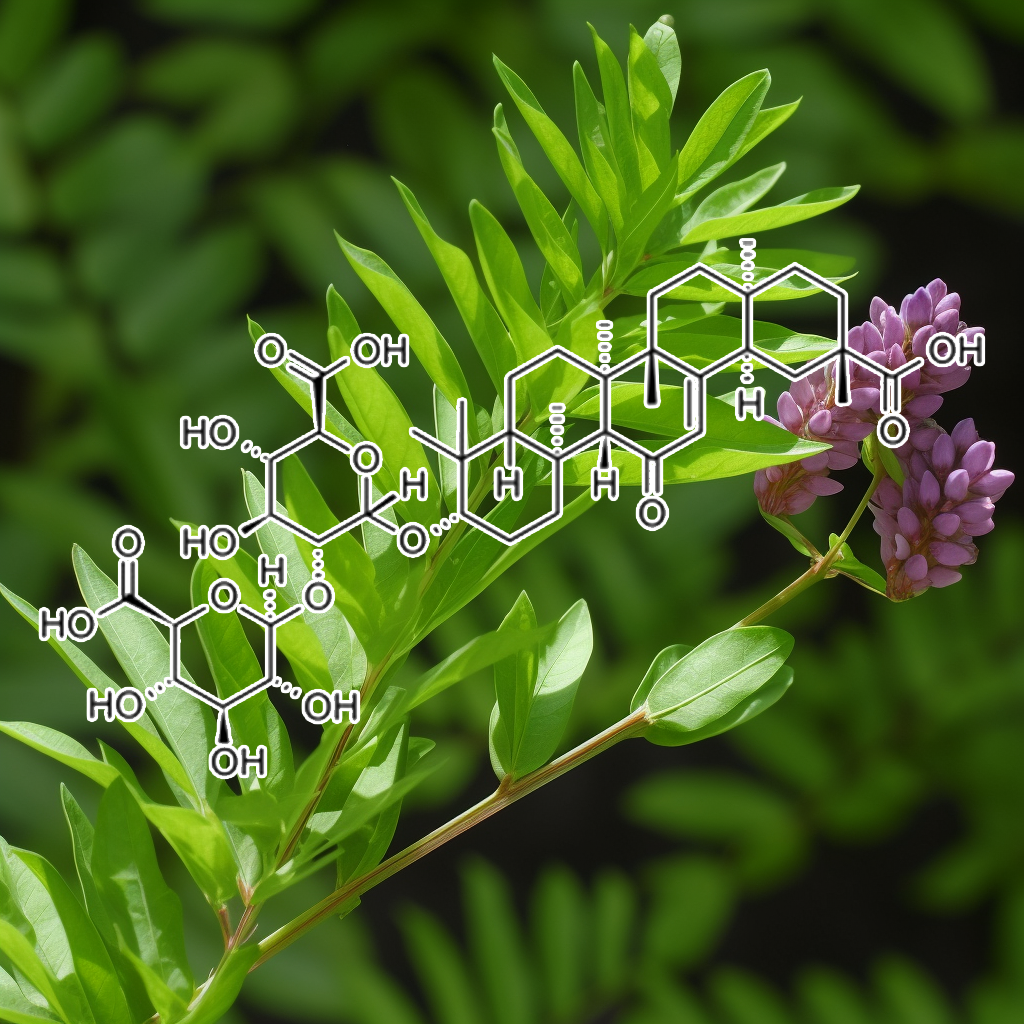
Glycyrrhizic acid (licorice root)
- Allicin And Glycyrrhizic Acid Display Antiviral Activity Against Latent And Lytic Kaposi Sarcoma-Associated Herpesvirus
- Antiviral Activity Of Glycyrrhizic Acid Derivatives Against Sars− Coronavirus
- Antiviral Carbon Dots: Glycyrrhizic‐Acid‐Based Carbon Dots With High Antiviral Activity By Multisite Inhibition Mechanisms (Small 13/2020)
- Antiviral Properties Of Glycyrrhizic Acid And Its Semisynthetic Derivatives.
- Effect Of A Combination Of Glutamyl-Tryptophan And Glycyrrhizic Acid On The Course Of Acute Infection Caused By Influenza (H3H2) virus In Mice
- Effects Of Glycyrrhiza Polysaccharide And Glycyrrhizic Acid On Cellular Infectivity Of Newcastle Disease virus To Chick Embryo Fibroblast
- Effects Of Glycyrrhizic Acid (Viusid-Vet® Powder) On The Reduction Of Influenza virus Spread And On Production Parameters In Pigs
- Glycyrrhizic Acid As The Antiviral Component Of Glycyrrhiza Uralensis Fisch. Against Coxsackievirus A16 And Enterovirus 71 Of Hand Foot And Mouth Disease
- Glycyrrhizic Acid Derivatives As Dengue virus Inhibitors
- Glycyrrhizic Acid Derivatives As Influenza A/H1N1 virus Inhibitors
- Glycyrrhizic Acid Inhibits Influenza virus Growth In Embryonated Eggs.
- Glycyrrhizic Acid Inhibits virus Growth And Inactivates virus Particles
- Glycyrrhizic Acid-Alpha-Glutamyltryptophan Against The Experimental Lethal Influenza Infection In White Mice Caused By The Oseltamivir-Resistant Strain Of The virus
- Glycyrrhizic‐Acid‐Based Carbon Dots With High Antiviral Activity By Multisite Inhibition Mechanisms
- In Vitro Antiviral Activity Of Indigenous Glycyrrhizin, Licorice And Glycyrrhizic Acid (Sigma) On Japanese Encephalitis virus .
- Inhibitory Effects Of Some Derivatives Of Glycyrrhizic Acid Against Epstein-Barr virus Infection: Structure–Activity Relationships
- Mechanism Of Action Of Glycyrrhizic Acid In Inhibition Of Epstein-Barr virus Replication In Vitro
- Prospects For The Creation Of New Antiviral Drugs Based On Glycyrrhizic Acid And Its Derivatives (A Review)
- Research Progress Of Glycyrrhizic Acid On Antiviral Activity
- Synthesis And Antiviral Activity Of 18Α-Glycyrrhizic Acid And Its Esters
- Synthesis And Antiviral Activity Of Glycyrrhizic-Acid Conjugates With Aromatic Amino Acids
- Synthesis And Antiviral Activity Of Novel Glycyrrhizic Acid Conjugates With D-Amino Acid Esters
- The Complex Glycyrrhizic Acid-Alpha-Glutamyl-Tryptophan Against Experimental Lethal Influenza Infection In White Mice Caused By Oseltamivir-Resistant Strain Of The virus
- The Synthesis And Antiviral Activity Of Glycyrrhizic Acid Conjugates With Α-D-Glucosamine And Some Glycosylamines
- Using Glycyrrhizic Acid To Target Sumoylation Processes During Epstein-Barr virus Latency
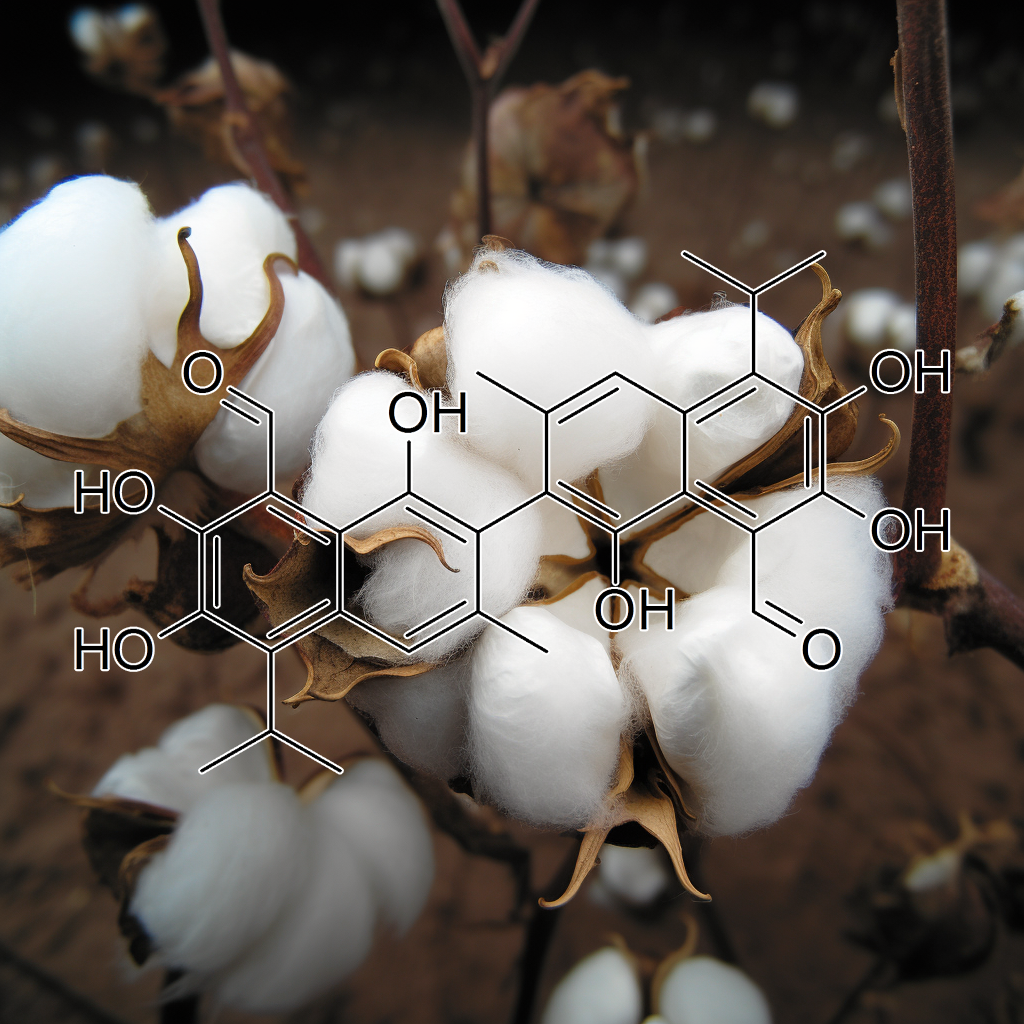
gossypol (cotton seed)
- Amino Acid Derivatives Of The (−) Enantiomer Of Gossypol Are Effective Fusion Inhibitors Of Human Immunodeficiency virus Type 1
- Antiviral Activities Of Gossypol And Its Derivatives Against Herpes Simplex virus Type Ii
- Antiviral Activity Of Gossypol And Apogossypol
- Antiviral Mechanism Study Of Gossypol And Its Schiff Base Derivatives Based On Reactive Oxygen Species (Ros)
- Gss (Gossypol-Beta-Aminoethylsodium Sulfate), In Combination With A Specific Vaccine In Experimental Infection With The Human Acute Encephalomyelitis virus
- Inactivation Of Human Immunodeficiency virus In Vitro By Gossypol
- Inhibiting Herpes Simplex virus Type 2 Infection In Human Epithelial Cells By Gossypol, A Potent Spermicidal And Contraceptive Agent.
- Inhibition Of Human Immunodeficiency virus Type I Replication By Derivatives Of Gossypol
- Lecithin Organogels With A Carcinolytic Drug K-2, Antiviral Drugs Of Megosin, Ragosin And Gossypol For Transdermal Delivery
- Polymer Complexes Of Gossypol And Their Antiviral Activity
- Proteomic And virus -Induced Gene Silencing (Vigs) Analyses Reveal That Gossypol, Brassinosteroids, And Jasmonic Acid Contribute To The Resistance Of Cotton To …
- Selective Inhibition Of Human Immunodeficiency virus Type 1 Replication By The (-) But Not The (+) Enantiomer Of Gossypol.
- Synthesis And Antiviral Activities Of Amino Acid Derivatives Of Gossypol
- Synthesis And Antiviral Activities Of Novel Gossypol Derivatives
- Synthesis And Antiviral Activity Of Gossypol Derivatives
- Synthesis And Antiviral, Insecticidal, And Fungicidal Activities Of Gossypol Derivatives Containing Alkylimine, Oxime Or Hydrazine Moiety

Guineensine (Piper longum)
- A Review On Study Of Medicinal Uses Of Some Aromatic Plants
- Hplc Assisted Chemobiological Standardization Of Α-Glucosidase-I Enzyme Inhibitory Constituents From Piper Longum Linn-An Indian Medicinal Plant
- Overview Of Chemical Constituents And Pharmacological Activities Of Piper Longum Linn.
- Prevention And Treatment Of Different Health Problems By Common Peoples Diet (Haleem)
- Review On Kukkiladhi Choornam Used In Traditional Medicine And Research Activities
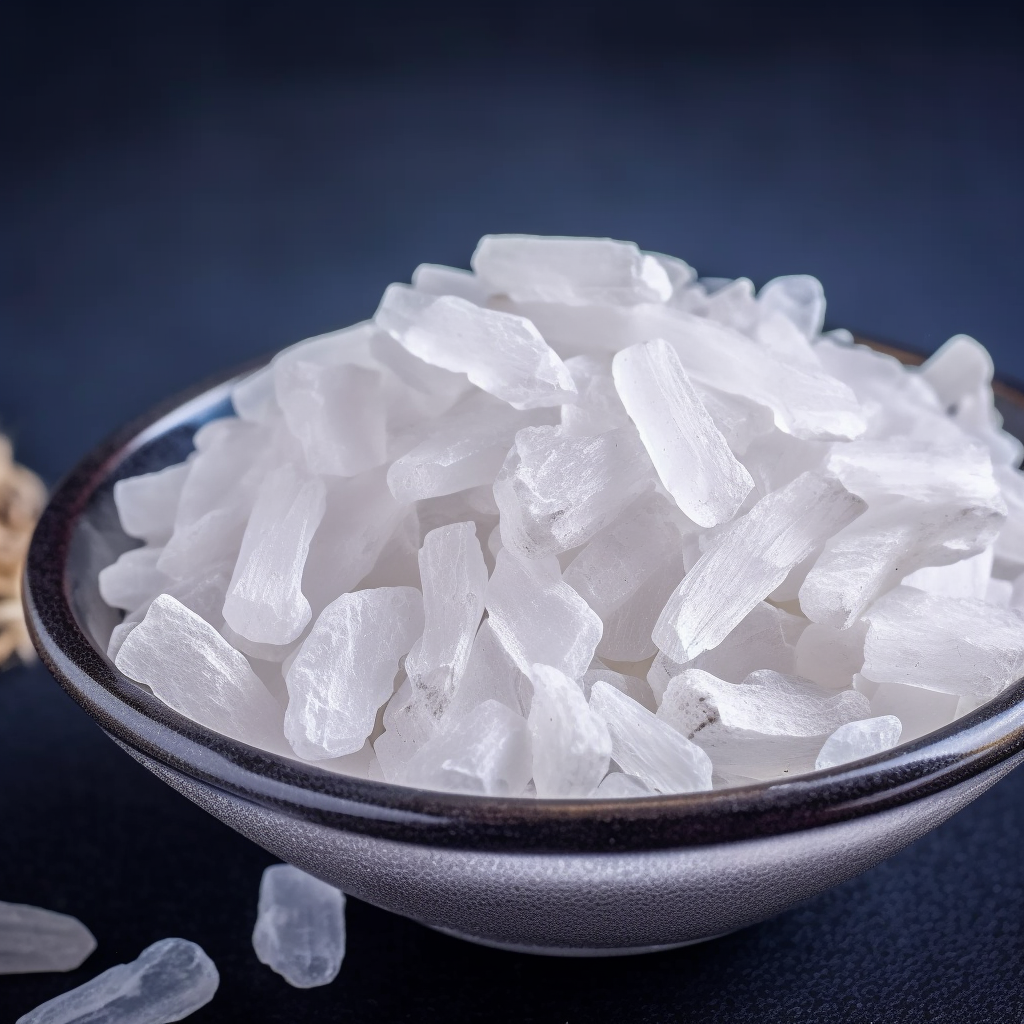
GYPSUM FIBROSUM extract
- Antiviral Herbs-Present And Future
- Effects Of Chinese Herbal Formula Maxing Shigan Powder On Iga Secreting Cells In Chicken Bronchus
- Mechanism By Which Ma-Xing-Shi-Gan-Tang Inhibits The Entry Of Influenza virus
- On The Clinical Application Of Decoction Of Herba Ephedrae, Semen Armeniacae Amarum, Radix Glycyrrhizae And Gypsum Fibrosum Based On An Understanding
- Study On The Rationality For Antiviral Activity Of Flos Lonicerae Japonicae-Fructus Forsythiae Herb Couple Preparations Improved By Chito-Oligosaccharide Via Integral
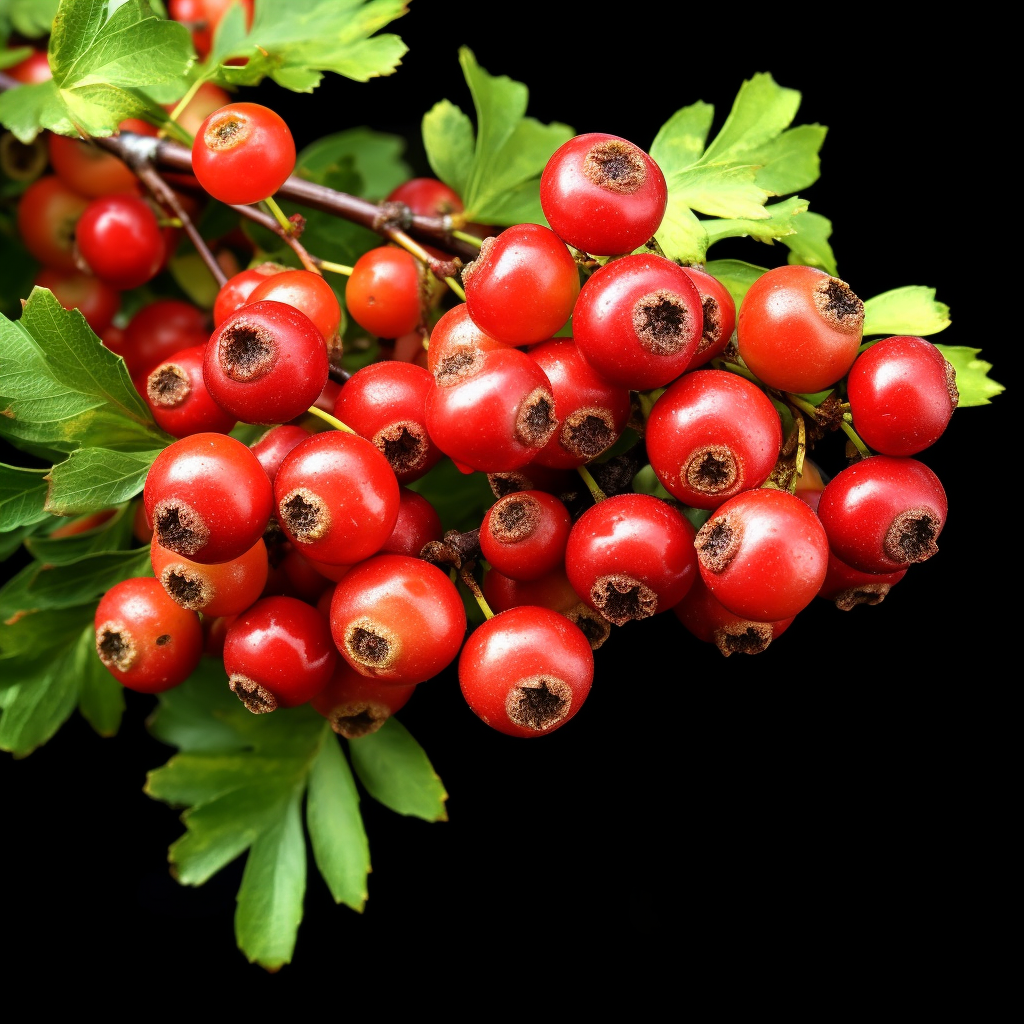
Hawthorn Extract
- Anti-Inflammatory Potential Of Flavonoid Contents From Dried Fruit Of Crataegus Pinnatifida In Vitro And In Vivo
- Corosolic Acid Isolated From The Fruit Of Crataegus Pinnatifida Var. Psilosa Is A Protein Kinase C Inhibitor As Well As A Cytotoxic Agent
- Crataegus Pinnatifida: Chemical Constituents, Pharmacology, And Potential Applications
- Determination Of Activity Of Polysaccharide Extracted From Crataegus Pinnatifida Leaves [J]
- Effects Of Hawthorn Seed And Pulp Extracts On The Central Nervous System
- Hawthorn: Crataegus Oxyacantha, Crataegus Monogyna And Related Species
- Hplc Quantification Of Vitexine-2″-O-Rhamnoside And Hyperoside In Three Crataegus Species And Their Antimicrobial And Antiviral Activities
- Hypolipidemic Components From Medicine Food Homology Species Used In China: Pharmacological And Health Effects
- Interactions Between Nutraceuticals/Nutrients And Therapeutic Drugs
- Major Triterpenoids In Chinese Hawthorn “Crataegus Pinnatifida” And Their Effects On Cell Proliferation And Apoptosis Induction In Mda-Mb-231 Cancer Cells
- Optimization Of High-Speed Counter-Current Chromatography For Separation Of Polyphenols From The Extract Of Hawthorn (Crataegus Laevigata) With Response Surface …
- Protective Effect Of Hawthorn Extract Against Genotoxicity Induced By Cyclophosphamide In Mouse Bone Marrow Cells
- Radioprotective Effects Of Hawthorn Fruit Extract Against Gamma Irradiation In Mouse Bone Marrow Cells
- Synthetic Study On Secoderivatives Of 6-Azauridine As Potential Antiviral Agents
- Toxicity Of Crataegus (Hawthorn) Extract (Ws 1442)

herbacetin (flaxseed)
- 12 Flaxseed Constituents And Human Health
- Antioxidant, Antimicrobial And Anti-Hcv Activities Of Lignan Extracted From Flaxseed
- Bioactive Phytochemicals In Flaxseed
- Chemical Studies On The Constituents Of Linum Spp
- Covid-19 And Flavonoids: In Silico Molecular Dynamics Docking To The Active Catalytic Site Of Sars-Cov And Sars-Cov-2 Main Protease
- Facile Synthesis Of Norwogonin, Isoscutellarein, And Herbacetin
- Herbal Products In Hypertension: Paradox Or, Paragon
- I Vitro A Tioxida T Activity Of Etha Olic Extract Of Li Um Usitatissimum
Meta-Analysis Of Flavonoids With Antiviral Potential Against Coronavirus - Physicochemical, Sensorial And Microbiological Properties Of Mishti Dahi Supplemented With Flax Lignan During Storage And Its Antidiabetic Activity
- Pleiotropic Effects Of Bioactive Phytochemicals (Polyphenols And Terpenes)
- Potential Of Plant Bioactive Compounds As Sars-Cov-2 Main Protease (Mpro) And Spike (S) Glycoprotein Inhibitors: A Molecular Docking Study
Separation Of Four Flavonoids From Rhodiola Rosea By On-Line Combination Of Sample Preparation And Counter-Current Chromatography - Urinary Lignan And Isoflavonoid Excretion In Premenopausal Women Consuming Flaxseed Powder
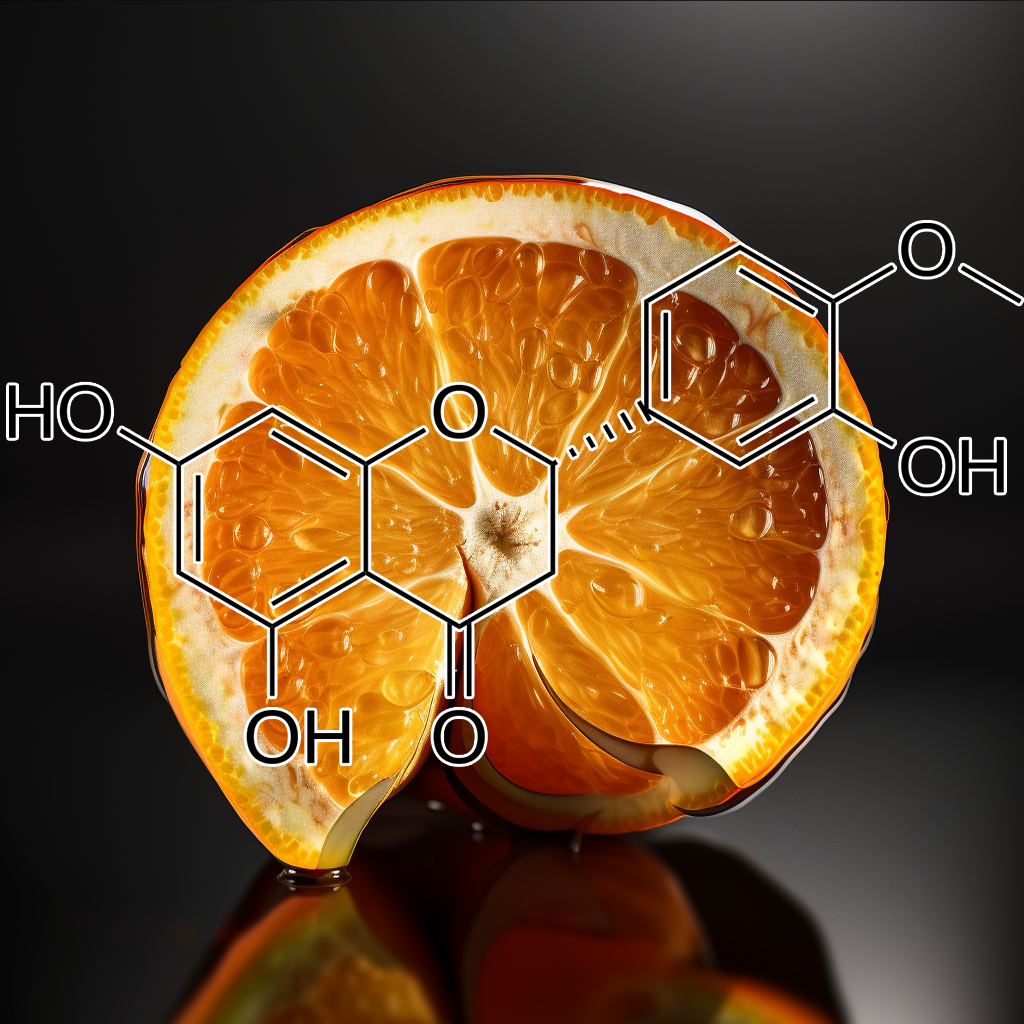
Hesperetin (Citrus Aurantium)
- Chiral Separation Of Hesperetin And Hesperetin-O-Glycoside In Capillary Electrophoresis Using Microbial Β-1, 2-Glucans
- Citrus Flavonoids As Functional Ingredients And Their Role In Traditional Chinese Medicine
- Comparative Effects Of Peel Extract From Nigerian Grown Citrus On Body Weight, Liver Weight And Serum Lipids In Rats Fed A High-Fat Diet
- Determination Of Polymethoxylated Flavones In Peels Of Selected Jamaican And Mexican Citrus (Citrus Spp.) Cultivars By High‐Performance Liquid Chromatography
- Effect Of Naringenin, Hesperetin And Their Glycosides Forms On The Replication Of The 17D Strain Of Yellow Fever virus
- Evolution Of Polymethoxy Flavones During Development Of Tangelo Nova Fruits
- Flavonoids Of Korean Citrus Aurantium L. Induce Apoptosis Via Intrinsic Pathway In Human Hepatoblastoma Hepg2 Cells
- Flavonoids: Promising Natural Compounds Against viral Infections
- Gary Williamson Nestlé Research Center Lausanne, Switzerland Yongping Bao Institute Of Food Research
- Hesperetin Protects Crayfish Procambarus Clarkii Against White Spot Syndrome virus Infection
- Identification Of Flavanones From Peel Of Citrus Changshan-Huyou Yb Chang, By Hplc–Ms And Nmr
- In Silico Study On Anti-Chikungunya virus Activity Of Hesperetin
- Induction Of The Cell Cycle Arrest And Apoptosis By Flavonoids Isolated From Korean Citrus Aurantium L. In Non-Small-Cell Lung Cancer Cells
- Inhibition Of Chikungunya virus Replication By Hesperetin And Naringenin
- Nobiletin: Efficient And Large Quantity Isolation From Orange Peel Extract

hesperidin
(Pericarpium Citri Reticulatae Extract)
Is hesperidin essential for prophylaxis and treatment of COVID-19 Infection?
SARS-CoV-2 or COVID-19 is representing the major global burden that implicated more than 4.7 million infected cases and 310 thousand deaths worldwide in less than 6 months. The prevalence of this pandemic disease is expected to rise every day. The challenge is to control its rapid spread meanwhile looking for a specific treatment to improve patient outcomes. Hesperidin is a classical herbal medicine used worldwide for a long time with an excellent safety profile. Hesperidin is a well-known herbal medication used as an antioxidant and anti-inflammatory agent. Available shreds of evidence support the promising use of hesperidin in prophylaxis and treatment of COVID 19.
Herein, we discuss the possible prophylactic and treatment mechanisms of hesperidin based on previous and recent findings. Hesperidin can block coronavirus from entering host cells through ACE2 receptors which can prevent the infection. Anti-viral activity of hesperidin might constitute a treatment option for COVID-19 through improving host cellular immunity against infection and its good anti-inflammatory activity may help in controlling cytokine storm. Hesperidin mixture with diosmin co-administrated with heparin protect against venous thromboembolism which may prevent disease progression. Based on that, hesperidin might be used as a meaningful prophylactic agent and a promising adjuvant treatment option against SARS-CoV-2 infection.
Hesperidin and SARS-CoV-2: New Light on the Healthy Functions of Citrus Fruit
- Anti-Asthmatic Activity Of Alkaloid Compounds From Pericarpium Citri Reticulatae (Citrus Reticulata ‘Chachi’)
- Anti-Lipid Peroxidation And Oxygen Free Radical Scavenging Activity Of Pericarpium Citri Reticulatae Extract
- Anti-Lipid Peroxidation And Oxygen Free Radical Scavenging Activity Of Pericarpium Citri Reticulatae Extract [J]
- Effects Of Aging On The Phytochemical Profile And Antioxidative Activity Of Pericarpium Citri Reticulatae ‘Chachiensis’
- Evaluation Of Anti-Lipase Activity And Bioactive Flavonoids In The Citri Reticulatae Pericarpium From Different Harvest Time
- Evaluation Of Bioactive Flavonoids And Antioxidant Activity In Pericarpium Citri Reticulatae (Citrus Reticulata ‘Chachi’) During Storage
- Experimental Study On The Effect Of The Combined Use Of Radix Ginseng And Pericarpium Citri Reticulatae On The Function Of Anti-Fatigue In Mice
- Identification Of Anti-Asthmatic Compounds In Pericarpium Citri Reticulatae And Evaluation Of Their Synergistic Effects
- Protective Effect Of Flavonoids From Pericarpium Citri Reticulatae (Chenpi) Against Oxidative Stress Induced By Exhaustive Exercise
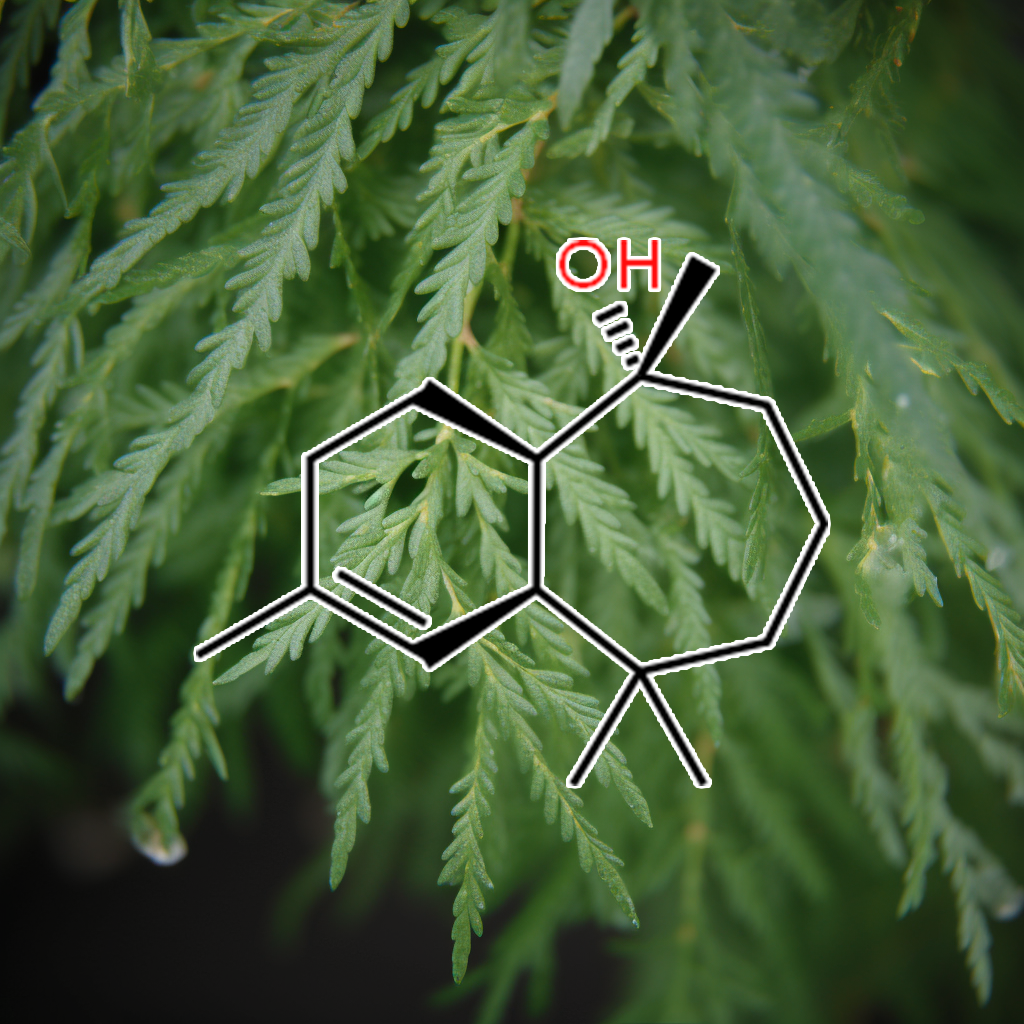
himachalol (Cupressus funebris)
- Antibacterial Activity Of Magnolol And Honokiol In Combination With Antibiotics.
- Design, Synthesis And Antibacterial Evaluation Of Honokiol Derivatives
- Flavonoid–Induced Nephropathy; Increasing Awareness
- Hplc Quantification Of Flavonoids And Biflavonoids Incupressaceae Leaves
- In Vitro Antibacterial And Anti-Inflammatory Effects Of Honokiol And Magnolol Against Propionibacterium Sp.
- In Vitro Synergism Of Magnolol And Honokiol In Combination With Antibacterial Agents Against Clinical Isolates Of Methicillin-Resistant Staphylococcus Aureus …
- Studies On Dental Caries Prevention By Traditional Chinese Medicine-5-A Comparison Of Antibacterial Action Of Magnolol, Honokiol And Related Compounds Against …
- The In Vitro Anticancer Effects Of Himachalol From Cedrus Libani.(C2017)
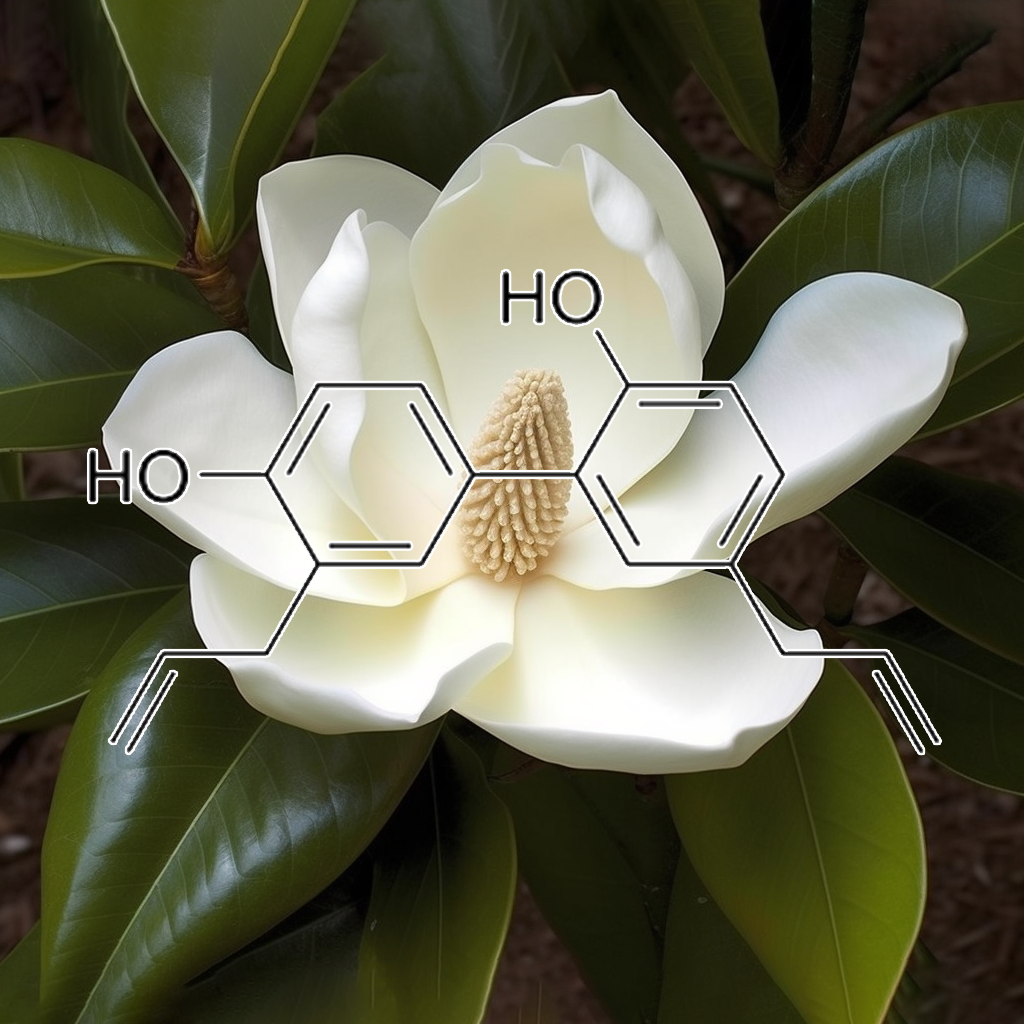
honokiol (Magnolia officinalis)
- Biological Activity And Toxicity Of The Chinese Herb Magnolia Officinalis Rehder & E. Wilson (Houpo) And Its Constituents
- Facile Purification Of Honokiol And Its Antiviral And Cytotoxic Properties
- Honokiol, A Lignan Biphenol Derived From The Magnolia Tree, Inhibits Dengue virus Type 2 Infection
- In Vitro Synergism Of Magnolol And Honokiol In Combination With Antibacterial Agents Against Clinical Isolates Of Methicillin-Resistant Staphylococcus Aureus
- Inhibition Of Herpes Simplex virus -1 Replication By Natural Compound Honokiol
- Magnolol And Honokiol From Magnolia Officinalis Enhanced Antiviral Immune Responses Against Grass Carp Reovirus In Ctenopharyngodon Idella Kidney Cells
- Multiple Effects Of Honokiol On The Life Cycle Of Hepatitis C virus
- Neuroprotective Effect Of Natural Products Against Alzheimer’S Disease
- Phytochemicals And Pi3K Inhibitors In Cancer—An Insight
- Synthesis, Cytotoxicity, And Antiviral Activities Of New Neolignans Related To Honokiol And Magnolol
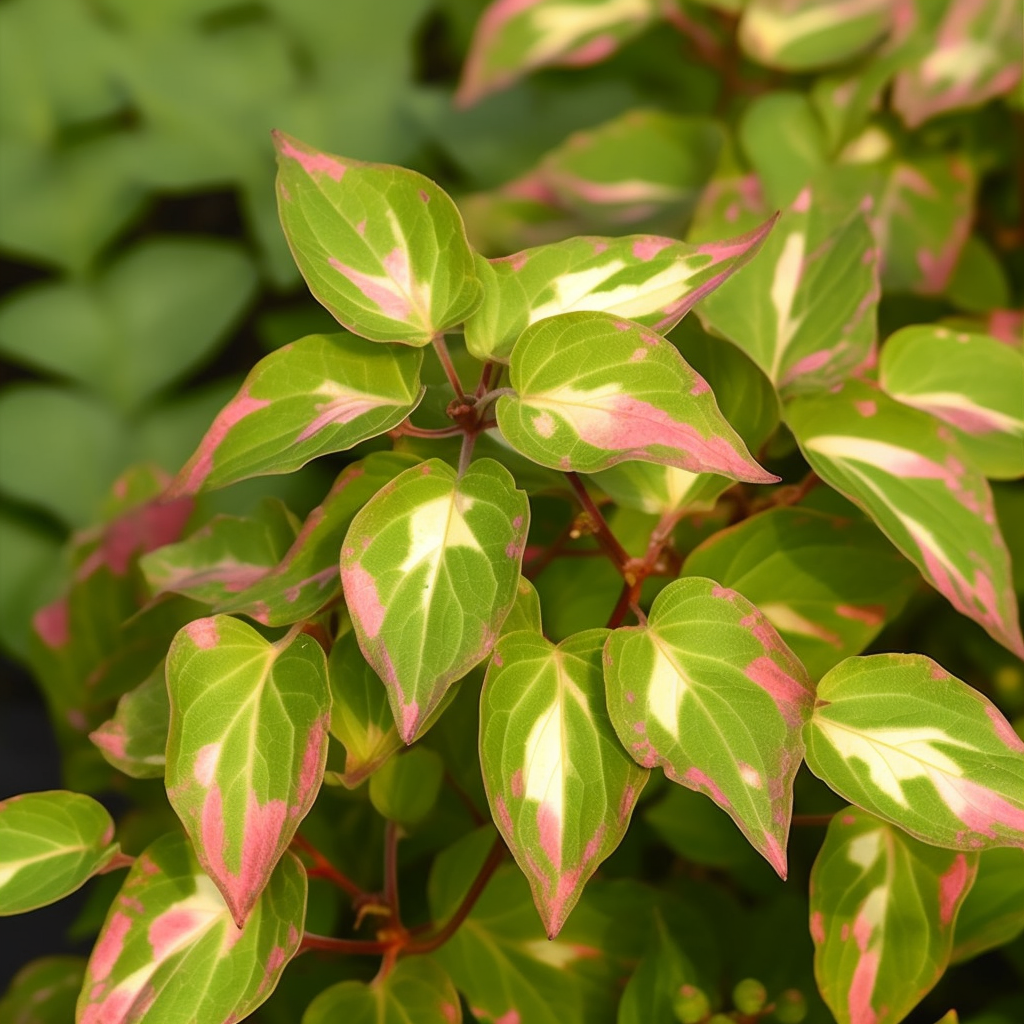
houttuynia cordata
- A Current Update On The Phytopharmacological Aspects Of Houttuynia Cordata Thunb
- Anti-Enterovirus 71 Activity Screening Of Chinese Herbs With Anti-Infection And Inflammation Activities
- Antimicrobial Dyeing Of Cotton And Silk Fabrics Using Houttuynia Cordata Extract
- Basic Veterinary Science Bvs-207 Virucidal Efficacy Of Clinacanthus Nutans And Houttuynia Cordata Extract Against Virulent Newcastle Disease virus
- Down-Regulation Of Fcϵri Expression By Houttuynia Cordata Thunb Extract In Human Basophilic Ku812F Cells
- Hepatoprotective Effect Of Houttuynia Cordata Thunb Extract Against Carbon Tetrachloride-Induced Hepatic Damage In Mice
- Houttuynia Cordata Thunb Inhibits The Production Of Pro‑Inflammatory Cytokines Through Inhibition Of The Nfκb Signaling Pathway In Hmc‑1 Human Mast Cells
- Houttuynia Cordata Thunb. And Its Bioactive Compound 2-Undecanone Significantly Suppress Benzo(A)Pyrene-Induced Lung Tumorigenesis By Activating The …
- Houttuynia Cordata Thunb: A Review Of Phytochemistry And Pharmacology And Quality Control
- Increased Flavonoid Compounds From Fermented Houttuynia Cordata Using Isolated Six Of Bacillus From Traditionally Fermented Houttuynia Cordata
- Preventive Effects Of Houttuynia Cordata Extract For Oral Infectious Diseases
- The Effect Of Houttuynia Cordata Injection On Pseudorabies Herpesvirus (Prv) Infection In Vitro
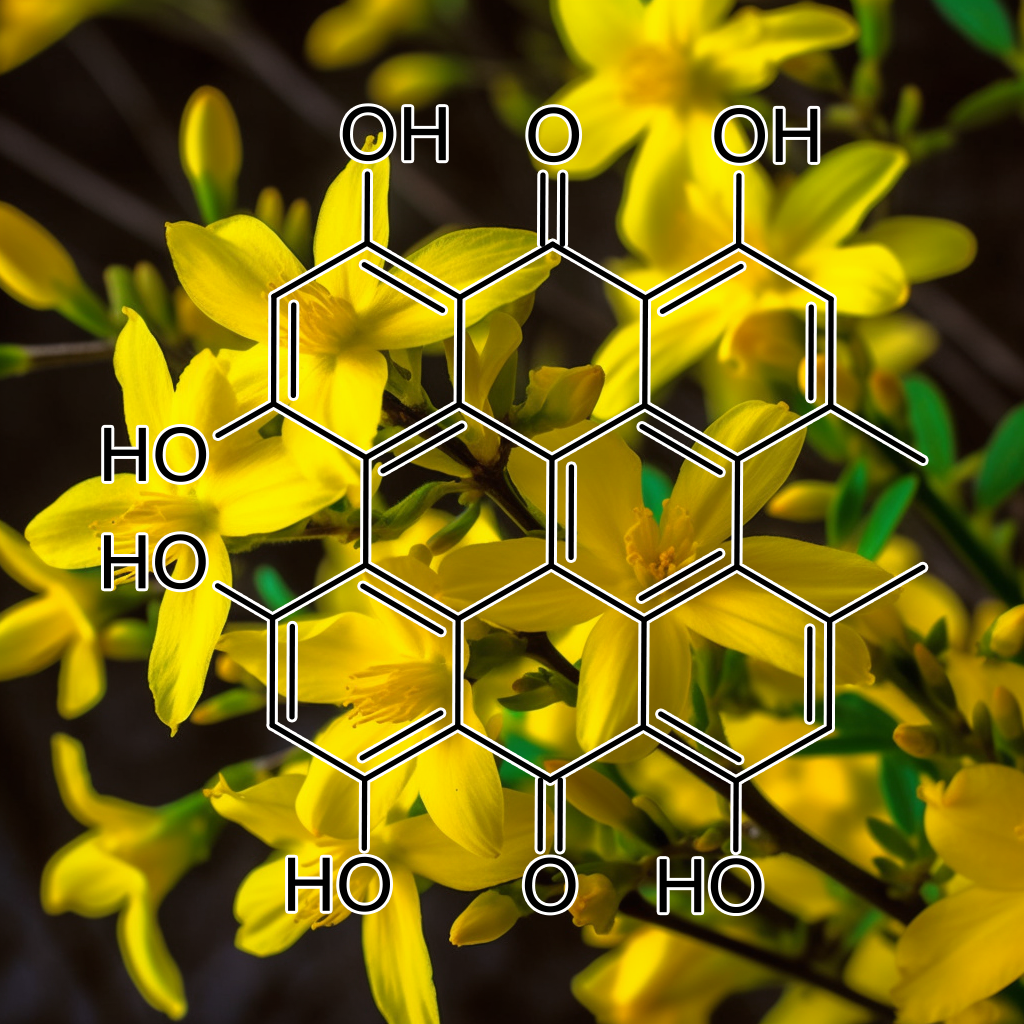
Hypericin (Forsythia suspensa)
- Antiviral Activity Of A Derivative Of The Photosensitive Compound Hypericin
- Antiviral Activity Of The Photoactive Plant Pigment Hypericin
- Antiviral Effect On H5N1 Avian Influenza virus Of Compound Of Curcuma Zedoaria Volatile Oil And Hypericin Perforatum Extract Liquid.
- Chemiluminescent Activation Of The Antiviral Activity Of Hypericin: A Molecular Flashlight
- Effect Of Hypericin On Influenza virus H9N2 In Vitro [J]
- Excited-State Processes In Polycyclic Quinones: The Light-Induced Antiviral Agent, Hypocrellin, And A Comparison With Hypericin
- Experimental Study On The Treatment Of Duck virus Hepatitis With Hypericin Oral Liquid
- Hypericin Inhibits Hepatitis C virus Replication Via Deacetylation And Down-Regulation Of Heme Oxygenase-1
- Hypericin, Hypocrellin, And Model Compounds: Primary Photoprocesses Of Light-Induced Antiviral Agents
- Hypericin-A New Antiviral And Antitumor Photosensitizer: Mechanism Of Action And Interaction With Biological Macromolecules
- Inactivation Of The Human Immunodeficiency virus By Hypericin: Evidence For Photochemical Alterations Of P24 And A Block In Uncoating
- Inhibition Of Duck Hepatitis B virus Replication By Hypericin
- Interaction Of A New Antiviral And Antitumor Photosensitizer Hypericin With Human Serum Albumin: Molecular Modeling Study
- Light-Induced Acidification By The Antiviral Agent Hypericin
- Observation Of Excited-State Tautomerization In The Antiviral Agent Hypericin And Identification Of Its Fluorescent Species
- Pharmacokinetics, Safety, And Antiviral Effects Of Hypericin, A Derivative Of St. John’S Wort Plant, In Patients With Chronic Hepatitis C virus Infection
- Photodynamic Inactivation Of Infectivity Of Human Immunodeficiency virus And Other Enveloped virus es Using Hypericin And Rose Bengal: Inhibition Of Fusion And …
- Photodynamic Inactivation Of Radiation Leukemia virus Produced From Hypericin-Treated Cells
- Photophysics And Light Induced Photobiology Of Antiviral And Antitumor Agents, Hypericin And Hypocrellin
- Photosensitization Is Required For Inactivation Of Equine Infectious Anemia virus By Hypericin
- Protective Effects Of Hypericin Against Infectious Bronchitis virus Induced Apoptosis And Reactive Oxygen Species In Chicken Embryo Kidney Cells
- Raman Spectroscopic Study On Structure Of Human Immunodeficiency virus (Hiv) And Hypericin-Induced Photosensitive Damage Of Hiv
- Strategies For Evaluation Of Enveloped virus Inactivation In Red Cell Concentrates Using Hypericin
- Studies On The Inhibitory Effects Of Hypericin On The Adsorption Ability Of Foot-And-Mouth virus To Host Cells In Vitro
- Study On Hypericin Soluble Powder Against Canine Distemper virus In Vitro.
- Study On The Antiviral Activity Of Hypericin Proteinbound Complex On H5N1 Subtype Of Aiv In Vitro
- Study On The Effect Of Hypericin Protein-Bound Complex Against H9N2 Subtype Of Avian Influenza virus In Chicken [J]
- The Antiviral Agent Hypericin Has In Vitro Activity Against Hsv-1 Through Non-Specific Association With viral And Cellular Membranes
- The Effects Of Hypericin On Inhibition Of Hepatitis B virus Replication In Vitro
- The Role Of Oxygen In The Antiviral Activity Of Hypericin And Hypocrellin
- The Role Of Oxygen In The Photoinduced Antiviral Activity Of Hypericin
- Therapeutic Efficacy Of Hypericin Powder For Chicken Infected With Infectious Bursal Disease virus .
- Ultrafast Excited-State Processes In The Antiviral Agent Hypericin
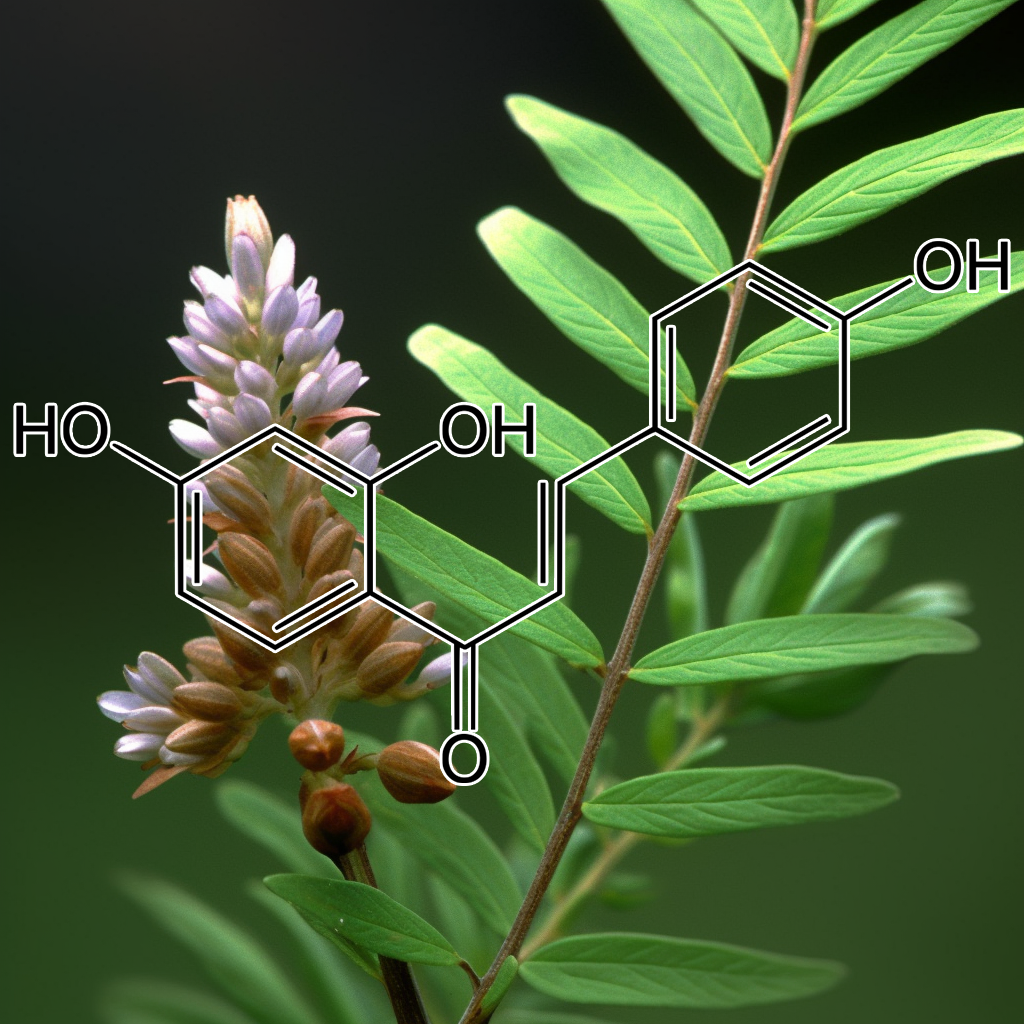
isoliquiritigenin (glycyrrhiza uralensisfisch)
- Anti-Caries Effect Of The Glycyrrhiza Uralensis Extract
- Assessment Report On Glycyrrhiza Glabra L. And/Or Glycyrrhiza Inflata Bat. And/Or Glycyrrhiza Uralensis Fisch., Radix
- Bioactive Constituents Of Glycyrrhiza Uralensis (Licorice): Discovery Of The Effective Components Of A Traditional Herbal Medicine
- Effects Of Post-Harvest Storage And Drying Temperatures On Four Medicinal Compounds In The Root Of Chinese Licorice (Glycyrrhiza Uralensis)
- Hmgr, Sqs, Β-As, And Cytochrome P450 Monooxygenase Genes In Glycyrrhiza Uralensis
- Integrated Morphology Analysis, Metabolomic Analysis And Gene Expression To Assess The Quality Of Four Adventitious Roots Lines Of Glycyrrhiza Uralensis Fisch
- Microcolumn Hplc-Uv Analysis Of Glycyrrhiza Uralensis And Licorice Preparations
- Overexpressing Chalcone Synthase (Chs) Gene Enhanced Flavonoids Accumulation In Glycyrrhiza Uralensis Hairy Roots
- Phenolic Compounds From Cultivated Glycyrrhiza Uralensis And Their Pd-1/Pd-L1 Inhibitory Activities
- Preparative Separation Of Liquiritigenin And Glycyrrhetic Acid From Glycyrrhiza Uralensis Fisch Using Hydrolytic Extraction Combined With High‐Speed Countercurrent …
- Quality Analysis Of Raw And Honey-Processed Licorice Of Glycyrrhiza Uralensis Fisch, And G. Glabra L. By Simultaneous Determination Of Five Bioactive Components …
- The Antiviral And Antimicrobial Activities Of Licorice, A Widely-Used Chinese Herb
- The Flavonoid Isoliquiritigenin Reduces Lung Inflammation And Mouse Morbidity During Influenza virus Infection
- The Protective Effects Of Isoliquiritigenin And Glycyrrhetinic Acid Against Triptolide-Induced Oxidative Stress In Hepg2 Cells Involve Nrf2 Activation
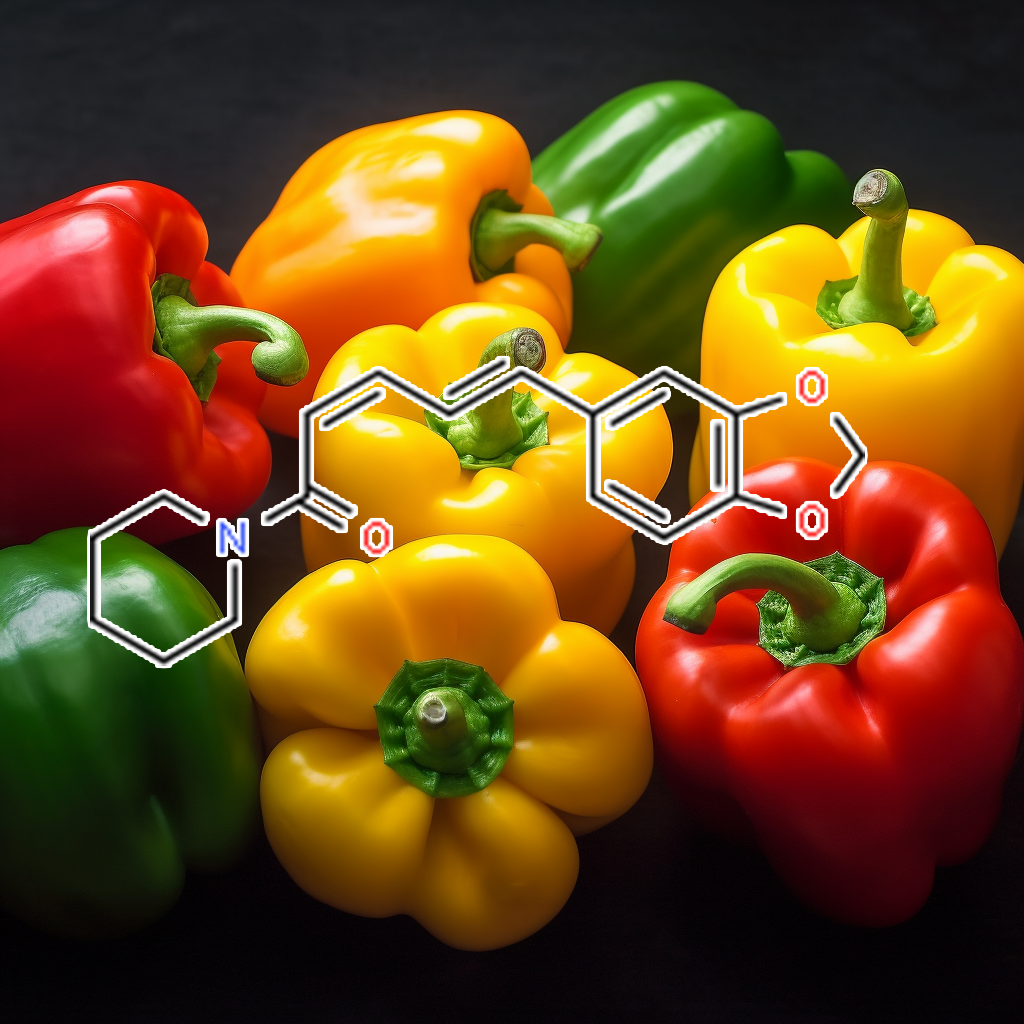
Isopiperine (pepper extract)
- Antiradical Properties Of Essential Oils And Extracts From Coriander, Cardamom, White, Red, And Black Peppers
- Antiviral Activity Of The Crude N-Hexane Extract From Leaves Of Piper Lepturum Var. Angustifolium (C. Dc.) Yunck.(Piperaceae)
- Piperine: A Comprehensive Review Of Methods Of Isolation, Purification And Biological Properties
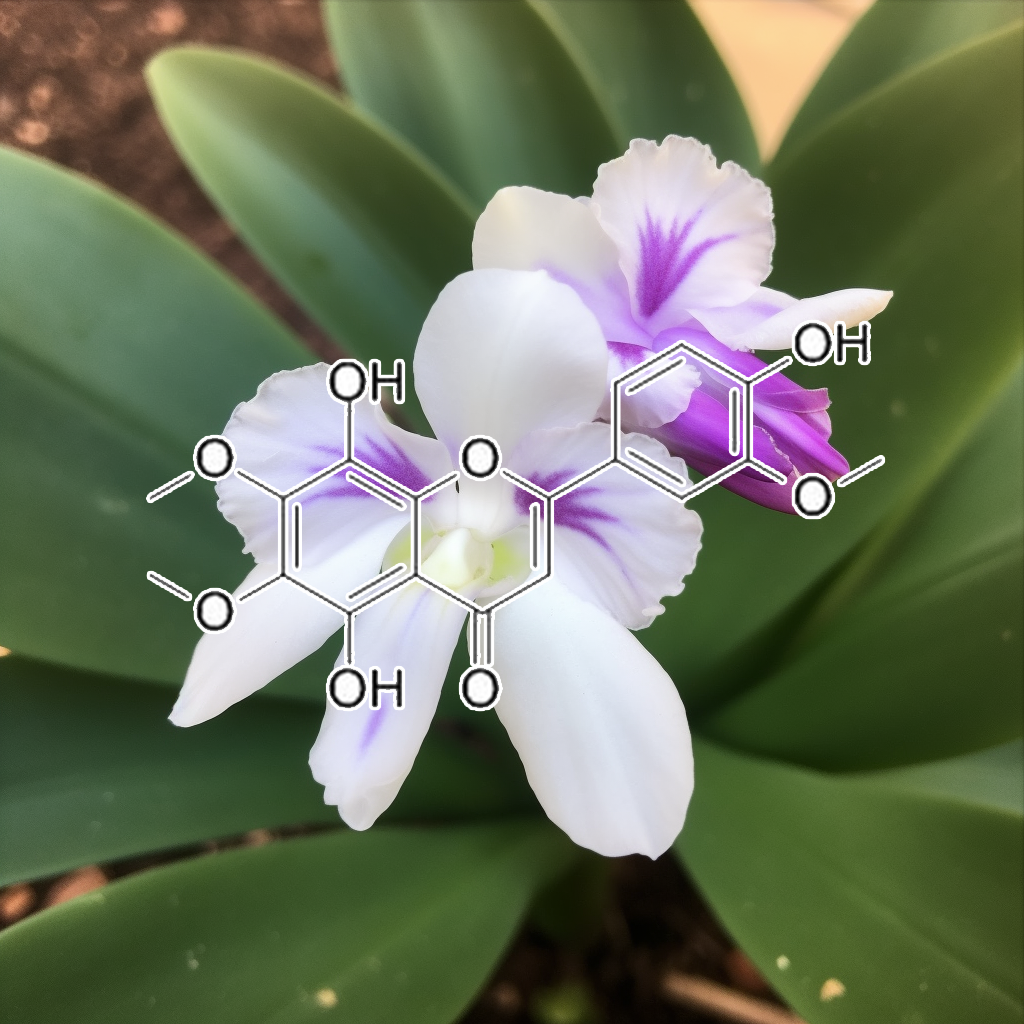
Isothymonin (Kaempferia galanga)
- Callus Induction And Cell Line Establishment From Various Explants Of Kaempferia Galanga
- Chemical Composition And Biological Activity Of Essential Oil Of Kaempferia Galanga: A Review
- Comparative Chemical Study Of Two Varieties Of Attractive Medicinal Plant Kaempferia Galanga Linn.
- Holy Basil: Holy Herb To Multimodal Medicine For Human Health
- Hypopigmentary Effects Of Ethyl P‐Methoxycinnamate Isolated From Kaempferia Galanga
- In Vivo Cytotoxic And In Vitro Antibacterial Activities Of Kaempferia Galanga
- Ocimum Sanctum And Its Effect On Oral Health–A Comprehensive Review.
- Traditional Indian Medicines Used For The Management Of Diabetes Mellitus
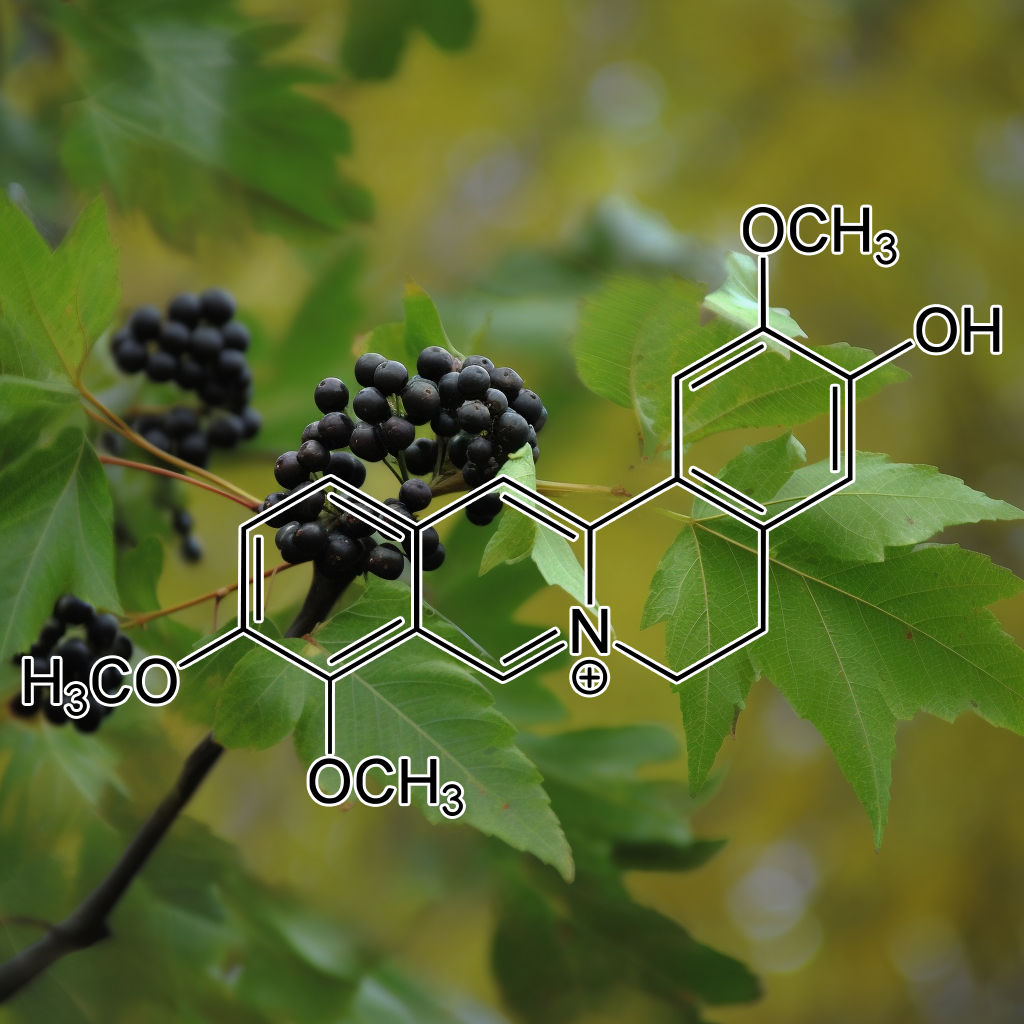
Jatrorrhizine (Phellodendron amurense)
- 18 Biological Fingerprinting Analysis: Strategy For Screening Bioactive Compounds In Traditional Chinese Medicines
- 7.2 Heat-Clearing And Damp-Drying Herbs
- Antifungal Efficacy Of Phellodendron Amurense Ethanol Extract Against Trichophyton Mentagrophytes In Rabbits.
- Antiviral Activity Of Berberine
- Arbuscular Mycorrhizal Symbiosis And Active Ingredients Of Medicinal Plants: Current Research Status And Prospectives
- Berberine And Its Derivatives: A Patent Review (2009–2012)
- Biological Fingerprinting Analysis Of Traditional Chinese Medicines With Targeting Adme/Tox Property For Screening Of Bioactive Compounds By Chromatographic And …
- Capillary‐Hplc With Tandem Mass Spectrometry In Analysis Of Alkaloid Dyestuffs–A New Approach
- Chemical Composition And Antibacterial Activity Of The Essential Oil Of Phellodendron Lavallei
- Identification And Analysis Of Alkaloids In Cortex Phellodendron Amurense By High‐Performance Liquid Chromatography With Electrospray Ionization Mass Spectrometry …
- Palmatine: A Review Of Its Pharmacology, Toxicity And Pharmacokinetics
- Phellodendri Cortex: A Phytochemical, Pharmacological, And Pharmacokinetic Review
- Potential Of Dna Intercalating Alkaloids And Other Plant Secondary Metabolites Against Sars-Cov-2 Causing Covid-19
- Quantitative And Chemical Fingerprint Analysis For Quality Evaluation Of The Dried Bark Of Wild Phellodendron Amurense Rupr. Based On Hplc-Dad-Ms Combined With …
- Screening And Analysis Of Bioactive Compounds With Biofingerprinting Chromatogram Analysis Of Traditional Chinese Medicines Targeting Dna By Microdialysis/Hplc
- The Protective Effect On Ulcerative Colitis Of San Huang Shu’Ai Decoction By Inhibited The Il-1Β And Telomerase
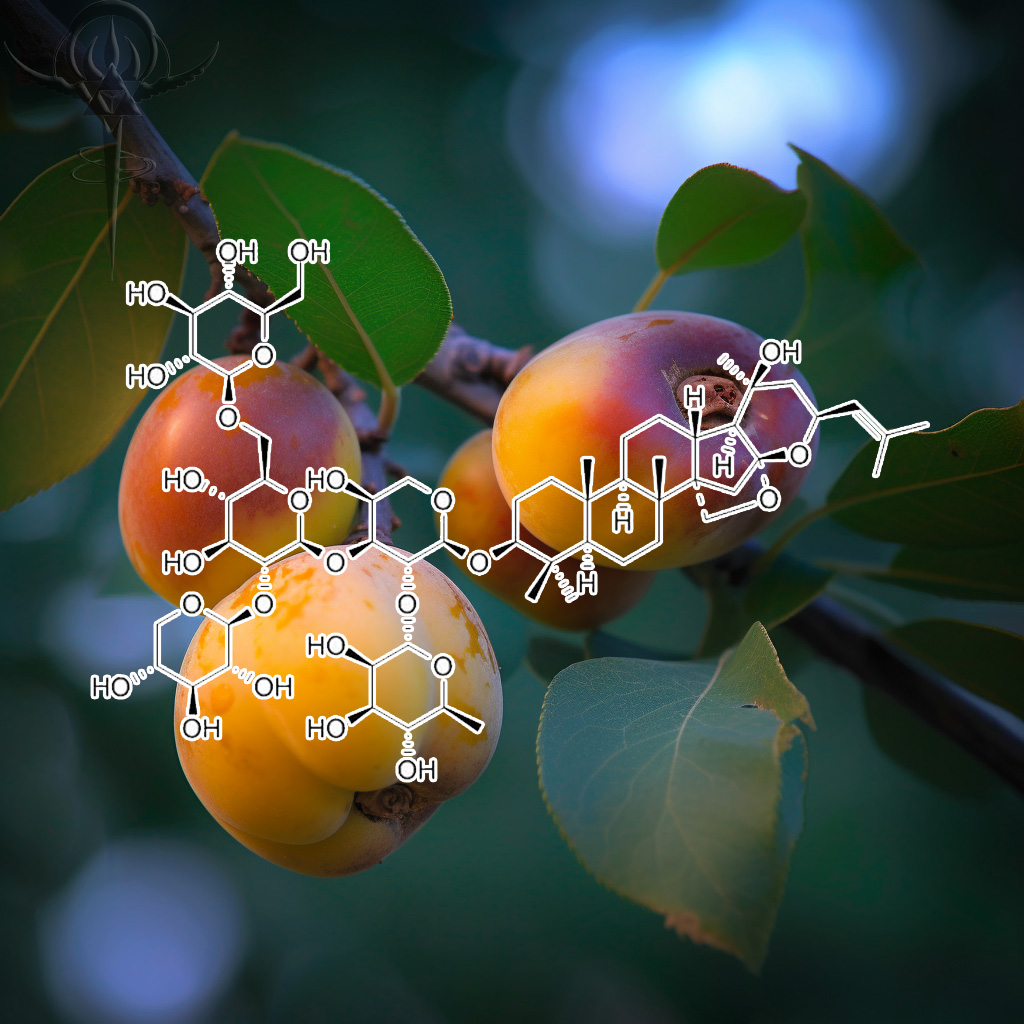
Jujuboside A+B (Jujube extract)
- Bioactive Compounds From Ziziphus Jujuba And Allied Species
- Hypnotic Effect Of Coriandrum Sativum, Ziziphus Jujuba, Lavandula Angustifolia And Melissa Officinalis Extracts In Mice
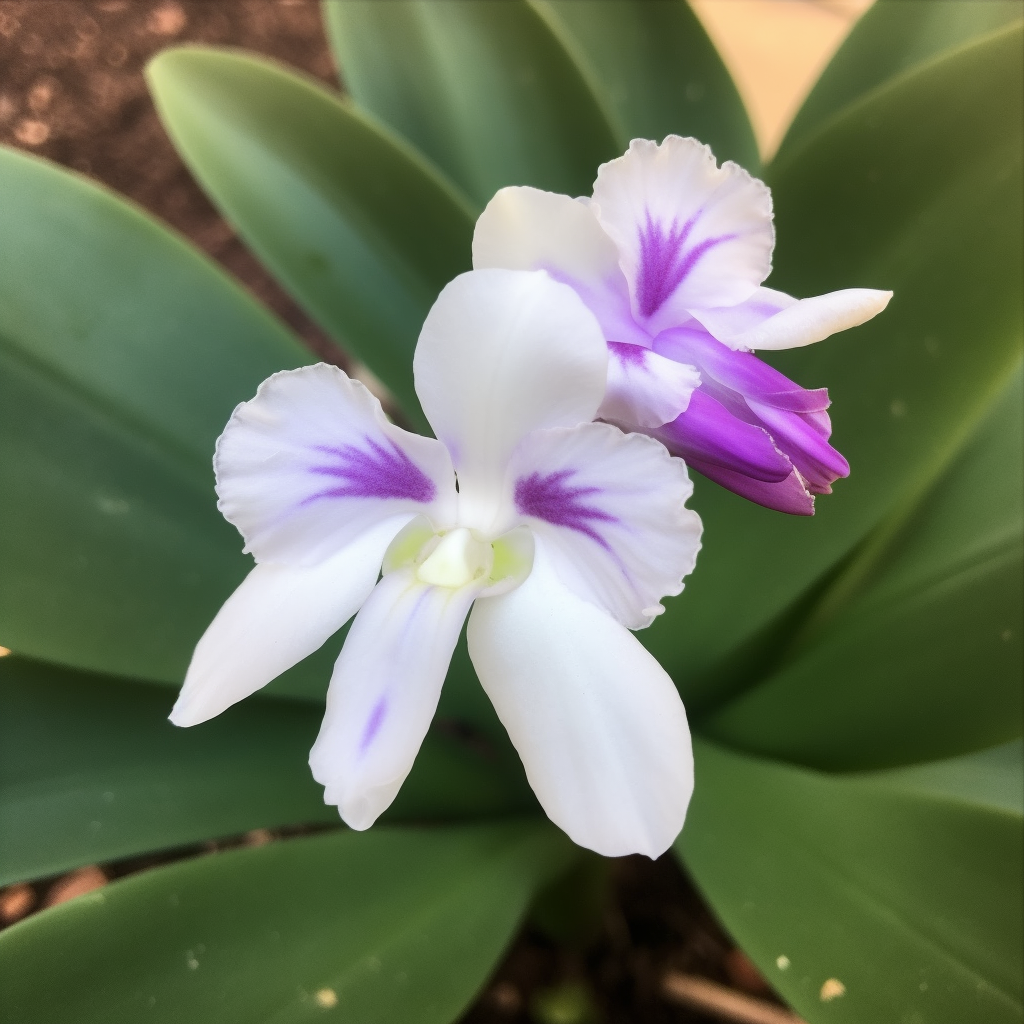
Kaempferol (kaempferol galanga)
- Antibacterial Action Of Tryptanthrin And Kaempferol, Isolated From The Indigo Plant (Polygonum Tinctorium Lour.), Against Helicobacter Pylori-Infected Mongolian …
- Antibacterial And Antioxidant Activities Of Four Kaempferol Methyl Ethers Isolated From Dodonaea Viscosa Jacq. Var. Angustifolia Leaf Extracts
- Anti-Japanese-Encephalitis-viral Effects Of Kaempferol And Daidzin And Their Rna-Binding Characteristics
- Antinociceptive And Anti-Inflammatory Kaempferol Glycosides From Sedum Dendroideum
- Content Of The Flavonols Myricetin, Quercetin, And Kaempferol In Finnish Berry Wines
- Cytotoxic Activity Of Kaempferol Glycosides Against Human Leukaemic Cell Lines In Vitro
- Determination Of Quercetin And Kaempferol In Human Urine After Orally Administrated Tablet Of Ginkgo Biloba Extract By Hplc
- Discordant Activity Of Kaempferol Towards Dengue virus And Japanese Encephalitis virus
- Dna Interaction With Naturally Occurring Antioxidant Flavonoids Quercetin, Kaempferol, And Delphinidin
- Evaluation Of The Antiviral Activity Of Kaempferol And Its Glycosides Against Human Cytomegalovirus
- Hepatoprotective Effects Of Kaempferol 3-O-Rutinoside And Kaempferol 3-O-Glucoside From Carthamus Tinctorius L. On Ccl4-Induced Oxidative Liver Injury In …
- In Vitro Anti-Hiv-1 Activities Of Kaempferol And Kaempferol-7-O-Glucoside Isolated From Securigera Securidaca
- In Vitro Glucuronidation Of Kaempferol And Quercetin By Human Ugt-1A9 Microsomes
- Involvement Of Kaempferol In The Defence Response Of virus Infected Arabidopsis Thaliana
- Kaempferol Acetylrhamnosides From The Rhizome Of Dryopteris Crassirhizoma And Their Inhibitory Effects On Three Different Activities Of Human Immunodeficiency virus -1 …
- Kaempferol Ameliorates H9N2 Swine Influenza virus -Induced Acute Lung Injury By Inactivation Of Tlr4/Myd88-Mediated Nf-Κb And Mapk Signaling Pathways
- Kaempferol Attenuates Acute Lung Injury In Mice Induced By Swine-Origin Influenza A H9 N2 virus Via Down-Regulation Of Nf-Κb Signaling Pathway
- Kaempferol Derivatives As Antiviral Drugs Against The 3A Channel Protein Of Coronavirus
- Kaempferol Induced Apoptosis Via Endoplasmic Reticulum Stress And Mitochondria‐Dependent Pathway In Human Osteosarcoma U‐2 Os Cells
- Kaempferol Induces Apoptosis In Glioblastoma Cells Through Oxidative Stress
- Kaempferol Induces Cell Death Through Erk And Akt-Dependent Down-Regulation Of Xiap And Survivin In Human Glioma Cells
- Kaempferol Inhibited Bovine Herpesvirus 1 Replication And Lps-Induced Inflammatory Response.
- Kaempferol Inhibits Enterovirus 71 Replication And Internal Ribosome Entry Site (Ires) Activity Through Fubp And Hnrp Proteins
- Kaempferol Inhibits Il‑1Β‑Induced Proliferation Of Rheumatoid Arthritis Synovial Fibroblasts And The Production Of Cox‑2, Pge2 And Mmps
- Kaempferol Inhibits Il-1Β-Stimulated, Rankl-Mediated Osteoclastogenesis Via Downregulation Of Mapks, C-Fos, And Nfatc1
- Kaempferol Inhibits Pseudorabies virus Replication In Vitro Through Regulation Of Mapks And Nf-Κb Signaling Pathways
- Metabolism Of Quercetin And Kaempferol By Rat Hepatocytes And The Identification Of Flavonoid Glycosides In Human Plasma
- Promoting Effect Of Kaempferol On The Differentiation And Mineralization Of Murine Pre-Osteoblastic Cell Line Mc3T3-E1
- Protective Effects Of Kaempferol On Isoniazid-And Rifampicin-Induced Hepatotoxicity
- The Roles Of Cdr1, Cdr2, And Mdr1 In Kaempferol-Induced Suppression With Fluconazole-Resistant Candida Albicans
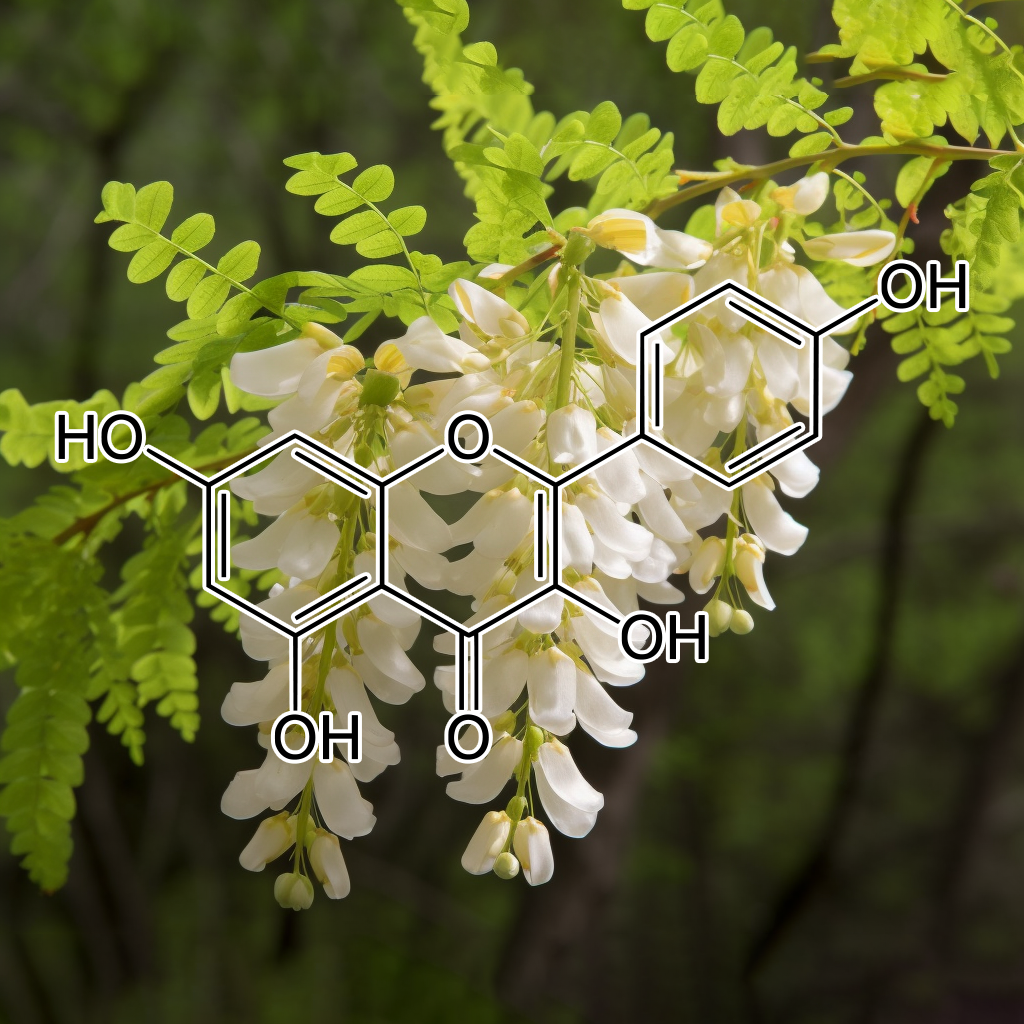
Kaempferol 3-O-robinobiosid
- Antiviral Activities Of Indonesian Medicinal Plants In The East Java Region Against Hepatitis C virus
- Antiviral Effect Of Phytochemicals From Medicinal Plants: Applications And Drug Delivery Strategies
- Development Of Quality Control Parameters For The Standardization Of Gymnema Sylvestre
- Further Saponins And Flavonoids From Astragalus Verrucosus Moris
- Potent Antiviral Flavone Glycosides From Ficus Benjamina Leaves
- Quercetin And Quercetin 3-O-Glycosides From Bauhinia Longifolia (Bong.) Steud. Show Anti-Mayaro virus Activity
- The Journal Of Phytopharmacology
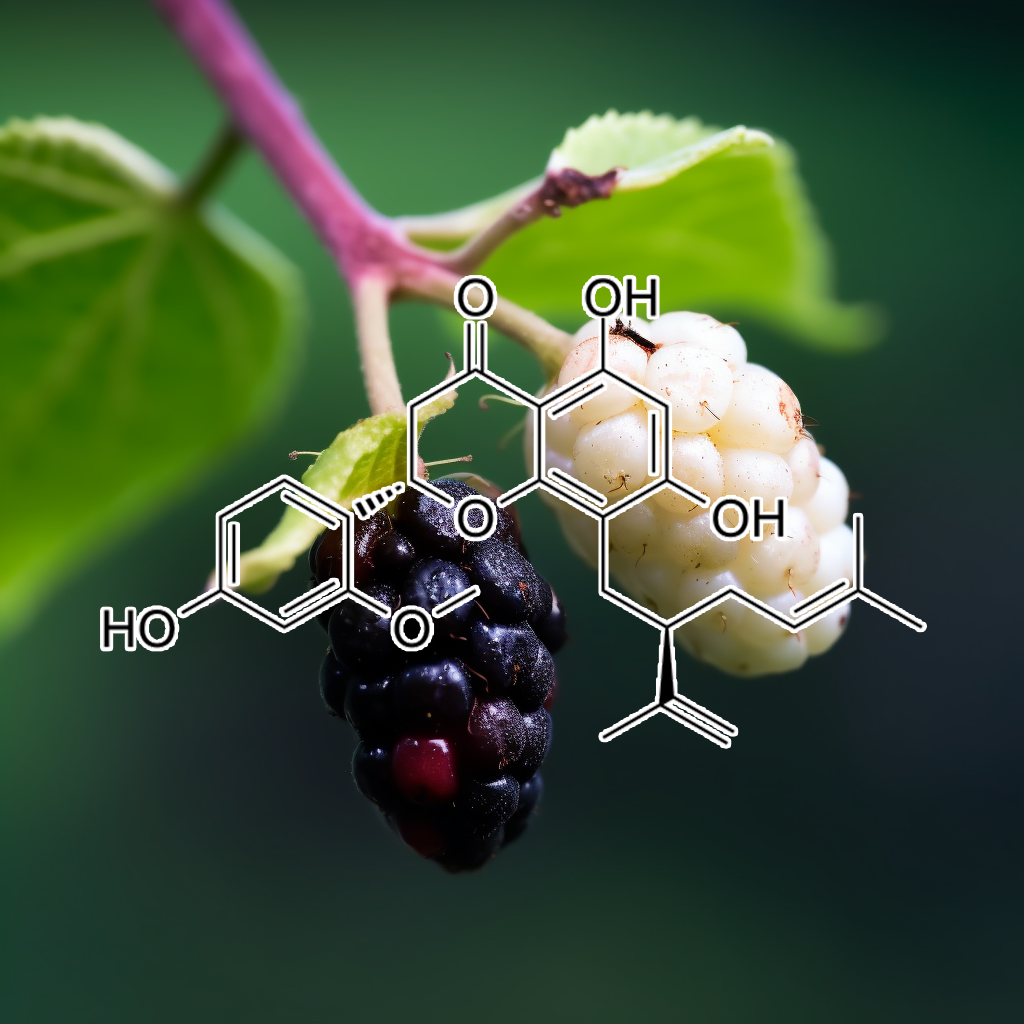
leachianone (Morus alba)
- A Review Of Ethnobotany, Phytochemistry, Antiviral And Cytotoxic/Anticancer Potential Of Morus Alba Linn
- Global Trends In Mulberry And Silkworm Use For Non–Textile Purposes
- Isolation And Characterization Of The Bioactive Phenolic Compounds From Morus Alba Leaves Growing In Egypt
- Multiple In Vitro Biological Effects Of Phenolic Compounds From Morus Alba Root Bark
- Phenolic Constituents From The Root Bark Of Morus Alba With Emphasis On Morusin And Its Anti-Cancer Properties
- Sanggenol L Promotes Apoptotic Cell Death In Melanoma Skin Cancer Cells Through Activation Of Caspase Cascades And Apoptosis-Inducing Factor
- Traditional Uses, Phytochemistry And Pharmacology Of Morus Alba Linn.: A Review
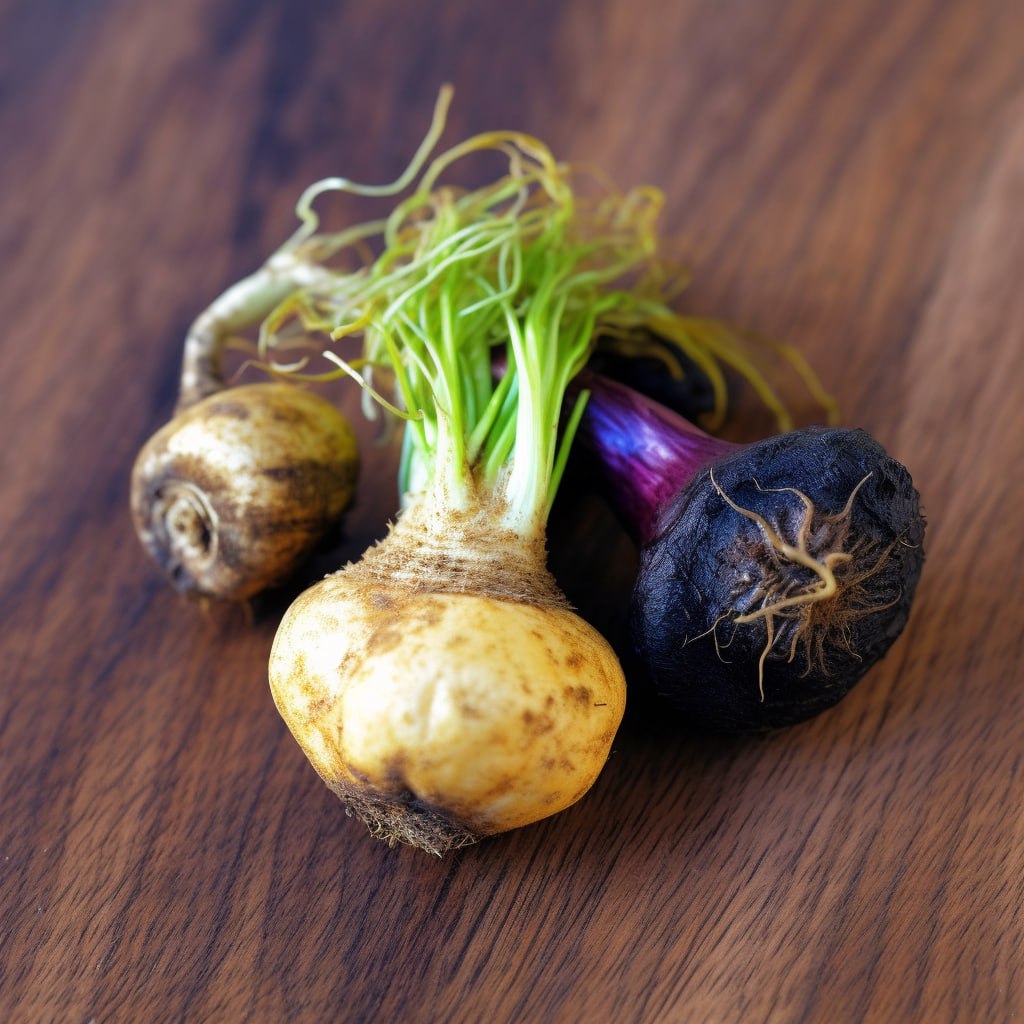
Lepidium meyenii (maca extract)
- Antiviral Activity Of Maca (Lepidium Meyenii) Against Human Influenza virus
- Lepidium Meyenii (Maca)–Multidirectional Health Effects–Review
- Structure Analysis And Anti-Fatigue Activity Of A Polysaccharide From Lepidium Meyenii Walp
- Toxicological Aspects Of The South American Herbs Cat’S Claw (Uncaria Tomentosa) And Maca (Lepidium Meyenii)
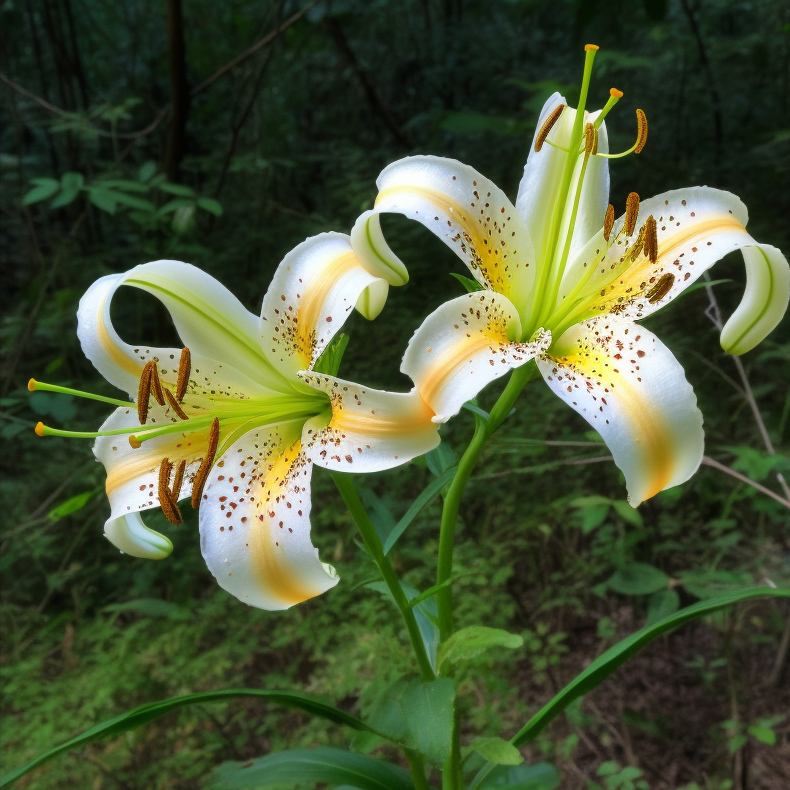
Lily Extract (Lilium auratum)
- Antibacterial Properties Of White Lily (Lilium Candidum) Extract
- Antimicrobial Activity And Synergism Of Sami-Hyanglyun-Hwan With Ciprofloxacin Against Methicillin-Resistant Staphylococcus Aureus
- Biotechnological Advances In Lilium
- Chemistry And Biological Activity Of Steroidal Glycosides From The Lilium Genus
- Efficient One-Step Tissue Culture Protocol For Propagation Of Endemic Plant, Lilium Martagon Var. Cattaniae Vis.
- Evaluation Of Taste, Total Phenols And Antioxidant For Fresh, Roasted, Shade Dried And Boiled Leaves Of Edible Arum Palaestinum Bioss
- Guide To The Medicinal Plant Garden
- Isolation And Structural Determination Of Steroidal Glycosides From The Bulbs Of Easter Lily (Lilium Longiflorum Thunb.)
- The Effect Of Echinacea Purpurea, Astragalus Membranaceus And Glycyrrhiza Glabra On Cd69 Expression And Immune Cell Activation In Humans
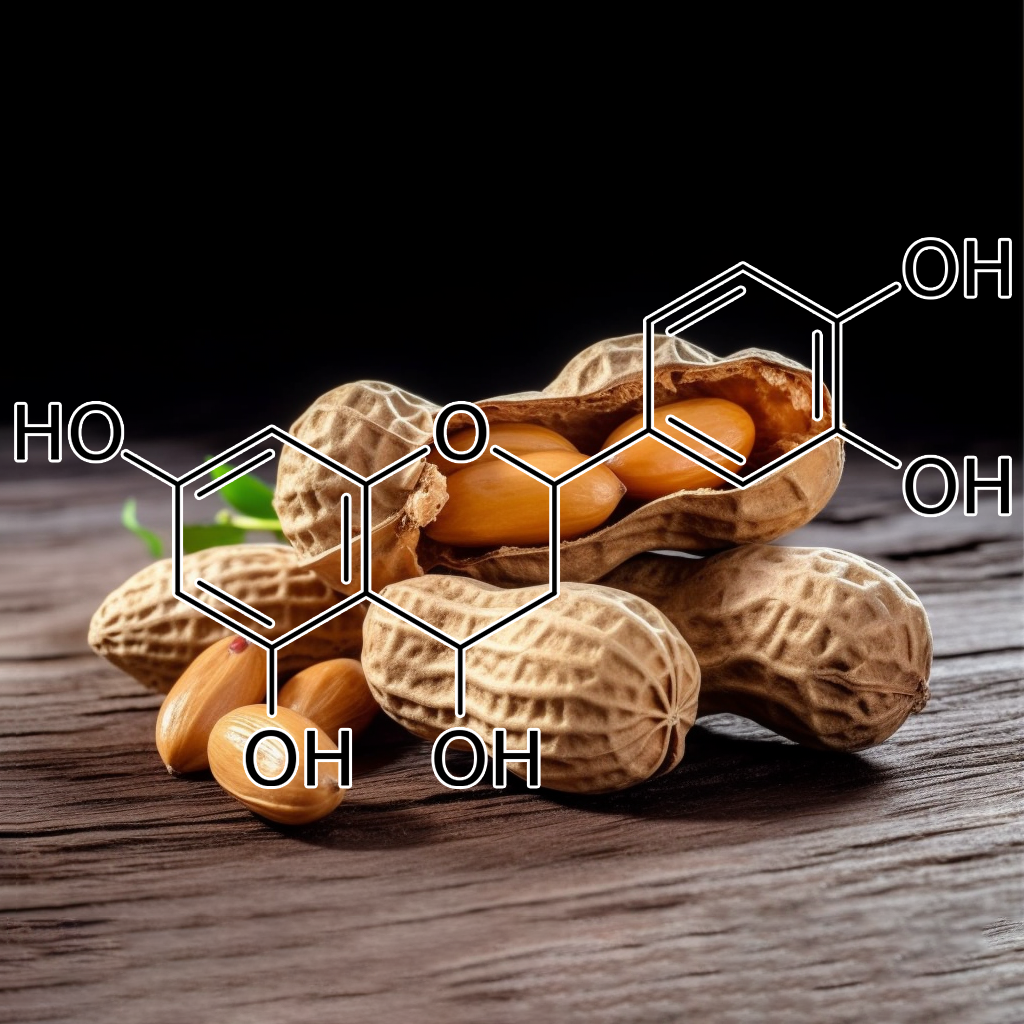
luteoforol (a flavan-4-ol
- Antiherpetic Activity Of Some Endemic Hypericum Species In Turkey
- Anti-Infective Flavonoids: An Overview
- Antiviral Properties Of Phytochemicals
- Current Status Of Natural Products From Plants As Anti-Herpes Simplex virus 1 Agents
- Cytotoxicity, Antiviral And Antimicrobial Activities Of Alkaloids, Flavonoids, And Phenolic Acids
- Herpes virus Inhibitory Substances From Hypericum Connatum Lam., A Plant Used In Southern Brazil To Treat Oral Lesions
- Hypericum Caprifoliatum And Hypericum Connatum Affect Human Trophoblast-Like Cells Differentiation And Ca2+ Influx
- Inhibitory Effect Of Rhinacanthus Nasutus (Linn.) Kurz. And Stemona Tuberosa (Lour.) Extracts On Herpes Simplex virus Infection
- Phytochemical And Antimicrobial Studies Of Bridelia Crenulata
- Potentiality Of Red Sorghum For Producing Stilbenoid-Enriched Beers With High Antioxidant Activity
- The Genus Bridelia: A Phytochemical And Ethnopharmacological Review
- Unravelling Lead Antiviral Phytochemicals For The Inhibition Of Sars-Cov-2 Mpro Enzyme Through In Silico Approach
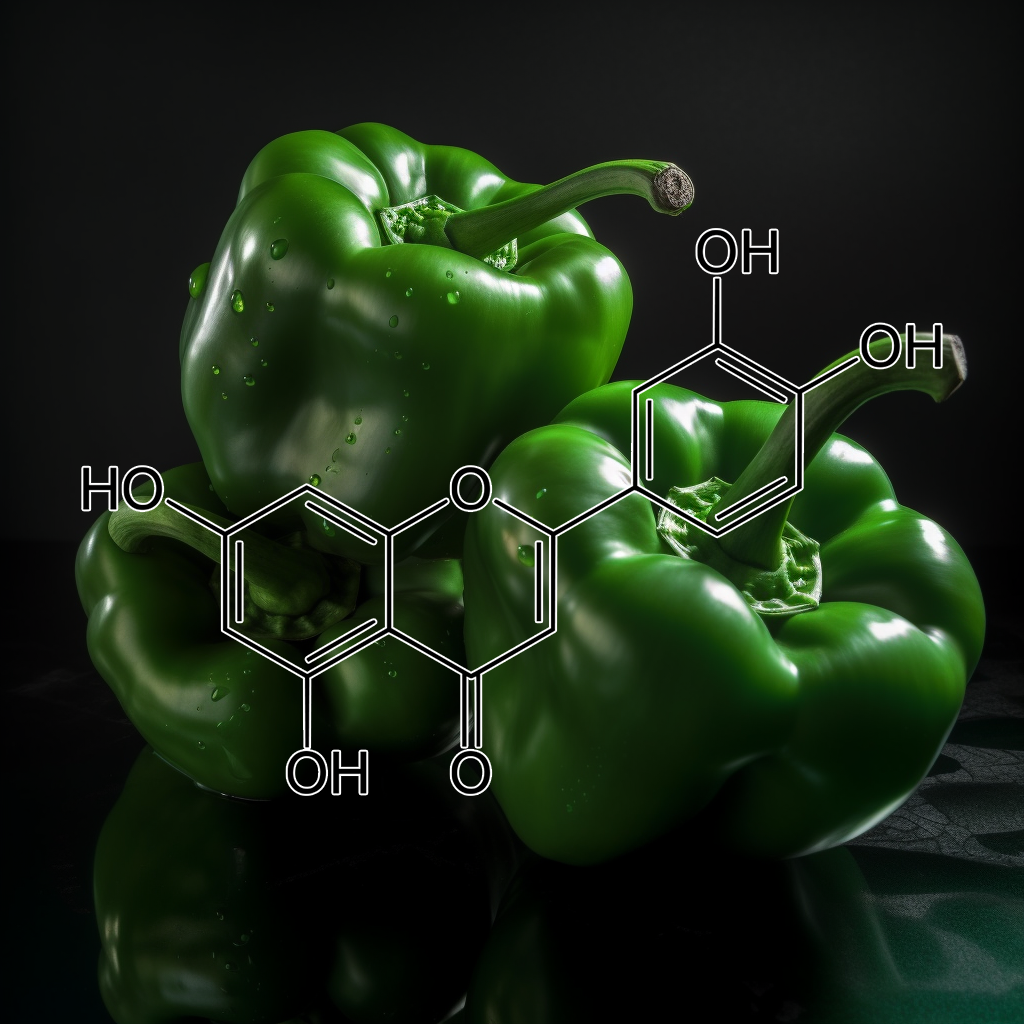
Luteolin
The new coronavirus (severe acute pulmonary syndrome [SARS]‐CoV‐2) originated in China, where it spread rapidly,1 and has reached pandemic proportions because of its high rate of infectivity as well as high morbidity and mortality, associated with COVID‐19.2 This coronavirus infects by first binding to the ectoenzyme angiotensin‐converting enzyme 2 (ACE2),3, 4 a serine protease acting as the receptor, while another serine protease is necessary for priming the viral “S” protein required for entering the cells.5 Defense against the virus apparently does not involve inflammatory cytokines,6 but pulmonary infection and its serious sequelae result from the release of multiple chemokines and cytokines that damage the lungs.
A recent report correlated coronaviruses infection with activation of mast cells and subsequent cytokine storms in the lungs.7Mast cells are known to be triggered by viruses.8 Mast cells are unique immune cells that are ubiquitous in the body, especially the lungs,9 and are critical for allergic and pulmonary diseases,10 including mastocytosis11 by secreting histamine, leukotrienes, and proteases. Mast cells are also involved in the development of inflammation12 via release of multiple pro‐inflammatory cytokines and chemokines.13, 14
Mast cells contain the serine protease ACE2, which can convert angiotensin I into angiotensin II.15 In addition to the bronchoconstrictive action of mast cell‐derived leukotrienes, mast cells cause further bronchoconstriction via an active renin‐angiotensin generating system in the lungs.16Moreover, mast cells express a number of serine proteases,17 especially the mast cell‐serine protease tryptase,18 which are necessary for infection by SARS‐CoV‐2. A serine protease inhibitor, camostat mesylate, was recently shown to prevent entry of the virus into the lung cells of SARS‐CoV‐2‐infected patients.19 It would be important to not only inhibit entry of SARS‐CoV‐2 but also prevent SARS associated with COVID‐19.
The possible use of nonsteroidal anti‐inflammatory agents has come into question for possibly aggravating pulmonary symptoms,20 while broad‐spectrum immune suppressors, such as corticosteroids,21 would not be advisable given that an intact immune system is necessary to fight the infection and it may even lead to increased plasma viral load.22
Inhibition of mast cell‐associated inflammation could be accomplished with natural molecules, especially the polyphenolic flavonoids.23 The flavone luteolin (not lutein, which is a carotenoid) has been shown to have broad antiviral properties.24–26 Luteolin specifically binds to the surface spike protein of SARS‐Cov‐2 and inhibits entry of the virus into host cells.27 Furthermore, luteolin inhibits serine proteases,28 including the SARS‐CoV 3CL protease29 required for viral infectivity.
Moreover, luteolin inhibits mast cells30, 31and has anti‐inflammatory properties.32 A novel luteolin analogue, tetramethoxyluteolin, is even more potent32 and can also inhibit secretion of the pro‐inflammatory cytokines TNF and IL‐1β,33, 34 as well as the chemokines CCL2 and CCL535 from human mast cells.
- Antiviral Activity Of Luteolin Against Japanese Encephalitis virus
- Comparative Study Of Antiviral Activity Of Luteolin And 7, 3′-Disulfate Luteolin
- Effects Of Baicalin And Luteolin-7-O-Glucoside On Nf-Κb Signaling Pathway In A549 Cells Infected With Influenza virus H1N1 In Vitro
- Effects Of Orlistat And Herbal Mixture Extract On Brain, Testes Functions And Oxidative Stress Biomarkers In A Rat Model Of High Fat Diet
- Hplc Determination Of Luteoloside In Shuanghuanglian Injection
- In Vitro Anti Coxsackie B_3 virus Effect Of Luteolin
- Luteolin Decreases The Yield Of Influenza A virus In Vitro By Interfering With The Coat Protein I Complex Expression
- Luteolin Escape Mutants Of Dengue virus Map To Prm And Ns2B And Reveal viral Plasticity During Maturation
- Luteolin Inhibits Epstein-Barr virus Lytic Reactivation By Repressing The Promoter Activities Of Immediate-Early Genes
- Luteolin Inhibits Hepatitis B virus Replication Through Extracellular Signal-Regulated Kinase-Mediated Down-Regulation Of Hepatocyte Nuclear Factor 4Α Expression
- Luteolin Inhibits Respiratory Syncytial virus Replication By Regulating The Mir-155/Socs1/Stat1 Signaling Pathway
- Luteolin Restricts Dengue virus Replication Through Inhibition Of The Proprotein Convertase Furin
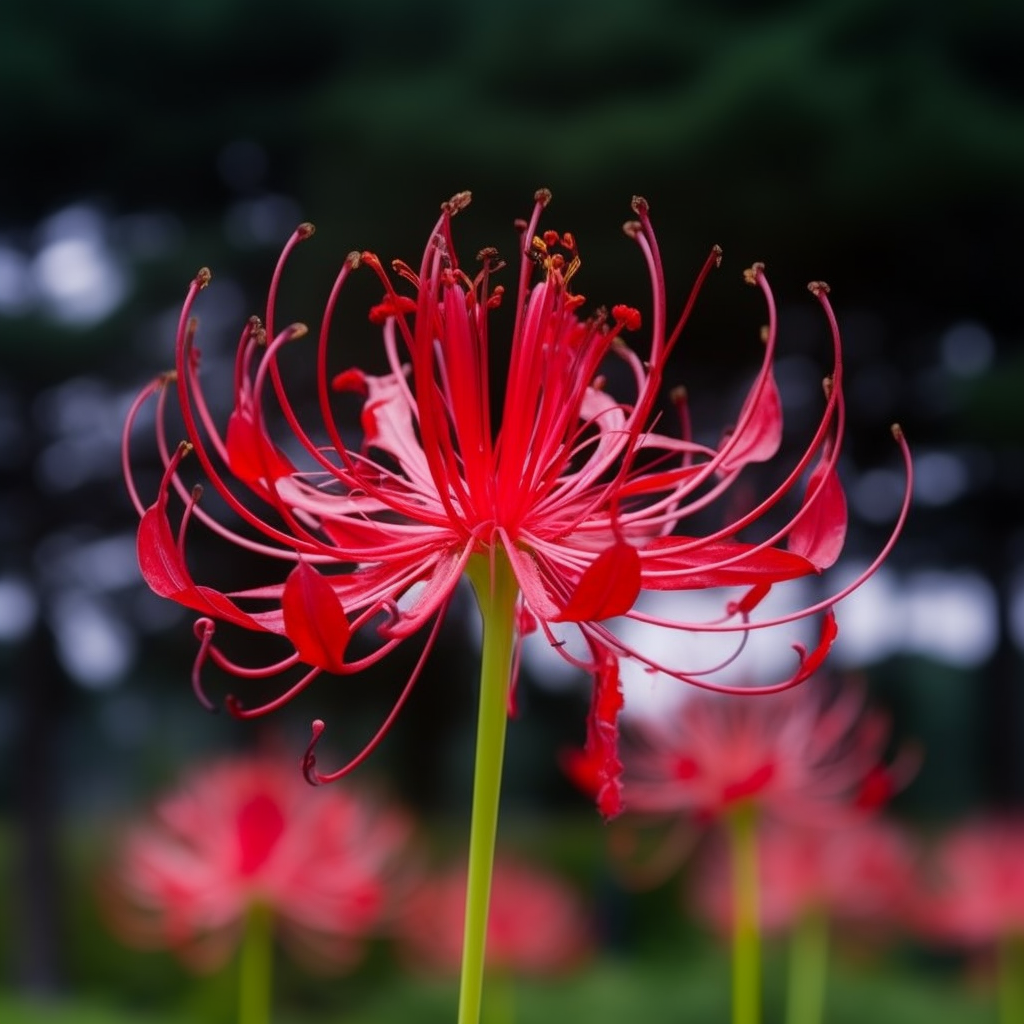
Lycoris radiata
- Amaryllidaceae And Sceletium Alkaloids
- Antibacterial Constituents Of The Plant Family Amaryllidaceae
- Aphicidal Activities Of Amaryllidaceae Alkaloids From Bulbs Of Lycoris Radiata Against Aphis Citricola
- Ficus Septica Plant Extracts For Treating Dengue virus In Vitro
- Therapeutic Potentials Of Herbal Drugs For Alzheimer’S Disease—An Overview
- Two New Amaryllidaceae Alkaloids From The Bulbs Of Lycoris Radiata
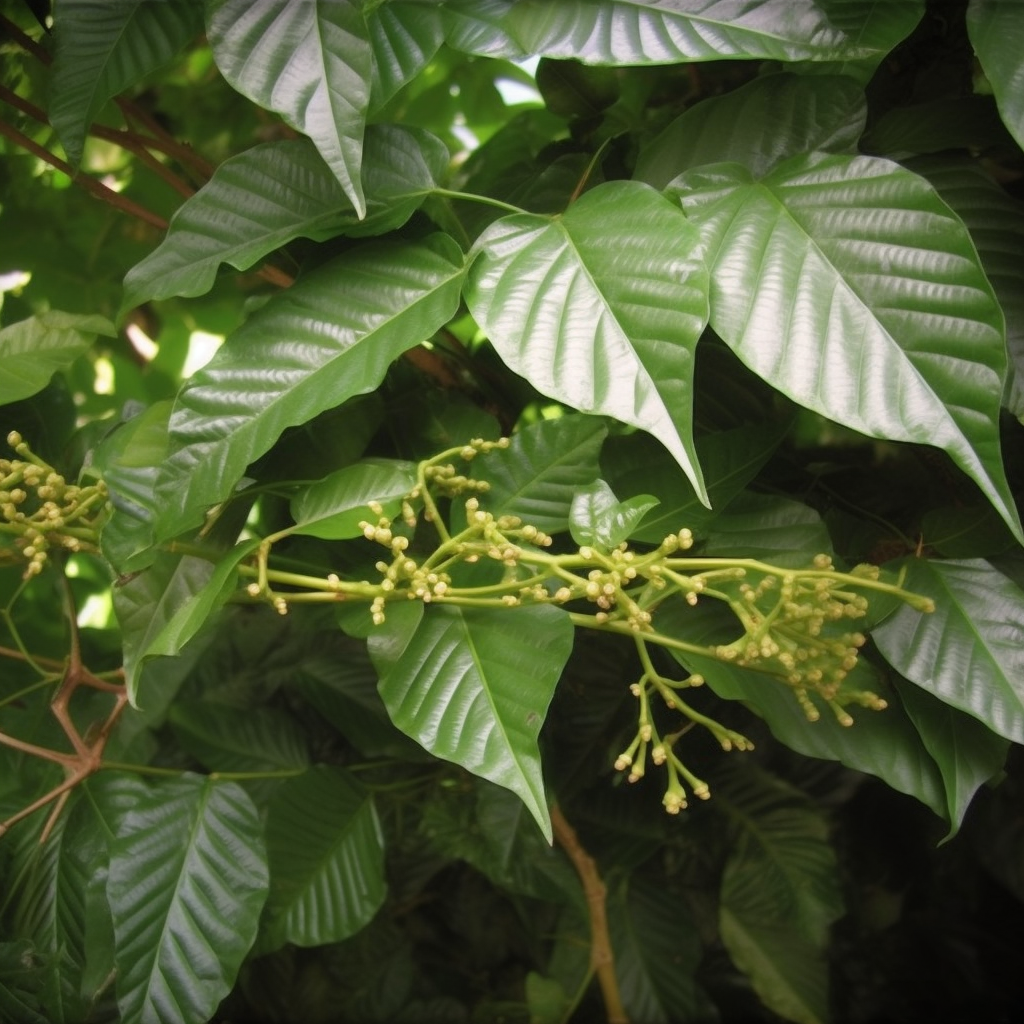
Macaranga barteri
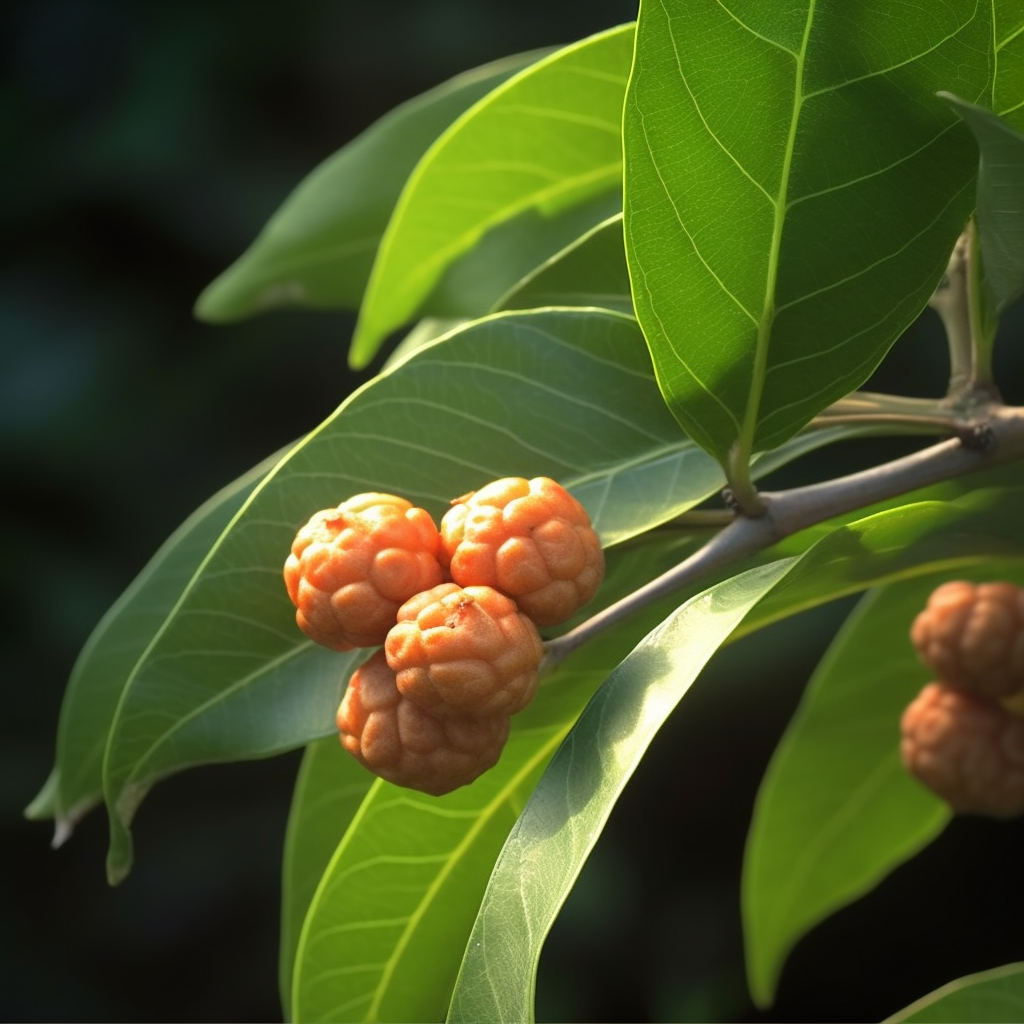
Maclura cochinchinensis
- 13. Bio-Prospecting Of Plant Resources For Validation Of Indigenous Knowledge And The Search For Novel Herbal Drugs In Nepal
- A Validated Hptlc Method For Quantitative Analysis Of Morin In Maclura Cochinchinensis Heartwood
- Anti-Herpes Simplex virus Component Isolated From Maclura Cochinchinensis
- Antiviral Flavonoids From The Root Bark Of Morus Alba L.
- Asia Is The Mine Of Natural Antiviral Products For Public Health
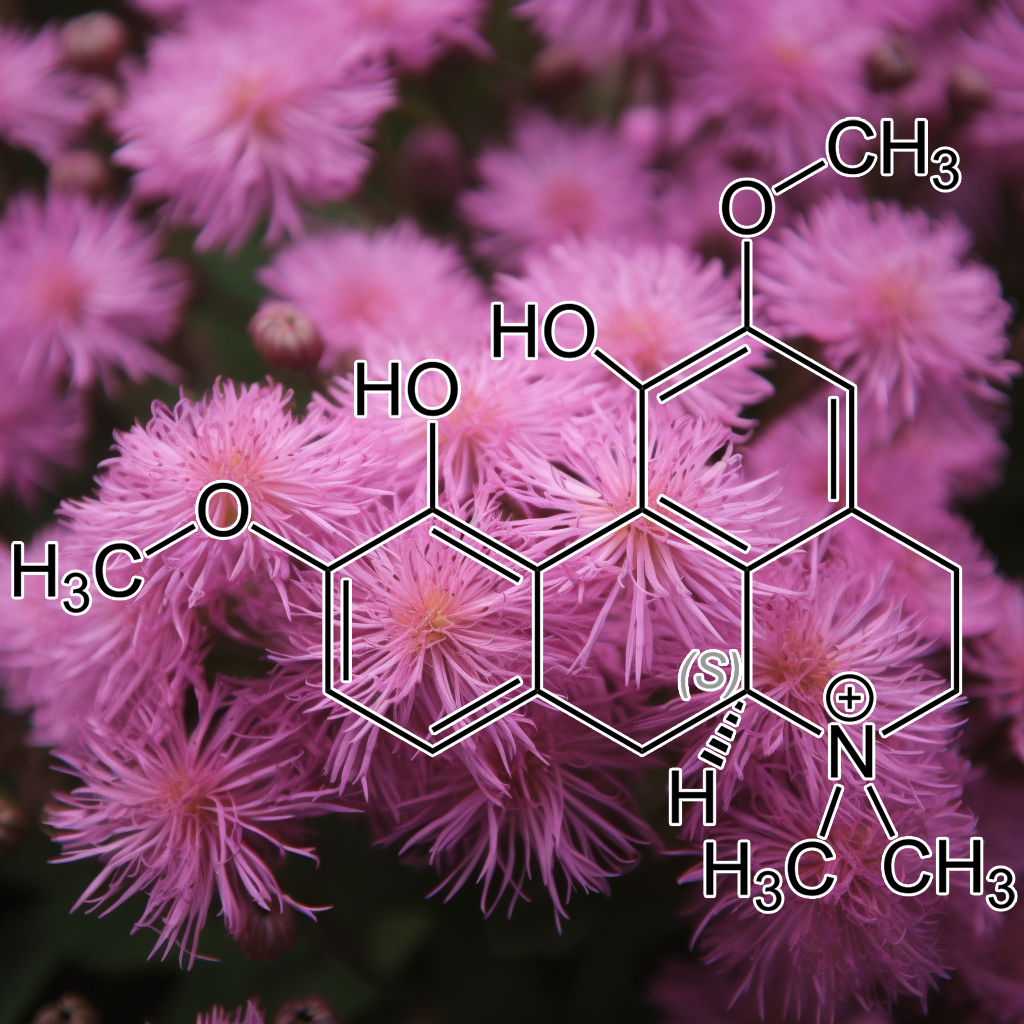
Magnoflorine (Thalictrum aquilegifolium)
- A Novel Systems Pharmacology Platform To Dissect Action Mechanisms Of Traditional Chinese Medicines For Bovine viral Diarrhea Disease
- A Review Of The Most Important Native Medicinal Plants Of Iran Effective On Cutaneous Leishmaniasis In Mouse Model
- A Review On Ayurvedic Medicinal Herbs As Remedial Perspective For Covid-19
- Analysis Of Essential Oil From The Stem Of Chasmathera Dependens.
- Anti-Hiv Alkaloids From Toddalia Asiatica
- Antitumor And Antiviral Activities Of Magnolia Grandiflora L. Leaves Growing In Egypt
- Atural And Synthetic Hiv-1 Non-Nucleoside Reverse Transcriptase Inhibitors: A Theoretical Approach
- Chemical Constituents And Biological Activities Of The Genus Zanthoxylum: A Review
- Coptidis Rhizoma Extract Inhibits Replication Of Respiratory Syncytial virus In Vitro And In Vivo By Inducing Antiviral State
- Cytotoxic And Antiviral Activities Of Aporphine Alkaloids Of Magnolia Grandiflora L.
- Design And Development Of Anti-Hepatitis B virus Agents
- Drug Design For Hemagglutinin: Screening And Molecular Dynamics From Traditional Chinese Medicine Database
- Efficacy And Safety Of Yinqisanhuang-Antiviral Decoction In Chronic Hepatitis B: Study Protocol For A Randomized, Placebo-Controlled, Double-Blinded Trial
- Efficacy Of Natural Compounds From Tinospora Cordifolia Against Sars-Cov-2 Protease, Surface Glycoprotein And Rna Polymerase.
- Ethnomedicines Of Indian Origin For Combating Covid-19 Infection By Hampering The viral Replication: Using Structure-Based Drug Discovery Approach
- Evaluation Of Natural Products As Inhibitors Of Human Immunodeficiency virus Type
- In Silico Computational Screening Of Kabasura Kudineer-Official Siddha Formulation And Jacom Against Sars-Cov-2 Spike Protein
- Isoquinoline Alkaloids And Their Antiviral, Antibacterial, And Antifungal Activities And Structure-Activity Relationship
- Plant Antiviral Agents; Vi. 1 3-Methoxyflavones As Potent Inhibitors Of Viral-Induced Block Of Cell Synthesis
- Sulfated Modification Of Epimedium Polysaccharide And Effects Of The Modifiers On Cellular Infectivity Of Ibdv
- Toxicoderma Due To Rhizoma Coptidis
- Treatment Of Human Influenza A (H5N1) Infection With Ching-Wen-Bai-Du-Yin
- Two New Alkaloids And Active Anti-Hepatitis B virus Constituents From Hypserpa Nitida
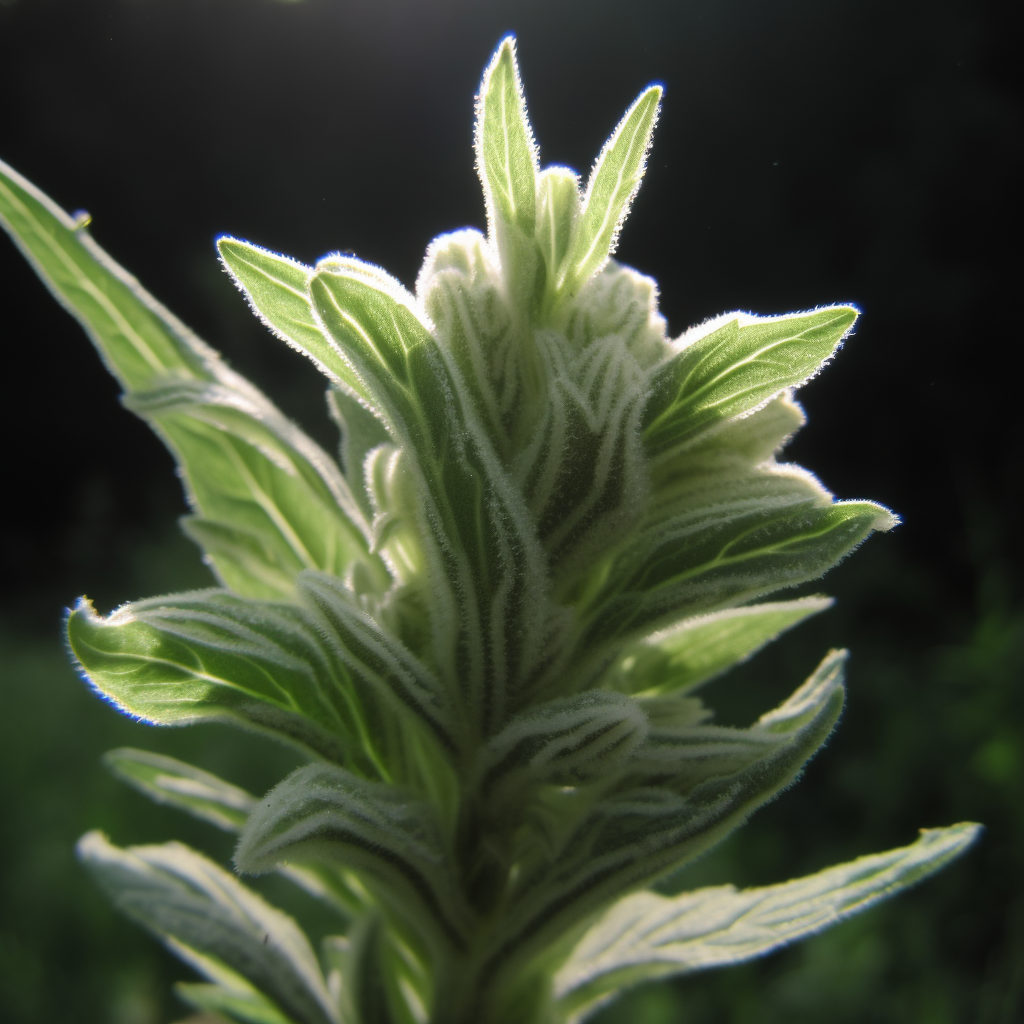
Marrubium peregrinum L (Lamiaceae)
- A Plant-Derived Flavonoid Inhibits Entry Of All Hcv Genotypes Into Human Hepatocytes
- Antioxidant Properties Of Marrubium Peregrinum L.(Lamiaceae) Essential Oil
- Hepatitis C virus And Natural Compounds: A New Antiviral Approach?
- Medicinal Plants Against Hepatitis C virus
- Validation Of Antiviral Potential Of Herbal Ethnomedicine
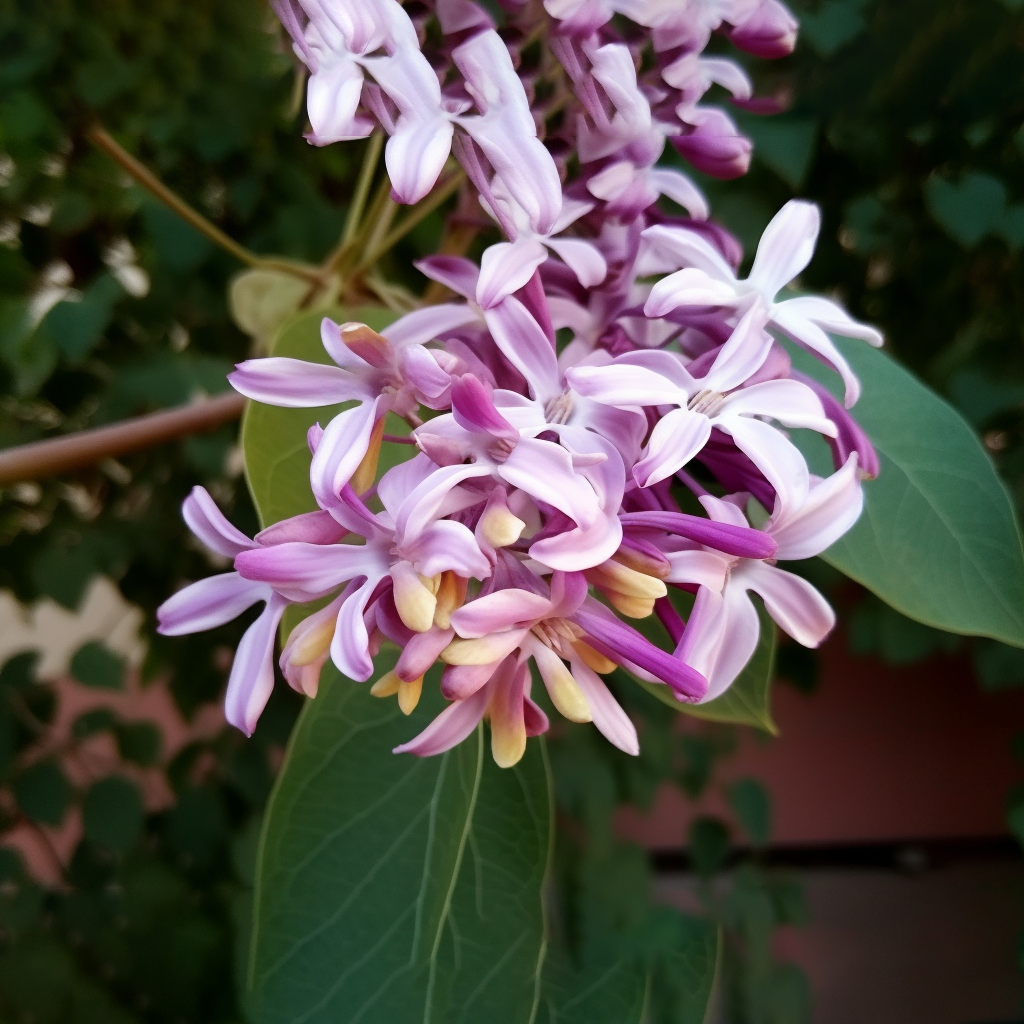
Meliacine (Melia azedarach)
- An Antiviral Principle Present In A Purified Fraction From Melia Azedarach L. Leaf Aqueous Extract Restrains Herpes Simplex virus Type 1 Propagation
- Antiviral Activity Of Meliacine On The Replication Of A Thymidine Kinase-Deficient Mutant Of Herpes Simplex virus Type 1 Alone And In Combination With Acyclovir
- Effect Of Meliacine, A Plant Derived Antiviral, On Tumor Necrosis Factor Alpha
- Inhibition Of Herpes Simplex virus Type-1 Multiplication By Meliacine, A Peptide Of Plant Origin
- Meliacine, An Antiviral Compound From Melia Azedarach L., Inhibits Interferon Production
- Purification And Partial Characterization Of An Antiviral Active Peptide From Melia Azedarach L.
- Therapeutic Action Of Meliacine, A Plant-Derived Antiviral, On Hsv-Induced Ocular Disease In Mice
- Therapeutic Effect Of Meliacine, An Antiviral Derived From Melia Azedarach L., In Mice Genital Herpetic Infection
- Treatment With Meliacine, A Plant Derived Antiviral, Prevents The Development Of Herpetic Stromal Keratitis In Mice
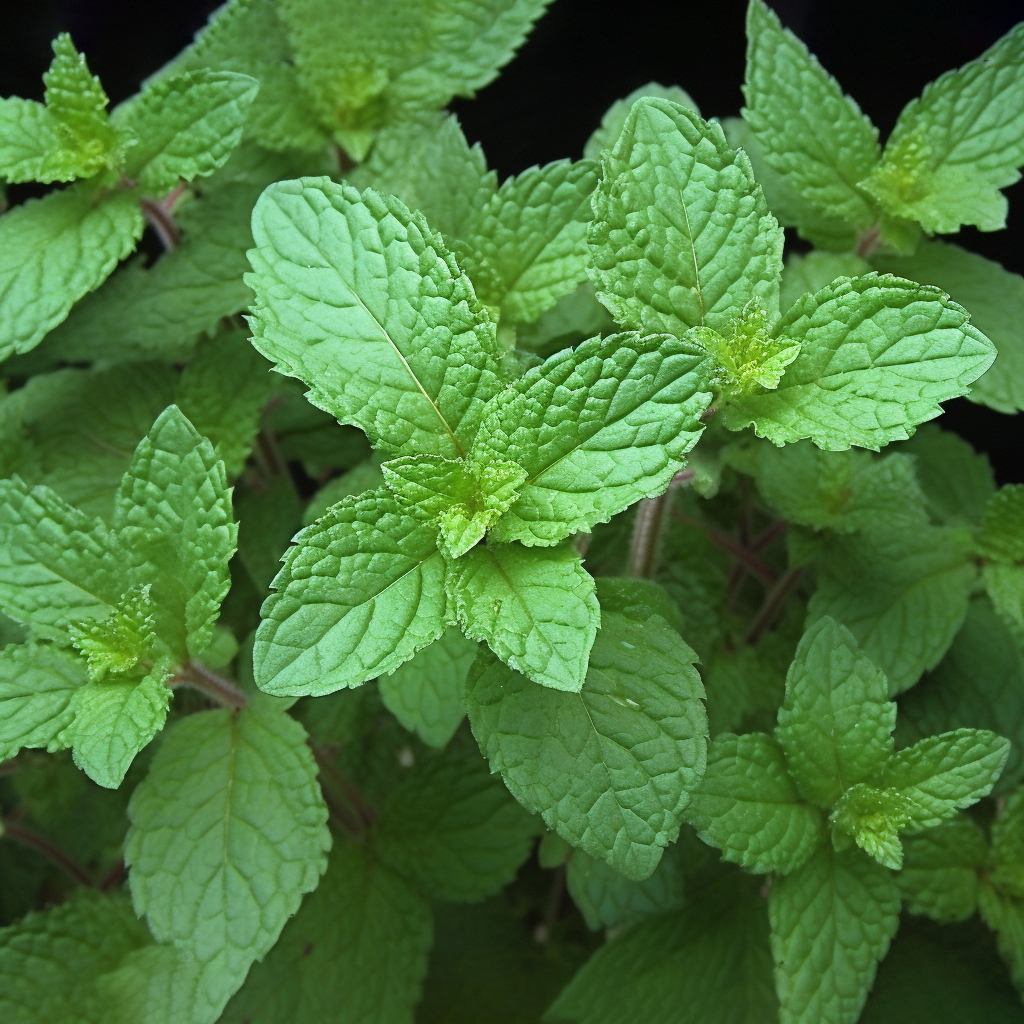
Mint extract
- Liquid Phase Microextraction Combined With High-Performance Liquid Chromatography For The Analysis Of Flavonoids In Echinophora Platyloba Dc. And Mentha Piperita
- A Review Of The Bioactivity And Potential Health Benefits Of Peppermint Tea (Mentha Piperita L.)
- Antibacterial And Antioxidant Activities Of Mentha Piperita L.
- Antifungal Activity Of Volatiles From Lemongrass (Cymbopogon Citratus) And Peppermint (Mentha Piperita) Oils Against Some Respiratory Pathogenic Species Of …
- Antimicrobial Activity Of Mentha Piperita And Saturenja Hortensis In A Murine Model Of Cutaneous Protothecosis
- Antimicrobial And Antiviral Effects Of Essential Oils From Selected Umbelliferae And Labiatae Plants And Individual Essential Oil Components
- Antinociception Effects Of Ethanolic Extract Of Mentha Piperita Leaves In Adult Male Mice
- Antiviral Effect Of The Lamiaceae Family Against Herpes Simplex
- Antiviral Effect Of Three Vegetal Infusions (Mentha Piperita, Cinnamomum Zeylanicum Blume And Ocimum Basilicum Lineo) On A Murine Herpetic Infection
- Antiviral Substances In Plants Of The Mint Family (Labiatae). Iii. Peppermint (Mentha Piperita) And Other Mint Plants.
- Chemical Composition And Anti-Inflammatory, Cytotoxic And Antioxidant Activities Of Essential Oil From Leaves Of Mentha Piperita Grown In China
- Chemical Composition, Antifungal And Antibiofilm Activities Of The Essential Oil Of Mentha Piperita L.
- Comparative In Vitro Anthelmintic Activity Of Chloroform And Acetone Extracts Of Mentha Piperita
- Composition, Antifungal Activity And Main Fungitoxic Components Of The Essential Oil Of Mentha Piperita L.
- Effects Of Dietary Peppermint (Mentha Piperita) On Growth Performance, Chemical Body Composition And Hematological And Immune Parameters Of Fry Caspian White …
- Elucidation Of The Synergistic Action Of Mentha Piperita Essential Oil With Common Antimicrobials
- Encapsulation Of Mentha Piperita Essential Oils In Chitosan–Cinnamic Acid Nanogel With Enhanced Antimicrobial Activity Against Aspergillus Flavus
- Extraction, Preliminary Characterization And Evaluation Of In Vitro Antitumor And Antioxidant Activities Of Polysaccharides From Mentha Piperita
- In Vitro And In Vivo Anti-Tobacco Mosaic Virus Activities Of Essential Oils And Individual Compounds
- In Vitro Antiviral, Anti-Inflammatory, And Antioxidant Activities Of The Ethanol Extract Of Mentha Piperita L.
- Inhibitory Effect Of Mentha Piperita Extracts Against Herpes Simplex Virus Isolated From Eye Infection
- Pharmacological Activities Of Mentha Piperita-Mini Review
- Preparative Separation Of Menthol And Pulegone From Peppermint Oil (Mentha Piperita L.) By High-Performance Counter-Current Chromatography
- Properties Of Mentha Piperita: A Brief Review
- Retention Of Aroma Compounds From Mentha Piperita Essential Oil By Cyclodextrins And Crosslinked Cyclodextrin Polymers
- The Inhibitory Effect Of Essential Oils On Herpes Simplex Virus Type‐1 Replication In Vitro
- The Role Of Peppermint (Mentha Piperita) On Performance In Broiler Diets
- Virucidal Effect Of Peppermint Oil On The Enveloped Viruses Herpes Simplex Virus Type 1 And Type 2 In Vitro
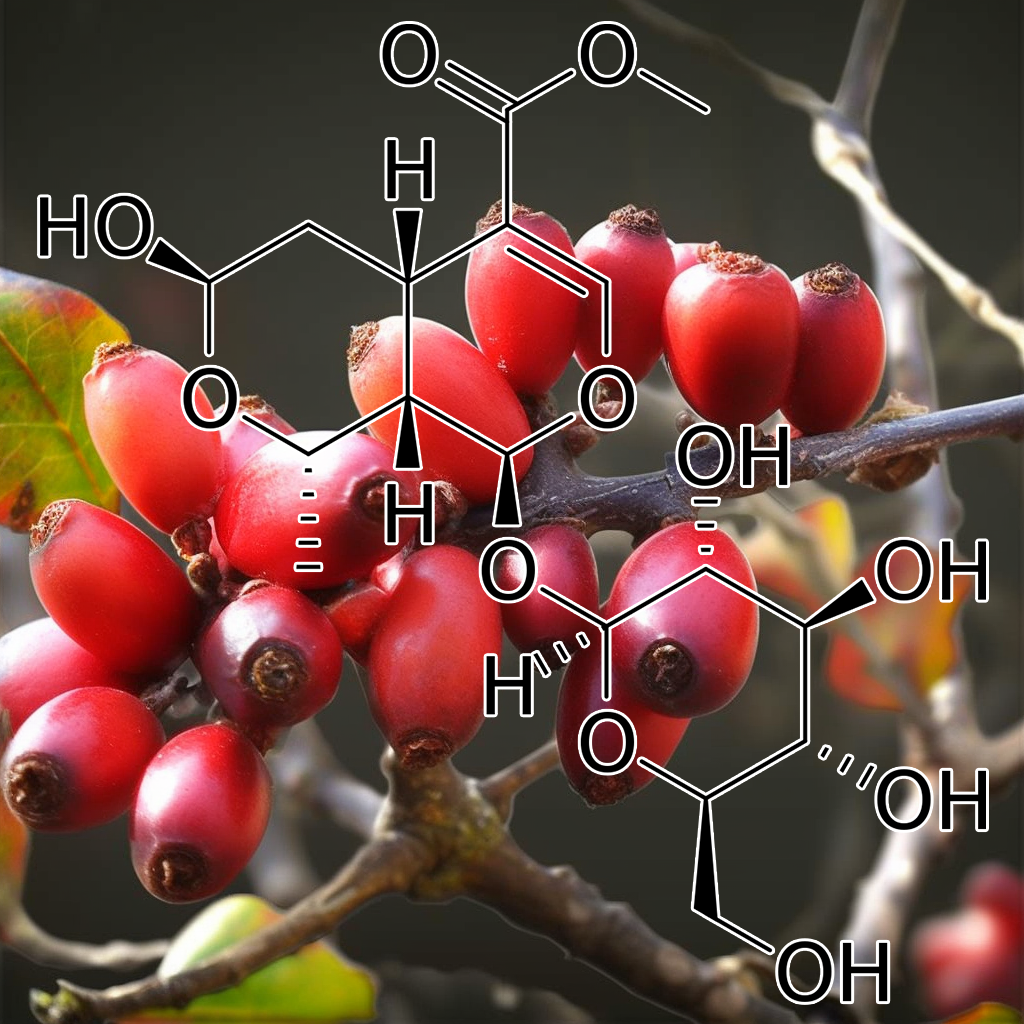
morroniside (Cornus officinalis)
- Cornus Officinalis Extract (Fru
- In Silico Screening Of Hepatitis C virus Ns3/4A Protease Inhibitor (S) From Cornus Officinalis And Syzygium Aromaticum.
- Determination Of Loganin In The Cornus Officinalis From Different Sources By Hplc [J]
- Effects Of Extract From Cornus Officinalis On Nitrc Oxide And Nf-Κβ In Cortex Of Cerebral Infarction Rat Model [J]
- Evaluation Of The Potential Hypoglycemic And Beta-Cell Protective Constituents Isolated From Corni Fructus To Tackle Insulin-Dependent Diabetes Mellitus
- Folium Sennae
- Immmunopharmacological Study Of The Total Glucoside Fraction From Cornus Officinalis: Ⅱ. In Vitro Suppressive Effect Of The …
- Iridoids Are Natural Glycation Inhibitors
- Longevity Depends On A Balance Between Proinflammatory And Anti-Inflammatory Factors: Use Of Tcms And Natural Products
- Recent Applications Of Capillary Electrophoresis In The Analysis Of Traditional Chinese Medicines
- Study On The Chemical Constituents From The Fruit Of Corni Fructus
- The Journal Of Phytopharmacology
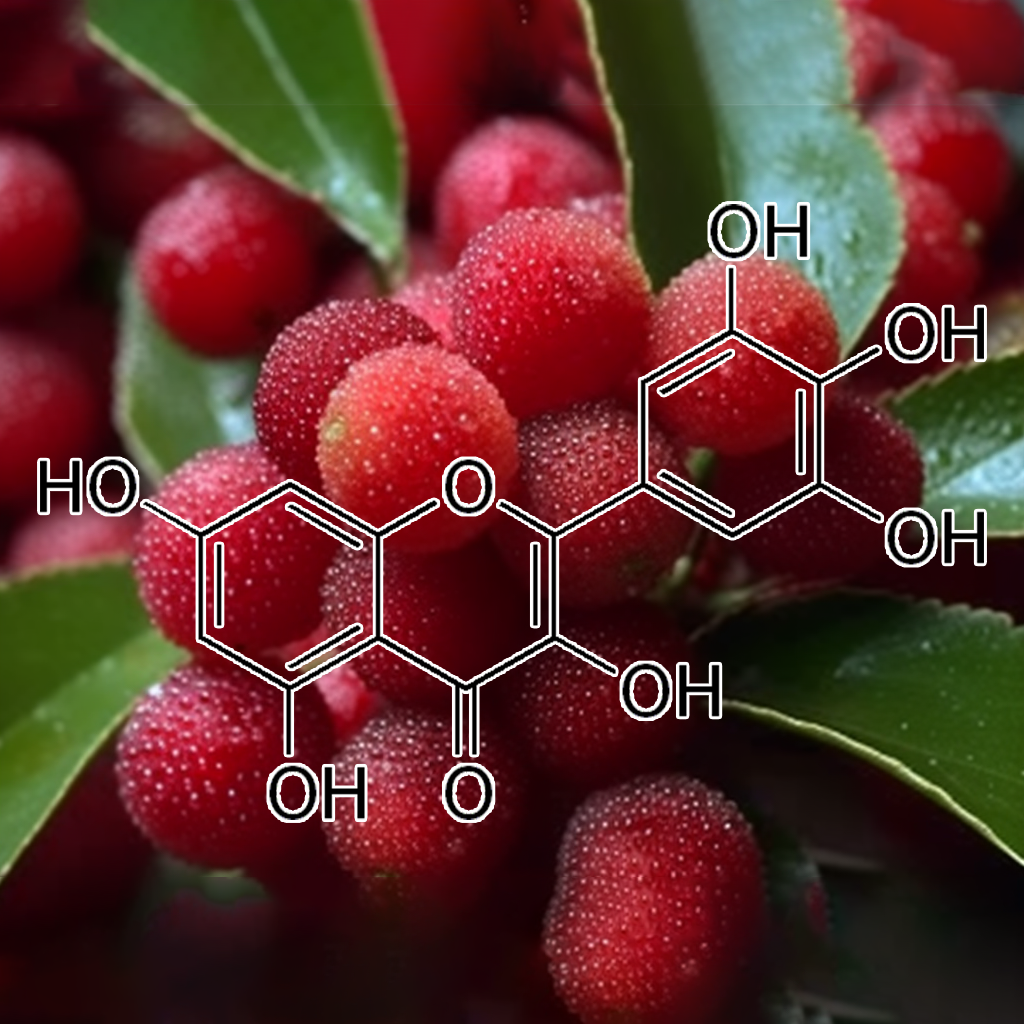
myricetin (black Bayberry)
- Bioassay-Guided Isolation Of Anti-Hepatitis B virus Flavonoid Myricetin-3-O-Rhamnoside Along With Quercetin From Guiera Senegalensis Leaves
- Identification Of Myricetin As An Ebola virus Vp35–Double-Stranded Rna Interaction Inhibitor Through A Novel Fluorescence-Based Assay
- Inhibition Of African Swine Fever virus Protease By Myricetin And Myricitrin
- Inhibition Of Herpes Simplex virus By Myricetin Through Targeting viral Gd Protein And Cellular Egfr/Pi3K/Akt Pathway
- Synthesis And Antibacterial And Antiviral Activities Of Myricetin Derivatives Containing A 1, 2, 4-Triazole Schiff Base
- Synthesis And Antiviral Activity Of Novel Myricetin Derivatives Containing Ferulic Acid Amide Scaffolds

naringenin (Amacardi-um occidentale)
- Apolipoprotein B–Dependent Hepatitis C virus Secretion Is Inhibited By The Grapefruit Flavonoid Naringenin
- Corrigendum: The Citrus Flavanone Naringenin Impairs Dengue virus Replication In Human Cells
- Effect Of Naringenin On The Replication Of Herpes Simplex virus
- Effect Of Naringenin, Hesperetin And Their Glycosides Forms On The Replication Of The 17D Strain Of Yellow Fever virus
In Vitro Antiviral Activity Of Fisetin, Rutin And Naringenin Against Dengue virus Type-2 - Inhibition Of Chikungunya virus Replication By Hesperetin And Naringenin
- Naringenin Ameliorates Insulin Resistance By Modulating Endoplasmic Reticulum Stress In Hepatitis C virus -Infected Liver
- Naringenin Attenuates Hepatitis B virus X Protein-Induced Hepatic Steatosis
- Naringenin Improve Hepatitis C virus Infection Induced Insulin Resistance By Increase Pten Expression Via P53-Dependent Manner
- Naringenin Inhibits The Assembly And Long-Term Production Of Infectious Hepatitis C virus Particles Through A Ppar-Mediated Mechanism
- Naringenin, A Flavanone With Antiviral And Anti‐Inflammatory Effects: A Promising Treatment Strategy Against Covid‐19
- The Citrus Flavanone Naringenin Impairs Dengue virus Replication In Human Cells
- The Citrus Flavonoid Naringenin Impairs The In Vitro Infection Of Human Cells By Zika virus
- The Grapefruit Flavonoid Naringenin As A Hepatitis C virus Therapy: Efficacy, Mechanism And Delivery
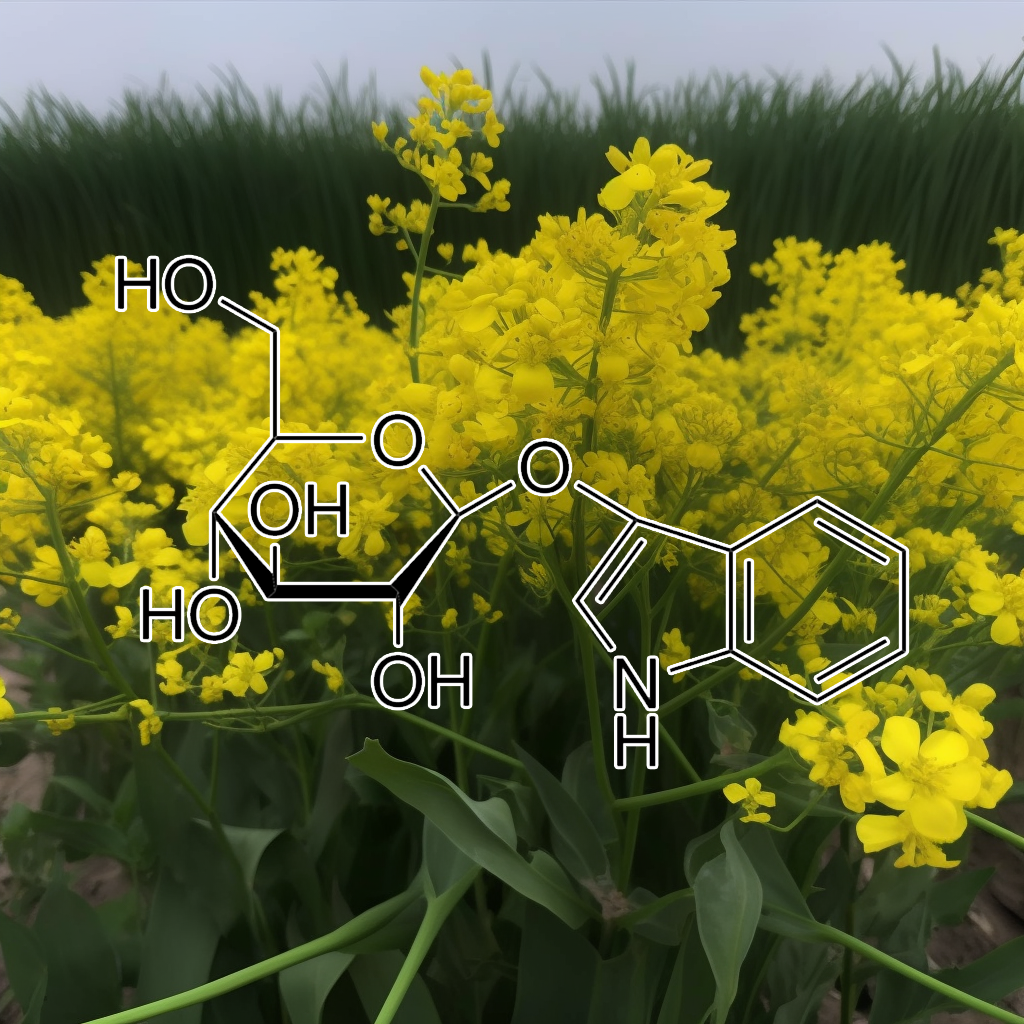
ndoxyl-β-glucoside (Isatis indigotica)
- Antiviral glycosidic bisindole alkaloids from the roots of Isatis indigotica
Evaluation on antiendotoxic action and antiviral action in vitro of tetraploid Isatis indigotica
Aromatic compounds from an aqueous extract of “ban lan gen” and their antiviral activities
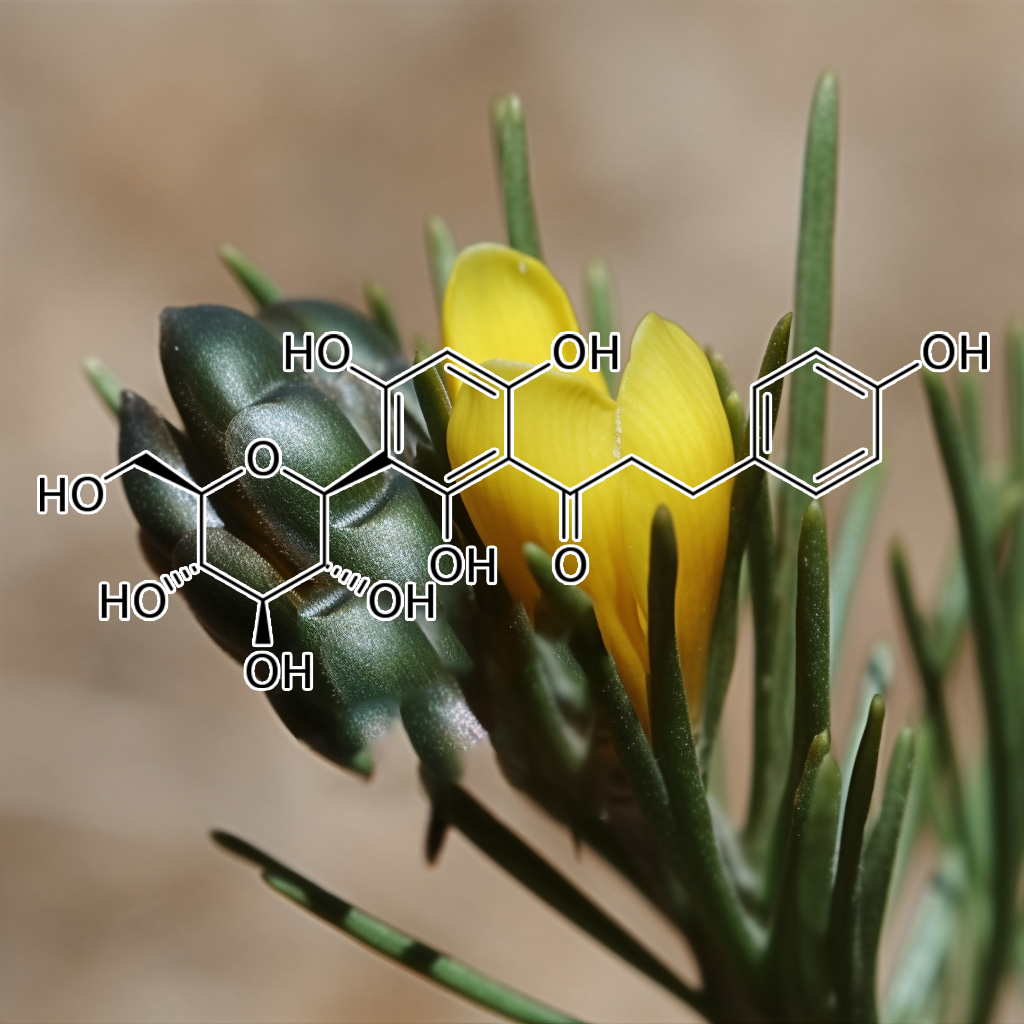
nothofagin (Aspalathus Linearis)
- A Kinetic And Equilibrium Study Of Rooibos Tea Infusions.
- A Review Of The Bioactivity Of South African Herbal Teas: Rooibos (Aspalathus Linearis) And Honeybush (Cyclopia Intermedia)
- Antioxidant Properties Of Rooibos (Aspalathus Linearis)–In Vitro And In Vivo Evidence
- Antioxidants Of Rooibos Tea-A Possible Explanation For Its Health Promoting Properties?
- Antiviral Activity Of Aspalathus Linearis Against Human Influenza virus
- Aspalathin A Unique Phytochemical From The South African Rooibos Plant (Aspalathus Linearis): A Mini Review
- Development Of A Sensory Lexicon And Sensory Wheel For Rooibos (Aspalathus Linearis) And The Role Of Its Phenolic Composition On Taste And Mouthfeel.
- Hepatotoxicity Due To Red Bush Tea Consumption: A Case Report
- Identification Of Phenolic Compounds In Aqueous And Ethanolic Rooibos Extracts (Aspalathus Linearis) By Hplc-Esi-Ms (Tof/It)
- Rooibos Tea As A Likely Health Food Supplement
- Rooibos Tea Extracts Inhibit Osteoclast Formation And Activity Through The Attenuation Of Nf-Κb Activity In Raw264. 7 Murine Macrophages
- Rooibos Tea: New Research Documents Antioxidant And Anticancer Properties
- Rooibos Tea: Research Into Antioxidant And Antimutagenic Properties
- The Effects Of Rooibos (Aspalathus Linearis), Green Tea (Camellia Sinensis) And Commercial Rooibos And Green Tea Supplements On Epididymal Sperm In …
- Traditional Medicines In Africa: An Appraisal Of Ten Potent African Medicinal Plants

Oleanolic acid (olea europaea)
- Antiviral Activities Of Oleanolic Acid And Its Analogues
- Antiviral Effects Of Oleanolic Acid On Guniea Cytomegalovirus In Vitro
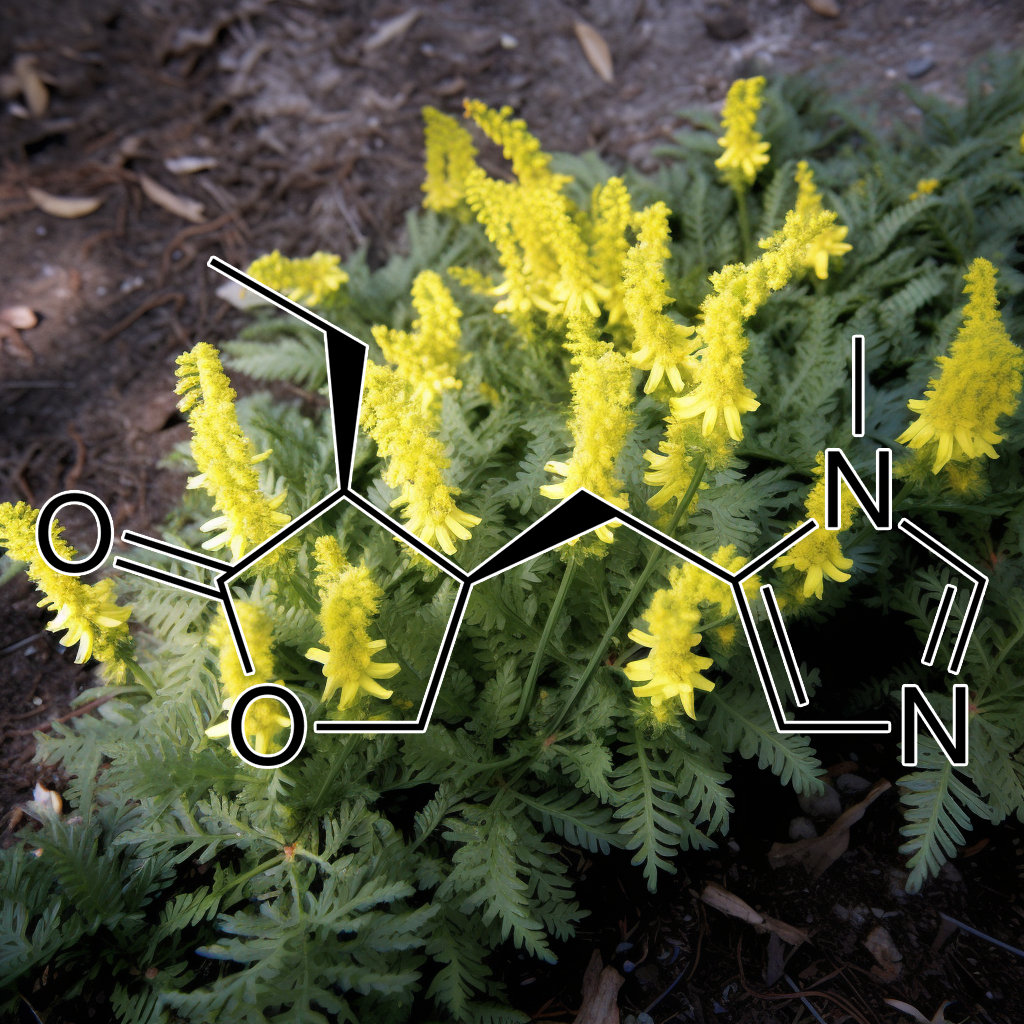
ophiocarpine (Corydalis ophiocarpa)
- A Perspective On The Anti-Infective Activity Of Goldenseal (Hydrastis Canadensis) And Its Contribution To The Development Of Multidrug Pump Inhibitors
- Anti-Hepatitis B Activity Of Isoquinoline Alkaloids Of Plant Origin
- Antiviral And Antimicrobial Profiles Of Selected Isoquinoline Alkaloids From Fumaria And Corydalis Species
- Cytotoxicity, Antiviral And Antimicrobial Activities Of Alkaloids, Flavonoids, And Phenolic Acids
- Plant Alkaloids: Classification, Isolation, And Drug Development
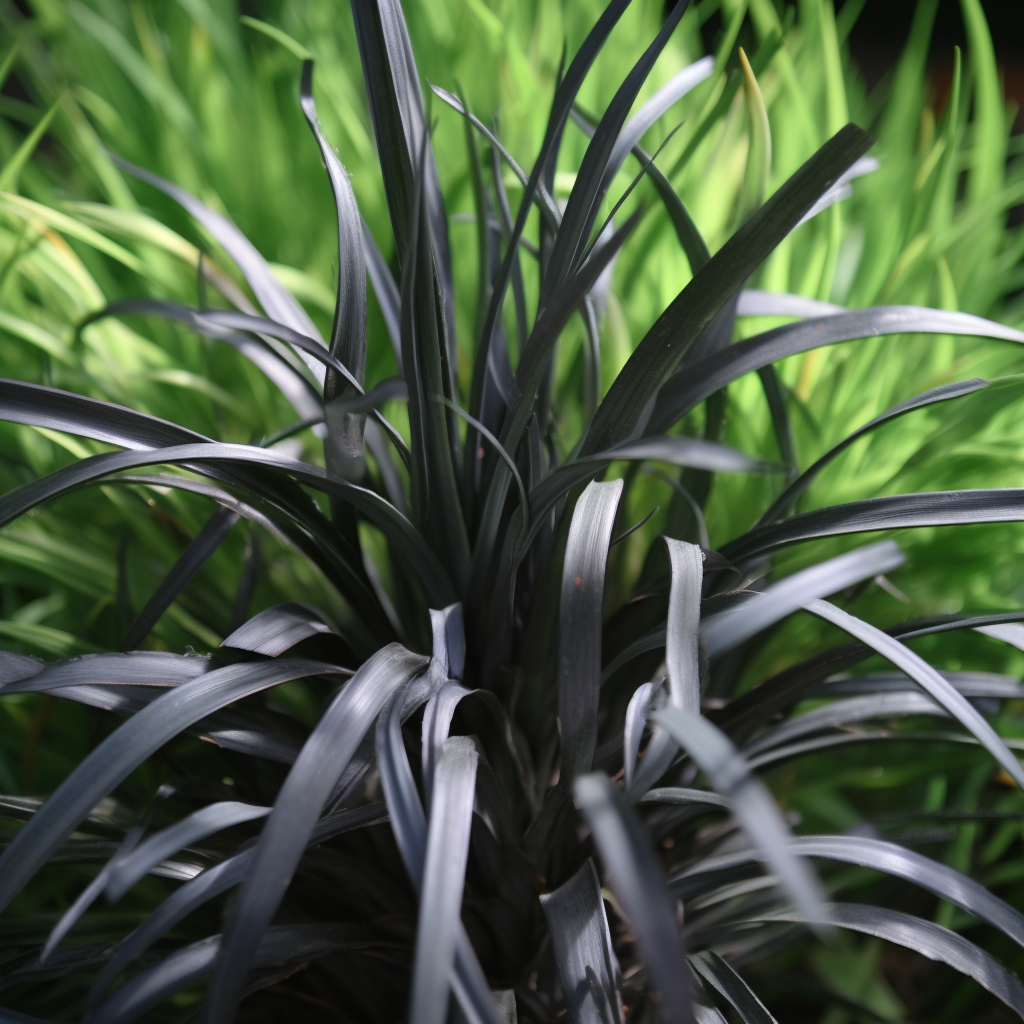
ophiopogonin A (Ophiopogon Root)
- Traditional Chinese Herbal Medicine As A Source Of Molecules With Antiviral Activity
- The Role Of Standardized Herbal Formulas In Contemporary Healthcare Delivery
- The Optimization Of Sulfation Modification Conditions For Ophiopogonpolysaccharide Based On Antiviral Activity
- Study On Biodiversity And Feature Of Enzyme Excreting About Endophytic Actinomycetes Isolated From Ophiopogon Japonicus Ker-Gawl. And Gynura Japonica Juel.[J]
- Studies On Antiviral Activities Of Polysaccharides And Their Derivatives [J]
- Structure And Bioactivities Of Saponin And Its Application In Aquaculture
- Purification, Characterization And Molecular Cloning Of A Novel Mannose-Binding Lectin From Rhizomes Of Ophiopogon Japonicus With Antiviral And Antifungal Activities
- Preparation And Biological Activity Of Saponin From Ophiopogon Japonicus
- Potent Antiviral Activity Of Carbohydrate-Specific Algal And Leguminous Lectins From The Brazilian Biodiversity
- Polygonatum Cyrtonema Lectin Induces Murine Fibrosarcoma L929 Cell Apoptosis Via A Caspase-Dependent Pathway As Compared To Ophiopogon Japonicus Lectin
- Ophiopogon Polysaccharide Liposome Can Enhance The Non-Specific And Specific Immune Response In Chickens
- Bioinformatics Analyses Of The Mannose-Binding Lectins From Polygonatum Cyrtonema, Ophiopogon Japonicus And Liparis Noversa With Antiproliferative And Apoptosis …
- Antitumor Activity Of Bacterial Exopolysaccharides From The Endophyte Bacillus Amyloliquefaciens Sp. Isolated From Ophiopogon Japonicus
- Antioxidative And Immunological Activities Of Ophiopogon Polysaccharide Liposome From The Root Of Ophiopogon Japonicus
- A New Steroidal Saponin From The Tubers Of Ophiopogon Japonicus And Its Protective Effect Against Cisplatin-Induced Renal Cell Toxicity
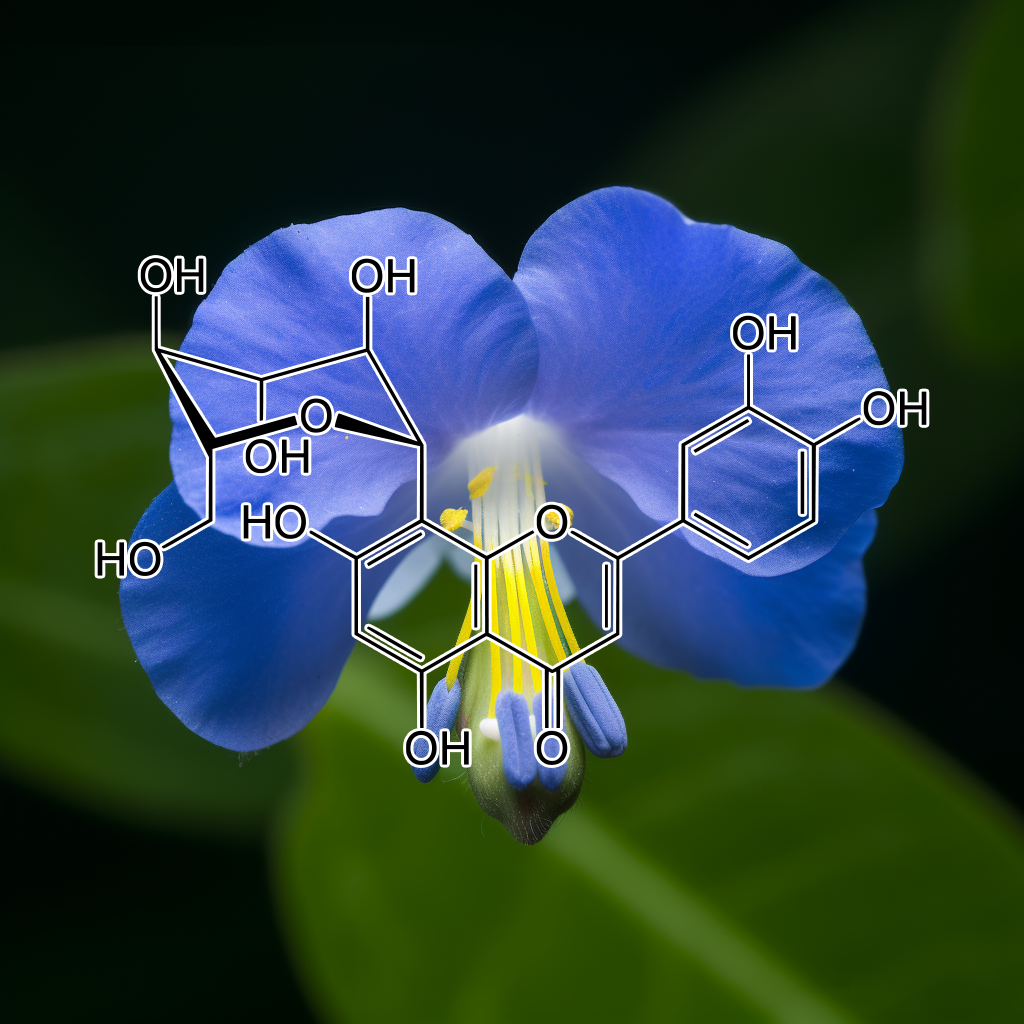
Orientin (Globeflower Extract)
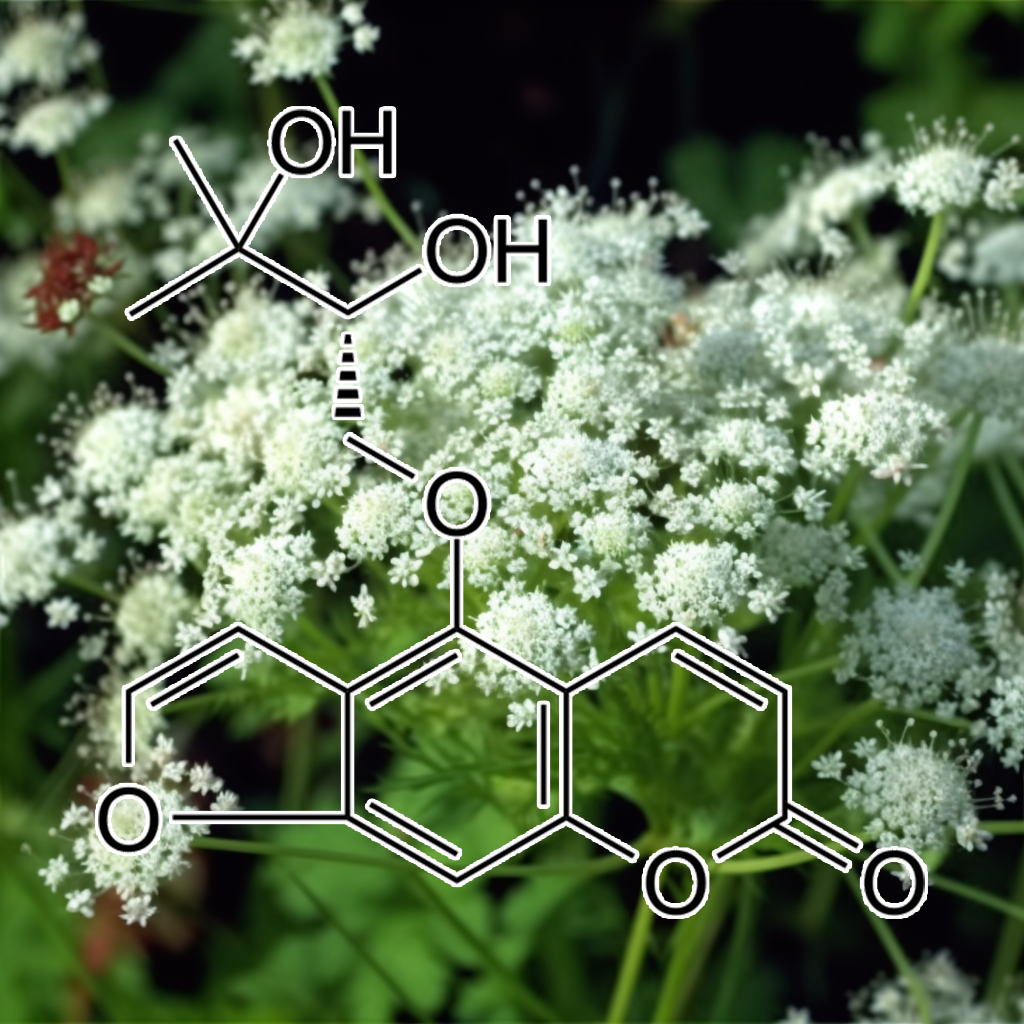
oxypeucedanin
(Angelica dahurica Extract)
- Analgesic And Anti-Inflammatory Effect Of The Aqueous Extract Of Angelica Dahurica
- Anti-Inflammatory Coumarins With Short-And Long-Chain Hydrophobic Groups From Roots Of Angelica Dahurica Cv. Hangbaizhi
- Antiviral Activity Of Furanocoumarins Isolated From Angelica Dahurica Against Influenza A virus es H1N1 And H9N2
- Chemical Constituents In Roots Of Angelica Dahurica Var. Formosana [J]
- First Report Of Cucumber Mosaic virus Infecting Bahizi (Angelica Dahurica) In China
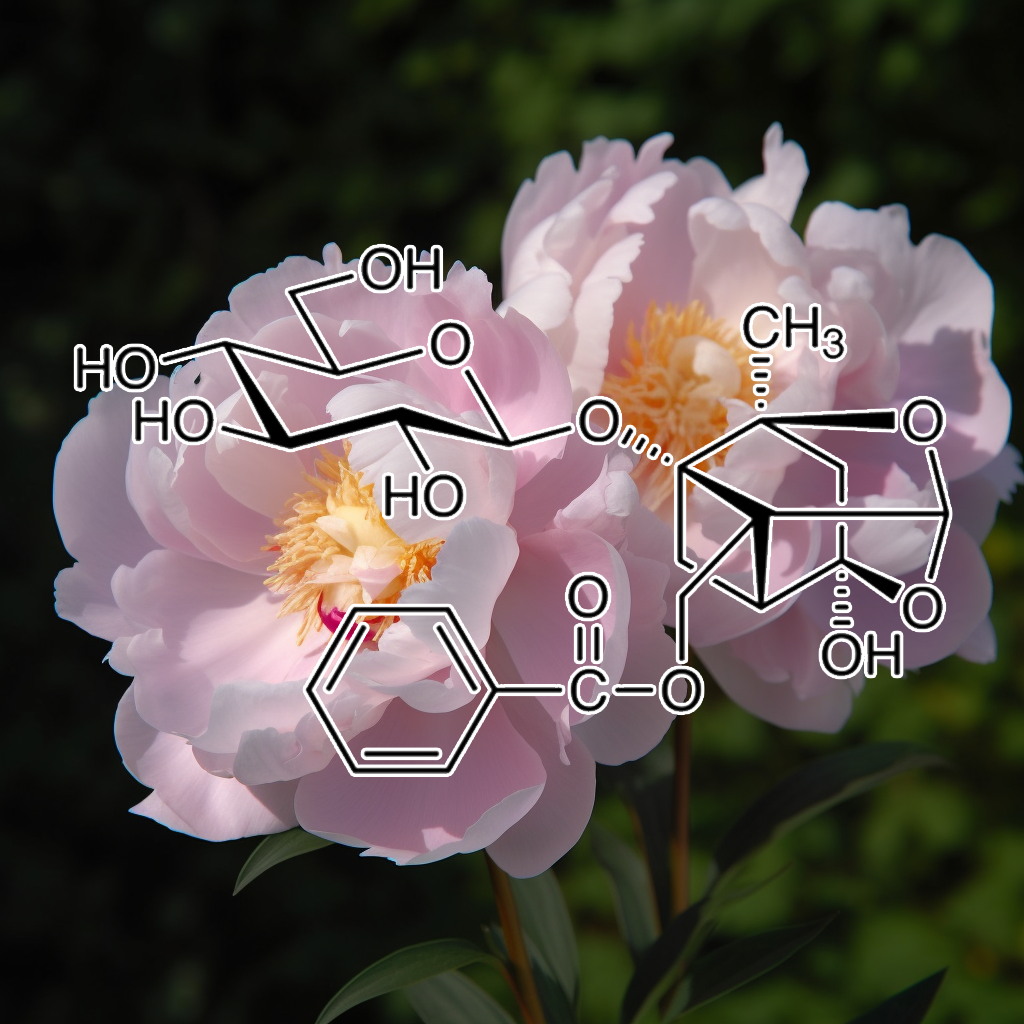
paeoniflorin (Radix Paeoniae)
- Blockade Of Paeoniflorin On L-Type Calcium Channel In Isolated Rat Ventricular Myocytes
- Content Determination Of The Paeoniflorin In Baobaole Granule By Hplc
- Determination Of Paeoniflorin In Huayuquban Tablets With Hplc Method
- Determination Of Paeoniflorin In Weishukang Tablets By Hplc Method [J]
- Determination The Content Of Paeoniflorin In Libiling Tablets By Hplc
- Effects Of Glycyrrhizin On The Pharmacokinetics Of Paeoniflorin In Rats And Its Potential Mechanism
- Paeonia Lactiflora
- Paeoniflorin Ameliorates Interferon-Alpha-Induced Neuroinflammation And Depressive-Like Behaviors In Mice
- Paeoniflorin Promotes Angiogenesis And Tissue Regeneration In A Full‐Thickness Cutaneous Wound Model Through The Pi3K/Akt Pathway
- Paeoniflorin Protects Against Liver Ischemia/Reperfusion Injury In Mice Via Inhibiting Hmgb1‐Tlr4 Signaling Pathway
- Paeoniflorin, A Novel Heat Shock Protein–Inducing Compound
- Study On The Dynamic Change Of Paeoniflorin Content From Three Herbaceous Peony Cultivars [J]
- Study The Serum Pharmacological Effects Of Paeoniflorin On Proliferation Of Bel-7420 Cells In Human Hepctocellular Carcinoma
- Synthesis, Characterization And In Vitro Dna Binding Studies Of A New Copper(Ii) Complex Containing An Antiviral Drug, Valganciclovir
- Uplc–Ms/Ms Determination Of Paeoniflorin, Naringin, Naringenin And Glycyrrhetinic Acid In Rat Plasma And Its Application To A Pharmacokinetic Study After Oral
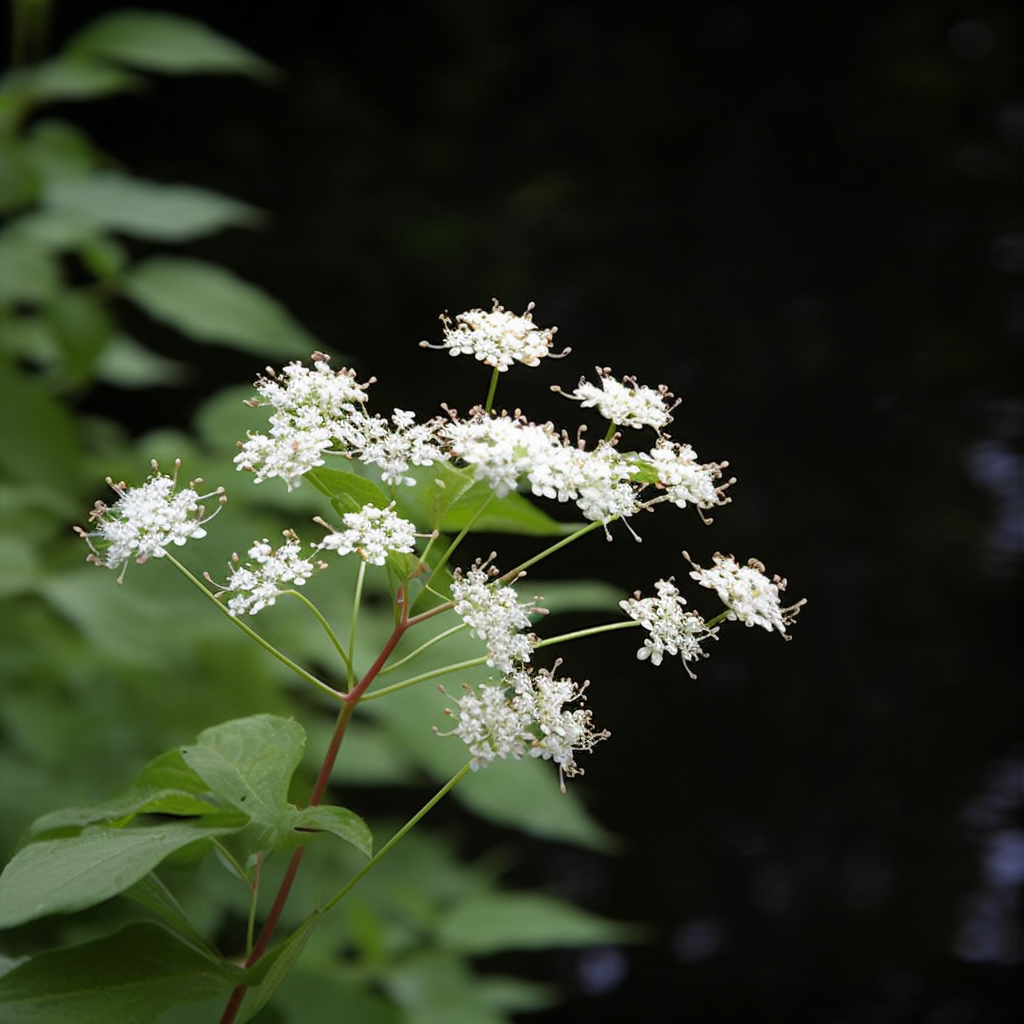
Patrinia villosa
- Antiviral Chinese Medicinal Herbs Against Respiratory Syncytial virus
- Evaluation To The Antifungal Activity Of Total Flavonoids Extract From Patrinia Villosa Juss And Optimization By Response Surface Methodology
- In Vitro Antiviral Activities Of Chinese Medicinal Herbs Against Duck Hepatitis B virus
- Screening Of Antiviral Medicinal Plants Against Avian Influenza virus H1N1 For Food Safety
- Studies On Anti-Tumor Activity In Vitro Of Laricircsinol From Patrinia Villosa Juss [J]
- The Anti-Tumor Effect Of The Extracts Of Patrinia Villosa Juss
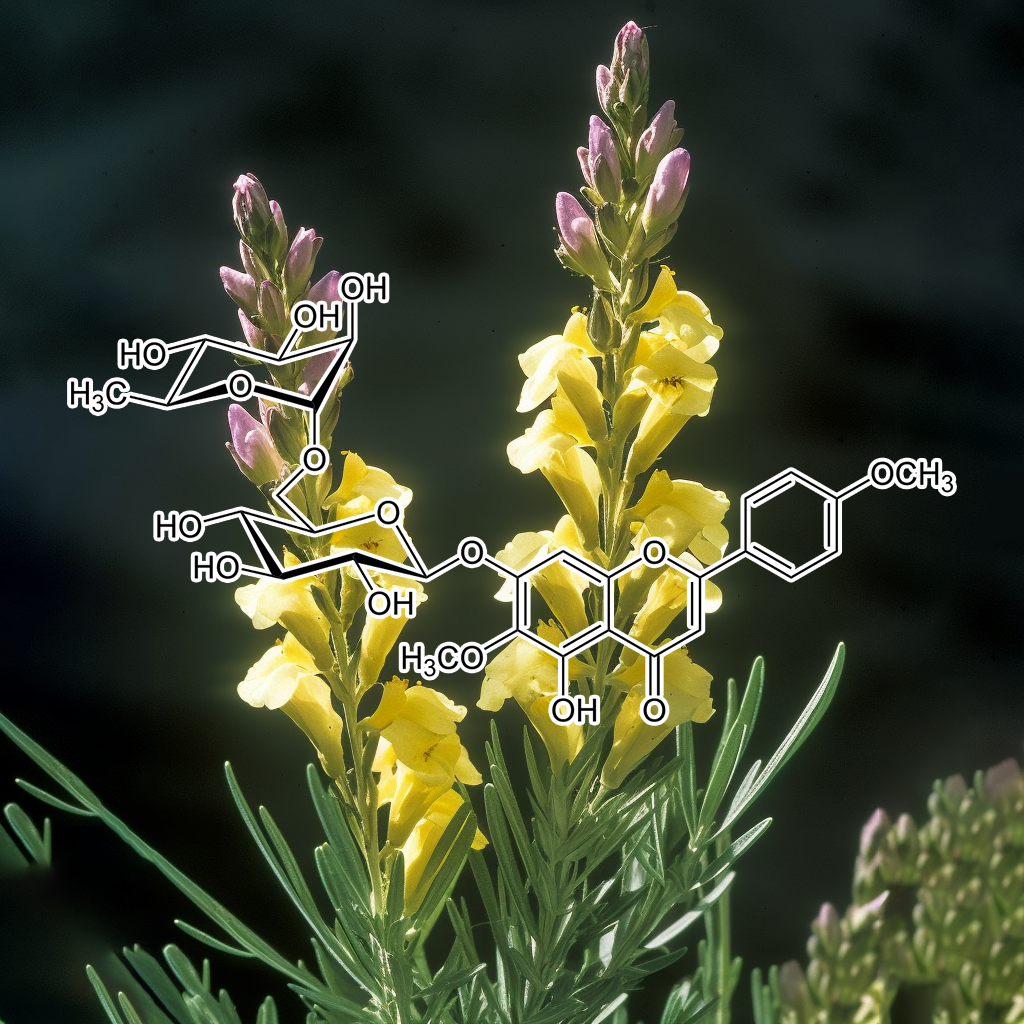
pectolinarin (Linaria vulgaris)
- Chemical Constituents Of Distictella Elongata (Vahl) Urb.(Bignoniaceae)
- Meta-Analysis Of Flavonoids With Antiviral Potential Against Coronavirus
- Potential Of Plant Bioactive Compounds As Sars-Cov-2 Main Protease (Mpro) And Spike (S) Glycoprotein Inhibitors: A Molecular Docking Study
- Sars-Cov-2: An Update On Potential Antivirals In Light Of Sars-Cov Antiviral Drug Discoveries
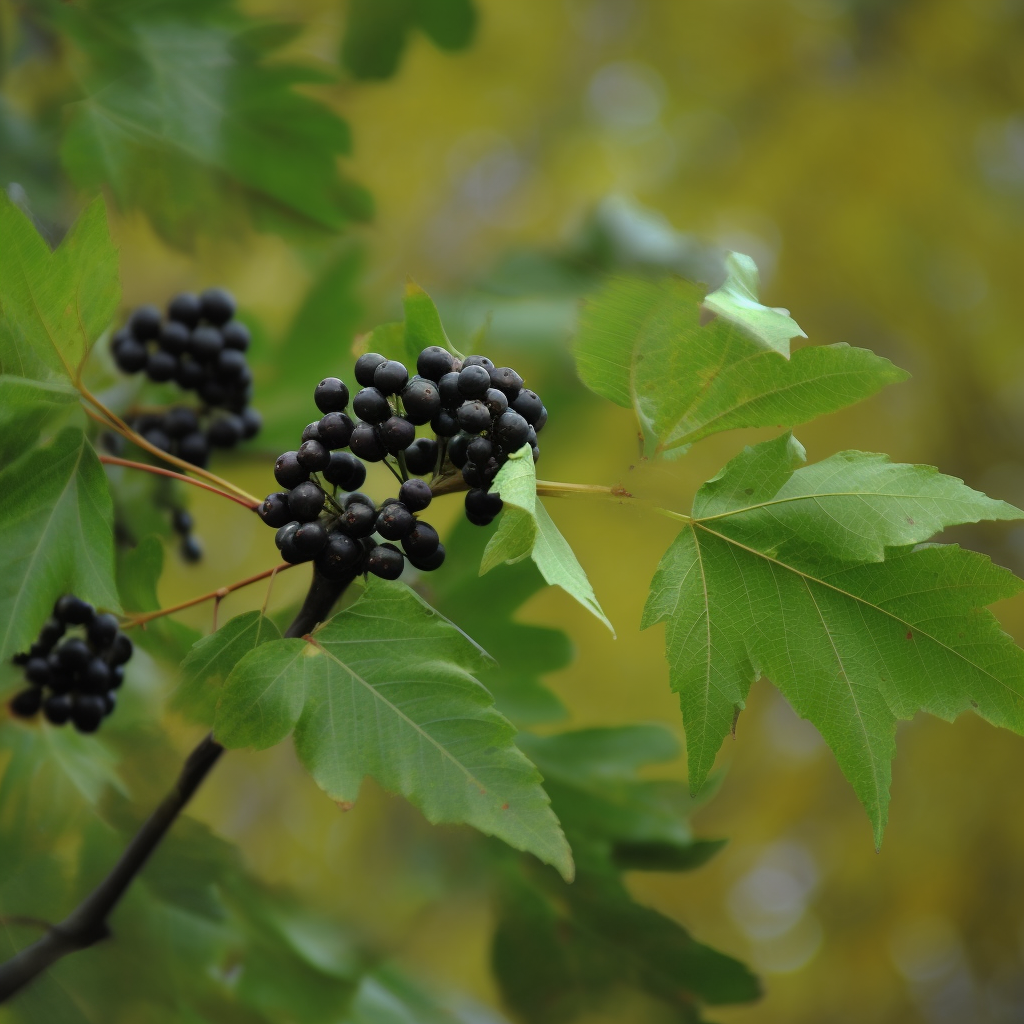
Pelargonium sidoides (Pelargonium peltatum)
- Biological Studies Concerning The Antioxidant And Antimicrobial Activities Of Pelargonium Species Cultivated In Egypt (Family-Geraniaceae)
- The Phytochemical Composition, Biological Effects And Biotechnological Approaches To The Production Of High-Value Essential Oil From Geranium
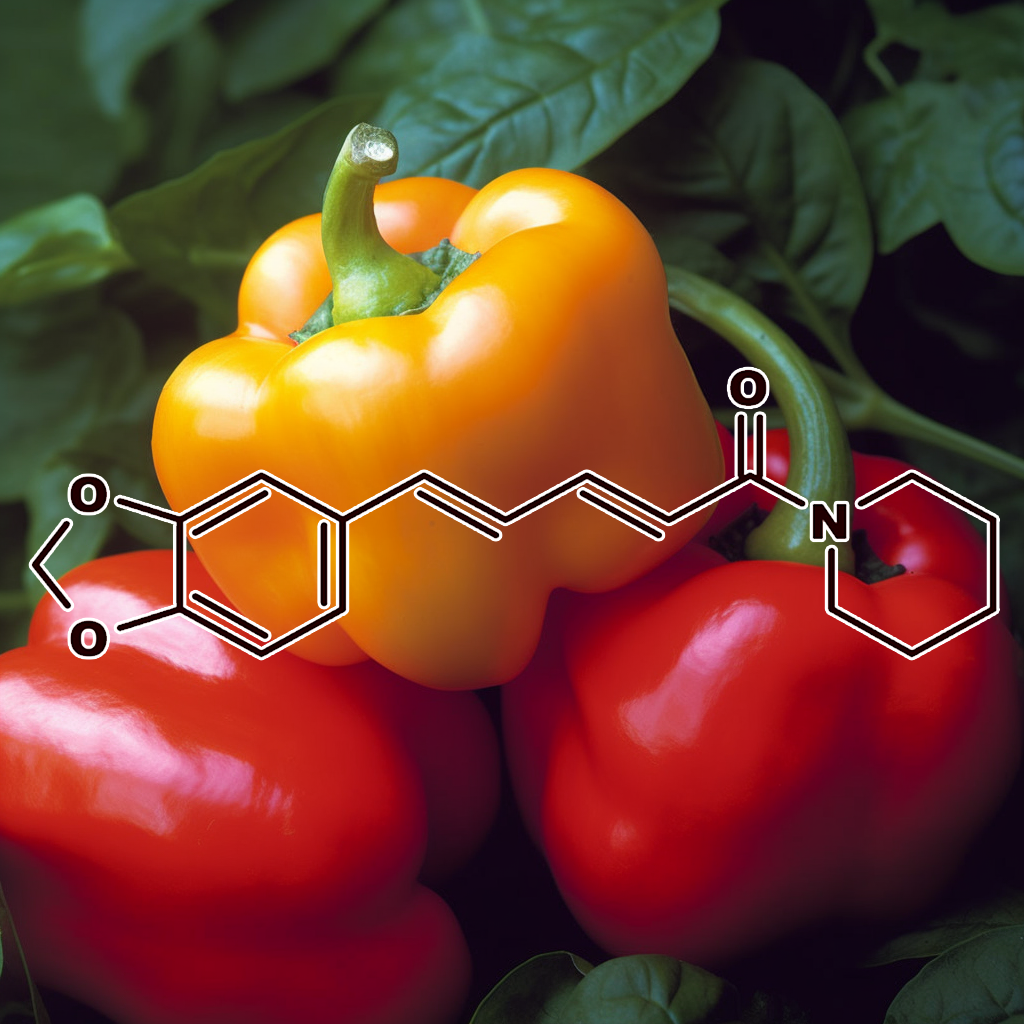
Pentadienoylpiperidine
- (Alkylamino) Piperidine Bis (Heteroaryl) Piperizine Analogs Are Potent, Broad-Spectrum Nonnucleoside Reverse Transcriptase Inhibitors Of Drug-Resistant Isolates Of …
- Design, Synthesis And Trypanocidal Evaluation Of Novel 1, 2, 4-Triazoles-3-Thiones Derived From Natural Piperine
- Discovery And Sar Study Of Piperidine-Based Derivatives As Novel Influenza virus Inhibitors
- Discovery Of Spiro-Piperidine Inhibitors And Their Modulation Of The Dynamics Of The M2 Proton Channel From Influenza A virus
- Novel 4, 4-Disubstituted Piperidine-Based C–C Chemokine Receptor-5 Inhibitors With High Potency Against Human Immunodeficiency virus -1 And An Improved Human …
- Optical Dna Biosensor Based On Square-Planar Ethyl Piperidine Substituted Nickel (Ii) Salphen Complex For Dengue virus Detection
- Synthesis And Preliminary Antiviral Activities Of Piperidine‐Substituted Purines Against Hiv And Influenza A/H1N1 Infections
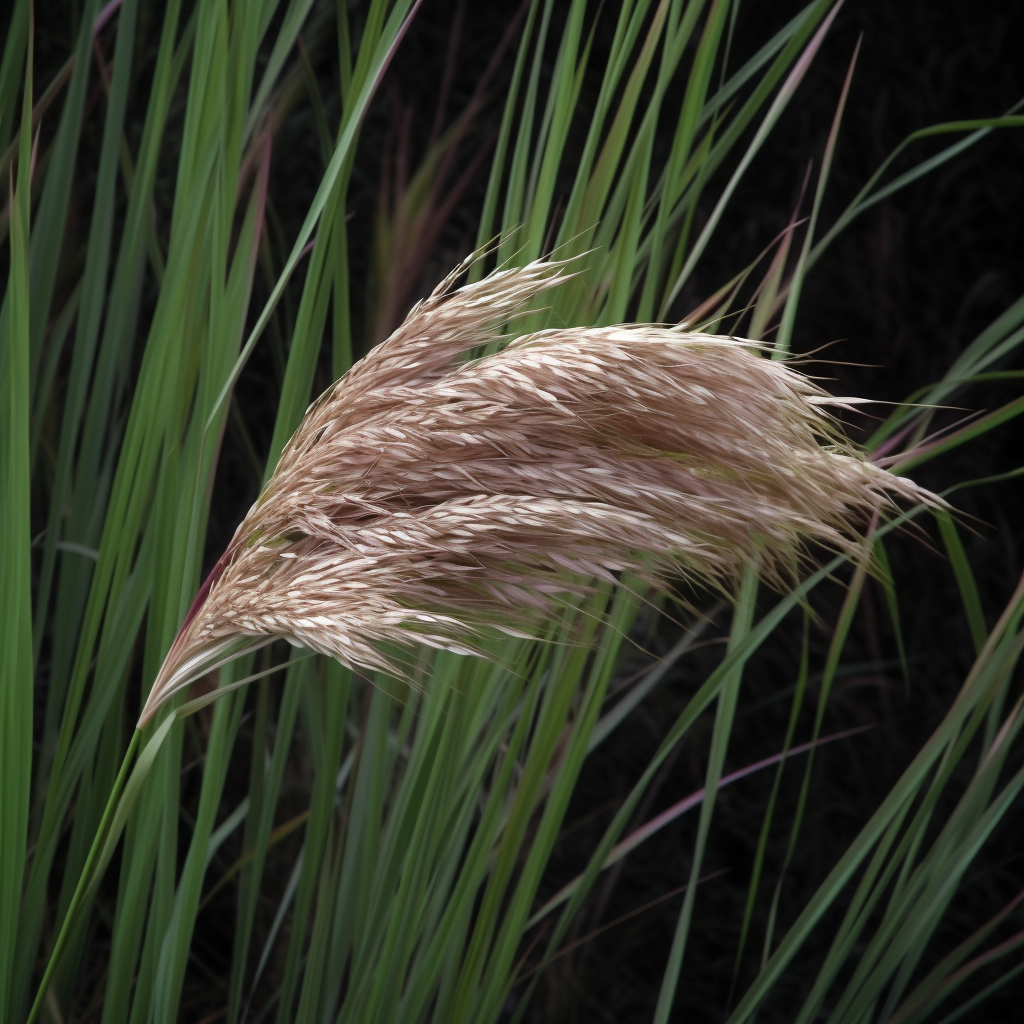
Phragmitescommunis
- Antibacterial Activity Of Traditional Australian Medicinal Plants
- Anti-Inflammatory And Antiviral Effects Of Water-Soluble Crude Extract From Phragmites Australis In Vitro.
- Antiviral Chinese Medicinal Herbs Against Respiratory Syncytial virus
- Bacteriophages In Engineered Wetland For Domestic Wastewater Treatment
- Bioactive Secondary Metabolites Produced By An Endophytic Fungus Gaeumannomyces Sp. Js0464 From A Maritime Halophyte Phragmites Communis
- Botanical Identification Of Medicinal Roots Collected And Traded In Morocco And Comparison To The Existing Literature
- Functional Role Of Bacteria From Invasive Phragmites Australis In Promotion Of Host Growth
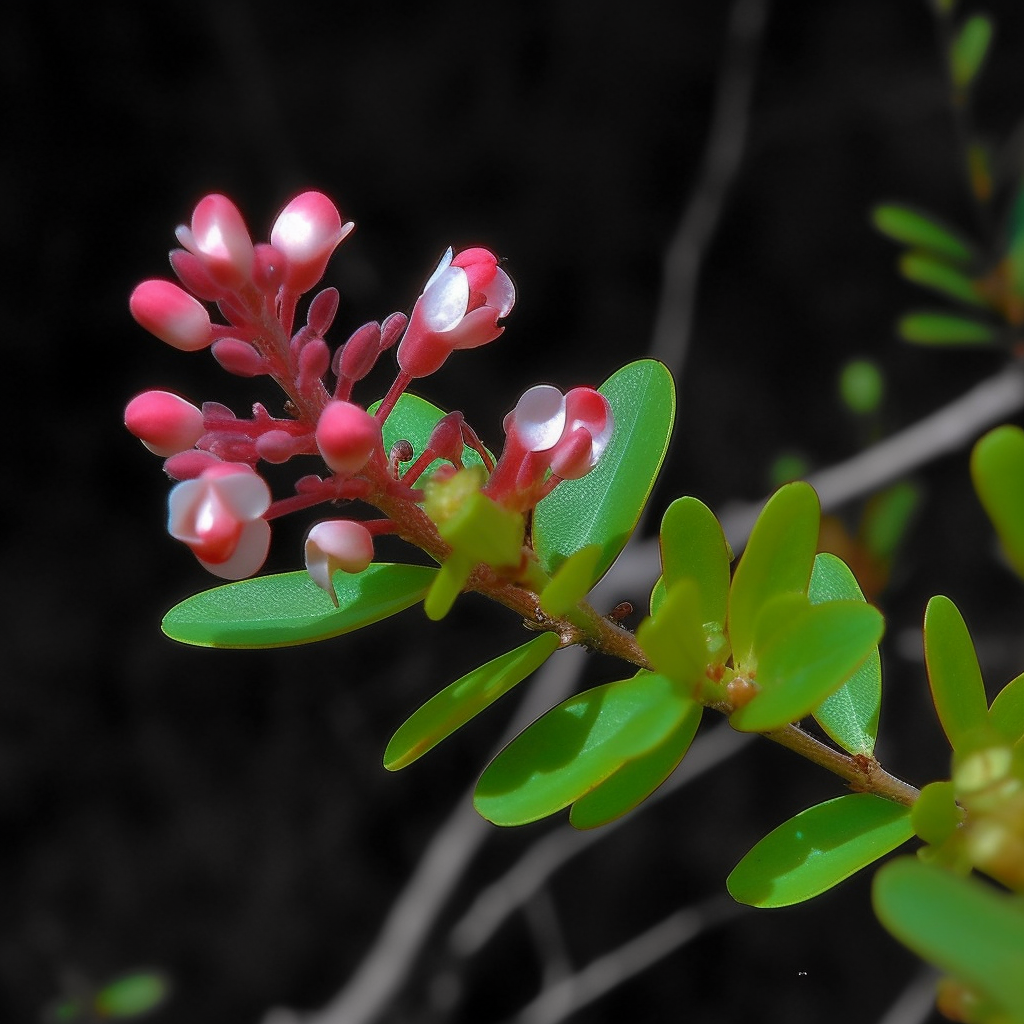
Phyllanthus orbicularis
- 14 Antiviral Activities Of Phyllanthus Orbicularis, An Endemic Cuban Species
- Bioactivity‐Guided Fractionation Of Phyllanthus Orbicularis And Identification Of The Principal Anti Hsv‐2 Compounds
- Evaluation Of The Antiviral Activity Of An Aqueous Extract From Phyllanthus Orbicularis
- In Vitro Antiviral Activity Of Phyllanthus Orbicularis Extracts Against Herpes Simplex virus Type 1
- Insights Into The Phytochemistry Of The Cuban Endemic Medicinal Plant Phyllanthus Orbicularis: Fideloside, A Novel Bioactive 8-C-Glycosyl 2, 3-Dihydroflavonol
- Preliminary Evaluation Of The Antiviral Activity Of The Aqueous Extract Of Phyllanthus Orbicularis Vs Hiv-1 Infection
- Protective Effect Of A Phyllanthus Orbicularis Aqueous Extract Against Uvb Light In Human Cells
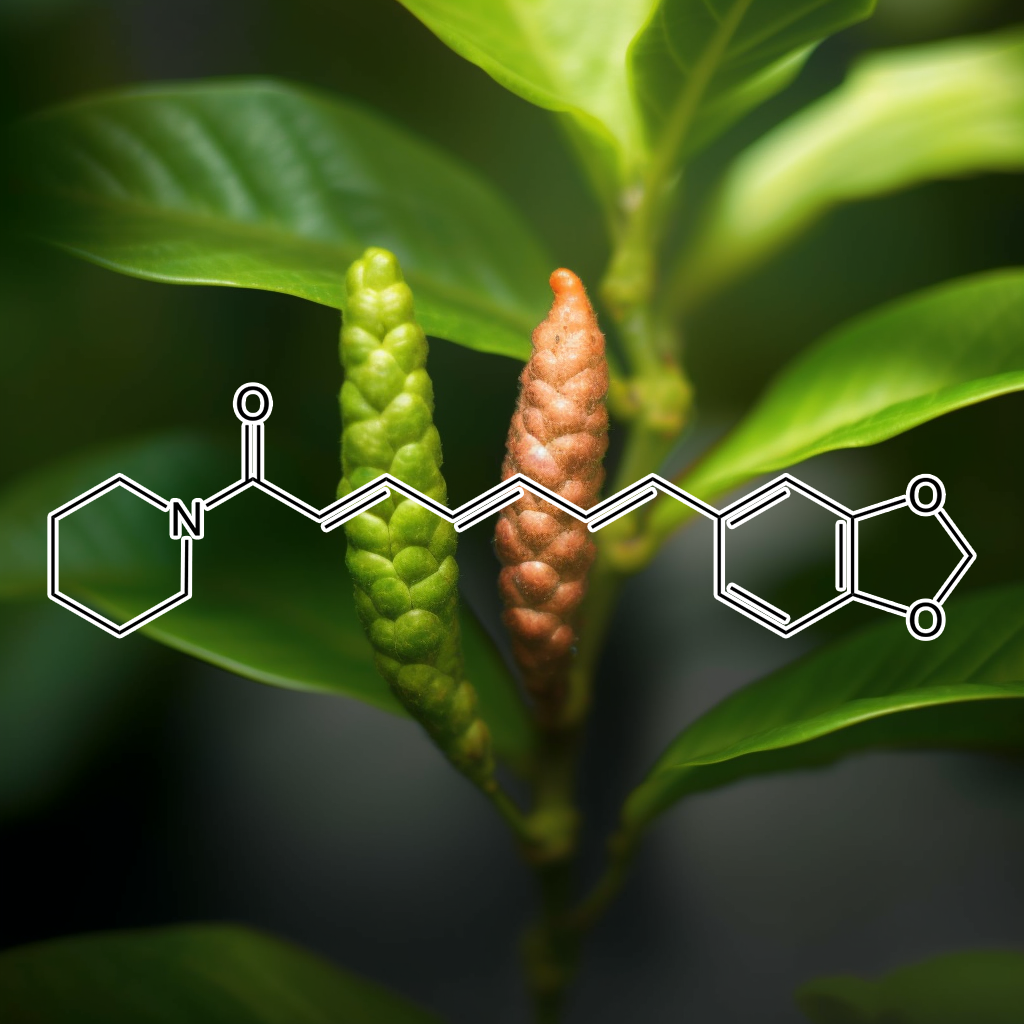
Piperettine (pepper extract)
- A Review On Diversified Use Of The King Of Spices: Piper Nigrum (Black Pepper)
- Piperine: A Comprehensive Review Of Methods Of Isolation, Purification And Biological Properties
- Postharvest Processing And Benefits Of Black Pepper, Coriander, Cinnamon, Fenugreek, And Turmeric Spices
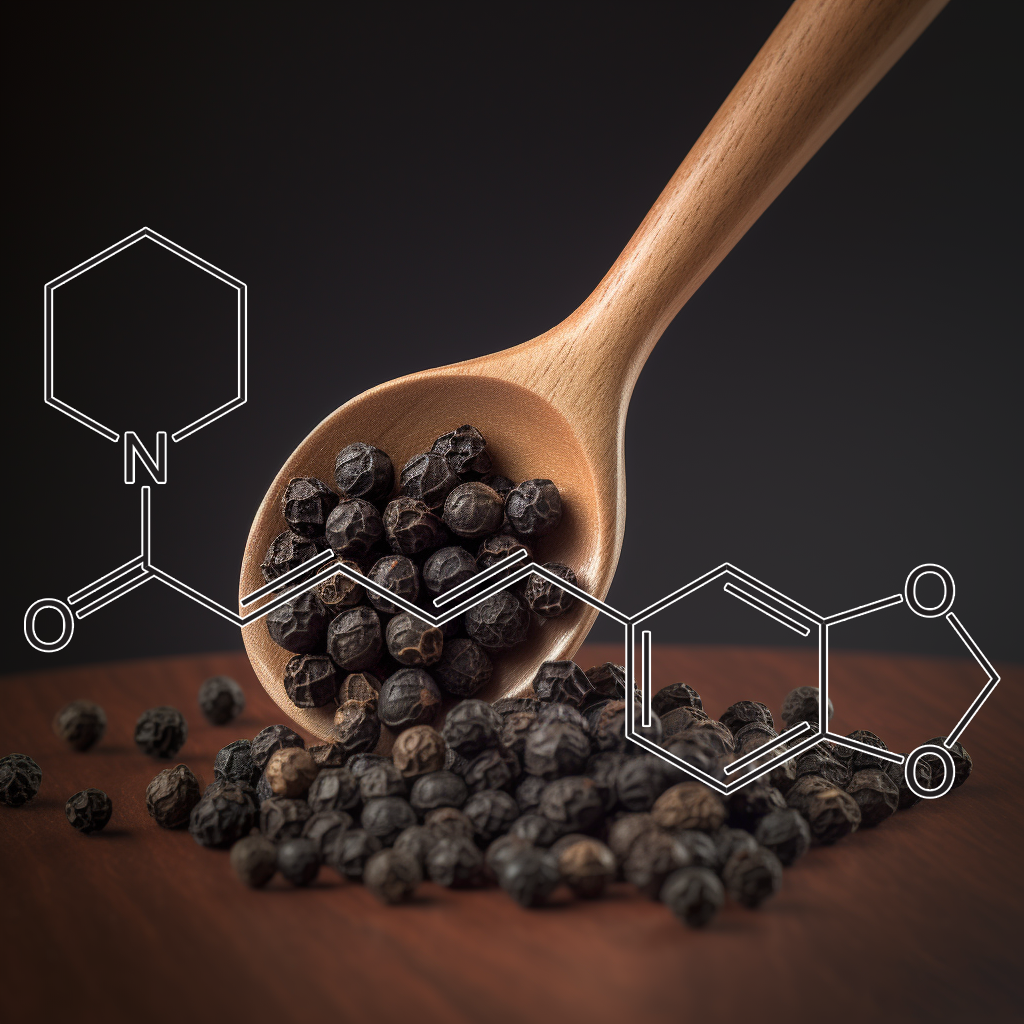
Piperine / Pipercide (pepper extract)
- Antibacterial Activity Of Black Pepper (Piper Nigrum Linn.) With Special Reference To Its Mode Of Action On Bacteria
- Antiradical Properties Of Essential Oils And Extracts From Coriander, Cardamom, White, Red, And Black Peppers
- Application Of Plant Extracts As Feed Additives In Poultry Nutrition
- Bioassay-Guided Fractionation Of Wound Healing Active Compounds From Piper Nigrum L. Berries Extract In Malaysia
- Effectiveness Of Herbal Extract (Piper Retrofractum, Curcuma Aeruginosa, And Curcuma Zanthorrhiza) As Immunomodulator In Non-Specific Immunity System Of Tiger …
- Opuntiol: An Active Principle Of Opuntia Elatior As An Eco-Friendly Inhibitor Of Corrosion Of Mild Steel In Acid Medium
- Piperine: A Comprehensive Review Of Methods Of Isolation, Purification And Biological Properties
- Recent Trends In The Utilization Of Medicinal Plants As Growth Promoters In Poultry Nutrition–A Review
- Spices-An Imperative Melange-Back To The Roots
- The Antimicrobial Effects Of Local Spices: Onions (Allium Cepa, Garlic (Allium Sativum), Ginger (Zingiber Officinale), And Pepper (Piper Guineense) On Selected …
- molecular docking study of the structural disruption of the viral 3CL-protease of COVID19 induced by binding of capsaicin, piperine and curcumin
- Immunomodulatory and antitumor activity of Piper longum Linn. and piperine
- Piperine inhibits cytokine production by human peripheral blood mononuclear cells
- A Review On Diversified Use Of The King Of Spices: Piper Nigrum (Black Pepper)
- Indian Traditional Ayurvedic Treatment Regime For Novel Coronavirus , Covid-19
- Plant Biodiversity As A Resource For Natural Products For Insect Pest Management
- Prevention And Treatment Of Different Health Problems By Common Peoples Diet (Haleem)
- Review On Kukkiladhi Choornam Used In Traditional Medicine And Research Activities
- World Journal Of Pharmaceutical And Life Sciences Wjpls
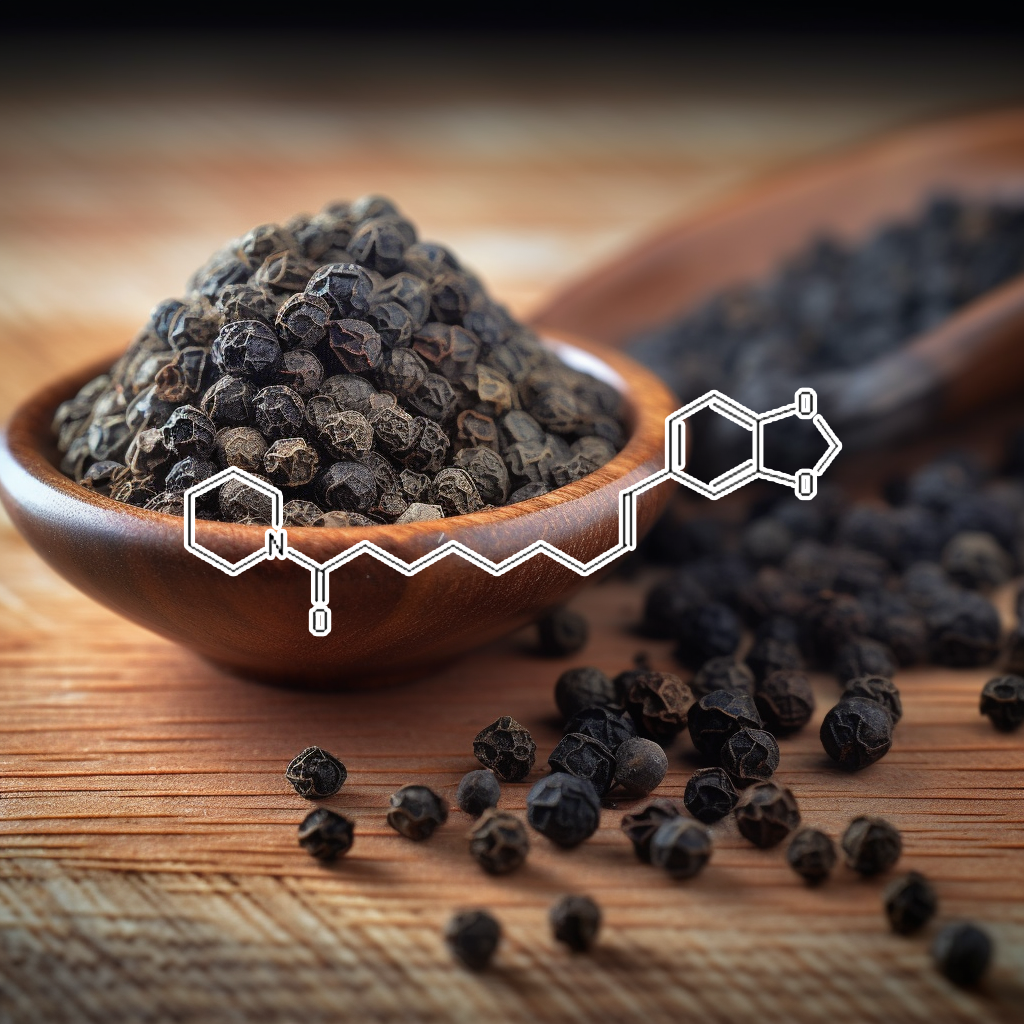
Piperolein b (pepper extract)
- A Review On Diversified Use Of The King Of Spices: Piper Nigrum (Black Pepper)
- Piperine: A Comprehensive Review Of Methods Of Isolation, Purification And Biological Properties

Poria Cocos
- A Standardized Composition From Extracts Of Myristica Fragrans, Astragalus Membranaceus, And Poria Cocos Protects Liver From Acute Ethanol Insult
- Diversity Of Wild Mushrooms And Its Medicinal Uses
- Mushrooms As A Functional Food Mediator In Preventing And Ameliorating Diabetes
- Pharmacokinetic Behaviour Of Clinically Important Tcm Prescriptions
- The Effect Of Poria Cocos Extract To Inhibit Enterovirus Replication
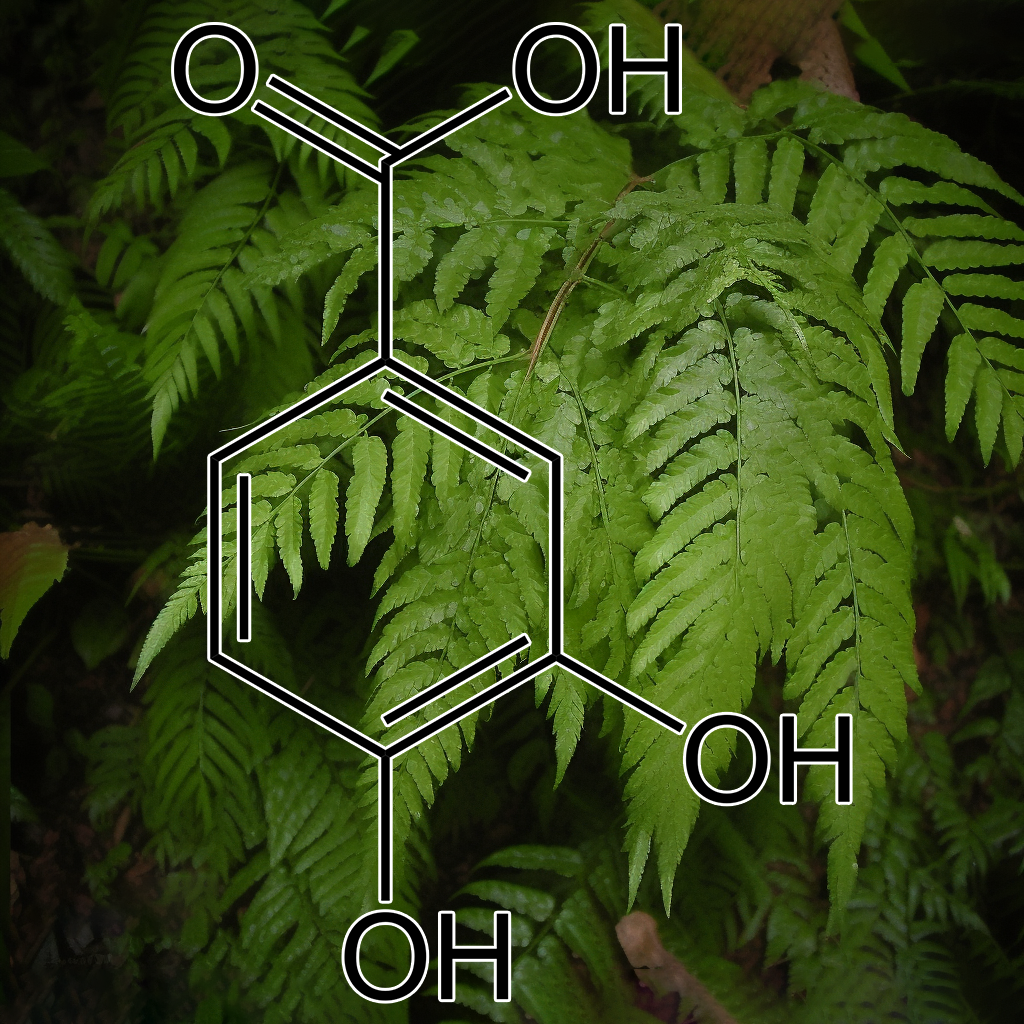
protocatechuic acid (Stenoloma chusanum)
- A Review On Protocatechuic Acid And Its Pharmacological Potential
- Biomarkers Of Foods And Nutraceuticals: Applications In Efficacy, Safety, And Toxicity
- In Vitro Anti-Influenza virus Activity Of Synthetic Humate Analogues Derived From Protocatechuic Acid
- Inhibitory Effect Of Lamivudine Combined With Protocatechuic Acid On Duck Hepatitis B virus In Vitro.
- Pharmacodynamic Study Of Lamivudine Combined With Protocatechuic Acid Against Hepatitis B virus In Vitro [J]
- Pro-Apoptosis Effects Of Protocatechuic Acid In The Early Stage Of Infectious Bursal Disease virus Infection
- Protocatechuic Acid (Pca) Induced A Better Antiviral Effect By Immune Enhancement In Spf Chickens
- Protocatechuic Acid Inhibits Hepatitis B virus Replication By Activating Erk1/2 Pathway And Down-Regulating Hnf4Α And Hnf1Α In Vitro
- Protocatechuic Acid, A New Active Substance Against The Challenge Of Avian Infectious Bursal Disease virus
- Protocatechuic Acid, A Novel Active Substance Against Avian Influenza virus H9N2 Infection
- Prototype Foamy virus Intasome Aggregation Is Mediated By Outer Protein Domains And Prevented By Protocatechuic Acid
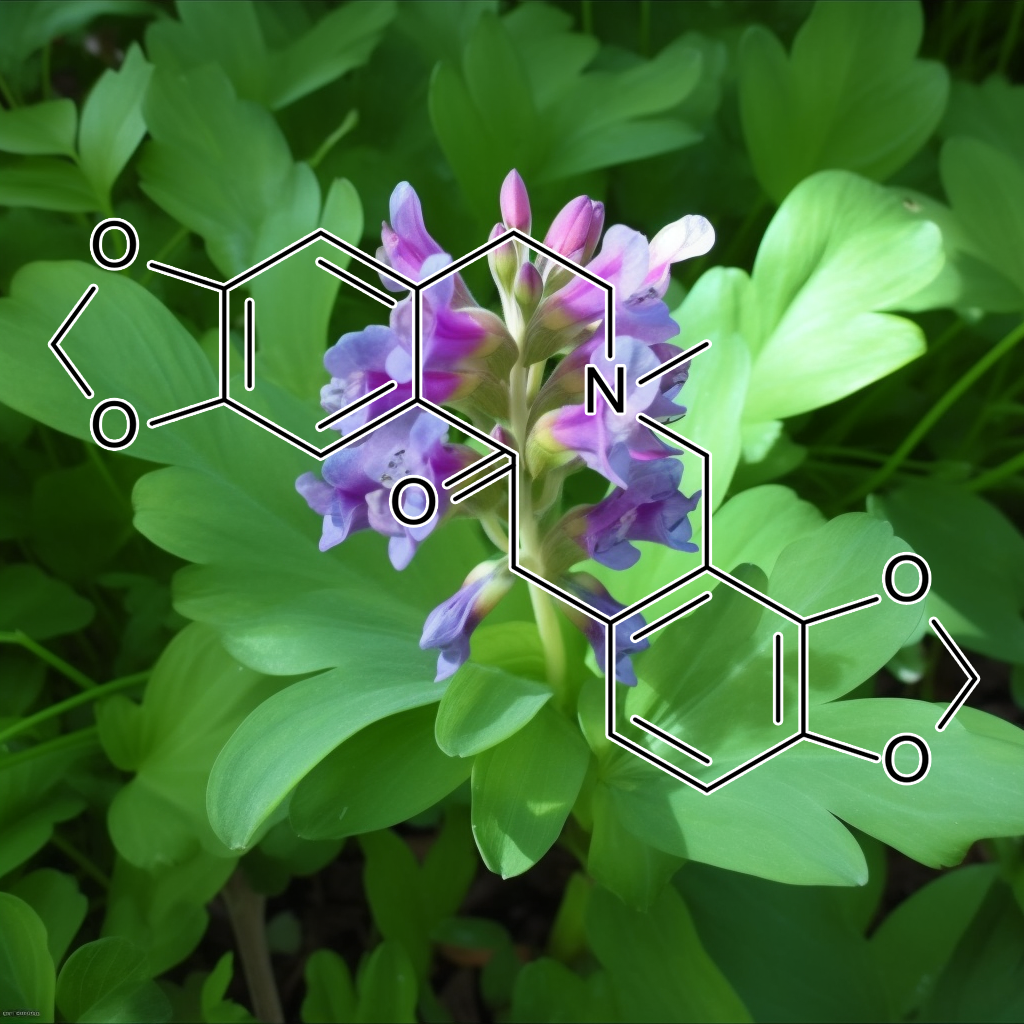
protopine (Corydalis yanhusuo)
- Active Phytochemicals From Chinese Herbs As Therapeutic Agents For The Heart
- Advances In Phytochemical And Modern Pharmacological Research Of Rhizoma Corydalis
- Analysis Of Chemical Constituents In An Herbal Formula Jitong Ning Tablet
- Application Of Ultrafiltration Membrane Techology In The Preparation Of Traditional Chinese Medicine [J]
- Comparative Analysis Of The Chemical Profile Of Wild And Cultivated Populations Of Corydalis Saxicola By High‐Performance Liquid Chromatography
- Determination Of Selected Isoquinoline Alkaloids From Mahonia Aquifolia; Meconopsis Cambrica; Corydalis Lutea; Dicentra Spectabilis; Fumaria Officinalis; …
- Holistic Psychopharmacology Of Fumaria Indica (Fumitory)
- Identification Of Isoquinoline Alkaloids From Berberis Microphylla By Hplc Esi-Ms/Ms
- In Vivo Disease Control Efficacy Of Isoquinoline Alkaloids Isolated From Corydalis Ternata Against Wheat Leaf Rust And Pepper Anthracnose
- Protopine Inhibits Heterotypic Celladhesion In Mda-Mb-231 Cells Through Down-Regulation Of Multi-Adhesive Factors
- Quality Evaluation Of Corydalis Yanhusuo By High-Performance Liquid Chromatography Fingerprinting Coupled With Multicomponent Quantitative Analysis
- Screening Of Bioactive Components From Traditional Chinese Medicine By Immobilized Β2 Adrenergic Receptor Coupled With High Performance Liquid Chromatography
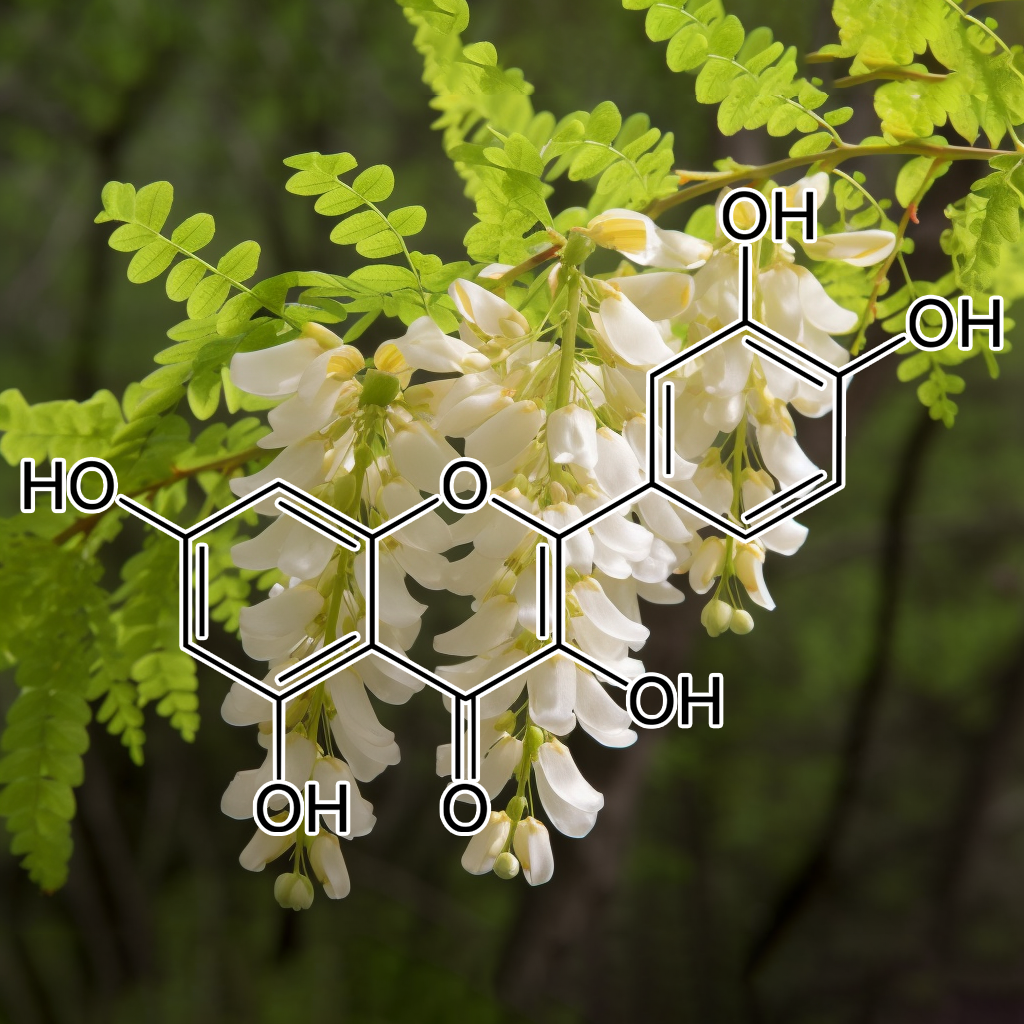
Quercetin (sophora japonica)
- Anti-Inflammatory, Antiviral And Quantitative Study Of Quercetin-3-O-Β-D-Glucuronide In Polygonum Perfoliatum L.
- Antiviral Activities Of Quercetin And Isoquercitrin Against Human Herpesvirus es
- Antiviral Activity Of Baicalein And Quercetin Against The Japanese Encephalitis virus
- Antiviral Activity Of Quercetin 7-Rhamnoside Against Porcine Epidemic Diarrhea virus
- Antiviral Activity Of Quercetin-3-Β-Od-Glucoside Against Zika virus Infection
- Antiviral Effects Of Quercetin And Related Compounds
- Effectivity Of Quercetin As Antiviral To Dengue virus -2 Strain New Guinea C In Huh 7-It 1 Cell Line
- Ethanolic Extract Of Sophora Japonica Flower Buds Alleviates Cognitive Deficits Induced By Scopolamine In Mice
- Evaluation Of Antiviral Activities Of Houttuynia Cordata Thunb. Extract, Quercetin, Quercetrin And Cinanserin On Murine Coronavirus And Dengue virus Infection
- Evaluation Of The Antiviral Activities Of Bacharis Dracunculifolia And Quercetin On Equid Herpesvirus 1 In A Murine Model
- In Silico Prediction Of Phosphorylation Of Ns3 As An Essential Mechanism For Dengue virus Replication And The Antiviral Activity Of Quercetin
- In Vitro Antiviral Mechanisms Of Eugeniin And Quercetin Against Varicella-Zoster virus
- In Vitro Assessment Of The Antiviral Potential Of Trans-Cinnamic Acid, Quercetin And Morin Against Equid Herpesvirus 1
- Male Reprotoxicity Associated With Sophora Japonica Treatment: Evaluation Of Cellular And Molecular Events In Vitro
- Mechanism Of Antiviral Action Of Quercetin Against Cardiovirus Infection In Mice
- Quercetin As An Antiviral Agent Inhibits Influenza A virus (Iav) Entry
- Quercetin Potentiates Tnf-Induced Antiviral Activity
- Synthesis And Antiviral Activity Of Quercetin Brominated Derivatives
- Synthesizing Microcarriers As A Platform For The Pharmaceutical Delivery Of Quercetin For Antiviral Applications

Quercetin-3-b-galactoside
- A Comprehensive Review On The Effect Of Plant Metabolites On Coronavirus es: Focusing On Their Molecular Docking Score And Ic50 Values
- Anti-Inflammatory Constituents In Hypericum Species And Unveiling The Underlying Mechanism In Lps-Stimulated Mouse Macrophages And H1N1 Influenza virus …
- Anti-Influenza A virus Effect Of Hypericum Perforatum L. Extract
- Antiviral Activity Against Infectious Bronchitis virus And Bioactive Components Of Hypericum Perforatum L.
- Antiviral Activity Of The Infusion (Shs‐174) From Flowers Of Sambucus Nigra L., Aerial Parts Of Hypericum Perforatum L., And Roots Of Saponaria Officinalis L. Against …
- Antiviral Effect Of Two Tintures Obtained Of Hypericum Cultivated In Cuba.
- Antiviral In Vitro Activity Of Hypericum Perforatum L. Extract On The Human Cytomegalovirus (Hcmv)
- Effect Of Anti-Influenza virus H3N2 Of Hypericum Japonicum In Vivo
- Effect Study Of Cthanol Extract Of Hypericum Perforatum On Influenza virus
- Effect Study Of Ethanol Extract Of Hypericum Perforatum On Influenza virus [J]
- Evaluation Of The Cytotoxic Effect And Antibacterial, Antifungal, And Antiviral Activities Of Hypericum Triquetrifolium Turra Essential Oils From Tunisia
- Evidence And Characterization Of A virus Of St John’S Wort (Hypericum Perfora Tum L.)
- Extracts And Constituents Of Hypericum Perforatum Inhibit The Binding Of Various Ligands To Recombinant Receptors Expressed With The Semliki Forest virus System
- Filicinic Acid Based Meroterpenoids With Anti-Epstein–Barr virus Activities From Hypericum Japonicum
- Herpes virus Inhibitory Substances From Hypericum Connatum Lam., A Plant Used In Southern Brazil To Treat Oral Lesions
- Hypericum Perforatum Extract Therapy For Chickens Experimentally Infected With Infectious Bursal Disease virus And Its Influence On Immunity
- Hypericum Perforatum Inhibits The Binding Of Μ-And Κ-Opioid Receptor Expressed With The Semliki Forest virus System
- Identification Of Light-Independent Inhibition Of Human Immunodeficiency virus -1 Infection Through Bioguided Fractionation Of Hypericum Perforatum
- In Vitro And In Vivo viral Inhibitory Activity Of Hypericum Species Against Newcastle Disease virus
- In Vitro Anti-Hepatitis B virus Effect Of Hypericum Perforatum L.
- Influence Of Hypericum Perforatum Extract On Ifn-Γ, Tnf-Α Of Lung Tissue Of Mice Infected With Influenza A virus [J]
- Influence Of Hypericum Perforatum Extract On Piglet Infected With Porcine Respiratory And Reproductive Syndrome virus
- Inhibition Of Hypericum Perforatum Extract On Influenza A virus .
- Investigation Of Some Hypericum Species Native To Southern Of Brazil For Antiviral Activity
- Isolation And Anticancer, Anthelminthic, And Antiviral (Hiv) Activity Of Acylphloroglucinols, And Regioselective Synthesis Of Empetrifranzinans From Hypericum …
- Study On Effect Of Hypericum Perforatum On Pharmacokinetics Of Zedoary Turmeric Oil In Compound Antiviral Preparation
- The Evaluation Of The Cytotoxic Effect And The Antibacterial, Antifungal, And Antiviral Activities Of Hypericum Triquetrifolium Turra Essential Oils From Tunisia 2
- The Immuno-Regulatory Impact Of Orally-Administered Hypericum Perforatum Extract On Balb/C Mice Inoculated With H1N1 Influenza A virus
- Therapeutic Efficacy Of Hypericum Perforatum L. Extract For Mice Infected With An Influenza A virus
- Two New Flavones From Hypericum Chinense And Their Anti-Tobacco Mosaic virus Activity
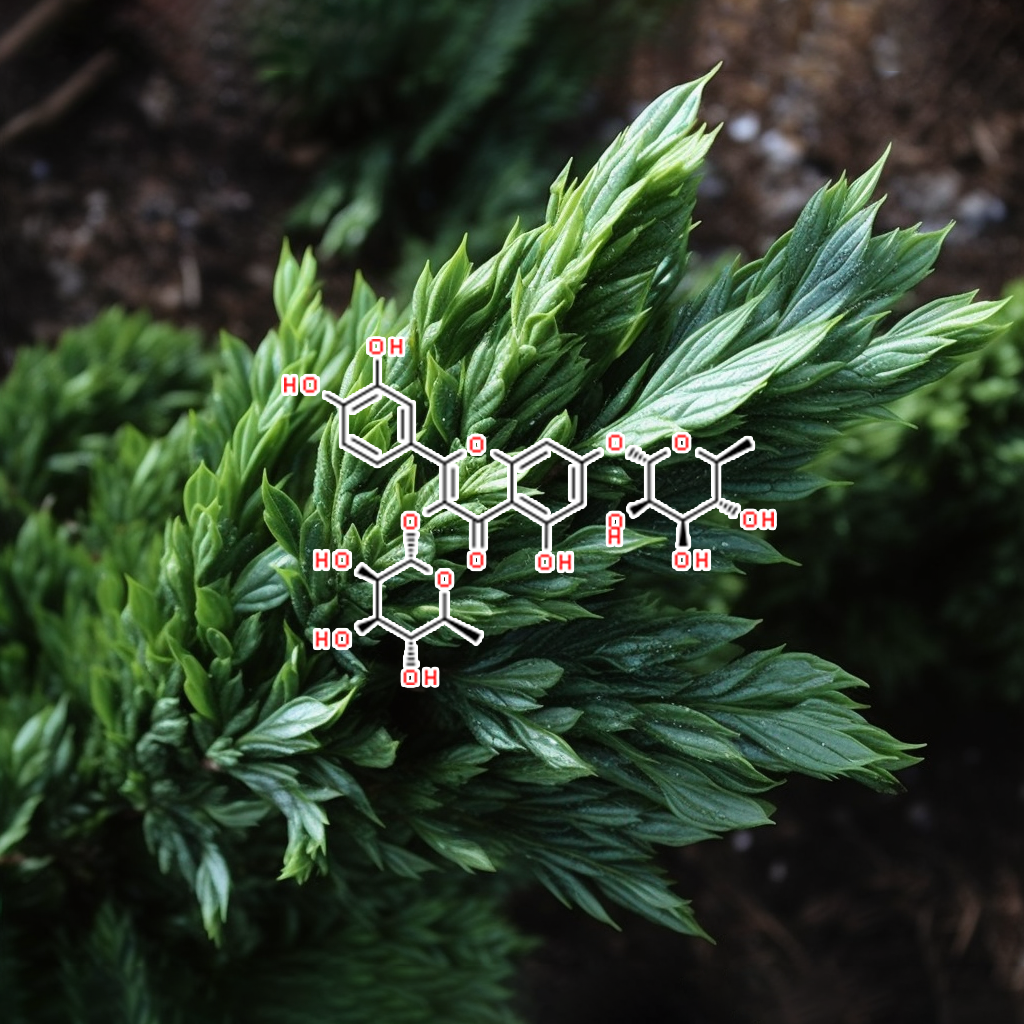
quercetin-3,7-O-α-l-dirhamnoside
Human adenovirus (HAdV)-36 is one of the viruses that are known to cause infectobesity in humans. Unlike extensive research on preventing obesity and developing anti-obesity drugs, little research has been conducted specifically on the prevention and treatment of infectobesity. Therefore, this study aimed to evaluate the effects of phytochemicals from D. racemosum on the replication of HAdV-36. A549 cells infected with HAdV-36 were treated with an ethyl acetate fraction of a D. racemosum leaf extract (DRE), and the virus titer was calculated based on the hemagglutination (HA) titer.
The results showed a concentration-dependent inhibitory effect of DRE treatment on HA titers. DRE treatment was also found to inhibit the cytopathic effects of the virus and the expression of viral genes. Quercitrin was identified as the constituent of DRE exerting an inhibitory effect on HAdV-36 replication. This study shows that DRE can be used as a candidate substance for the development of treatment for HAdV-36 infections. In addition, this study provides a basis to further investigate DRE for the development of anti-infectobesity medication
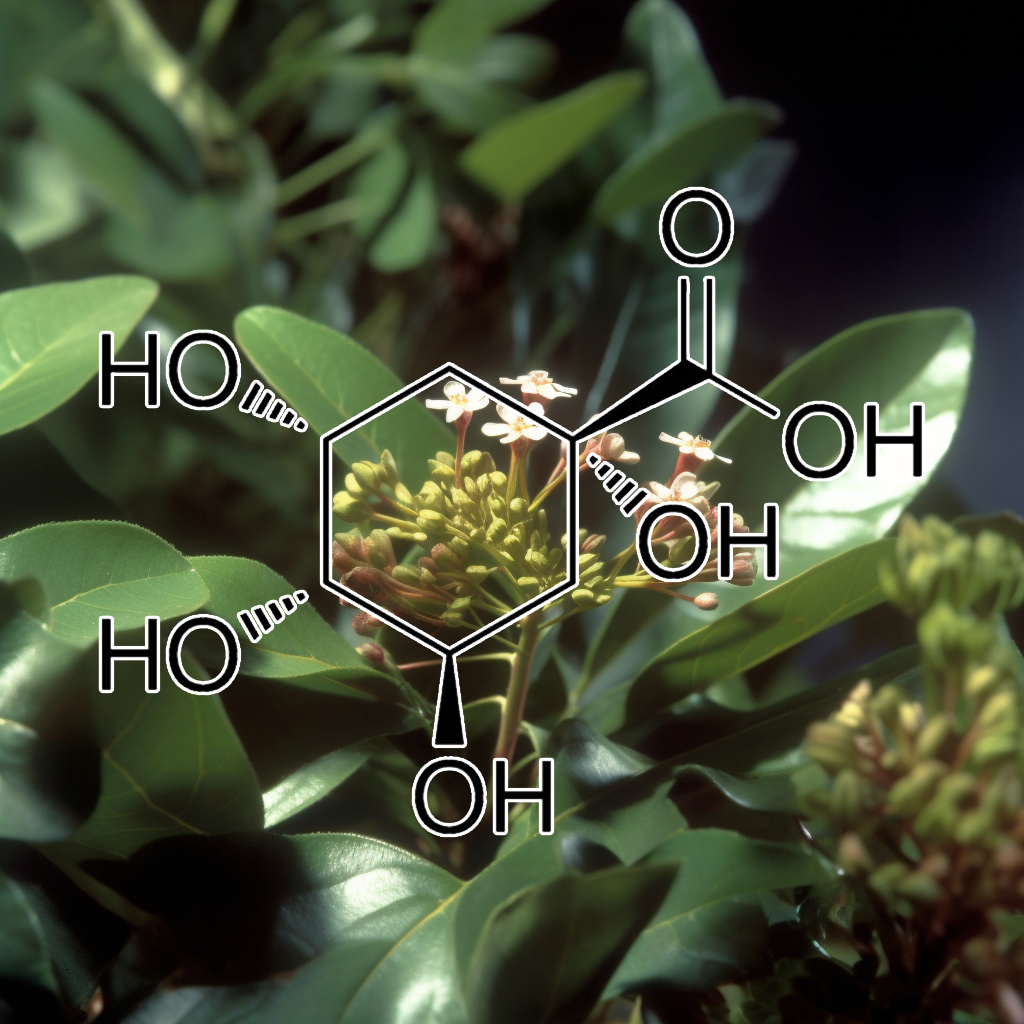
quinic acid (Cinchona bark)
- A New Caffeoly Quinic Acid From Aster Scaber And Its Inhibitory Activity Against Human Immunodeficiency virus -1 (Hiv-1) Integrase
- Anti-Hepatitis B virus Activity Of Chlorogenic Acid, Quinic Acid And Caffeic Acid In Vivo And In Vitro
- Biological And Anticancer Activity Of Selected Natural Products
- Blossoming Treasures Of Biodiversity: 19. Chinese Star Anise-Defence Against A Potentially Catastrophic Global Killer Flu virus
- Case Study: Oseltamivir: An Orally Bioavailable Ester Prodrug Of Oseltamivir Carboxylate
- Dissociation Constant Of Quinic Acid And Association Constants Of Some Quinates In Aqueous And In Alcoholic− Aqueous Mixed Solvents
- Formulation And Evaluation Of Oral Suspension Of Oseltamivir Phosphate Using Different Vehicle
- Pharmacology Of Natural Radioprotectors
- Quinic Acid Derivatives Inhibit Dengue virus Replication In Vitro
- Reactive Extraction Of Cyclic Polyhydroxy Carboxylic Acid Using Trioctylamine (Toa) In Different Diluents
- Shikimic Acid: A Highly Prospective Molecule In Pharmaceutical Industry
- Star Role For Bacteria In Controlling Flu Pandemic?
- Uhplc-Esi-Ms/Ms Analyses For Quantification Of Phenolic Compounds Of Nepeta Nuda Subsp. Lydiae
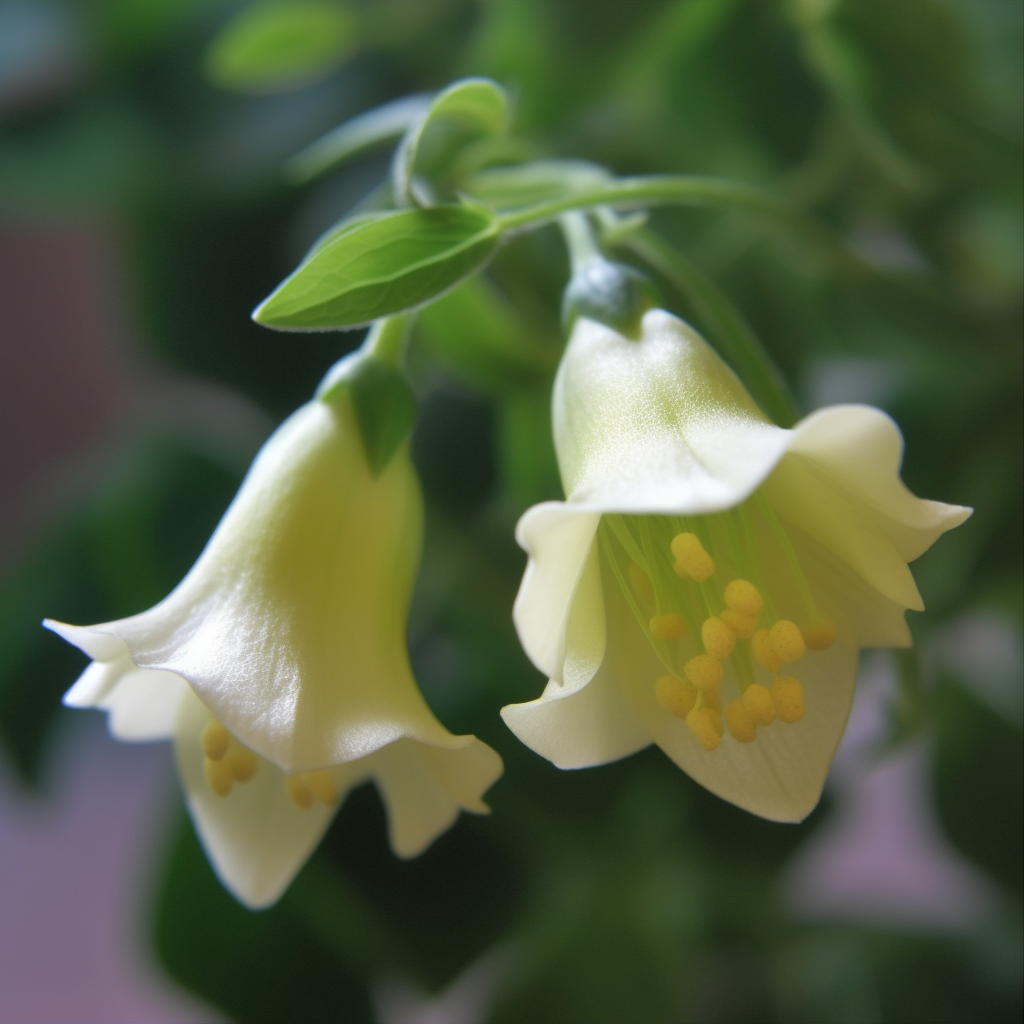
Radix Codonopsis
- Antiviral Herbs-Present And Future
- Immuno-Enhancement Effects Of Shenqi Fuzheng Injection On Cyclophosphamide-Induced Immunosuppression In Balb/C Mice
- Prospects Of Codonopsis Pilosula Polysaccharides: Structural Features And Bioactivities Diversity
- Radix Bupleuri: A Review Of Traditional Uses, Botany, Phytochemistry, Pharmacology, And Toxicology
- Ultrastructural Observation On Pulmonary Fibrosis In E9 Rats Treated With Compound Carapax Trionycis Formula
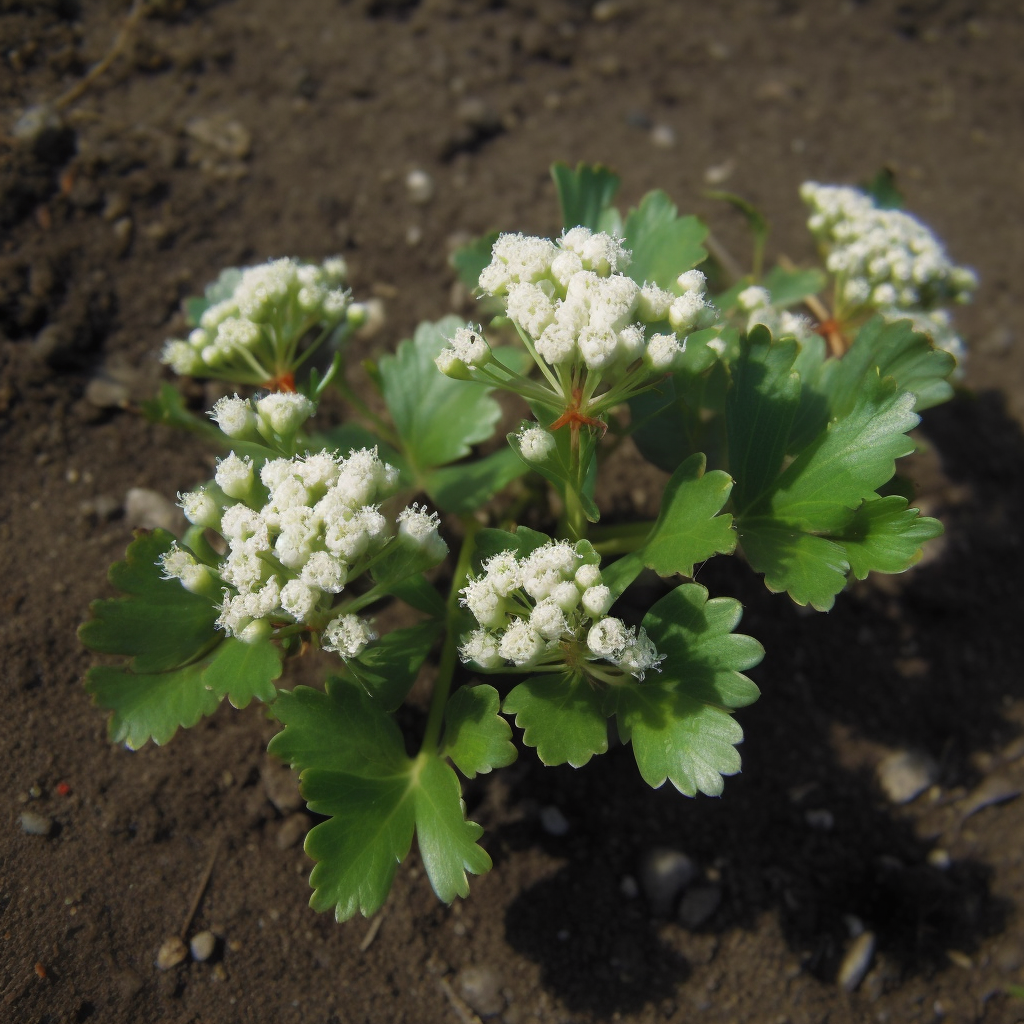
Radix Glehniae (CoasiaI GIehnia)
- A Case Of Intoxication Caused By Aciclovir Overinfusion And Cured By Chinese Medicine
- A Retrospective Study On Clinical Features Of And Treatment Methods For 77 Severe Cases Of Sars
- Combating Covid-19 With Integrated Traditional Chinese And Western Medicine In China
- Decursinol Angelate Isolated From Angelica Gigantis Radix Potentiates Pentobarbital-Induced Sleeping Behaviors Via Gabaa-Ergic Systems.
- Differentiation Of Furanocoumarin Isomers With Ratio Of Relative Abundance Of Characteristic Fragment Ions And Application In Angelicae Dahuricae Radix
- Effects Of Isoimperatorin On Proliferation And Apoptosis Of Human Gastric Carcinoma Cells
- Ethanol Extract Of A Korean Medicinal Prescription (Ssy) Including Rehmanniae Radix Preparata Promote Hair Growth In An Alopecia Animal Model
- Identification Of Urinary Metabolites Of Imperatorin With A Single Run On An Lc/Triple Tof System Based On Multiple Mass Defect Filter Data Acquisition And Multiple Data …
- Isolation Of Lithospermi Radix And Development Of Simultaneous Analytical Method
- Isolation, Purification, Structural Analysis And Biological Activities Of Water-Soluble Polysaccharide From Glehniae Radix
- Lipid Raft Biomaterial As A Mass Screening Affinity Tool For Rapid Identification Of Potential Antitumor Chinese Herbal Medicine
- Optimizing Study For The Technics Of Extracting Polysaccharide From The Gratelou Piat Uruturu Yamada [J]
- Progress In Study Of Oxidative Stress And Kidney-Tonifying Chinese Herbs In Parkinson’S Disease
- Psoralen, A Mechanism-Based Inactivator Of Cyp2B6
- Stereoselective Synthesis And Biological Evaluation Of 2′-Β-Substituted-Fluoroneplanocina Analogues As Potential Antiviral And Anticancer Agents
- Synthesis And Antiviral Activity Of 2′, 5′, 5′-Trifluoro-3′-Hydroxy-Apiosyl Nucleoside Phosphonic Acid Analogues
- The Pharmacokinetics Of Psoralen In Compound Recipe And Hispid Fig Root In Rats [J]
- The Screening Toolbox Of Bioactive Substances From Natural Products: A Review
- Therapeutic Effect Of Liyan Baidu Decoction Combined With Oxygen Spray On Radioactive Stomatitis In Patients With Nasopharyngeal Carcinoma
- Two Traditional Chinese Medicines Curcumae Radix And Curcumae Rhizoma: An Ethnopharmacology, Phytochemistry, And Pharmacology Review
- Whether Herbal Medicines Play An Important Role In The Covid-19 Therapeutics And Boosting Immune As One Of The Preventive Solutions: A Science Opinion
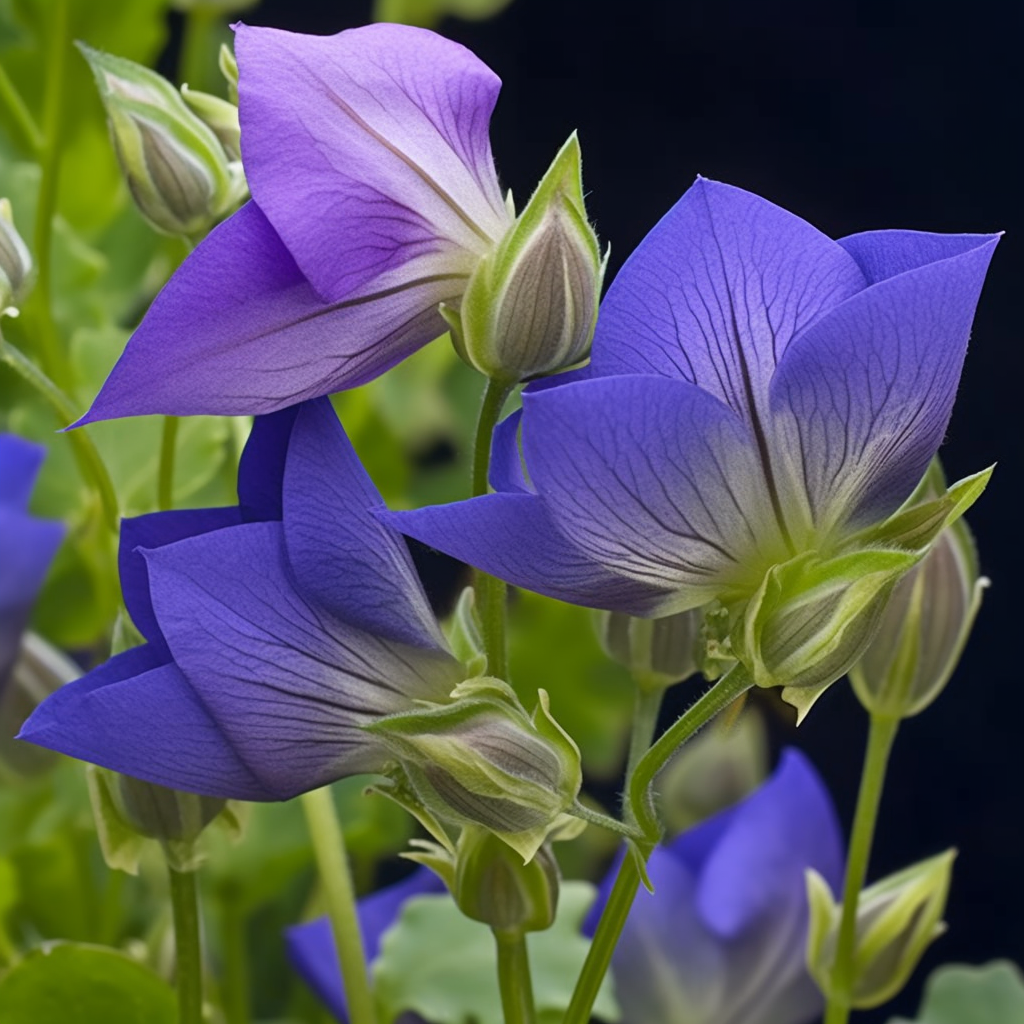
Radix Platycodonis (Platycodon grandiflorum)
- Chemical Composition And Pharmacology Research Progress Of Shenlingbaizhu Powder
- Correlation Study Between Antioxidant Activity And Lowering Blood Glucose Of Momordica Polysaccharide [J]
- Determination Of Polysaccharide Content And Molar Mass Distribution Of Isatis Indigotica Fortune Roots Planted In Daqing [J]
- Health Promotion In Relation To Respiratory viral Infections
- Study Of The Distribution Patterns Of The Constituent Herbs In Classical Chinese Medicine Prescriptions Treating Respiratory Disease By Data Mining Methods
- The Pharmacological Effects And Health Benefits Of Platycodon Grandiflorus—A Medicine Food Homology Species
- Utilization Of Chinese Medicine For Respiratory Discomforts By Patients With A Medical History Of Tuberculosis In Taiwan
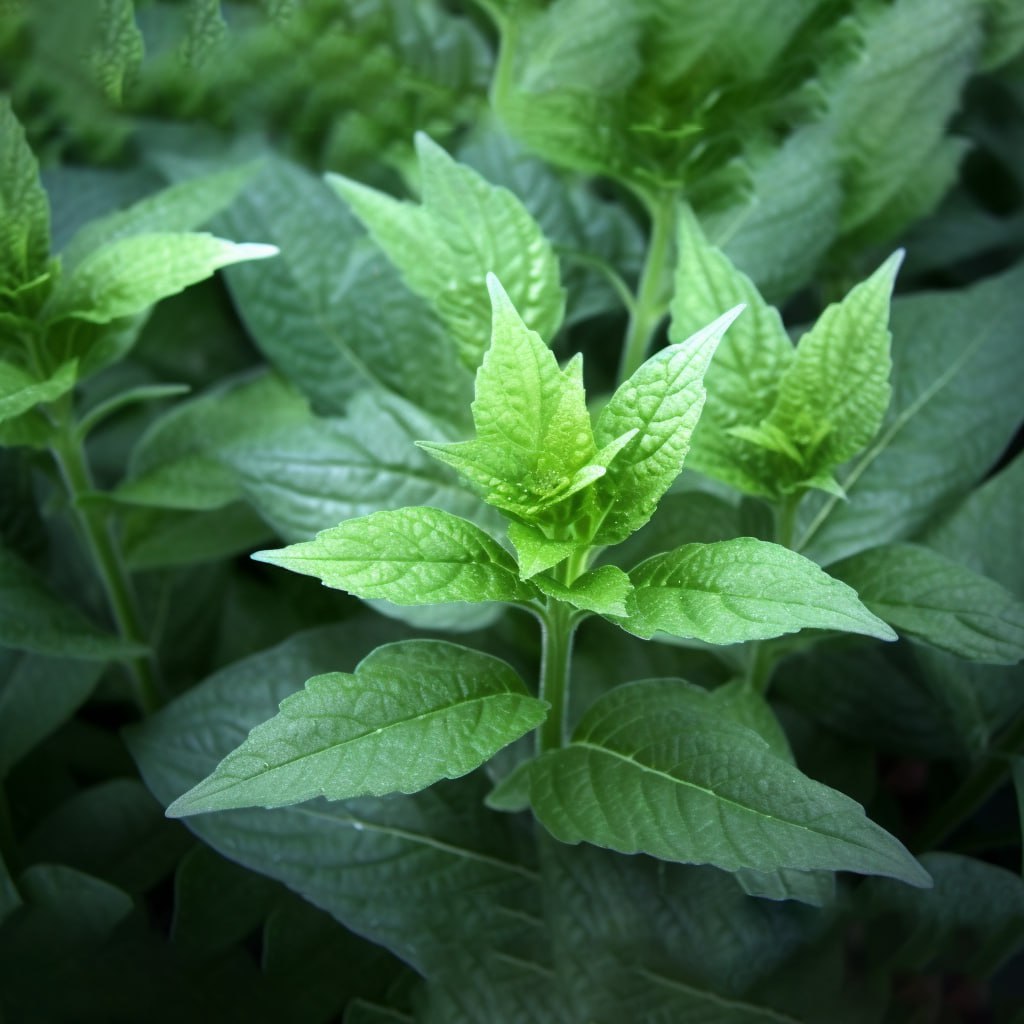
Radix Scrophulariae
- Effects Of Twenty-Five Traditional Antipyretic And Antidote Medicine Extracts Against Helicobacter Pylori From Swine In Vitro
- Fragmentation Study Of Iridoid Glycosides And Phenylpropanoid Glycosides In Radix Scrophulariae By Rapid Resolution Liquid Chromatography With Diode‐Array …
- Research On The Anti-Inflammation And Anti-Atherosclerosis Of Extracts From Radix Scrophulariae [J]
- Synergistic Nourishing ‘Yin’Effect Of Iridoid And Phenylpropanoid Glycosides From Radix Scrophulariae In Vivo And In Vitro
- Treatment Of Human Influenza A (H5N1) Infection With Ching-Wen-Bai-Du-Yin
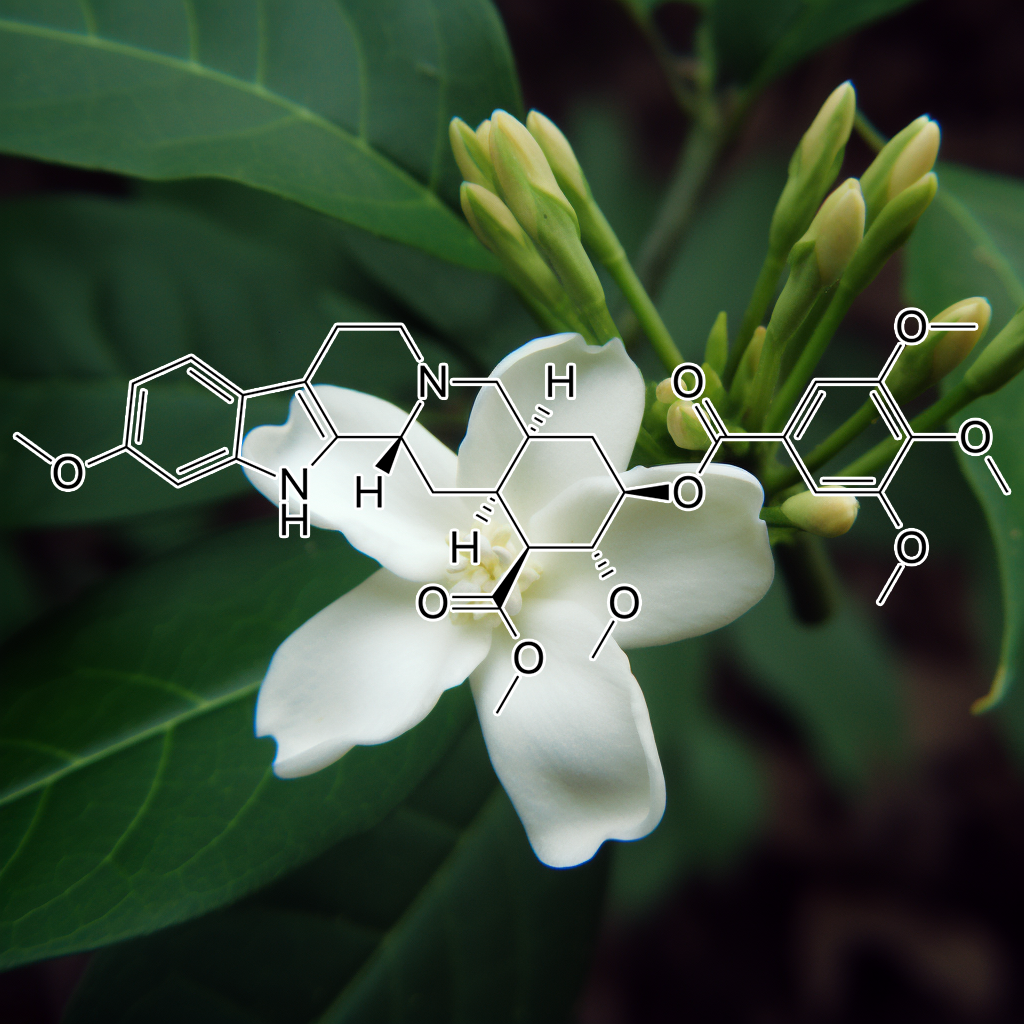
Reserpine (Rauvolfia verticillata)
- Biotechnological Interventions For Production Of Therapeutic Secondary Metabolites Using Hairy Root Cultures Of Medicinal Plants
- Investication On The Pharmacoprinciples Of A Pergularia Daemia (Forssk) Chiov
- Isolation, Chemical Profile And Antimalarial Activities Of Bioactive Compounds From Rauvolfia Caffra Sond
- Kandungan Reserpin\Ud Kultur Kalus Pule Pandak (Rauvolfia Verticillata (Lour.) Baillon)\Ud Setelah Dielisitasi Dengan Cendawan Pythium …
- New Perspectives On How To Discover Drugs From Herbal Medicines: Cam’S Outstanding Contribution To Modern Therapeutics
- Tcm-Based New Drug Discovery And Development In China
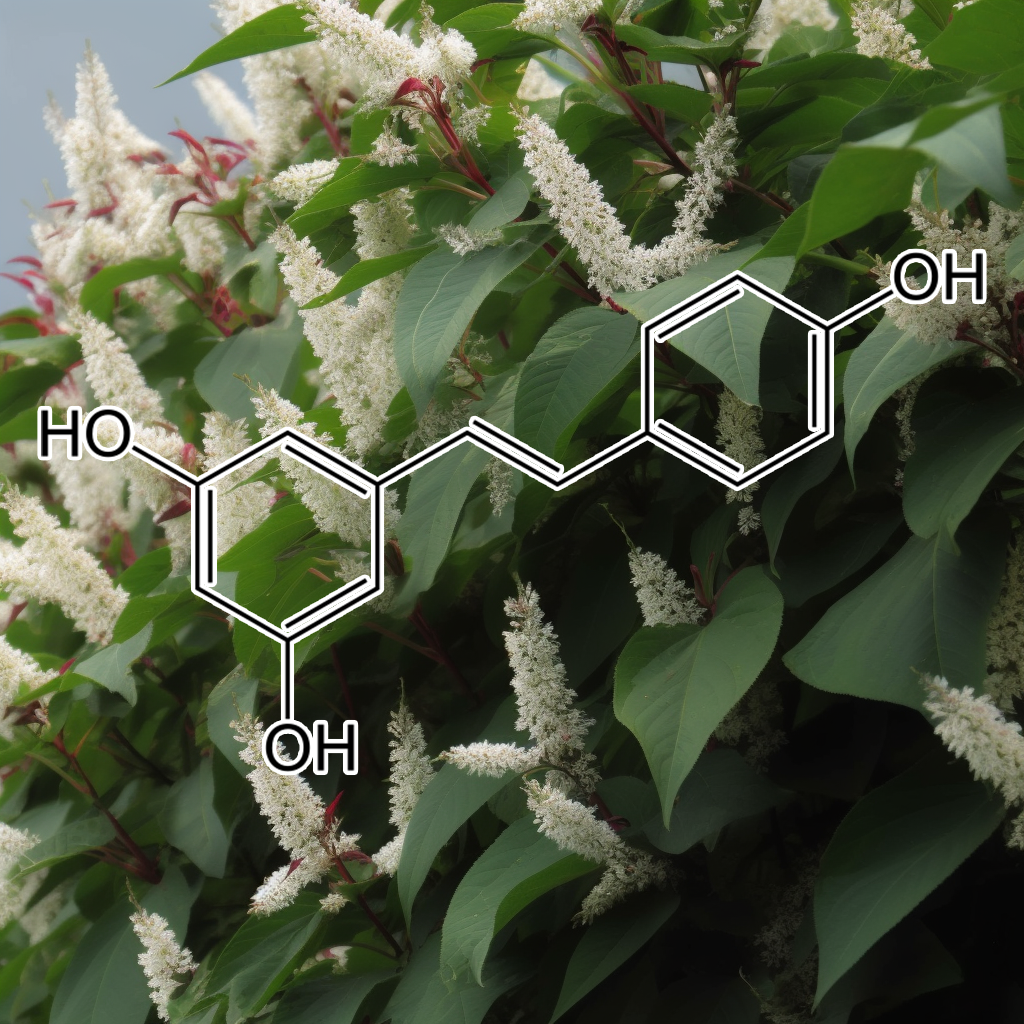
Resveratrol (Polygonum cuspidatum)
- 3, 4′, 5-Trihydroxy-Trans-Stilbene (Resveratrol) Inhibits Human Cytomegalovirus Replication And virus -Induced Cellular Signaling
- An Antioxidant Resveratrol Significantly Enhanced Replication Of Hepatitis C virus
- Antiviral Activities Of Resveratrol Against Rotavirus In Vitro And In Vivo
- Antiviral Activity Of Resveratrol
- Antiviral Activity Of Resveratrol Against Human And Animal virus es
- Antiviral Effect Of Resveratrol In Ducklings Infected With Virulent Duck Enteritis virus
- Antiviral Effect Of Resveratrol In Piglets Infected With Virulent Pseudorabies virus
- Antiviral Properties Of Resveratrol Against Pseudorabies virus Are Associated With The Inhibition Of Iκb Kinase Activation
- Chemopreventive Effect Of Resveratrol, Sesamol, Sesame Oil And Sunflower Oil In The Epstein–Barr virus Early Antigen Activation Assay And The Mouse Skin Two-Stage …
- Comparative Inhibitory Activity Of The Stilbenes Resveratrol And Oxyresveratrol On African Swine Fever virus Replication
- Development And Application Of Real-Time Fluorescence Quantitative Pcr For Detecting The Antiviral Activity Of Resveratrol Against Duck Plague virus In Vitro.
- Does Resveratrol Exhibit Antiviral Properties Against Cytomegalovirus Replication?
- Effect Of Resveratrol On Herpes Simplex virus Vaginal Infection In The Mouse
- Effect Of Topically Applied Resveratrol On Cutaneous Herpes Simplex virus Infections In Hairless Mice
- Identification Of A Resveratrol Tetramer As A Potent Inhibitor Of Hepatitis C virus Helicase
- In Vitro Antiviral Effects And 3D Qsar Study Of Resveratrol Derivatives As Potent Inhibitors Of Influenza H1N1 Neuraminidase
- Inhibition Of Influenza A virus Replication By Resveratrol
- Inhibitory Effect Of Resveratrol Against Duck Enteritis virus In Vitro
- Inhibitory Effects Of Resveratrol On The Epstein-Barr virus Lytic Cycle
- Resveratrol Exhibits A Strong Cytotoxic Activity In Cultured Cells And Has An Antiviral Action Against Polyomavirus : Potential Clinical Use
- Resveratrol Helps Recovery From Fatty Liver And Protects Against Hepatocellular Carcinoma Induced By Hepatitis B virus X Protein In A Mouse Model
- Resveratrol Inhibition Of Herpes Simplex virus Replication
- Resveratrol Inhibition Of Varicella-Zoster virus Replication In Vitro
- Resveratrol Inhibits Epstein Barr virus Lytic Cycle In Burkitt’S Lymphoma Cells By Affecting Multiple Molecular Targets
- Resveratrol Inhibits Proliferation And Survival Of Epstein Barr virus –Infected Burkitt’S Lymphoma Cells Depending On viral Latency Program
- Resveratrol Inhibits Respiratory Syncytial virus -Induced Il-6 Production, Decreases viral Replication, And Downregulates Trif Expression In Airway Epithelial …
- Resveratrol Inhibits The Trif-Dependent Pathway By Upregulating Sterile Alpha And Armadillo Motif Protein, Contributing To Anti-Inflammatory Effects After Respiratory …
- Resveratrol Prevents Hepatic Steatosis Induced By Hepatitis C virus Core Protein
- Resveratrol Suppresses Nuclear Factor-Κb In Herpes Simplex virus Infected Cells
- Resveratrol Trimer Enhances Gene Delivery To Hematopoietic Stem Cells By Reducing Antiviral Restriction At Endosomes
- Resveratrol-Mediated Gamma Interferon Reduction Prevents Airway Inflammation And Airway Hyperresponsiveness In Respiratory Syncytial virus -Infected …
- Study On Mechanism Of Antiviral Effect Of Resveratrol Against Coxsackie virus In Vitro
- The Effects Of Resveratrol On Antibacterial And Antiviral Properties
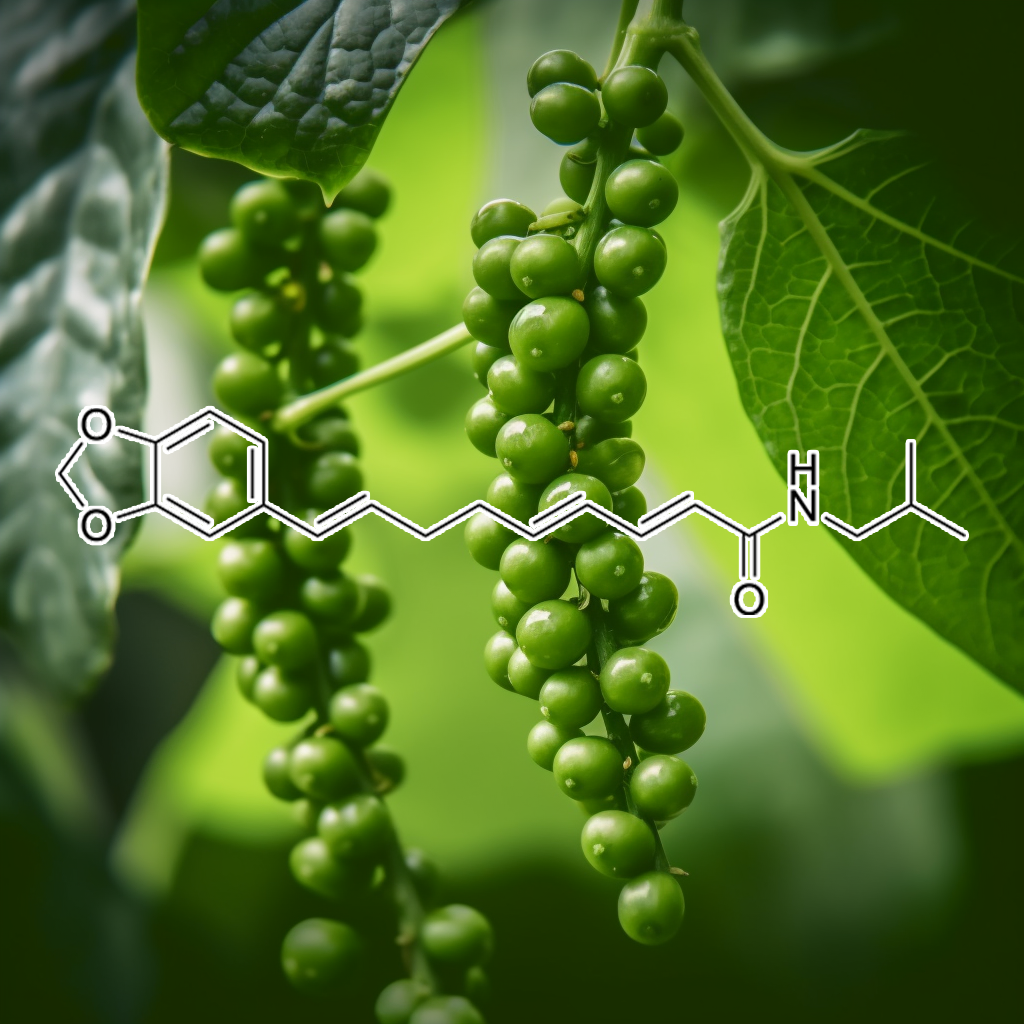
Retrofractamide A
- Overview Of Chemical Constituents And Pharmacological Activities Of Piper Longum Linn.
- Plant Biodiversity As A Resource For Natural Products For Insect Pest Management
- The Phosphine-Catalyzed Alkyne To 1, 3-Diene Isomerization Reaction
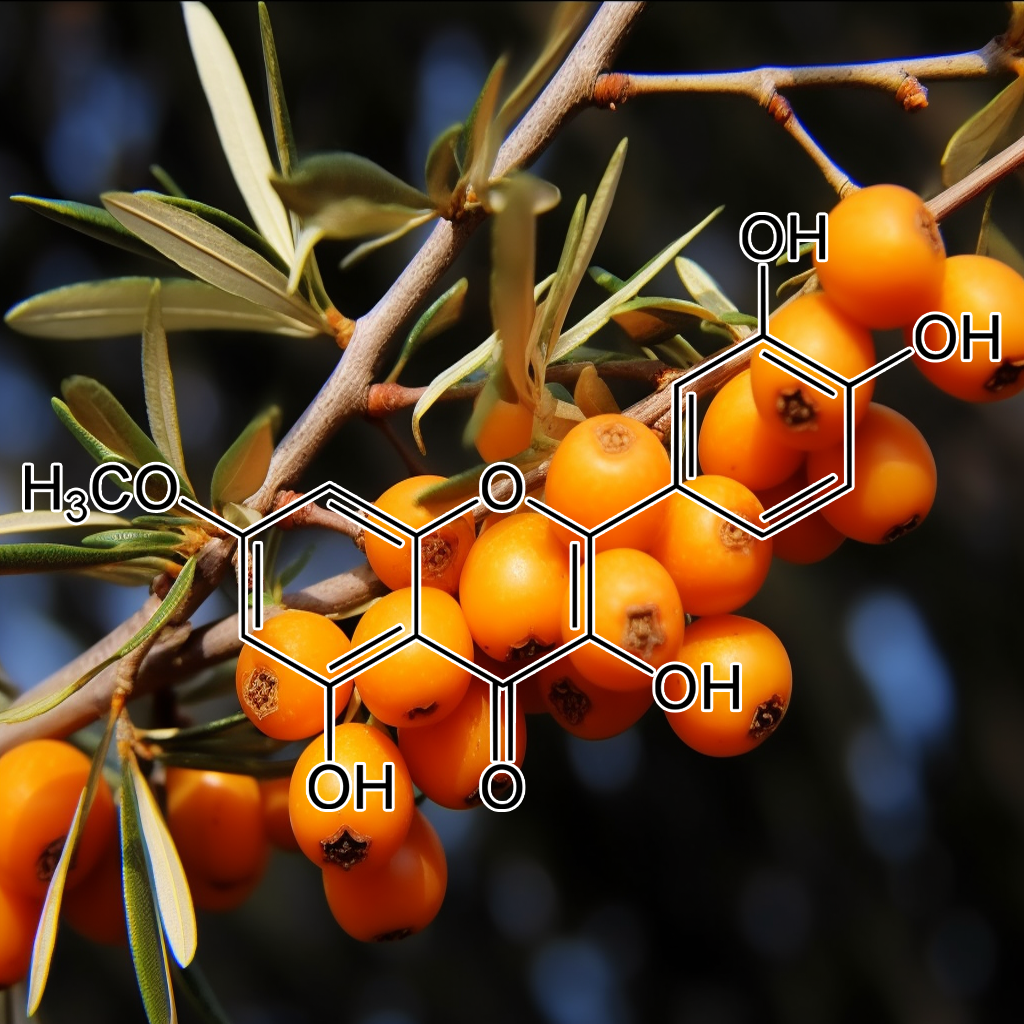
Rhamnetin (Syzygium aromaticum)
- Antimicrobial Efficacy Of Five Essential Oils Against Oral Pathogens: An In Vitro Study
- Effects Of The Syzygium Aromaticum L. Extract On Antioxidation And Inhibition Of Matrix Metalloproteinase In Human Dermal Fibroblast
- Enhancing The Flavour Of Oil By Infusion Of Different Herbs-Review
- Eugenia Caryophyllata Thunberg (Family Myrtaceae): A Review
- Hepatoprotective Effect Of Methanolic Extract Of Syzygium Aromaticum Against Hydralazine Induced Toxicity: An In Vitro Study
- In Silico Analysis Of Phytochemicals From Clove Against Bronchitis
Inhibitory Spectra Of Isolated Tannin-Rich Fraction And Assessment Of Compounds Using Chromatographic Techniques. - New Flavonol Glucuronides From The Flower Buds Of Syzygium Aromaticum (Clove)
- Other Health Benefits Of African Medicinal Spices And Vegetables
- Quality Assessment Of Syzygium Aromaticum: A Pharmacognostic And Phytochemical Approach
- Recent Trends In Indian Traditional Herbs Syzygium Aromaticum And Its Health Benefits
- Syzygium Aromaticum
- Syzygium Aromaticum L.(Myrtaceae): Traditional Uses, Bioactive Chemical Constituents, Pharmacological And Toxicological Activities
- Therapeutic And Medicinal Uses Of Lavanga-A Review
- It was found that flavonol-type compounds with 3′,4′-dihydroxy substitution, such as quercetin, physetin, and rhamnetin have the highest viral DNA binding inhibitory effect
- Rhamnetin, by increasing the expression of its target gene, it may increase the expression of RIPK3 (Figure 1). Thereby, it may: (1) augment chemokine levels; (2) trigger neuroinflammation; (3) stall neuroinvasive West Nile virus replication; (4) promote clearance of neuroinvasive West Nile virus (WNV); and (5) strengthen antiviral immunity against RNA viruses
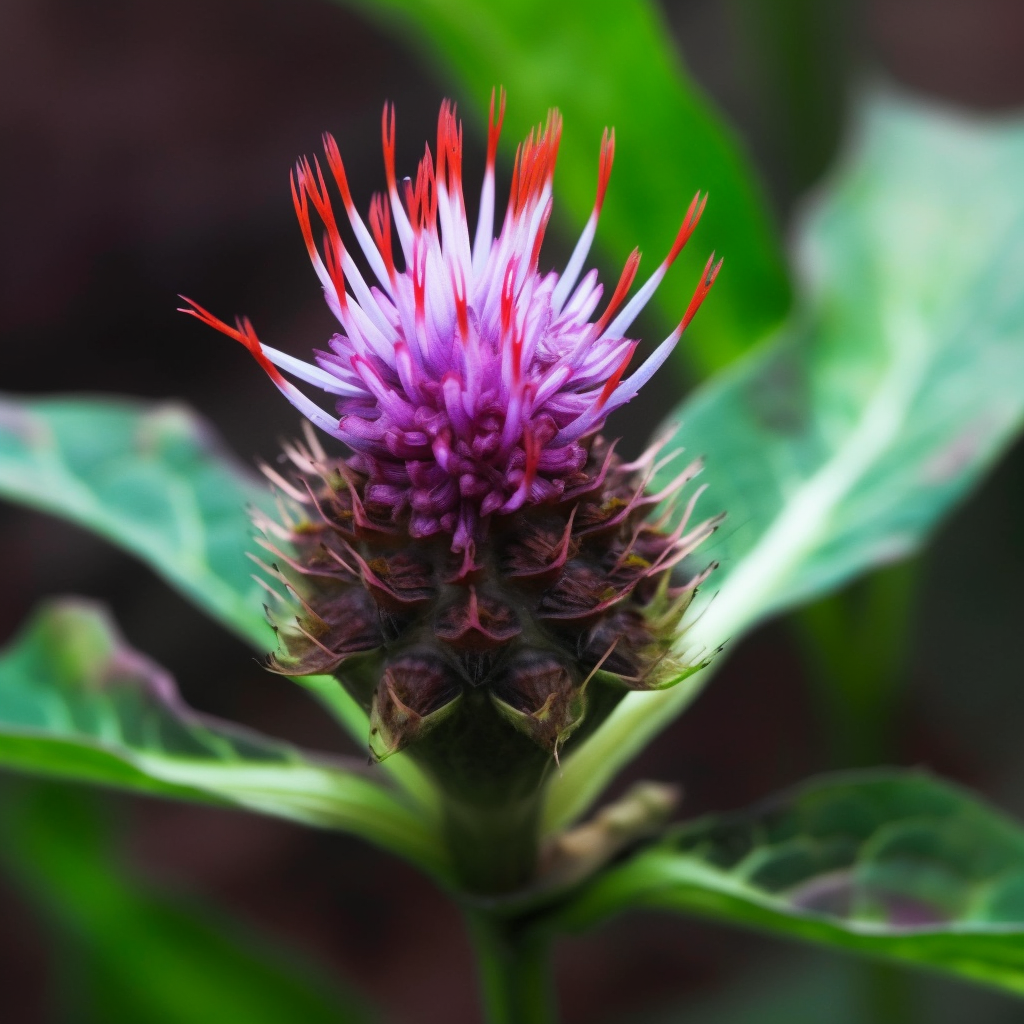
Rhizoma Atractylodis Macrocephalae
- A Review And Comment On The Current Situation Of 2019 Novel Coronavirus Prevention By Traditional Chinese Medicine
- Can Chinese Medicine Be Used For Prevention Of Corona virus Disease 2019 (Covid-19)? A Review Of Historical Classics, Research Evidence And Current …
- Chemical Composition And Pharmacology Research Progress Of Shenlingbaizhu Powder
- Chinese Herbal Medicine For Sars And Sars-Cov-2 Treatment And Prevention, Encouraging Using Herbal Medicine For Covid-19 Outbreak
- Diagnosis, Treatment, And Prevention Of 2019 Novel Coronavirus Infection In Children: Experts’ Consensus Statement
- Effect Of Fuzheng Huayu Formula And Its Actions Against Liver Fibrosis
- Efficacy Of Traditional Chinese Herbal Medicine In The Treatment Of Gastrointestinal Polyps And Chronic Gastritis: A Case Report
- Enhancement Action Of Yupingfeng Powder (Jiawei)(Radix Astragali Seu Hedysari, Rhizoma Atractylodis Macrocephalae, Etc.) On Immune Function Of Mice
- Medicinal Herbs For Hepatitis C virus Infection
- Protective Effect Of A Polysaccharide From Rhizoma Atractylodis Macrocephalae On Acute Liver Injury In Mice
- Traditional Chinese Medicine For Human Papillomavirus (Hpv) Infections: A Systematic Review
- Antiviral activities of atractylon from Atractylodis Rhizoma
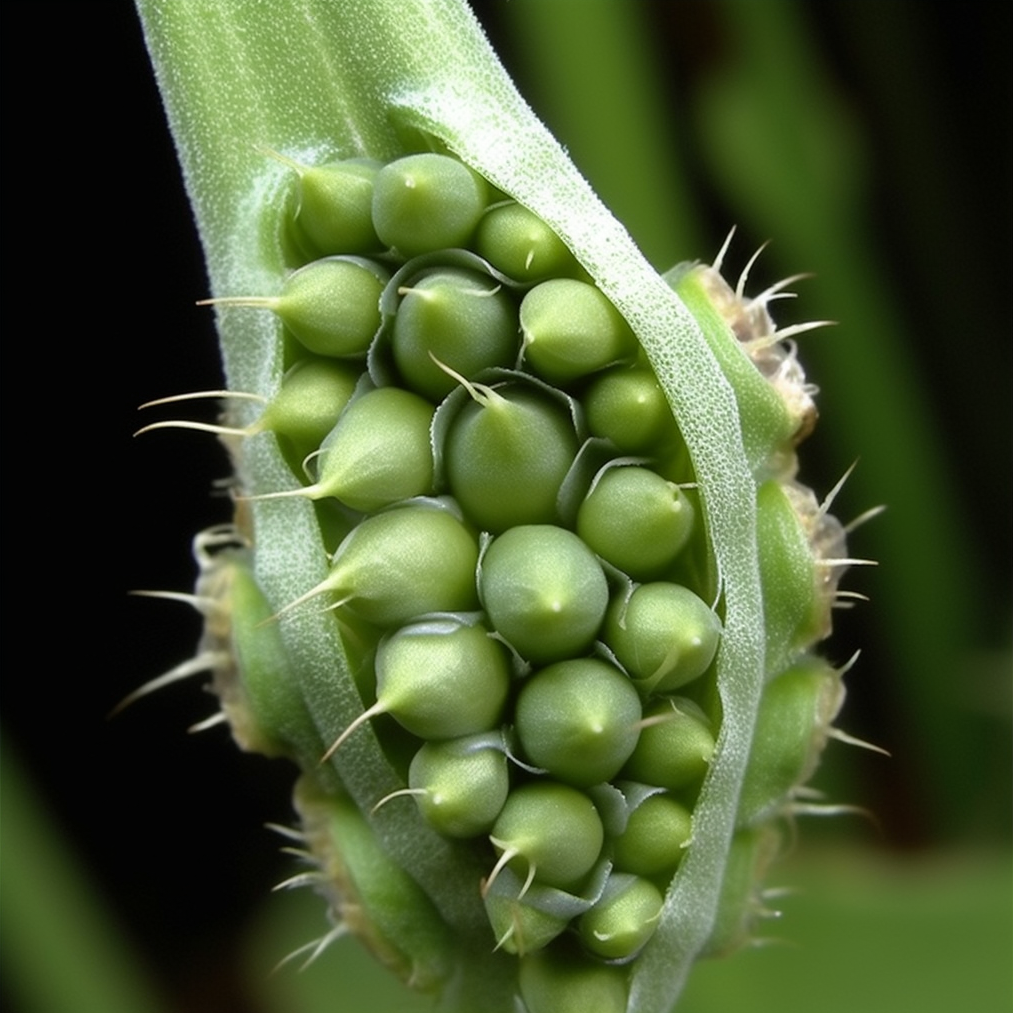
Rhizoma Pinelliae (Pinellia ternata)
- Comparative Research Of The Curative Effects Of Pinelliae Rhizoma And Pinelliae Rhizoma Praeparatum Cum Alumine On Ovalbumin-Induced Allergic Asthma In …
- Comprehensive Quality Evaluation Of Rhizoma Pinelliae From Different Origin By Clustering Analysis Method
- Determination For Free Total Organic Acids In Pinellia Ternate By Direct Potential Titration [J]
- Experimental Study On Acute Toxicity And Irritation Of Extracts From Raw Kansui And Vinegared Kansui [J]
- Herbal Therapies For Epilepsy: Chemistry, Biology And Potential Applications Of Selected Plants And Compounds.
- Plant Species Forbidden In Health Food And Their Toxic Constituents, Toxicology And Detoxification
- Purification And Characterization Of A Novel Plant Lectin From Pinellia Ternata With Antineoplastic Activity
- Radix Bupleuri: A Review Of Traditional Uses, Botany, Phytochemistry, Pharmacology, And Toxicology
- Rapid Method For Simultaneous Determination Of 11 Chemical Constituents In The Traditional Chinese Medicinal Prescription Wu-Ji-San By Reverse Phase High …
- Simultaneous Determination Of Nine Nucleosides In The Rhizome Of Pinellia Ternata From Different Origins And Its Counterfeit By Hplc∗
- Study On Anti-Tumor Mechanism Of Minor Bupleurum Decoction
- The Cyclodipeptides Compounds From Pinellia Ternate (Thunb.) Breit
- The Ethnobotanical, Phytochemical And Pharmacological Profile Of The Genus Pinellia
- Chinese herbal medicine for coronavirus disease 2019: A systematic review and meta-analysis
- Traditional Chinese medicine compound preparation for treating viral hepatitis
- Antiviral herbs-present and future
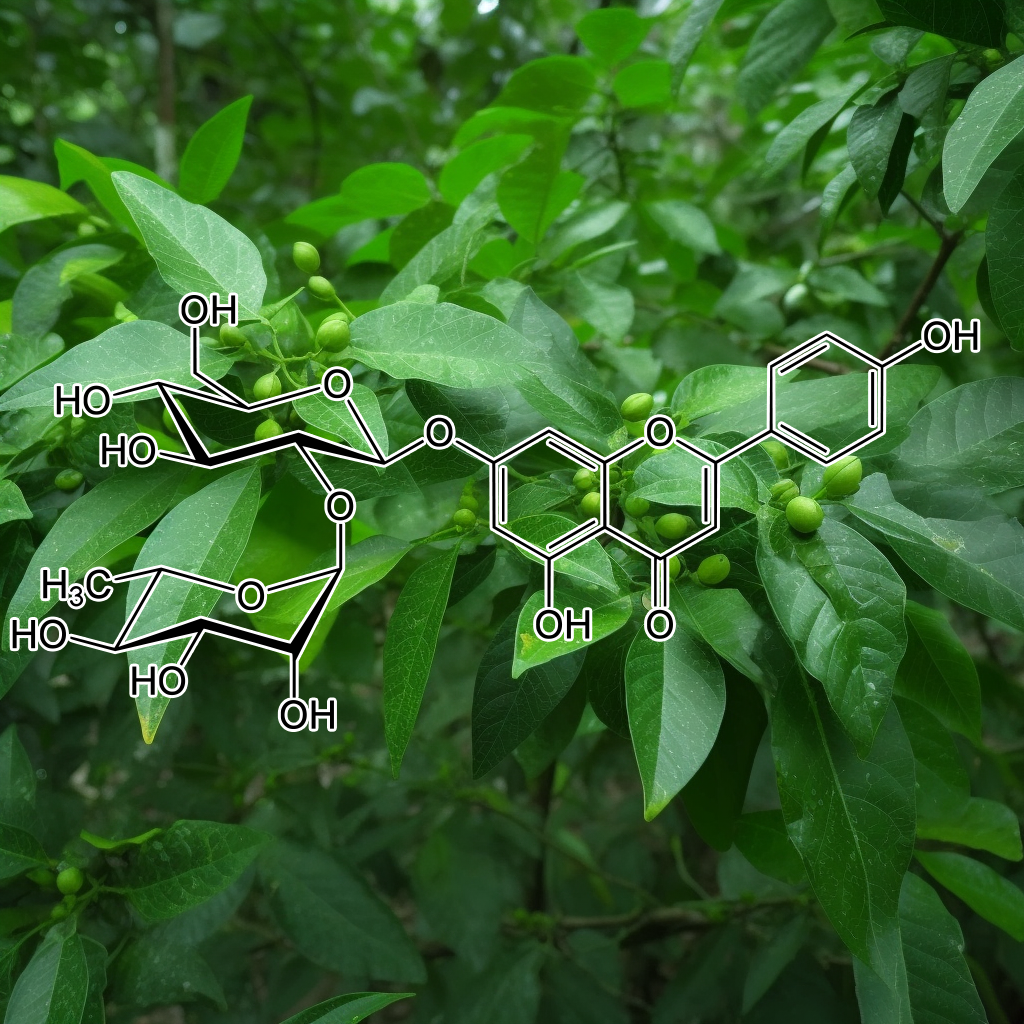
rhoifolin (Turpinia arguya)
- A Fluorescence Resonance Energy Transfer-Based Fluorometer Assay For Screening Anti-Coxsackievirus B3 Compounds
- Ameliorative Effects Of Rhoifolin In Scopolamine-Induced Amnesic Zebrafish (Danio Rerio) Model
- An Efficient Method For The Preparative Isolation And Purification Of Flavonoid Glycosides And Caffeoylquinic Acid Derivatives From Leaves Of Lonicera Japonica Thunb …
- An Overview Of Citrus Aurantium Used In Treatment Of Various Diseases
- Antioxidant Activity Of Flavonoids From Leaves Of Jatropha Curcas
- Antiviral Activity Of Natural Occurring Flavonoids In Vitro
- Comparative Antiarrhythmic And Anti‐Ischaemic Activity Of Some Flavones In The Guinea‐Pig And Rat
- Covid-19 And Flavonoids: In Silico Molecular Dynamics Docking To The Active Catalytic Site Of Sars-Cov And Sars-Cov-2 Main Protease
- Distribution Of Flavonoids And Furocoumarins In Juices From Cultivars Of Citrus Bergamia Risso
- Flavonoids In Grapefruit And Commercial Grapefruit Juices: Concentration, Distribution, And Potential Health Benefi Ts
- Inhibition Of African Swine Fever virus Infection By Genkwanin
- Inhibition Of Sars-Cov 3Cl Protease By Flavonoids
- Inhibitory Activity Of Flavonoids And Tannins Against Hiv-1 Protease
- Meta-Analysis Of Flavonoids With Antiviral Potential Against Coronavirus
- Natural Compounds As Potential Inhibitors Of Novel Coronavirus (Covid-19) Main Protease: An In Silico Study
- Optimization Of A Liquid Chromatography Method Based On Simultaneous Electrospray Ionization Mass Spectrometric And Ultraviolet Photodiode Array Detection For …
- Phenolic Constituents From The Flower Buds Of Lonicera Japonica And Their 5-Lipoxygenase Inhibitory Activities
- Potential Of Plant Bioactive Compounds As Sars-Cov-2 Main Protease (Mpro) And Spike (S) Glycoprotein Inhibitors: A Molecular Docking Study
- Production Of Rhoifolin And Tiliroside From Callus Cultures Of Chorisia Chodatii And Chorisia Speciosa
- Rhoifolin: A Review Of Sources And Biological Activities
- Rhoifolin; A Potent Antiproliferative Effect On Cancer Cell Lines
- Sars-Cov-2: An Update On Potential Antivirals In Light Of Sars-Cov Antiviral Drug Discoveries
- Separation Of Flavanone-7-O-Glycoside Diastereomers And Analysis In Citrus Juices By Multidimensional Liquid Chromatography Coupled With Mass Spectrometry
- Skrining Turunan Flavonoid Sebagai Kandidat Inhibitor Protease Nsp2 Dari virus Chikungunya Menggunakan Molecular Docking
- Structure Characterization Of Flavonoid O‐Diglycosides By Positive And Negative Nano‐Electrospray Ionization Ion Trap Mass Spectrometry
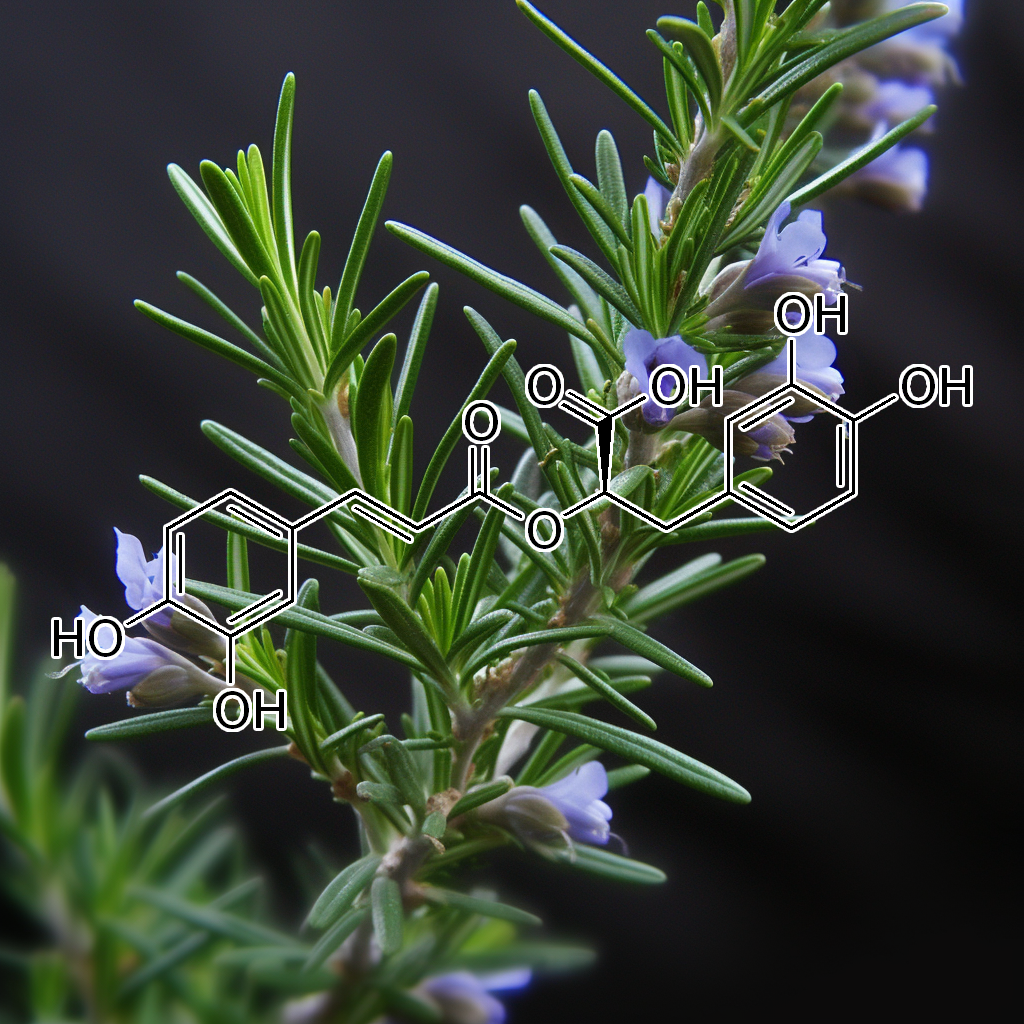
Rosmarinic acid (rosemary)
- A Model For Involvement Of Proline During Pseudomonas‐Meaiated Stimulation Of Rosmarinic Acid Levels In Oregano Shoot Clones
- Anti-Atherosclerosis Activity Of Rosmarinic Acid In Human Aortic Smooth Muscle Cells
- Antioxidant Activity Of A Rosemary Extract And Its Constituents, Carnosic Acid, Carnosol, And Rosmarinic Acid, In Bulk Oil And Oil-In-Water Emulsion
- Antioxidant And Antimicrobial Activities Of Rosemary Extracts Linked To Their Polyphenol Composition
- Antiviral Effect Of Aqueous Extracts From Species Of The Lamiaceae Family Against Herpes Simplex virus Type 1 And Type 2 In Vitro
- Application Of Organic Solvent Nanofiltration For Concentration Of Antioxidant Extracts Of Rosemary (Rosmarinus Officiallis L.)
- Bioactivity And Potential Health Benefits Of Rosmarinic Acid
- Biosynthesis And Accumulation Of Rosmarinic Acid In Plant Cell Cultures
- Biotechnological Applications For Rosmarinic Acid Production In Plant
- Degradation Study Of Carnosic Acid, Carnosol, Rosmarinic Acid, And Rosemary Extract (Rosmarinus Officinalis L.) Assessed Using Hplc
- Effect Of Phenological Stages On Essential Oil Content, Composition And Rosmarinic Acid In Rosmarinus Officinalis L.
- Extractability Of Rosmarinic Acid By Using Three Different Aqueous Based Extraction Procedures
- Impact Of Ethanolic Lamiaceae Extracts On Herpesvirus Infectivity In Cell Culture
- In Vivo Analgesic And Anti-Inflammatory Activities Of Rosmarinus Officinalis Aqueous Extracts, Rosmarinic Acid And Its Acetyl Ester Derivative
- Investigation Of Lepechinia Graveolens For Its Antioxidant Activity And Phenolic Composition
- Optimization Of Rosmarinic Acid Extraction From Lemon Balm (Melissa Officinalis)
- Phenolic Antioxidant Compounds Produced By In Vitro. Cultures Of Rosemary (Rosmarinus Officinalis.) And Their Anti-Inflammatory Effect On Lipopolysaccharide …
- Prooxidant Action Of Rosmarinic Acid: Transition Metal-Dependent Generation Of Reactive Oxygen Species
- Prophylactic Effects Of Ellagic Acid And Rosmarinic Acid On Doxorubicin‐Induced Neurotoxicity In Rats
- Recovery And Purification Of Rosmarinic Acid From Rosemary Using Electrodialysis
- Review On Rosmarinic Acid Extraction, Fractionation And Its Anti-Diabetic Potential
- Rosemary (Rosmarinic Acid)
- Rosmarinic Acid Alleviates Neurological Symptoms In The G93A-Sod1 Transgenic Mouse Model Of Amyotrophic Lateral Sclerosis
- Rosmarinic Acid As Potential Anti-Inflammatory Agent
- Rosmarinic Acid From Beach Waste: Isolation And Hplc Quantification In Zostera Detritus From Arcachon Lagoon
- Rosmarinic Acid, A Photo-Protective Agent Against Uv And Other Ionizing Radiations
- Rosmarinus Officinalis L.: An Update Review Of Its Phytochemistry And Biological Activity
- Solvent Extraction And Purification Of Rosmarinic Acid From Supercritical Fluid Extraction Fractionation Waste: Economic Evaluation And Scale-Up
- Stability Of Rosmarinic Acid In Aqueous Extracts From Different Lamiaceae Species After In Vitro Digestion With Human Gastrointestinal Enzymes
- Storage Method, Drying Processes And Extraction Procedures Strongly Affect The Phenolic Fraction Of Rosemary Leaves: An Hplc/Dad/Ms Study
- The Effect Of Methyl Jasmonate On Production Of Antioxidant Compounds In Shoot Cultures Of Salvia Officinalis L
- The Effect Of Rosmarinic Acid On Immunological And Neurological Systems
- The Effect Of Triacontanol On Shoot Multiplication And Production Of Antioxidant Compounds In Shoot Cultures Of Salvia Officinalis L.
- Therapeutic And Nutraceutical Potential Of Rosmarinic Acid—Cytoprotective Properties And Pharmacokinetic Profile
- Therapeutic Potential Of Rosmarinic Acid: A Comprehensive Review
- Voltammetric Determination Of Rosmarinic Acid On Chitosan/Carbon Nanotube Composite-Modified Carbon Paste Electrode Covered With Dna

rupestonic acid (Artemisia rupestris)
- 1, 2, 3-Triazole-Containing Derivatives Of Rupestonic Acid: Click-Chemical Synthesis And Antiviral Activities Against Influenza virus es
- Achievements In The Research Of Artemisia Rupestris L.
- Advances In Studies On The Rupestonic Acid Derivatives As Anti-Influenza Agents.
- Anti-Flu Effect Of Compound Yizhihao Granule And Its Effective Components
- Anti-Microbial Effects Of Different Extracts Obtained From Artemisia Rupestris Cytotoxické, Protirakovinné A Antimikrobiální Účinky Extraktů Z Artemisia Rupestris
- Chemical Modification Of Rupestonic Acid And Preliminarily In Vitro Antiviral Activity Against Influenza A3 And B virus es
- Chinese Herbal Medicine Compound Yi-Zhi-Hao Pellet Inhibits Replication Of Influenza virus Infection Through Activation Of Heme Oxygenase-1
- Discovery Of Multitarget-Directed Ligands Against Influenza A virus From Compound Yizhihao Through A Predictive System For Compound-Protein …
- Dmo-Cap Inhibits Influenza virus Replication By Activating Heme Oxygenase-1-Mediated Ifn Response
- Effects Of Artemisiae Rupestris Granules On Anti-Inflammatory And Immune Function In Mice [J]
- Pl-02 Study On The Active Compounds Of Ethnic Medicine And Rupestonic Acid Derivatives
- Pp-201 Synthesis And Anti-Influenza Activity Of Rupestonic Acid Derivatives
- Quantitative Determination Of Rupestonic Acid In Rat Plasma By High‐Performance Liquid Chromatography–Tandem Mass Spectrometry And Its Application In A …
- Rupestonic Acid Derivative Yzh-106 Suppresses Influenza virus Replication By Activation Of Heme Oxygenase-1-Mediated Interferon Response
- Structural Modification On Rupestonic Acid Leads To Highly Potent Inhibitors Against Influenza virus
- Structure–Activity Relationship Studies Of 1-(1′-Hydroxyalkyl) Rupestonic Acid Methyl Esters Against Influenza virus es
- Synthesis And Anti-Influenza Activity Of Aminoalkyl Rupestonates
- Synthesis Of Rupestonic Acid Amide Derivatives And Their In Vitro Activity Against Type A3 And B Flu virus And Herpes Simplex I And Ii
- Synthesis Of Rupestonic Acid Derivatives With Antiviral Activity
- Unusual Guaiane Sesquiterpenoids From Artemisia Rupestris
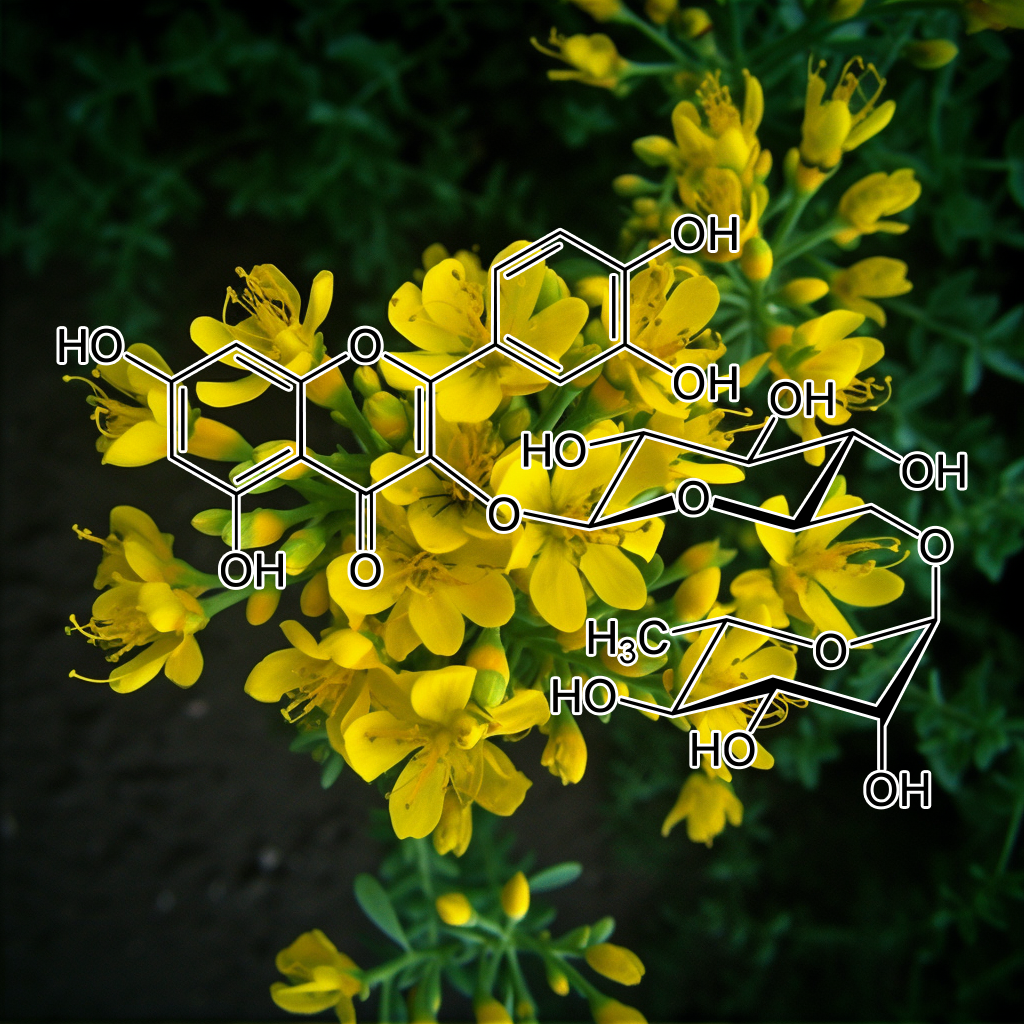
Rutin (Ruta graveolens)
- 4Th National Congress On Medicinal Plants 12, 13 May 2015 Tehran-Iran
- A High-Performance Thin Layer Chromatography Determination And Quantification Of Rutin In Caralluma Nilagiriana, An Endemic Medicinal Plant
- A Sustainable One‐Pot, Two‐Enzyme Synthesis Of Naturally Occurring Arylalkyl Glucosides
- Antiartherosclerotic Effects Of Plant Flavonoids
- Antibacterial And Cytotoxic Activities Of Some Libyan Medicinal Plants
- Antilymphoma Potential Of The Ethanol Extract And Rutin Obtained Of The Leaves From Schinus Molle Linn.
- Application Of Eco-Friendly Bismuth Film Electrode For The Sensitive Determination Of Rutin
- Barrier Protective Effects Of Rutin In Lps-Induced Inflammation In Vitro And In Vivo
- Cardioprotective Effects Of Rutin In Rats Exposed To Pirarubicin Toxicity
- Comparative Analysis Of Rutin Content In Some Egyptian Plants: A Validated Rp-Hplc-Dad Approach
- Effect Of Rutin On virus Inactivation By Amt In Combination With Ultraviolet-A Irradiation In Platelet Concentrates
- Effects Of Rutin And Quercetin On Monooxygenase Activities In Experimental Influenza virus Infection
- Effects Of The Chronic Ingestion Of An Infusion Of Ruta Chalepensis On The Vasomotor Responses Of Rat Aortic Rings
- Evaluation Of Five Nematode-Antagonistic Plants Used As Green Manure To Control Xiphinema Index Thorne Et Allen On Vitis Vinifera L.
- High-Performance Thin-Layer Chromatographic Method For Estimation Of Rutin In Medicinal Plants
- In Vitro Antimicrobial Activity Of Crude Extracts Of Some Medicinal Plants From Al-Baha Region In Saudi Arabia
- In Vitro Antiviral Activity Of Fisetin, Rutin And Naringenin Against Dengue virus Type-2
- Journal Of Natural Products And Resources
- Melt Stabilization Of Pe With Natural Antioxidants: Comparison Of Rutin And Quercetin
- Methyltransferases From Ruta Graveolens L.: Molecular Biology And Biochemistry
- Occurrence Of Rosmarinic Acid, Chlorogenic Acid And Rutin In Marantaceae Species
- Penentuan Serotipe virus Dengue Dan Gambaran Manifestasi Klinis Serta Hematologi Rutin Pada Infeksi virus Dengue
- Preparation Of Rutin-Liposome Drug Delivery Systems And Evaluation On Their In Vitro Antioxidant Activity
- Prevalensi virus Hepatitis Pada Pasien Penyakit Ginjal Kronik Yang Menjalani Hemodialisis Rutin Bagian Ilmu Penyakit Dalam Rsup Prof. Dr. Rd Kandou Manado
- Ruta Graveolens And Its Active Constituent Rutin Protect Against Diethylnitrosamine-Induced Nephrotoxicity Through Modulation Of Oxidative Stress
- Ruta Graveolens And Rutin, As Its Major Compound: Investigating Their Effect On Spatial Memory And Passive Avoidance Memory In Rats
- Ruta Graveolens: From Traditional System Of Medicine To Modern Pharmacology: An Overview
- Rutin And Its Cyclodextrin Inclusion Complexes: Physico-Chemical Evaluation And In Vitro Activity On B164A5 Murine Melanoma Cell Line
- Sterols Bioactivity Of Ruta Graveolens L. And Murraya Paniculata L.
- Structure‐Activity Relationships Analysis Of Monomeric And Polymeric Polyphenols (Quercetin, Rutin And Catechin) Obtained By Various Polymerization Methods
- The Beneficial Role Of Rutin, A Naturally Occurring Flavonoid In Health Promotion And Disease Prevention: A Systematic Review And Update
- The Effect Of An Aqueous Propolis Extract, Of Rutin And Of A Rutin-Quercetin Mixture On Experimental Influenza virus Infection In Mice.
- The Effect Of Rutin On Antioxidant And Anti-Inflammation In Streptozotocin-Induced Diabetic Rats
- The Pharmacological Potential Of Rutin
- Virtual Screening Of Natural Inhibitors To The Predicted Hbx Protein Structure Of Hepatitis B virus Using Molecular Docking For Identification Of Potential Lead
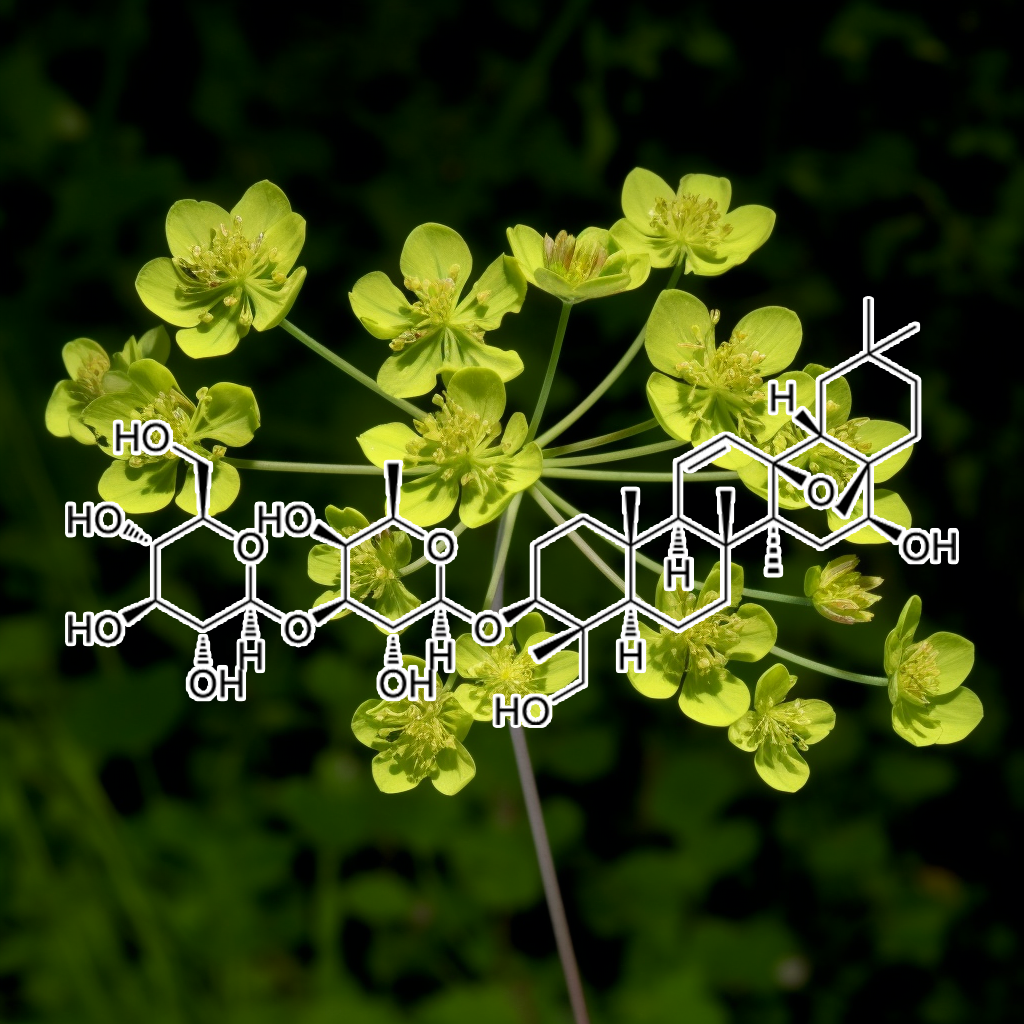
saikosapoins (Bupleurum)
- 11 Pharmacological Activity Of Saikosaponins
- A Systematic Review Of The Active Saikosaponins And Extracts Isolated From Radix Bupleuri And Their Applications
- An In-Silico Evaluation Of Different Saikosaponins For Their Potency Against Sars-Cov-2 Using Nsp15 And Fusion Spike Glycoprotein As Targets
- Antiviral Activity Of Seven Iridoids, Three Saikosaponins And One Phenylpropanoid Glycoside Extracted From Bupleurum Rigidum And Scrophularia Scorodonia
- Antiviral Effects Of Saikosaponins On Human Coronavirus 229E In Vitro
- Antiviral Natural Products And Herbal Medicines
- Chinese Medicinal Herb: A Clinical Monogragh Of Radix Bupleuri (Chai Hu)
- Comparison Between Evaporative Light Scattering Detection And Charged Aerosol Detection For The Analysis Of Saikosaponins
- Cytotoxic Triterpenoid Glycosides (Saikosaponins) From The Roots Of Bupleurum Chinense
- Determination Of Saikosaponins A, C, And D In Bupleurum Chinese Dc From Different Areas By Capillary Zone Electrophoresis
- Determination Of Saikosaponins In Radix Bupleuri By Hplc
- In Vitro Antiviral Activity Of A Saponin From Anagallis Arvensis, Primulaceae, Against Herpes Simplex virus And Poliovirus
- In Vivo And In Vitro Antiinflammatory Activity Of Saikosaponins
- Modulatory Effects Of Extracts Of Vinegar-Baked Radix Bupleuri And Saikosaponins On The Activity Of Cytochrome P450 Enzymes In Vitro
- Pharmacological Effects And Chemical Constituents Of Bupleurum
- Purposing Saikosaponins For The Treatment Of Covid-19
- Saikosaponin B2 Is A Naturally Occurring Terpenoid That Efficiently Inhibits Hepatitis C virus Entry
- Saikosaponins With Similar Structures But Different Mechanisms Lead To Combined Hepatotoxicity
- Saikosaponins: A Review Of Pharmacological Effects
- Species Discrimination Of Radix Bupleuri Through The Simultaneous Determination Of Ten Saikosaponins By High Performance Liquid Chromatography With Evaporative …
- The Characteristics Of A Microwave Extraction Process Used For Saikosaponins From Bupleurum Falcatum Root
- The Effects Of Saikosaponins On Biological Membranes
- Ultrasonic-Assisted Micellar Extraction And Cloud-Point Pre-Concentration Of Major Saikosaponins In Radix Bupleuri Using High Performance Liquid
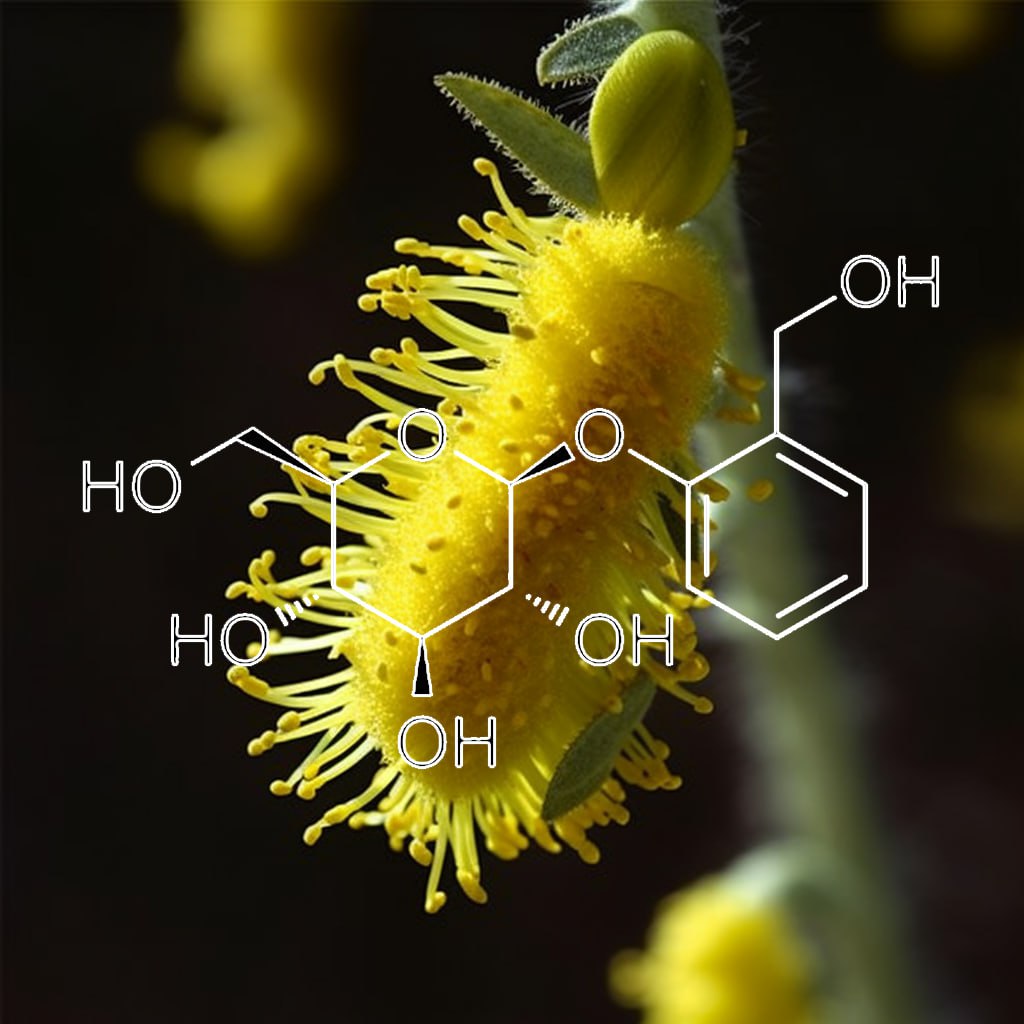
Salicin (Salix babylonicaL)
Isolation of Salicin Derivatives from Homalium cochinchinensis and Their Antiviral Activities

Salidroside (Rhodiola Rosea)
- A Preliminary Study: The Anti-Proliferation Effect Of Salidroside On Different Human Cancer Cell Lines
- Approaches Of Rhodiola Kirilowii And Rhodiola Rosea Field Cultivation In Poland And Their Potential Health Benefits
- Assessing The Quality And Potential Efficacy Of Commercial Extracts Of Rhodiola Rosea L. By Analyzing The Salidroside And Rosavin Content And The …
- Biotechnological Approaches To Enhance Salidroside, Rosin And Its Derivatives Production In Selected Rhodiola Spp. In Vitro Cultures
- Comparison Of Phenylethanoids Content In Rhodiola Kirilowii And Rhodiola Rosea Roots Applying A Newly Developed Uplc-Ms/Ms Method
- Effects Of Rhodiola Rosea And Panax Ginseng On The Metabolic Parameters Of Rats Submitted To Swimming
- Effects Of Salidroside On Exhaustive Exercise‑Induced Oxidative Stress In Rats
- In Vivo Th1 And Th2 Cytokine Modulation Effects Of Rhodiola Rosea Standardised Solution And Its Major Constituent, Salidroside
- Novel Method Of Detection Of Phenylpropanoids Of Rhodiola Roots Species
- Performance Improvement In Human And Animal Athletes
- Phytochemistry Of Rhodiola Rosea
- Qualitative And Quantitative Analysis Of Different Rhodiola Rosea Rhizome Extracts By Uhplc-Dad-Esi-Msn
- Rapid Resolution Liquid Chromatography (Rrlc) Analysis For Quality Control Of Rhodiola Rosea Roots And Commercial Standardized Products
- Review Of The Molecular Genetics In Higher Plants Towards Salidrosid And Cinnamyl Alcohol Glycosides Biosynthesis In Rhodiola Rosea L.
- Rhodiola Plants: Chemistry And Biological Activity
- Rhodiola Rosea Exerts Antiviral Activity In Athletes Following A Competitive Marathon Race
- Salidroside Induces Cell-Cycle Arrest And Apoptosis In Human Breast Cancer Cells
- The Authenticity And Quality Of Rhodiola Rosea Products
- The Influence Of Rhodiola Rosea Extracts And Rosavin On Cutaneous Angiogenesis Induced In Mice After Grafting Of Syngeneic Tumor Cells
- The Pseudoendogenous Anabolic Steroid 1, 4-Androstadiene-3, 17-Dione Does Not Occur Naturally In Rhodiola Rosea L. Radix And Rhizome
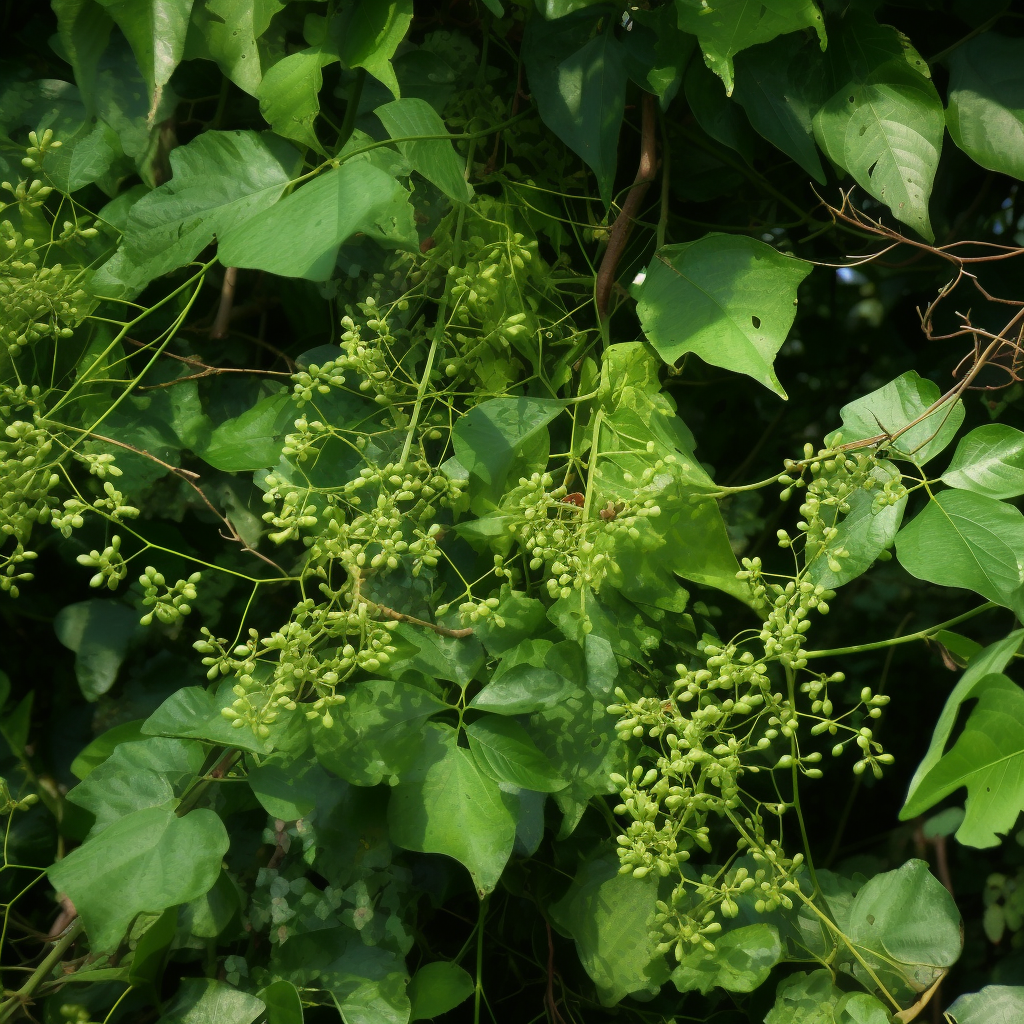
Salvadora persica
In December 2019, an outbreak of coronavirus disease 2019 (COVID-19) commenced in Wuhan, China and affected around 210 countries and territories in a matter of weeks. It has a phylogenetic similarity to SARS-CoV and it was named coronavirus 2 (SARS-CoV-2) and caused severe acute respiratory syndrome that could lead to death. One of the promising therapeutic strategies for virus infection is the search for enzyme inhibitors among natural compounds using molecular docking in order to obtain products with minimal side effects. COVID-19 virus main protease plays a vital role in mediating viral transcription and replication, introducing it as an attractive antiviral agent target. Metabolic profiling of the aqueous extract of Salvadora persicaL. (Salvadoraceae) aerial parts dereplicated eleven known flavonol glycosides using LC-HRESIMS.
All the annotated flavonoids exhibited significant binding stability at the N3 binding site to different degrees, except isorhamnetin-3-O-β-D-glucopyranoside, when compared with the currently used COVID-19 main protease inhibitor, darunavir. Structural similarity between the identified flavonoids enabled the study of the relationship between their structure and interactions with the receptor in the N3 binding site of the COVID-19 main protease. The results indicate that the basic flavonol nucleus possesses activity itself. Moreover, the presence of a rutinose moiety at the 3 position of ring C and absence of an O-methyl group in ring B of the flavonol structure could increase the binding stability. This study provides a scientific basis for the health benefits of the regular use of S. persica as it leaches bioactive flavonoids in the aqueous saliva.
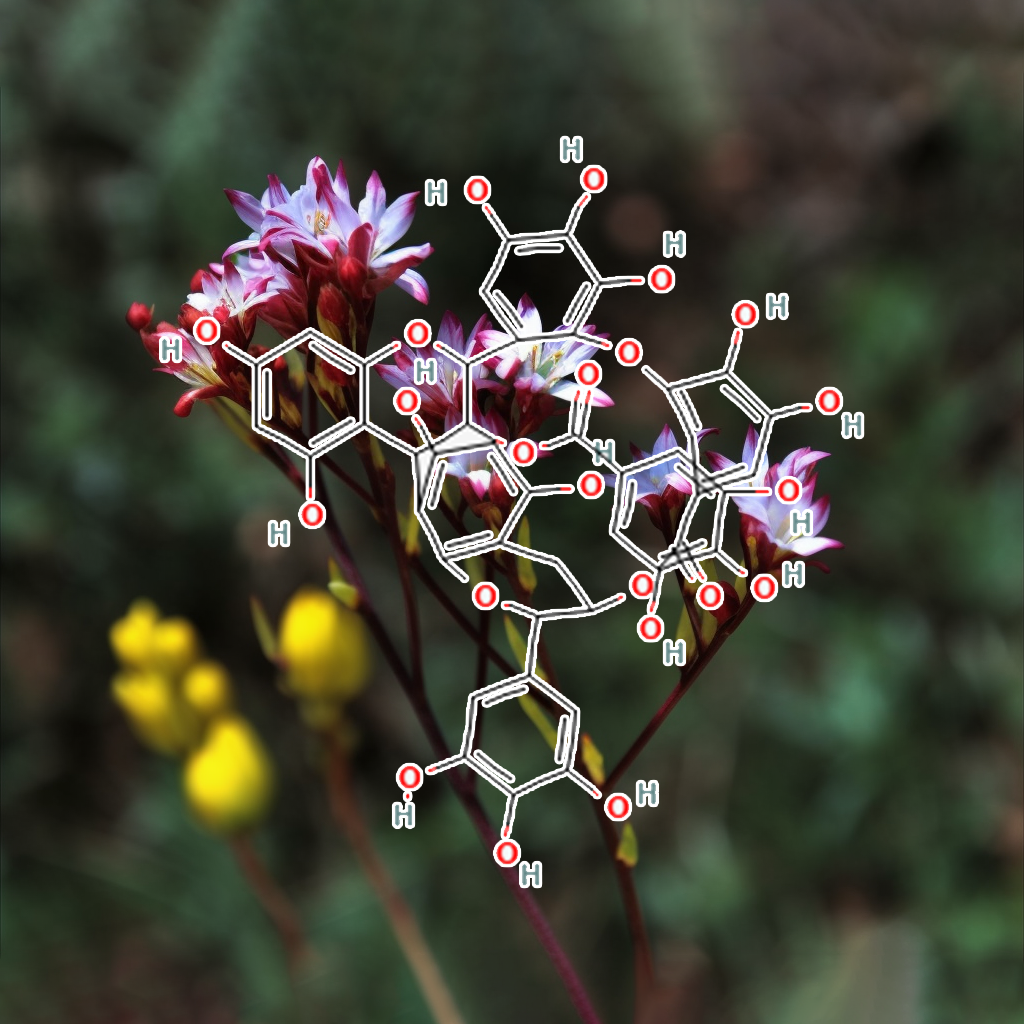
samarangenin B (Limonium bicolor)
- An Evidence Based Review On Oriental Medicine For The Treatment Of Herpes Simplex Infections And Their Availability In Iran
- Antiviral Activities Of Radix Isatidis Polysaccharide Against Pseudorabies virus In Swine Testicle Cells
- Antiviral Phytochemicals: An Overview
- In Vitro Antiviral Activity Of Prodelphinidin B-2 3, 3′-Di-O-Gallate From Myrica Rubra
- In Vitro Antiviral Screening Of Psidium Gujava L. Against Hsv-1 And Hsv-2 By Cpe Inhibition Assay
- Limonium Sinense And Gallic Acid Suppress Hepatitis C virus Infection By Blocking Early viral Entry
- Mechanism Of Action Of The Suppression Of Herpes Simplex virus Type 2 Replication By Pterocarnin A
- Mutagenic And Cytotoxic Activities Of Limonium Globuliferum Methanol Extracts
- Putranjivain A From Euphorbia Jolkini Inhibits Both virus Entry And Late Stage Replication Of Herpes Simplex virus Type 2 In Vitro
- Samarangenin B From Limonium Sinense Suppresses Herpes Simplex virus Type 1 Replication In Vero Cells By Regulation Of viral Macromolecular Synthesis
- The Complete Chloroplast Genome Sequence Of Limonium Sinense (Plumbaginaceae)
- Traditional Chinese Herbal Medicine As A Source Of Molecules With Antiviral Activity
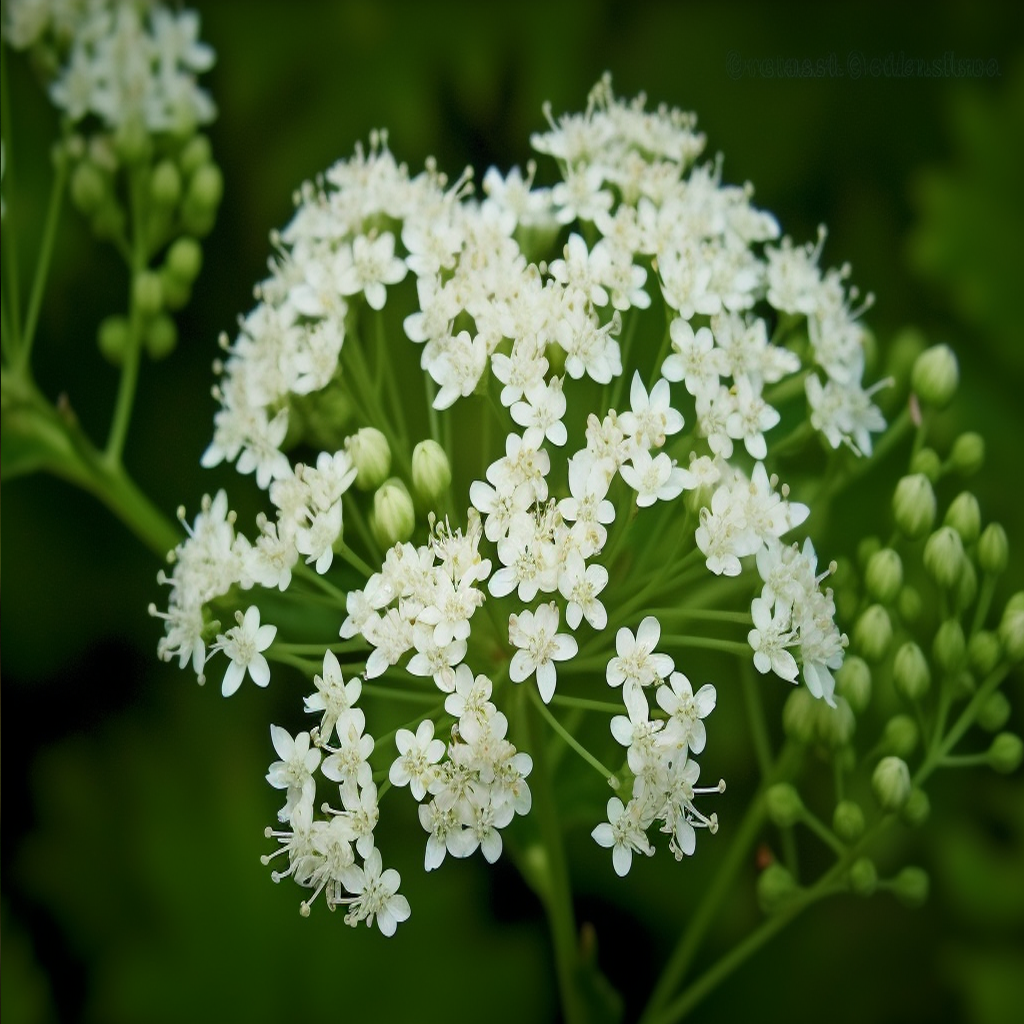
Saposhnikovia divaricata
- A Preliminary Investigation On The Control Of Culex Pipiens Pallens With The Ethanol Extracts Of Five Umbelliferae Herbal Medicines
- Antiviral Chinese Medicinal Herbs Against Respiratory Syncytial virus
- Biologically Active Polysaccharides From Medicinal Plants Of The Far East
- Chromones And Coumarins From Saposhnikovia Divaricata (Turcz.) Schischk. Growing In Buryatia And Mongolia And Their Cytotoxicity
- Diversity Of Pharmacological Properties In Chinese And European Medicinal Plants: Cytotoxicity, Antiviral And Antitrypanosomal Screening Of 82 Herbal Drugs
- Effect Of Juice And Extracts From Saposhnikovia Divaricata Root On The Colon Cancer Cells Caco-2
- Ex Vivo And In Situ Evaluation Of ‘Dispelling‐Wind’ Chinese Medicine Herb–Drugs On Intestinal Absorption Of Chlorogenic Acid
- Growth Performance, Blood Cell Profiles, And Meat Quality Properties Of Broilers Fed With Saposhnikovia Divaricata, Lonicera Japonica, And Chelidonium Majus Extracts
- Saposhnikovia Divaricata—An Ethnopharmacological, Phytochemical And Pharmacological Review
- Study On Antifungal Activity Of Eight Plant Extracts On Botrytis Cinerea [J]
- Three New Coumarins From Saposhnikovia Divaricata And Their Porcine Epidemic Diarrhea virus (Pedv) Inhibitory Activity

sarracenia purpurea
- Anti-herpes virus activity of the carnivorous botanical, Sarracenia purpurea
- Sarracenia purperea: A Botanical Extract With Anti-papilloma Virus and Oncolytic Activity
- Plant Derived Antivirals: A Potential Source of Drug Development
- In Vitro Characterization of a Nineteenth-Century Therapy for Smallpox
- Treatment of herpes zoster with botanical interventions
- Treatment of small-pox by Sarracenia purpurea
- In Vitro Characterization of a Nineteenth-Century Therapy for Smallpox
- ON THE EMPLOYMENT OF THE SARRACENIA PURPUREA, OR INDIAN PITCHER PLANT, AS A REMEDY FOR SMALL-POX.
- THE USE OF SARRACENIA PURPUREA IN SMALL-POX.
- REPORT OF THE TRIAL OF SARRACENIA PURPUREA, OR PITCHER PLANT, IN SMALL-POX.
- Two cases of small-pox successfully treated by Sarracenia purpurea.
- SARRACENIA PURPUREA IN VARIOLA.
- On some cases of small-pox treated by the Sarracenia purpurea.
- THE SARRACENIA PURPUREA, A REMEDY FOR SMALL-POX.
- On the efficacy of Sarracenia purpurea in arresting the progress of small-pox.
- SARRACENIA PURPUREA—A REMEDY FOR SMALL-POX.
- CASES OF VARIOLA, TREATED WITH SARRACENIA PURPUREA.
- Report of the Trial of Sarracenia Purpurea, or the Pitcher Plant, in Small-Pox
- Medical Appropriation in the ‘Red’Atlantic: Translating a Mi’kmaq smallpox cure in the mid-nineteenth century
- SARRACENIA PURPUREA IN SMALL-POX.
- Anti-herpes virus activity of the carnivorous botanical, Sarracenia purpurea
- Sarracenia purperea: A Botanical Extract With Anti-papilloma Virus and Oncolytic Activity
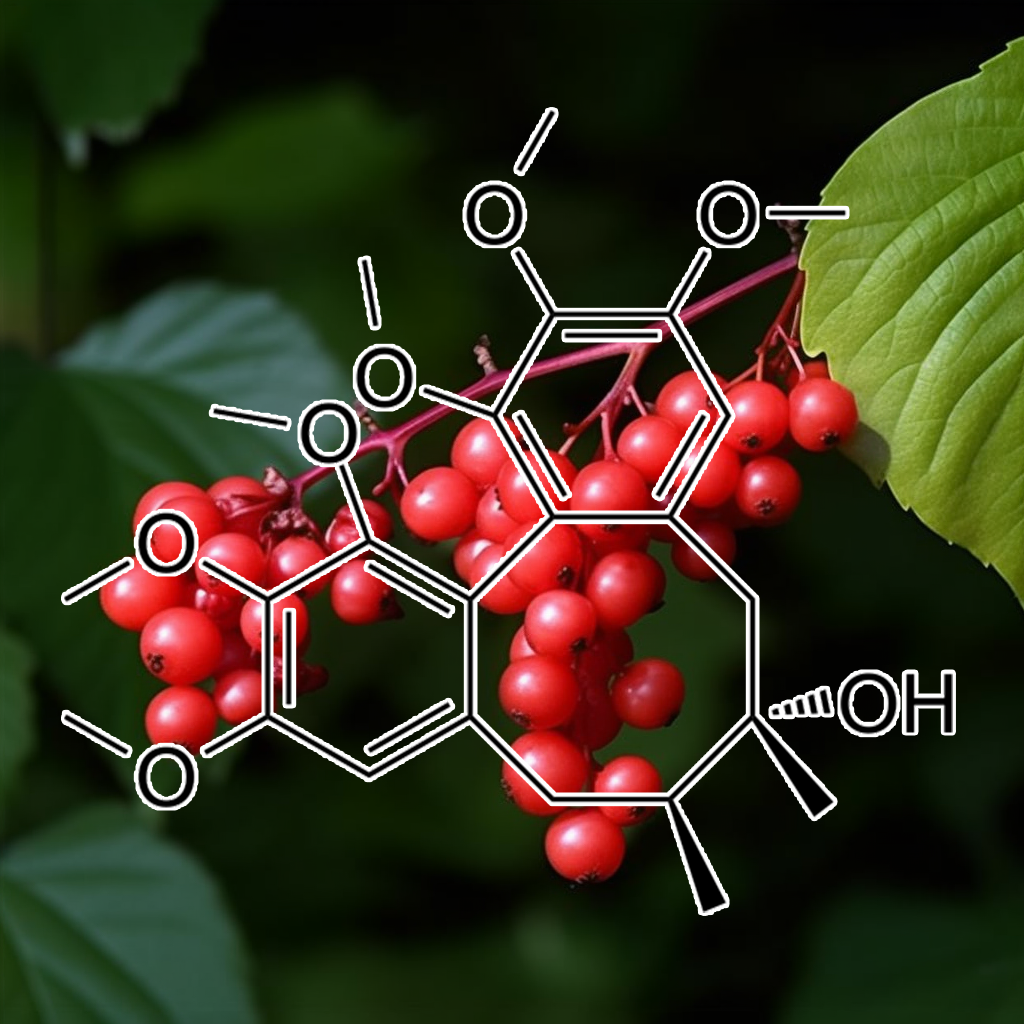
schisandrin (Schisandra chinensis)
- Current Knowledge Of Schisandra Chinensis (Turcz.) Baill. (Chinese Magnolia Vine) As A Medicinal Plant Species: A Review On The Bioactive Components …
- Dibenzocyclooctadiene Lignans From Schisandra Lancifolia And Their Anti-Human Immunodeficiency virus -1 Activities
- Diphenyl Dimethyl Bicarboxylate As An Effective Treatment For Chemical-Induced Fatty Liver In Rats
- Direct Chiral Separation Of Γ-Schizandrin Enantiomers By Rp-Hplc Using Chiralcel Od-Rh [J]
- Extraction And Separation Of Active Ingredients In Schisandra Chinensis (Turcz.) Baill And The Study Of Their Antifungal Effects
- Isolation And Anti-Hepatitis B virus Activity Of Dibenzocyclooctadiene Lignans From The Fruits Of Schisandra Chinensis
- Journal Metrics
- Neolignans From Schisandra Wilsoniana And Their Anti-Human Immunodeficiency virus -1 Activities
- Potential Of Schisandra Chinensis (Turcz.) Baill. In Human Health And Nutrition: A Review Of Current Knowledge And Therapeutic Perspectives
- Protein Tyrosine Phosphatase 1B (Ptp1B) And Α-Glucosidase Inhibitory Activities Of Schisandra Chinensis (Turcz.) Baill
- Schizandrin A Alleviates Lps-Induced Injury In Human Keratinocyte Cell Hacat Through A Microrna-127-Dependent Regulation
- Schizandrin A Enhances Chemosensitivity Of Colon Carcinoma Cells To 5-Fluorouracil Through Up-Regulation Of Mir-195
- Screening And Identification Of The Main Metabolites Of Schisantherin A In Vivo And In Vitro By Using Uhplc-Q-Tof-Ms/Ms
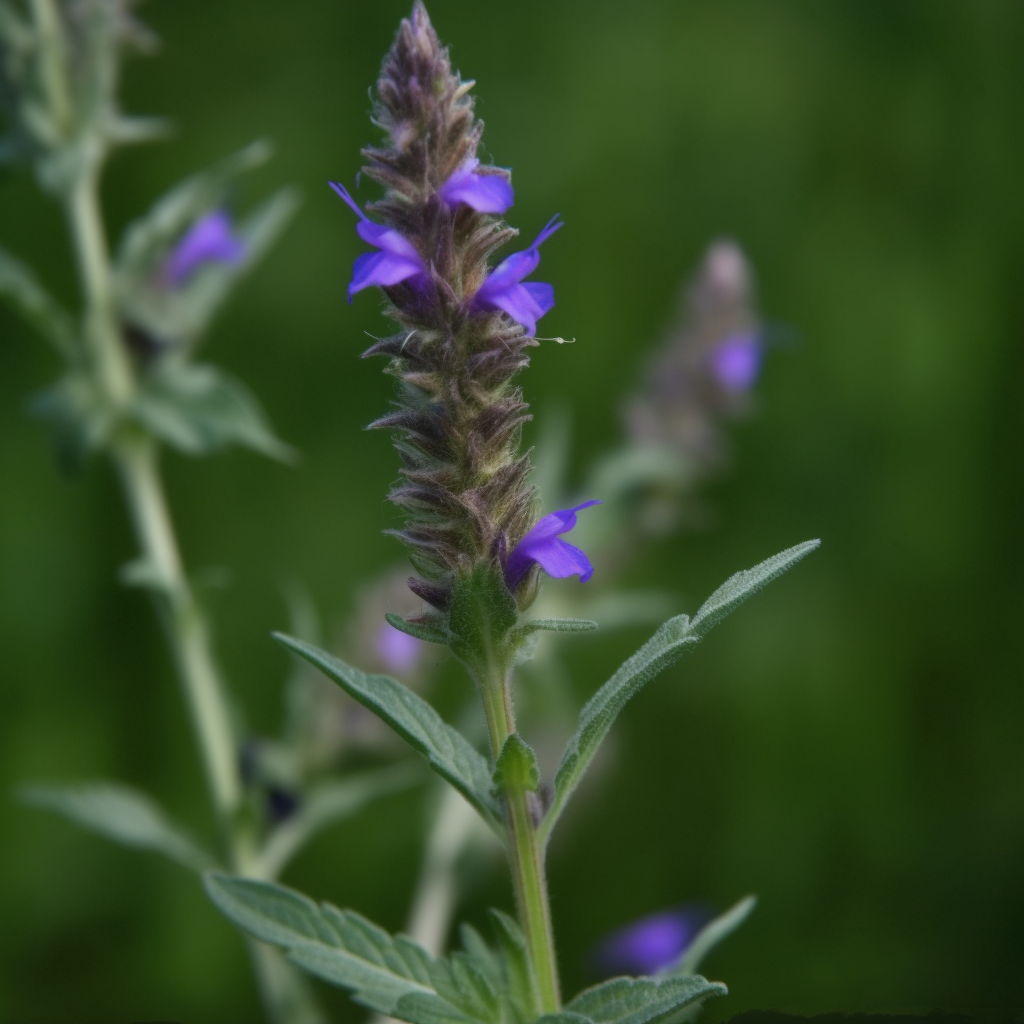
Schizonepeta tenusfolia
- Analysis Of Phytochemicals In Popular Medicinal Herbs By Hplc And Gc-Ms
- Anti‐Influenza Agents From Plants And Traditional Chinese Medicine
- Antiviral Activities Of Schizonepeta Tenuifolia Briq. Against Enterovirus 71 In Vitro And In Vivo
- Antiviral Activity Of Schizonepeta Tenuifolia Briquet Against Norovirus es Via Induction Of Antiviral Interferons
- Antiviral And Inflammatory Cellular Signaling Associated With Enterovirus 71 Infection
- Antiviral Chinese Medicinal Herbs Against Respiratory Syncytial virus
- Effect Of Jingjie Volatile Oil On Leukotrienes Levelsin Rats [J]
- Efficacy And Mechanism Of Mentha Haplocalyx And Schizonepeta Tenuifolia Essential Oils On The Inhibition Of Panax Notoginseng Pathogens
- Optimization Of Ultrasonic-Assisted Extraction Of Total Flavonoids From Schizonepeta Tenuifolia Briq By Response Surface Methodology
- Qualitative And Quantitative Studies On Impurities In Schizonepetin, A Novel Antiviral Agent, Using Hplc, Nmr And Ms
- Rp-Hplc Determination Of Hesperidin In Schizonepeta Tenuifolia Briq’S Extract
- Study On Antiviral Components In Vitro Of Ganmao Qingre Granules
- Study On The Effect And Mechanism Of Anti-Influenza A virus Of The Volatile Oil Of Herba Schizonepetae Briq. In Vitro [J]
- Study On The Effect Of Anti-Influenza virus Of The Volatile Oil Of Schizonepetae, Menthone And Pulegone [J]
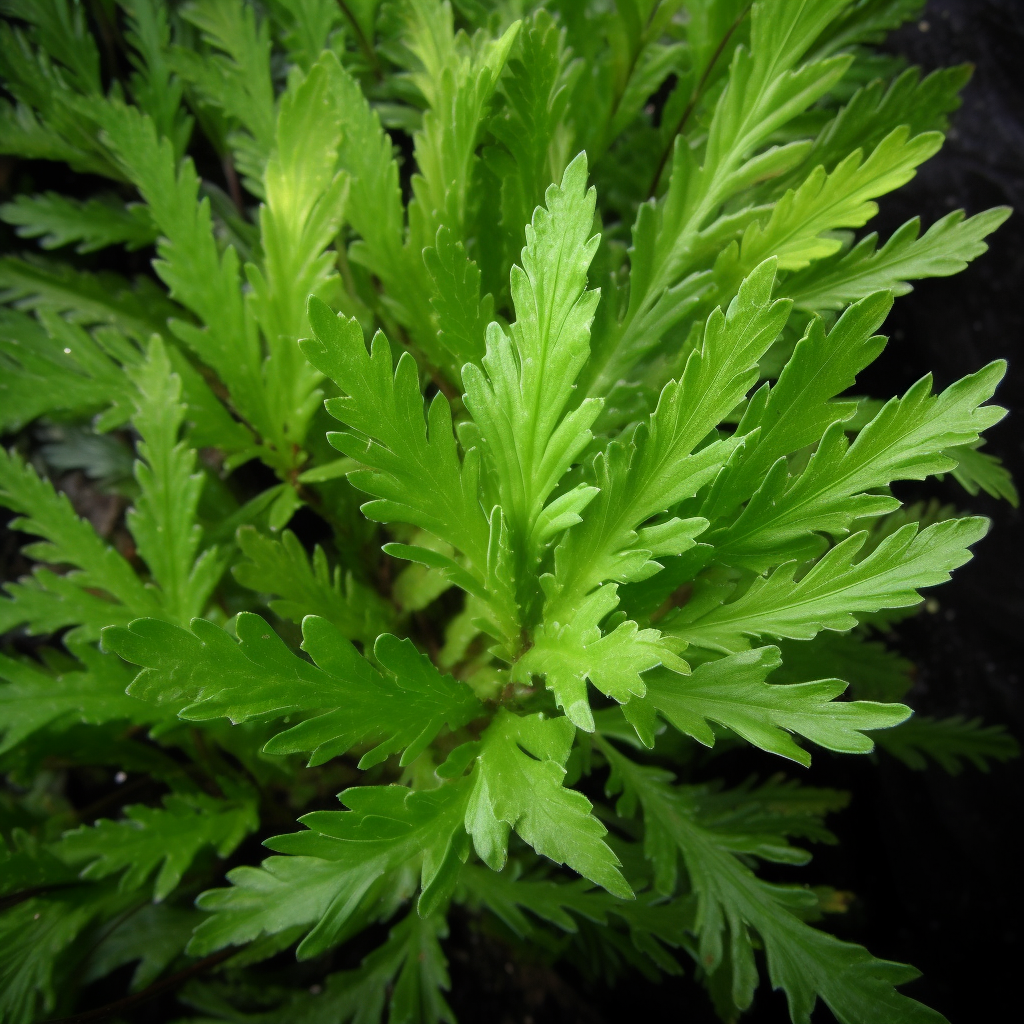
Selaginella moellendorffii
- A New Neolignan From Selaginella Moellendorffii Hieron
- A New Pyrrole Alkaloid From Selaginella Moellendorfii Hieron
- A New Selaginellin From Selaginella Moellendorffii Inhibits Hepatitis B virus Gene Expression And Replication
- Antioxidant Chemical Constituents From The Herb Of Plantago Asiatica L.
- Bioactive Flavones And Biflavones From Selaginella Moellendorffii Hieron
- Diversity, Conservation Status And Medicinal Importance Of Selaginella Spp.
- New Adenine Analogues And A Pyrrole Alkaloid From Selaginella Delicatula
- New Inhibitors Of Matrix Metalloproteinases 9 (Mmp-9): Lignans From Selaginella Moellendorffii
- Two New Anthraquinone Derivatives And One New Triarylbenzophenone Analog From Selaginella Tamariscina
- Unciflavones A–F, Six Novel Flavonoids From Selaginella Uncinata (Desv.) Spring
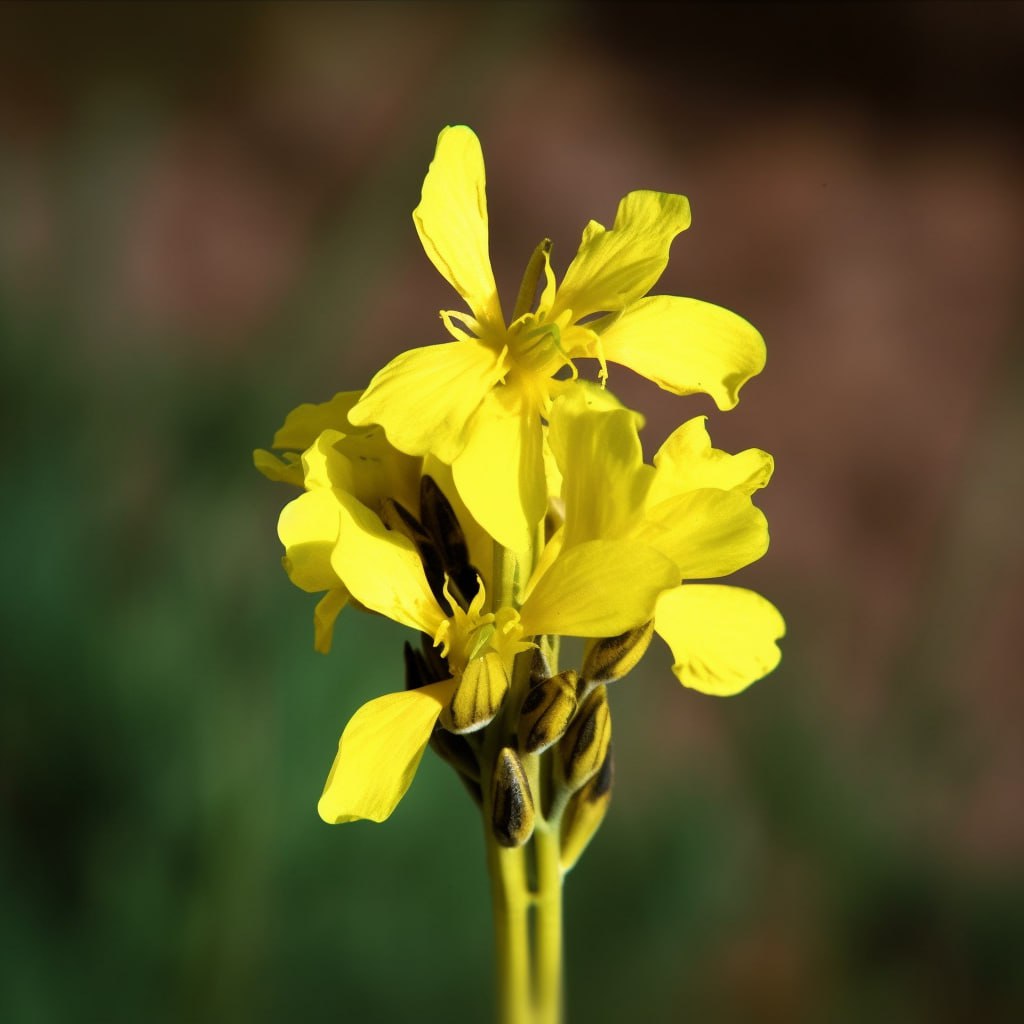
Semen Lepidii (Eruca sativa Mill)
- A Metabolomics Approach To Studying The Effects Of Jinxin Oral Liquid On Rsv-Infected Mice Using Uplc/Ltq-Orbitrap Mass Spectrometry
- A Native Human Monoclonal Antibody Targeting Hcmv Gb (Ad-2 Site I)
- Chinese Medicinal Herbs For Childhood Pneumonia: A Systematic Review Of Effectiveness And Safety
- Combating Covid-19 With Integrated Traditional Chinese And Western Medicine In China
- Deploying Biomolecules As Anti-Covid-19 Agents
- Free Quantitative Proteomics Reveals Fibrinopeptide B And Heparin Cofactor Ii As Potential Serum Biomarkers In Respiratory Syncytial virus -Infected Mice Treated …
- Herbal Medicine For Treatment Of Children Diagnosed With Covid-19: A Review Of Guidelines
- In Silico Screening Of Chinese Herbal Medicines With The Potential To Directly Inhibit 2019 Novel Coronavirus
- Inula Viscosa (L.) Aiton Leaves And Flower Buds: Effect Of Extraction Solvent/Technique On Their Antioxidant Ability, Antimicrobial Properties And Phenolic Profile
- Label-Free Quantitative Proteomics Reveals Fibrinopeptide B And Heparin Cofactor Ii As Potential Serum Biomarkers In Respiratory Syncytial virus -Infected Mice Treated …
- Phytochemistry And Ethnopharmacology Of Some Medicinal Plants Used In The Kurdistan Region Of Iraq
- Phytochemistry And Pharmacological Values Of Rocket (Eruca Sativa Miller)–A Review
- The Experience Of Treating Patients With Pneumonia Secondary To The Coronavirus Disease 2019 Using The Guizhi Method Of Traditional Chinese Medicine
- Tong Xiaolin23, Li Aiguo23, Zhang Zhiyuan23, Chen Xiaoguang23, Li Ping23, Duan Jun23, Hua Chuanjin23, Zhao Dong23, Xu Yuan23, Shi Xiaoping23, Tian …
- Traditional Chinese Herbal Medication For Corona-virus 2019
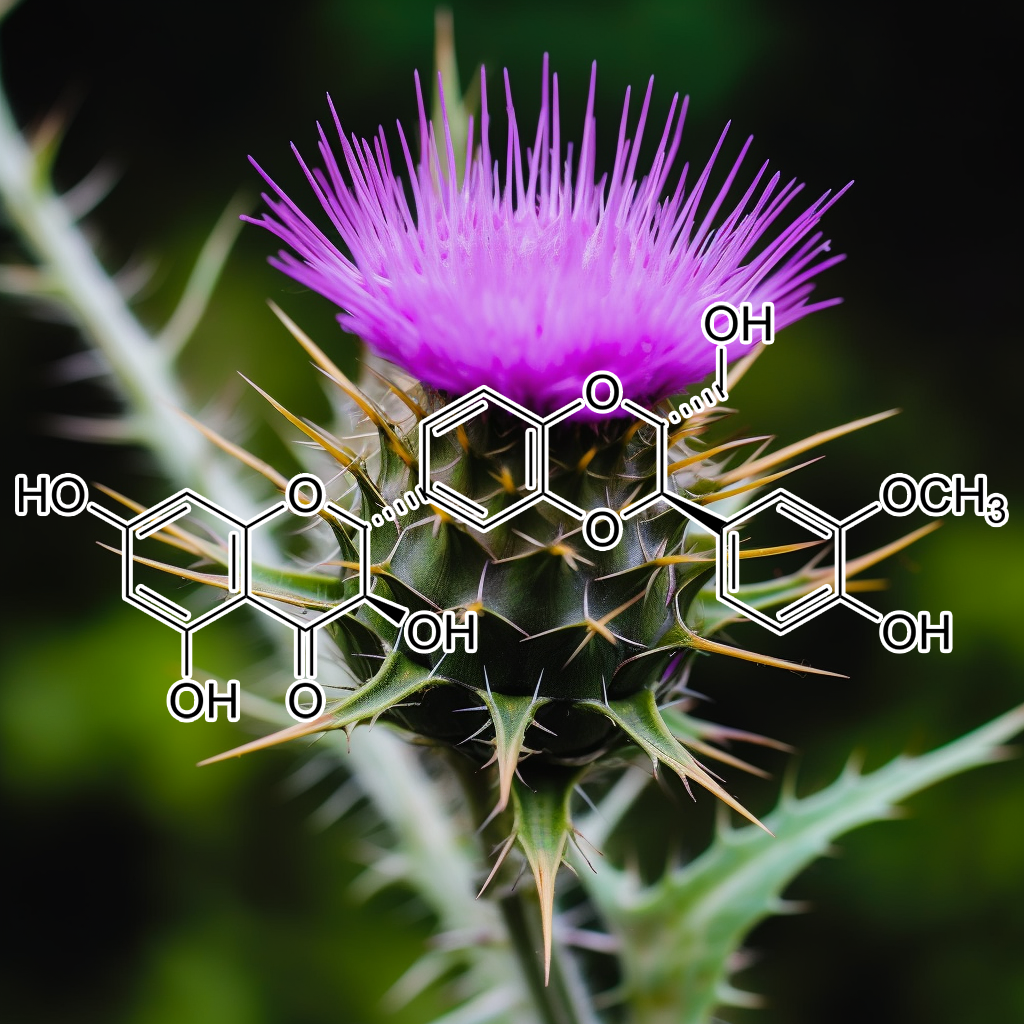
Silibinin (Milk Thistle Extract)
- Anti-Herpes virus Activity Of Silibinin, The Primary Active Component Of Silybum Marianum
- Antiviral Activity Of Silymarin Against Chikungunya virus
- Coadministration Of Milk Thistle And Indinavir In Healthy Subjects
- Differential In Vitro Effects Of Intravenous Versus Oral Formulations Of Silibinin On The Hcv Life Cycle And Inflammation
- Effect Of Silymarin (Milk Thistle) On Liver Disease In Patients With Chronic Hepatitis C Unsuccessfully Treated With Interferon Therapy: A Randomized Controlled Trial
- Hepatoprotective And Antiviral Functions Of Silymarin Components In Hcv Infection
- Identification Of Hepatoprotective Flavonolignans From Silymarin
- Milk Thistle For Treatment Of Nonalcoholic Fatty Liver Disease
- Milk Thistle In Liver Diseases: Past, Present, Future
- Novel Method Boosts Milk Thistle Liver Concentration 10-Fold!
- Phytoliposome-Based Silibinin Delivery System As A Promising Strategy To Prevent Hepatitis C virus Infection
- Safety And Toxicity Of Silymarin, The Major Constituent Of Milk Thistle Extract: An Updated Review
- Silibinin Is A Potent Antiviral Agent In Patients With Chronic Hepatitis C Not Responding To Pegylated Interferon/Ribavirin Therapy
- Silibinin: A Promising Anti-Neoplastic Agent For The Future? A Critical Reappraisal
- Silymarin For Hepatitis C virus Infection
- Stephen J Polyak1, 2, 3*, Nicholas H Oberlies4, Eve-Isabelle Pécheur5, Harel Dahari6, 7, 8, Peter Ferenci9
- Successful Hcv Eradication And Inhibition Of Hiv Replication By Intravenous Silibinin In An Hiv–Hcv Coinfected Patient
- Targeting Stat3 With Silibinin To Improve Cancer Therapeutics
- Treatment Of Hepatitis C With Milk Thistle?
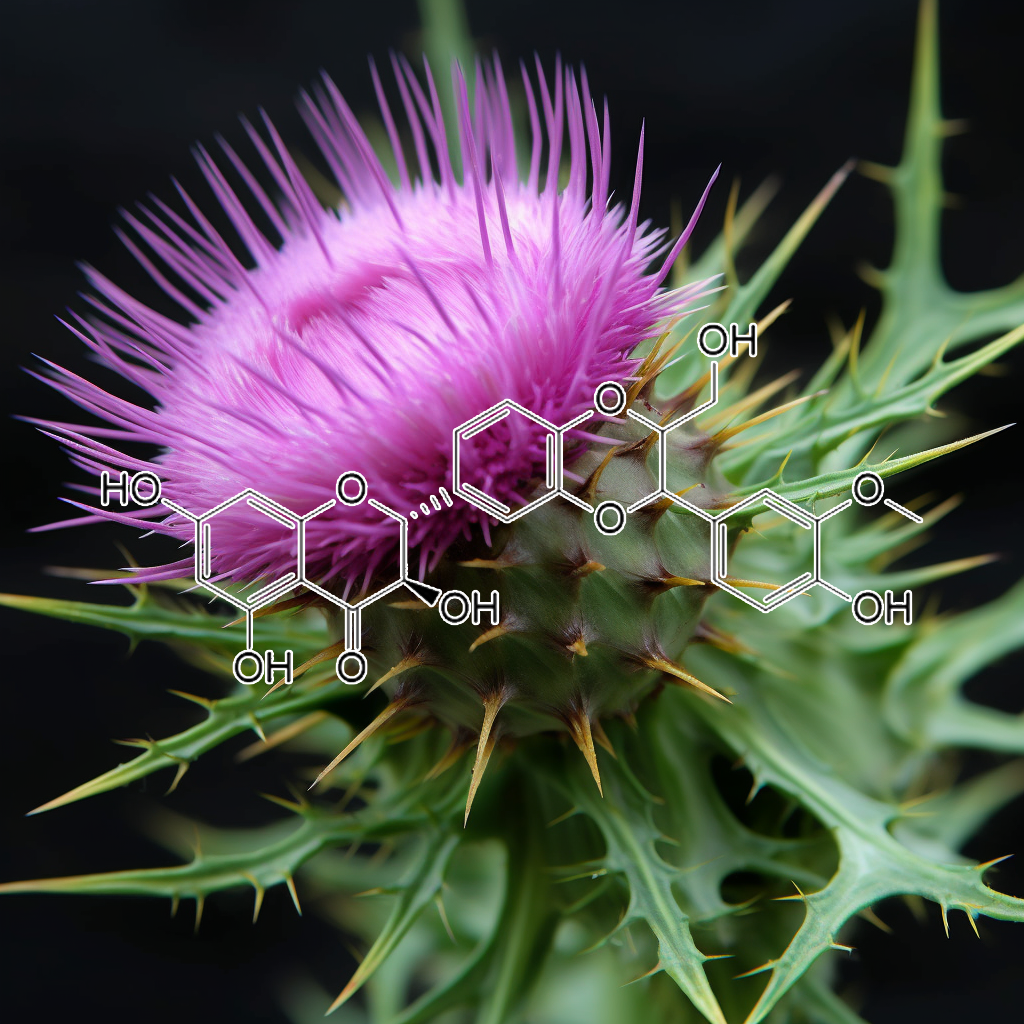
Silymarin (Milk Thistle Extract)
- Antiviral Activities Of Silymarin And Derivatives
- Antiviral Activity Of Silymarin Against Chikungunya virus
- Antiviral Activity Of Silymarin Against Mayaro virus And Protective Effect In virus -Induced Oxidative Stress
- Antiviral Activity Of Silymarin In Comparison With Baicalein Against Ev-A71
- Antiviral Effect Of Silymarin Against Zika virus In Vitro
- Application Of Spray Drying Particle Engineering To A High-Functionality/Low-Solubility Milk Thistle Extract: Powders Production And Characterization
- Biology Of Milk Thistle (Silybum Marianum) And The Management Options For Growers In North‐Western Pakistan
- Clinical And Pharmacological Applications Of Silymarin Components At Cellular And Molecular Level: A Review
- Coadministration Of Milk Thistle And Indinavir In Healthy Subjects
- Effect Of Silymarin (Milk Thistle) On Liver Disease In Patients With Chronic Hepatitis C Unsuccessfully Treated With Interferon Therapy: A Randomized Controlled Trial
- Effects Of Silymarin Supplementation In Patients With Chronic Hepatitis C Receiving Peg-Ifn+ Ribavirin Antiviral Therapy. A Placebo-Controlled Double Blind Study
- Evaluation Of The Role Of The Antioxidant Silymarin In Modulating The In Vivo Genotoxicity Of The Antiviral Drug Ribavirin In Mice
- Evaluation Of The Role Of The Antioxidant Silymarin In Modulating The In Vivo Genotoxicity Of The Antiviral Drug Ribavirin In The Laboratory Mice Mus Muscuius
- Hepatoprotective And Antiviral Functions Of Silymarin Components In Hcv Infection
- Herbal Product Use By Persons Enrolled In The Hepatitis C Antiviral Long‐Term Treatment Against Cirrhosis (Halt‐C) Trial
- Identification Of Hepatoprotective Flavonolignans From Silymarin
- In Vitro Antiviral And Antioxidant Activities Of Silymarin And Panax Ginseng On Vero Cells Infected With Bovine Ephemeral …
- In Vitro Effects On Biofilm Viability And Antibacterial And Antiadherent Activities Of Silymarin
- Metabolism, Transport And Drug–Drug Interactions Of Silymarin
- Milk Thistle And The Liver Recent Findings
- Milk Thistle And The Liver: Recent Findings
- Milk Thistle For Treatment Of Nonalcoholic Fatty Liver Disease
- Novel Method Boosts Milk Thistle Liver Concentration 10-Fold!
- Potential Renoprotective Effects Of Silymarin Against Nephrotoxic Drugs: A Review Of Literature
- Randomised Double-Blinded Trial Evaluating Silymarin For Chronic Hepatitis C In An Egyptian Village: Study Description And 12-Month Results
- Renoprotective Effect Of Silymarin On Gentamicin-Induced Nephropathy
- Safety And Toxicity Of Silymarin, The Major Constituent Of Milk Thistle Extract: An Updated Review
- Semisynthesis, Cytotoxicity, Antiviral Activity, And Drug Interaction Liability Of 7-O-Methylated Analogues Of Flavonolignans From Milk Thistle
- Silibinin And Stat3: A Natural Way Of Targeting Transcription Factors For Cancer Therapy
- Silibinin Is A Potent Antiviral Agent In Patients With Chronic Hepatitis C Not Responding To Pegylated Interferon/Ribavirin Therapy
- Silymarin Ascending Multiple Oral Dosing Phase I Study In Noncirrhotic Patients With Chronic Hepatitis C
- Silymarin Flavonolignans: Structure–Activity Relationship And Biosynthesis
- Silymarin For Hepatitis C virus Infection
- Silymarin Inhibits In Vitro T-Cell Proliferation And Cytokine Production In Hepatitis C virus Infection
- Silymarin Is A Potent Antiviral Drug Against Hcv In Nonresponders To Peginterferon/Ribavirin–Dose Finding And viral Kinetics Studies
- Silymarin Use And Liver Disease Progression In The Hepatitis C Antiviral Long‐Term Treatment Against Cirrhosis Trial
- Silymarin: A Potent Hepatoprotective Agent In Poultry Industry
- Stephen J Polyak1, 2, 3*, Nicholas H Oberlies4, Eve-Isabelle Pécheur5, Harel Dahari6, 7, 8, Peter Ferenci9
- Studies In Natural Products Chemistry: Chapter 14. Silymarin Flavonolignans: Structure–Activity Relationship And Biosynthesis
- Toxicology And Carcinogenesis Studies Of Milk Thistle Extract (Cas No. 84604-20-6) In F344/N Rats And B6C3F1 Mice (Feed Studies).
- Treatment Of Hepatitis C With Milk Thistle?
- Tyrosinase Inhibitory Study Of Flavonolignans From The Seeds Of Silybum Marianum (Milk Thistle)
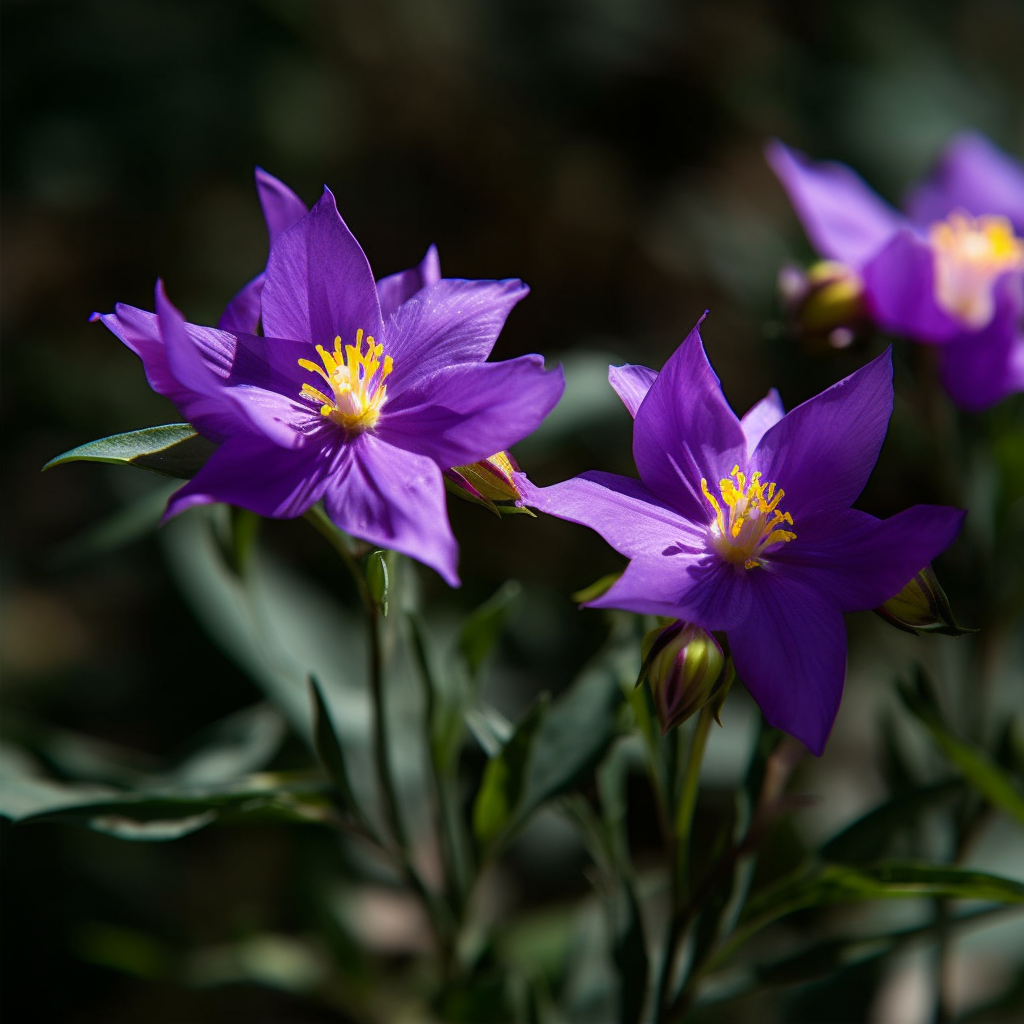
Solanum rantonnetii
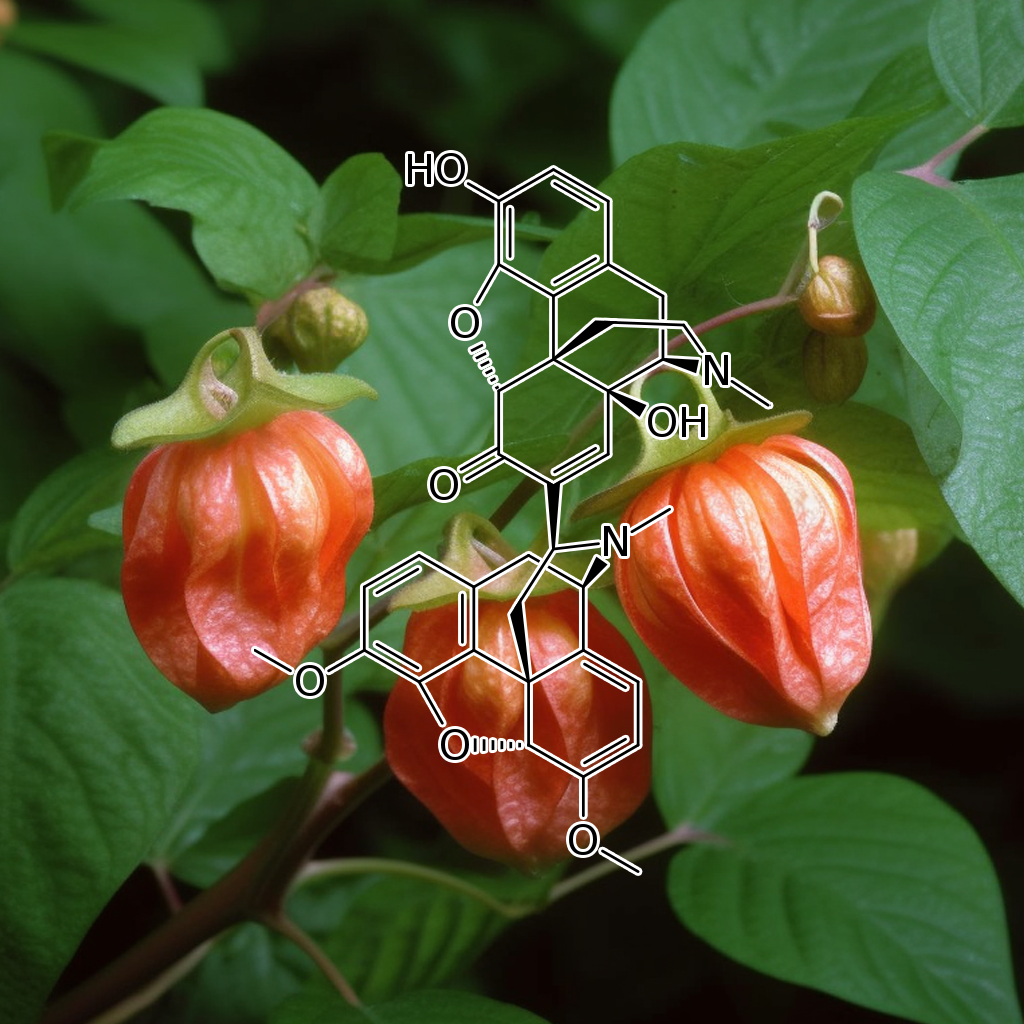
SOmniferine A (Ashwaganda)
Since the emergence of novel Coronavirus (SARS-CoV-2) infection in Wuhan, China in December 2019, it has now spread to over 205 countries. The ever-growing list of globally spread corona virus-19 disease (COVID19) patients has demonstrated the high transmission rate among human population. Although 12 new drugs are being tried for management of COVID19, currently there are no FDA approved drugs or vaccines to prevent and treat the infection of the SARS-CoV-2. Considering the current state of affairs, there is an urgent unmet medical need to identify novel and effective approaches for prevention and treatment of COVID19 by re-evaluating the knowledge of traditional medicines and repurposing of drugs. Here, we used molecular docking approach to explore the beneficial roles of an array of phytochemicals and active pharmacological agents present in the Indian herbs (Tulsi, Haldi, Giloy, Black pepper, Ginger, Clove, Cardamom, lemon, and Ashwagandha) which are widely used in the preparation of Ayurvedic medicines in the form of Kadha to control various respiratory disorders such as cough, cold and flu. The evaluation was made based on the docking scores calculated by AutoDock Vina. Our study has identified an array of phytochemicals present in these herbs which have significant docking scores and potential to inhibit different stages of SARS-CoV-2 infection as well as other Coronavirus target proteins.
Molecular docking also indicated that, the phytochemicals present in these herbs possess significant anti-inflammatory property. Overall our study provides scientific justification in terms of binding of active ingredients present in different plants used in Kadha preparation with viral proteins and target proteins for prevention and treatment of the COVID19. This preparation can boost individual’s immunity and inhibit the viral severity by interfering at different stages of virus multiplication in the infected person. Our study predicts that an array of the phytochemicals such as Withaferin A, Withanolide B, Withanolide, Withanone, Campesterol, Cyclocurcumin,Somniferine A,Stigmasterol, Eriodictyol, Isopiperine, Oleanolic acid, Rhamnetin, Orientin, Quercetin, Piperine, Vicenin etc. found in the preparation of the Kadha, have significant binding affinity with the many of these inflammatory mediators or the molecules involved in this process (Table 7). It is well known that, NF-κB is the master regulator for several genes such as COX-2, VEGF (vascular endothelial growth Factor), proinflammatory cytokines (IL-1, IL-2, IL-6, and TNFα), chemokines (e.g., IL-8, MIP-1α, and MCP1), adhesion molecules, immunoreceptors, growth factors, and other agents involved in proliferation and invasion. NF-κB activation is mediated by two distinctly different redoxrelated signalling pathways. The first pathway involves NIK/IKK whereas second pathway involve MAPKs and both causes the induction of transcriptional activation of NF-κB. NF-κBinducing kinase (NIK) is a key mediator of the non-canonical NF-κB signalling pathway. NF-κB is also one of the main inducible transcription factors shown to respond directly to oxidative stress.
Oxidative stress activates nuclear factor-inducing kinase (NIK)/IκB kinase (IKK) and mitogen-activated protein kinases (MAPKs). NIK/IKK and MAPK pathways activate NF-κB and migrates to the nucleus and binds to κ elements on DNA in enhancers and promoter regions. Various herbs have potential to control inflammation-associated disease by decreasing the production of the pro-inflammatory mediators by suppressing pro-inflammatory pathways (Pan et al., 2011). Our study also predicted that phytochemicals found in the Kadha have significant binding affinity with NIK (Table 7) which can stop NF-κB mediated downstream events. In a very recent study, Huang et al (2020) have shown that the patients infected with SARS-CoV-2 had high amounts of IL1, IFNγ, IP10, and MCP1, which can mediate cytokine storm associated multi-organ damage. At the same time, SARS-CoV-2 infection also initiates increased secretion of T-helper-2 (Th2) cytokines (eg, IL4 and IL10) which suppress inflammation (Huang et al., 2020). The increased secretion of inflammatory mediators was also associated with moderation of helper T cell responses in COVID19 patients.
Sars-cov-2 host entry and replication inhibitors from Indian ginseng: an in-silico approach
Withania somnifera (Solanaceae) (L.) Dunal, popularly known as ‘Ashwagandha’ and ‘Indian Ginseng’ is a prime medicinal plant of Ayurvedic and indigenous medicines from India and has been used as an herbal tonic and healthy food to treat various kinds of diseases and human ailments (Gurav & Gurav, 2014). W. somnifera contains alkaloids, flavonoids and steroidal lactones namely withanine, somniferine, somnine, somniferinine, withananine, pseudowithanine tropane, pseudo-tropine, choline, anaferine, anahydrine, isopelletierine, withaferin A and B, 27-deoxywithaferin, dihydrowithaferin A, 17-hydroxywithaferin A, withanolide A, B, C, D, E, G, J, L, M, N, O, P, Q, R and S, withanone, withanosine II, III, IV, V, VI, X and XI, Quercetin, and Quercetin-3-O-galactosyl-rhamnosyl-glucoside (QGRG; Abraham et al., 1968; Elsakka et al., 1990; Gupta & Rana, 2007; Krison & Glotter, 1980; Matsuda et al., 2001). Ashwagandha is widely claimed to have hepatoprotective, anxiolytic, antidepressant, nootropic, antimicrobial, anti-inflammatory, antioxidant, anti-stress, anticonvulsant, cardio-protective, antitumor, anti-genotoxic, anti-Parkinson and immunomodulatory properties (Dar et al., 2015; Gurav et al., 2020).
Stigmasterol (soybean)
- 17 Nutritional Value Of Soybean
- Antiviral Action Of Synthetic Stigmasterol Derivatives On Herpes Simplex virus Replication In Nervous Cells In Vitro
- Antiviral Activity Of 7-Keto-Stigmasterol Obtained From Green Antarctic Algae Prasiola Crispa Against Equine Herpesvirus 1
- Flavonoids: A Nutritional Protection Against Oxidative And Uv Induced Cellular Damages
- From Soybean Phytosterols To Steroid Hormones
- Importance Of Phytosterols And Their Determination In Herbal Medicines
- Phytochemical Constituents From The Leaves Of Soybean [Glycine Max (L.) Merr.]
- Phytochemical Studies And Fatty Acid Analysis Of The Stems Of Polyalthia Suberosa (Roxb.)
- Phytochemicals Components As Bioactive Foods
- Phytochemicals Of Utraceutical Importa Ce: Their Role I Health Ad Diseases
- Phytopharmaceutical Applications Of Nutraceutical And Functional Foods
- Plant-Derived Natural Products In Drug Discovery And Development: An Overview
- Potential Of Stigmasterol From Etoac Extract Melochia Umbellata (Houtt) Stapf Var. Visenia As Dengue Antivirus
- Preliminary Phytochemical And Pharmacological Studies Of Aleurites Moluccana Leaves [L.] Willd
- Salt Stress Enhancement Of Antioxidant And Antiviral Efficiency Of Spirulina Platensis
- Soybean Bioactive Components And Their Implications To Health—A Review
- Therapeutic Potential Of Brassinosteroids In Biomedical And Clinical Research
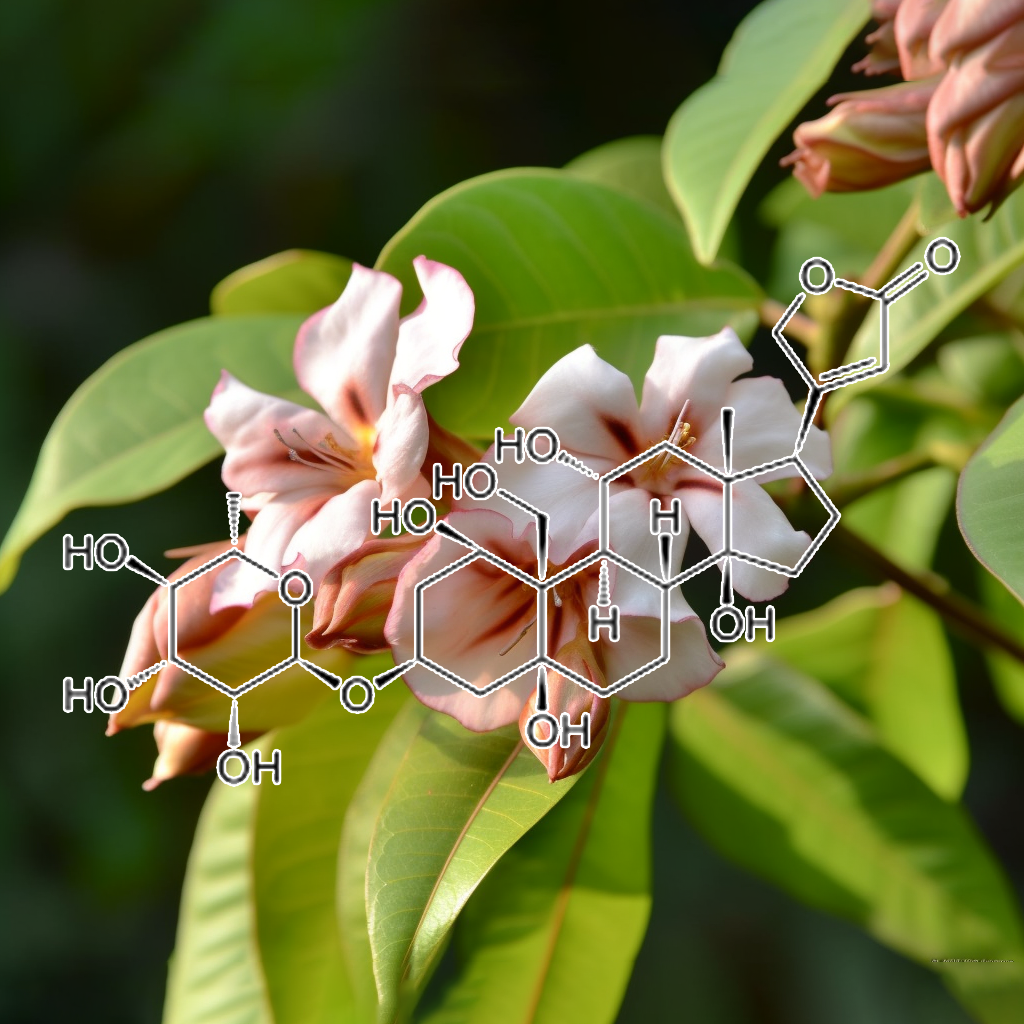
St. Rophanthus Gratus
Solid evidence- ouabain is an effective therapeutic for the treatment of COVID-19
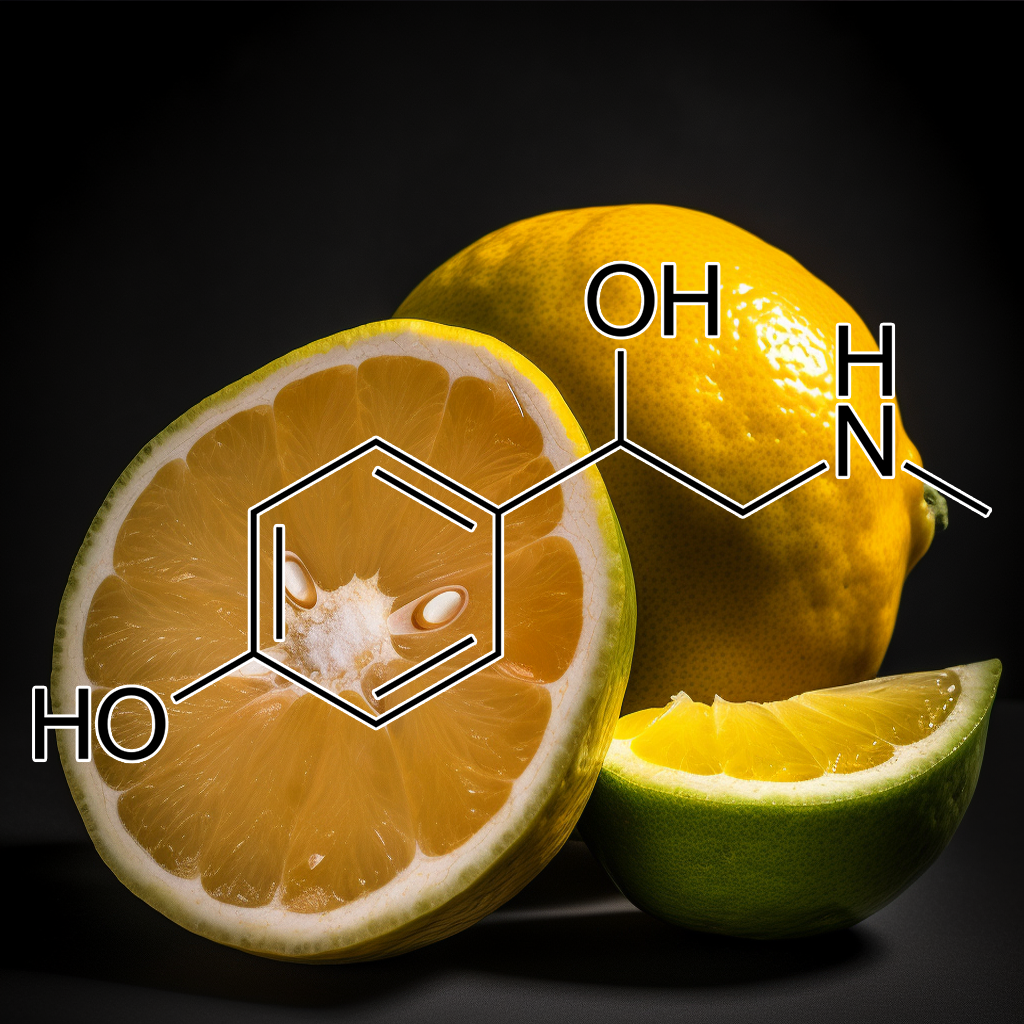
synephrine (Citrus Aurantium)
- Acridone Alkaloids From The Stem Bark Of Citrus Aurantium Display Selective Cytotoxicity Against Breast, Liver, Lung And Prostate Human Carcinoma Cells
- An Overview Of Citrus Aurantium Used In Treatment Of Various Diseases
- Cent Percent Safe Centum Plants For Antiobesity
- Changes Of Peel Essential Oil Composition Of Citrus Aurantium L. During Fruit Maturation In Iran
- Citrus Peel Extract Incorporated Ice Cubes To Protect The Quality Of Common Pandora
- Comparative Effects Of Peel Extract From Nigerian Grown Citrus On Body Weight, Liver Weight And Serum Lipids In Rats Fed A High-Fat Diet
- Comparison Of Aurantii Fructus Immaturus And Aurantii Fructus Based On Multiple Chromatographic Analysis And Chemometrics Methods
- Comprehensive Utilization Of Citrus By-Products
- Contraceptive Effect Of Citrus Aurantifolia Juice Vaginal Douche On Reproductive Histomorphology Of Adult Female Wistar Rats.
- Effects Of Drying Methods On Phytochemical Compounds And Antioxidant Activity Of Physiologically Dropped Un-Matured Citrus Fruits
- Evaluation Of Antimicrobial Activity Of Zitritide, A Natural And Organic Antimicrobial Fogging Solution With Special Reference For Infection Prevention And Control …
- Evaluation Of The Inhibitory Effect Of Some Citrus Juices In Bacteria Klebsiellae Pneumonia In Vitro
- Flavonoids And Furocoumarins In Bergamot, Myrtle-Leaved Orange, And Sour Orange Juices: Distribution And Properties
- Fructus Immaturus Aurantii – Zhishi/Fructus Aurantii – Zhiqiao
- Identification Of Bioactive Composition And Antioxidant Activity In Young Mandarin Fruits
- Pharmacological Actions Of Citrus Species
- Phytochemical Analysis And Inhibitory Effect Of Citrus Aurantium L.(Bitter Orange) Leaves On Some Bacterial Isolates In Vitro
- Phytochemical Profile And Antioxidant Activity Of Physiological Drop Of Citrus Fruits
- Simultaneous Analysis Of Adrenergic Amines And Flavonoids In Citrus Peel Jams And Fruit Juices By Liquid Chromatography: Part 2
- Cytotoxicity, antiviral and antimicrobial activities of alkaloids, flavonoids, and phenolic acids
- Natural antiviral compounds
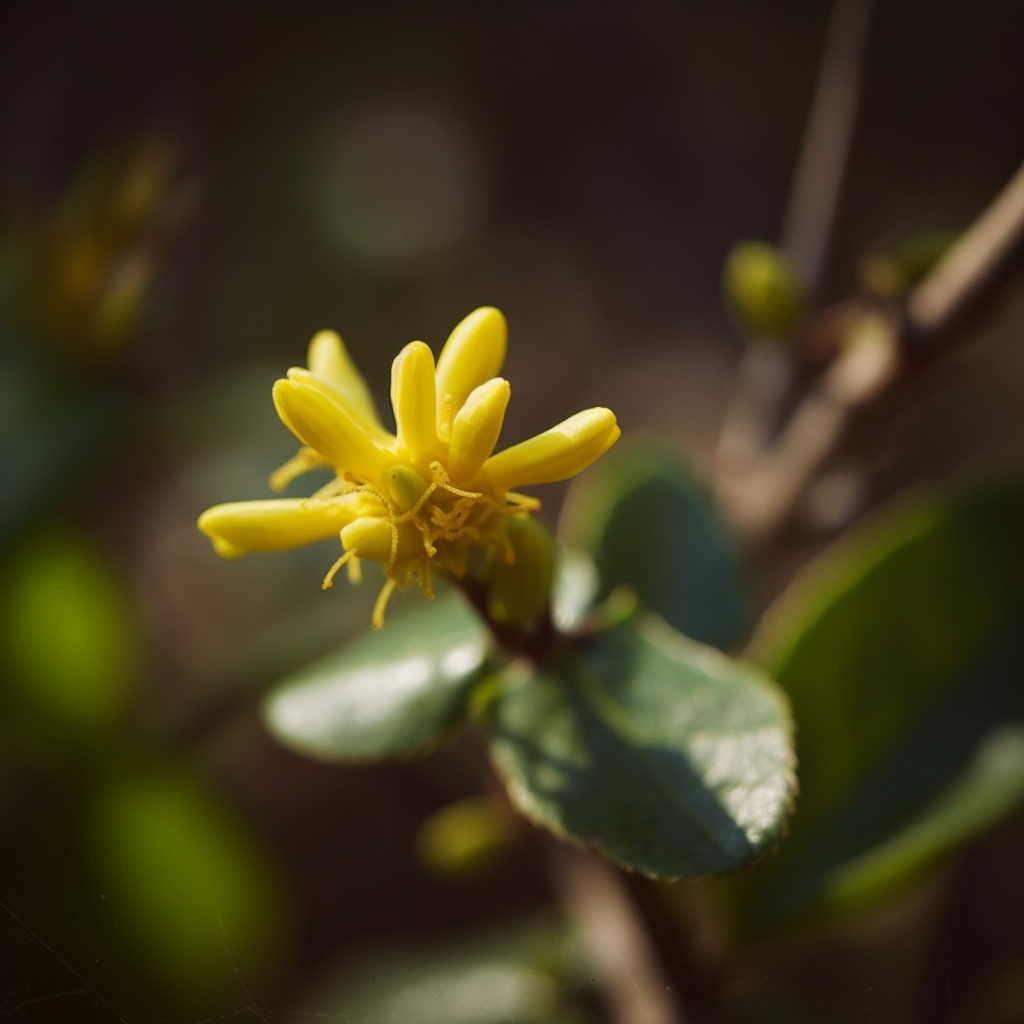
Taxillus sutchuenensis
- Activity Of Compounds From Taxillus Sutchuenensis As Inhibitors Of Hcv Ns3 Serine Protease
- Pharmacognostical And Pharmacological Evaluation Of Ammannia Baccifera
- Flavonoids: promising natural compounds against viral infections
- Recently, kaempferol-3,7-bisrhamnoside isolated from Chinese medicinal Taxillus sutchuenensis was shown to have potent in vitro activity on HCV NS3 protease function [144]
- Inhibition of SARS-CoV 3CL protease by flavonoids
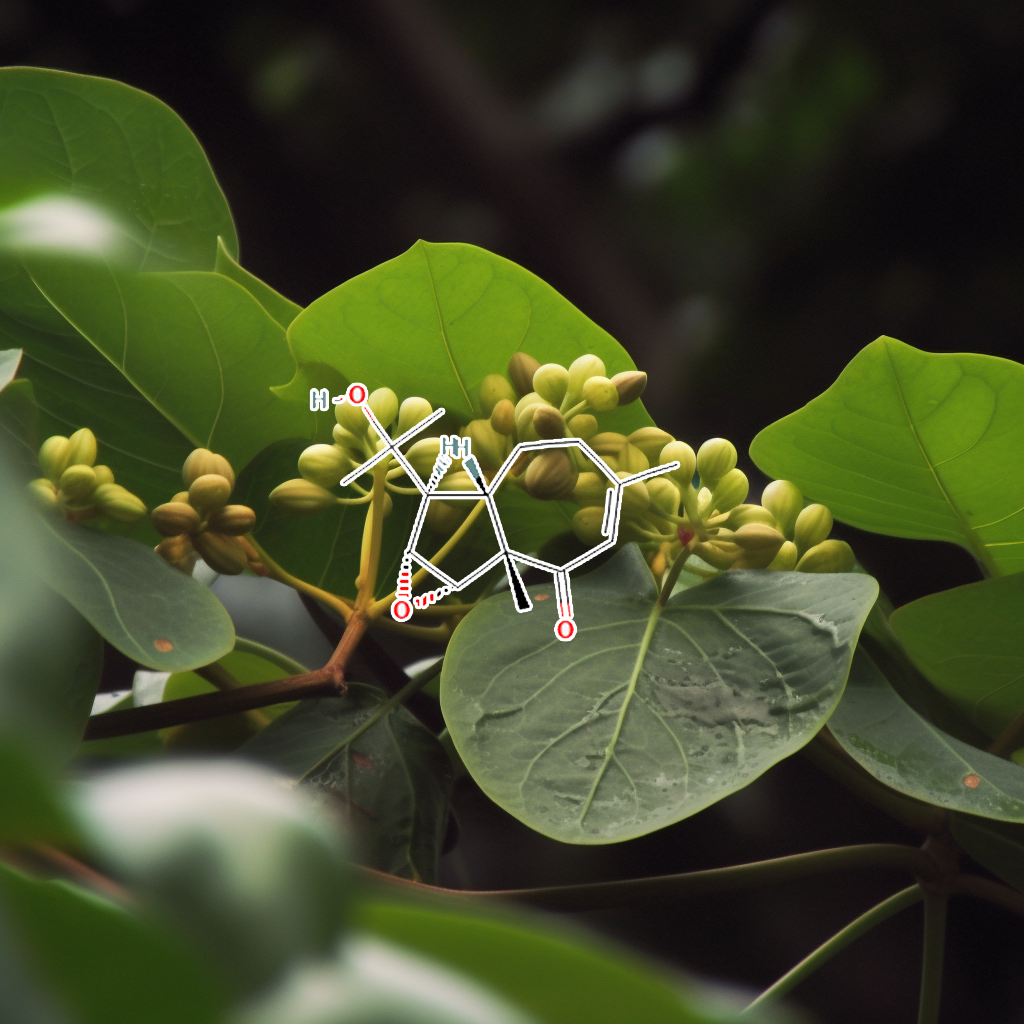
Tinocordifolin (Tinospora cordifolia)
- A Brief Review On Some Medicinal Plants Of Uttarakhand
- A Review On Therapeutic Multipurpose Medicinal Use Of Tinospora Cordifolia
- Antimicrobial Activity Of Indian Medicinal Plants, Azadirachta Indica, Carica Papaya, Curcuma Longa, Moringa Oleifera And Tinospora Cordifolia: A Review
- Complex Effects Of Ayurvedic Formulation: Guduchi And Madhuyashti On Different Components Of Life History May Elude The Elixir Effect
- Immunity Booster Herbs And Their Conservation-A Review
- Pharmacological Potential Of Tinospora Cordifolia (Willd.) Miers Ex Hook. & Thoms.(Giloy): A Review
- Prevention Of Hepatotoxicity Due To Anti Tuberculosis Treatment: A Novel Integrative Approach
- Review On Trisama-An Unexplored Ancient Ayurvedic Formulation
- Studies On Chemical And Biological Control Of Leaf Spot Disease Of Tinospora Cordifolia Caused By Colletotrichum Spp
- Tinospora Cordifolia: Ethnobotany, Phytopharmacology And Phytochemistry Aspects
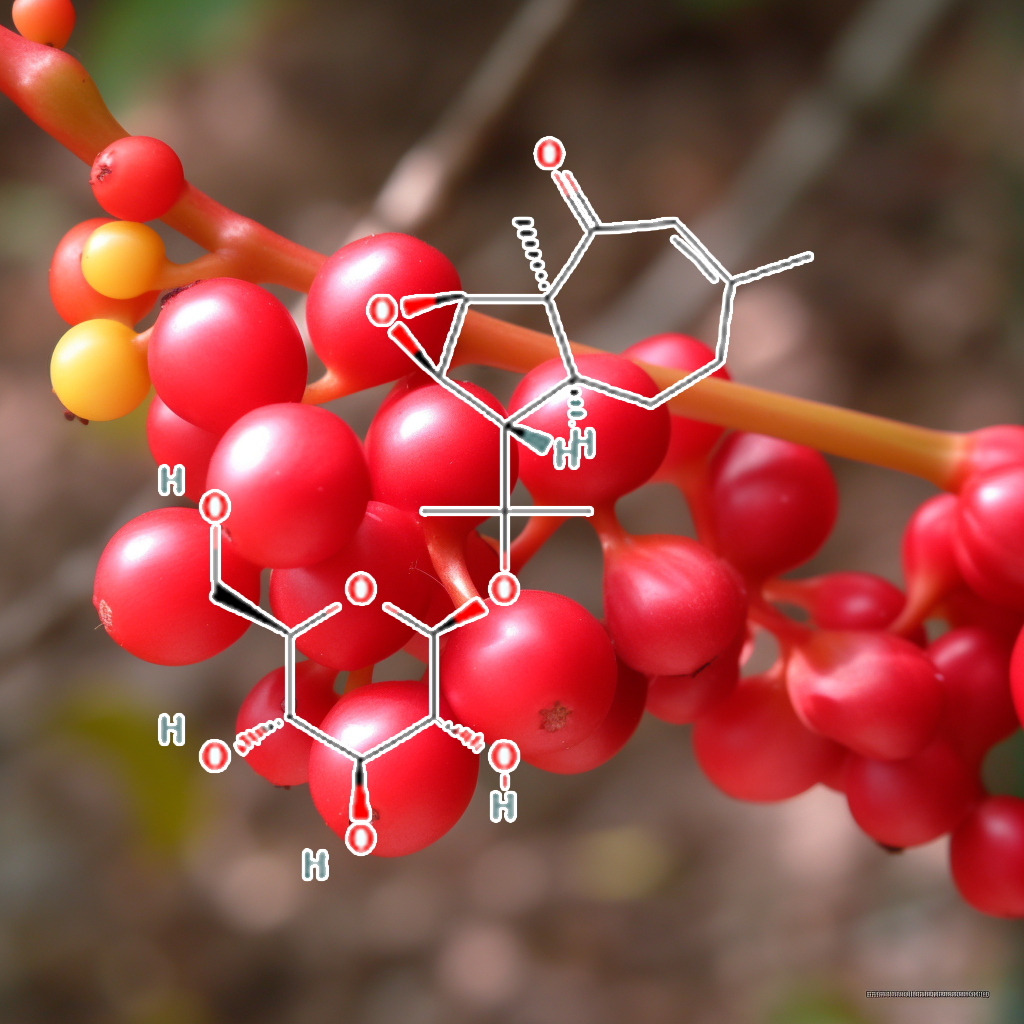
Tinocordifolioside (Tinospora cordifolia)
- A Review On Therapeutic Multipurpose Medicinal Use Of Tinospora Cordifolia
- An Overview On Hepatoprotective Activity Of Natural Products
- Complex Effects Of Ayurvedic Formulation: Guduchi And Madhuyashti On Different Components Of Life History May Elude The Elixir Effect
- Evaluation Of Analgesic, Antipyretic And Anti-Inflammatory Effects Of Methanol Extract Of Traditional Herbal Medicine Using Rodents
- Indian Traditional Ayurvedic Treatment Regime For Novel Coronavirus , Covid-19
- Pharmacological Potential Of Tinospora Cordifolia (Willd.) Miers Ex Hook. & Thoms.(Giloy): A Review
- Prevention Of Hepatotoxicity Due To Anti Tuberculosis Treatment: A Novel Integrative Approach
- Review On Pharmacological Profile Of Medicinal Vine: Tinospora Cordifolia
- Studies On Chemical And Biological Control Of Leaf Spot Disease Of Tinospora Cordifolia Caused By Colletotrichum Spp
- Studies On In Vitro Plant Regeneration And Chemo–Profiling Of Tinospora Cordifolia (Willd)
- Tinospora Cordifolia: Ethnobotany, Phytopharmacology And Phytochemistry Aspects
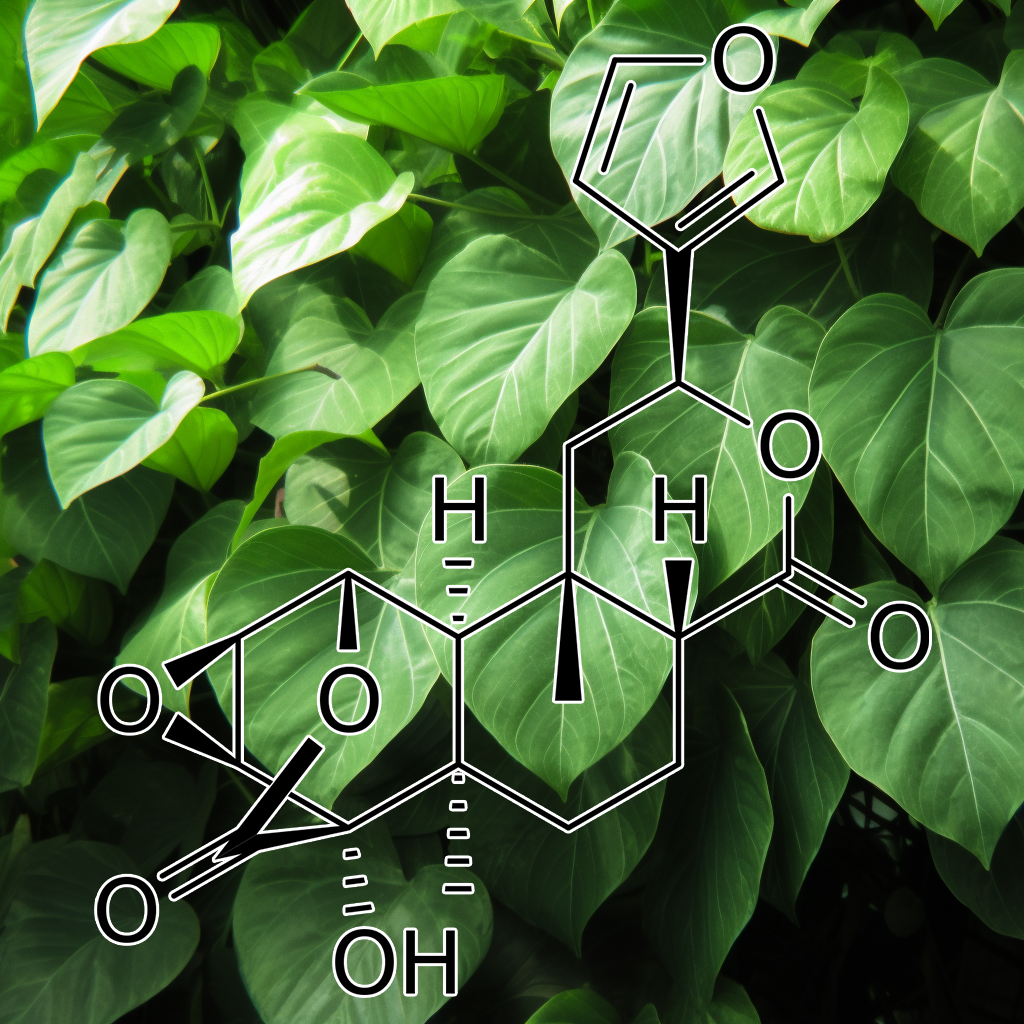
Tinosporide (Tinospora cordifolia)
- A Comparative Study Of Radioprotection By Four Indian Medicinal Herbs Against Genotoxicity Induced By Sub-Lethal Gamma Irradiation In Swiss Albino Mice
- A Review On Therapeutic Multipurpose Medicinal Use Of Tinospora Cordifolia
- Antimicrobial Activity Of Indian Medicinal Plants, Azadirachta Indica, Carica Papaya, Curcuma Longa, Moringa Oleifera And Tinospora Cordifolia: A Review
- Anti-Tumor Activity Of Four Ayurvedic Herbs In Dalton Lymphoma Ascites Bearing Mice And Their Short-Term In Vitro Cytotoxicity On Dla-Cell-Line
- Antiviral Compound Screening, Peptide Designing, And Protein Network Construction Of Influenza A virus (Strain A/Puerto Rico/8/1934 H1N1)
- Comparative Evaluation Of Efficacy And Safety Of “Septilin Syrup” With Prophylactic Antibiotics, In Preventing Postoperative Infections In Children
- Functional Foods And Herbs As Potential Immunoadjuvants And Medicines In Maintaining Healthy Immune System: A Commentary
- Herbal Plants Used In Treatment Of Rheumatoid Arthritis: A Review
- Identification Of Endophytic Fungi From The Medicinal Plants Of Biligirirangana Hill, Karnataka
- Natural Remedies For Heart Diseases
- Panchatiktha Kwatha Ch
- Phytochemical Investigation And Isolation Of New Compounds From The Stems Of Tinospora Cordifolia Miers
- Some Folk Medicinal Herbs Of Solan Valley, Himachal Pradesh
- Studies On In Vitro Plant Regeneration And Chemo–Profiling Of Tinospora Cordifolia (Willd)
- Tinospora Cordifolia: A Novel Bioactive Ingredient For Edible Films For Improved Lipid Oxidative And Microbial Stability Of Meat Products
- Tinospora Cordifolia: Ethnobotany, Phytopharmacology And Phytochemistry Aspects
- Uses Of Medicinal Plants In Panchakarma Ayurvedic Therapy
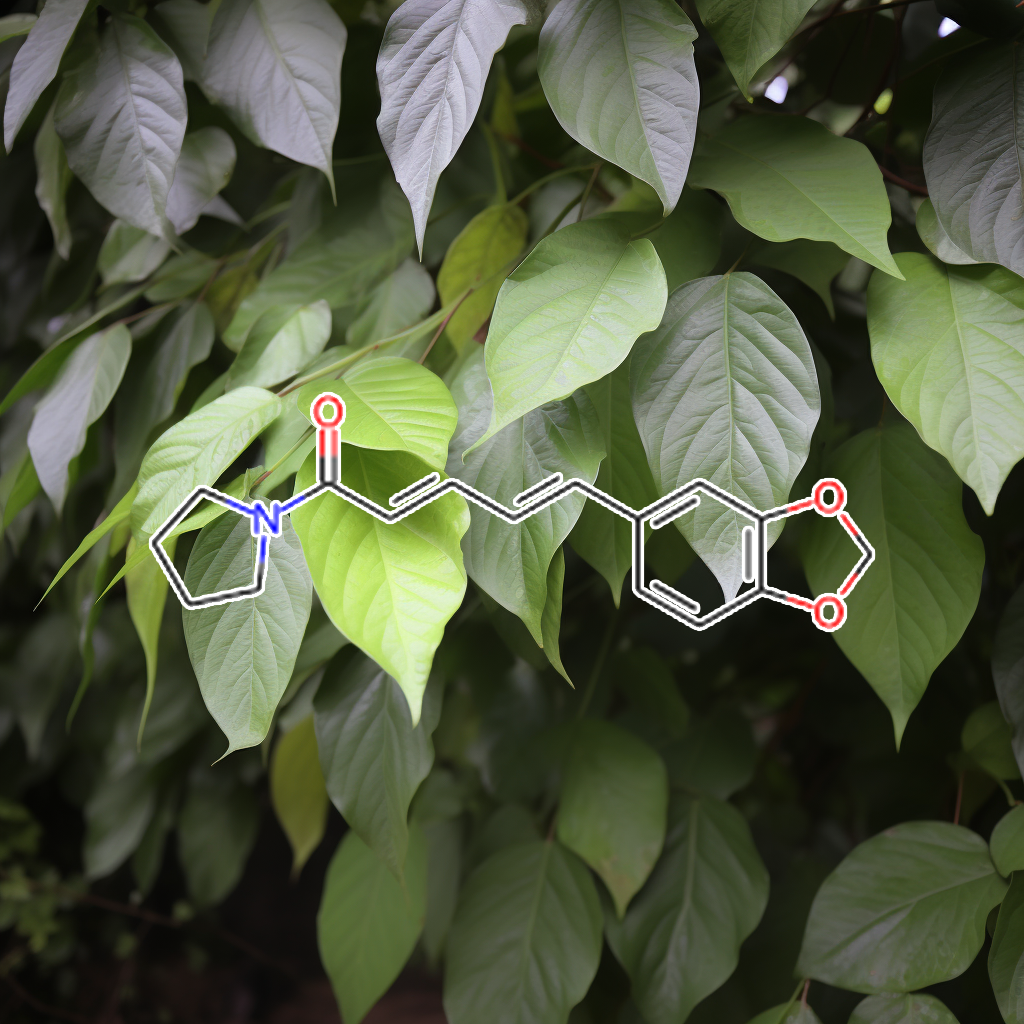
Trichostachine (Piper hancei)
- A Review On Diversified Use Of The King Of Spices: Piper Nigrum (Black Pepper)
- A Review On Study Of Medicinal Uses Of Some Aromatic Plants
- Prevention And Treatment Of Different Health Problems By Common Peoples Diet (Haleem)
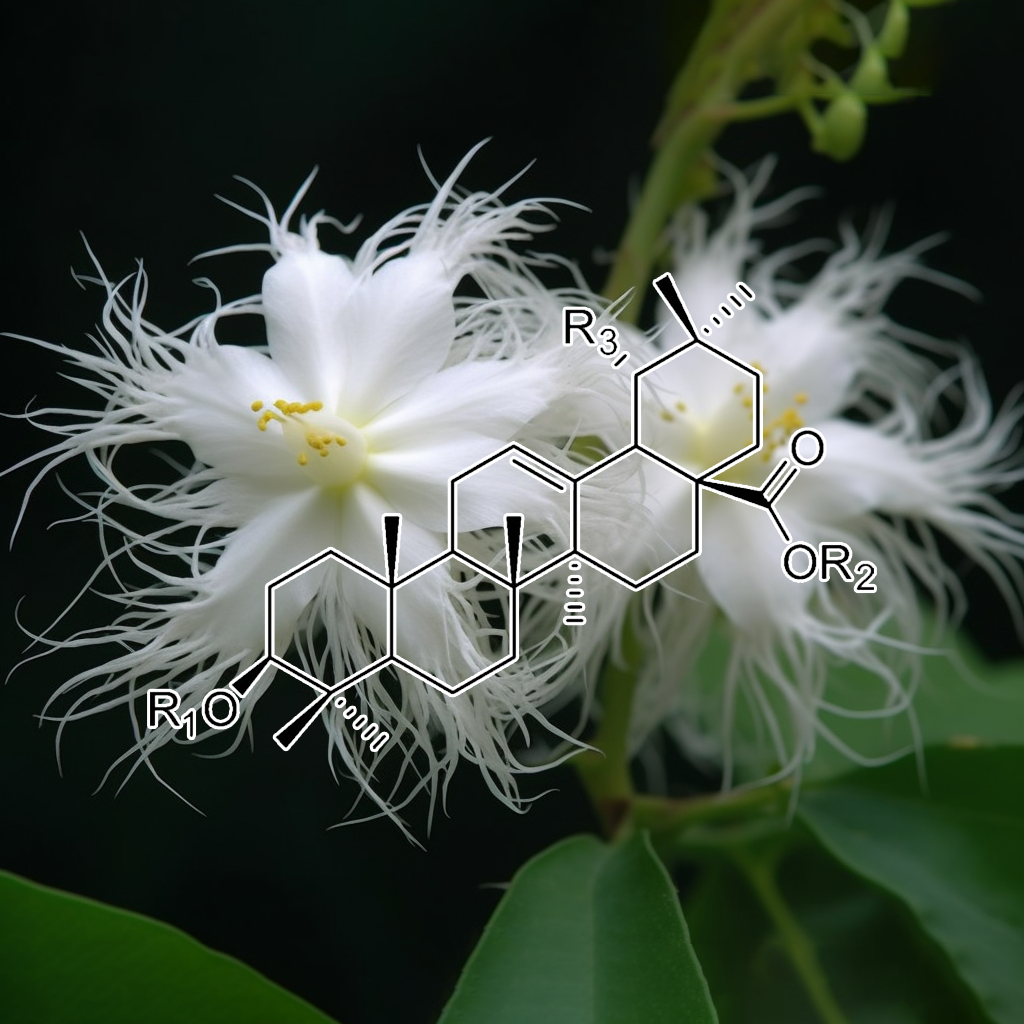
Triterpenoid saponins
- An Introduction To Medicinally Important Trees
- Ancient And Recent Medicinal Uses Of Cucurbitaceae Family
- Antiproliferative Compounds From Hydnophytum Formicarium.
- Antiviral Triterpenoid Saponins From The Roots Of Ilex Asprella
- Herbal Plants And Plant Preparations As Remedial Approach For viral Diseases
- Inhibitory Effect Of Some Triterpenoid Saponins On Glucose Transport In Tumor Cells And Its Application To In Vitro Cytotoxic And Antiviral Activities
- Mechanism Of Antiviral Activity Of Triterpenoid Saponins
- New Antiviral Triterpenoid Saponins From Maesa Lanceolata
- Phytochemical And Pharmacological Investigation Of Melia Azedarach Leaves For Antiurolithiatic Activity.
- Plantas Com Efeito Na Aids-Sida-Hiv Positivo
- Positive Selection Of Squalene Synthase In Cucurbitaceae Plants
- Preliminary Studies Of Antiviral Activity Of Triterpenoid Saponins: Relationships Between Their Chemical Structure And Antiviral Activity
Radix Bupleuri: A Review Of Traditional Uses, Botany, Phytochemistry, Pharmacology, And Toxicology - Structure And In Vitro Antiviral Activity Of Triterpenoid Saponins From Calendula Arvensis
- Traditional Chinese Herbal Medicine As A Source Of Molecules With Antiviral Activity
- Uralsaponins M–Y, Antiviral Triterpenoid Saponins From The Roots Of Glycyrrhiza Uralensis
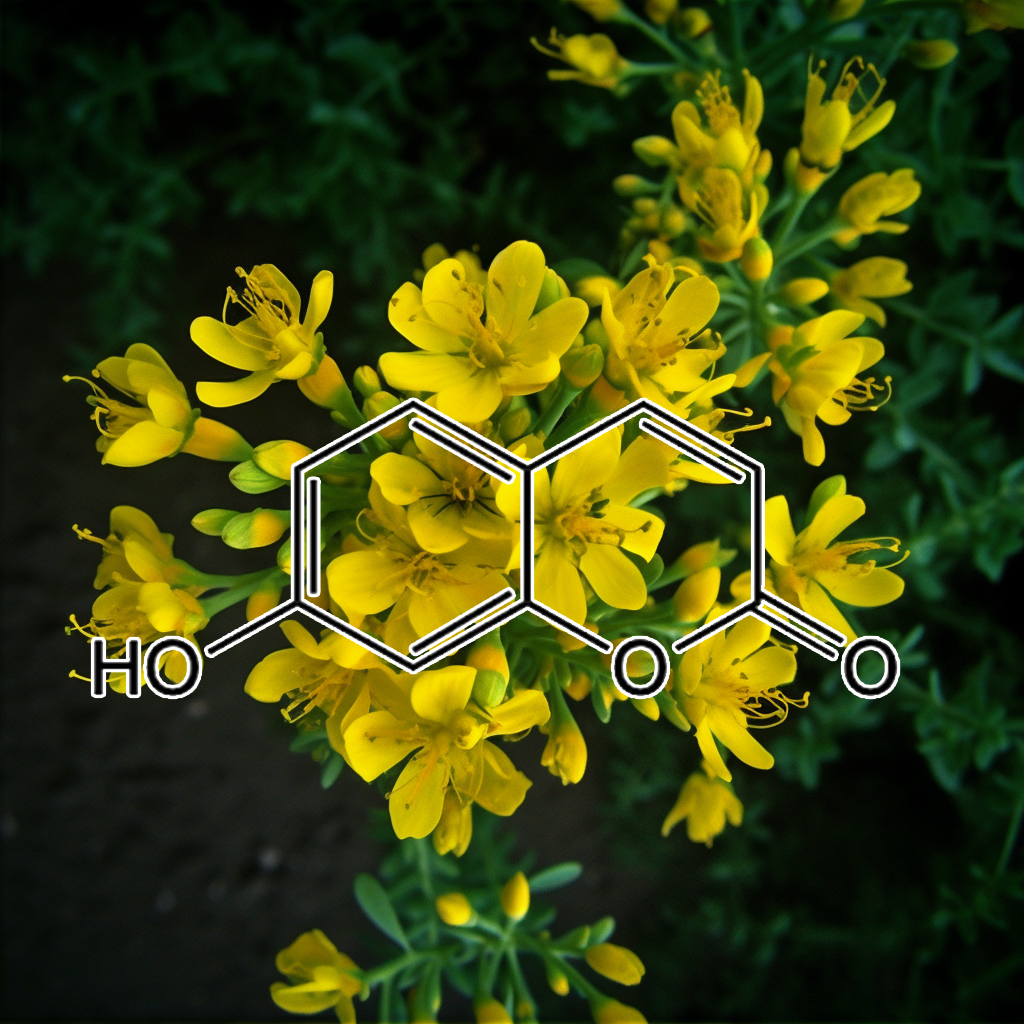
Umbelliferone (Ruta graveolens)
- Biological Activities Of Constituentsfrom Psychotria Spectabilis
- Biological Synthesis Of Coumarins In Escherichia Coli
- Bioprospecting For Drug Research And Functional Foods For The Prevention Of Diseases—Role Of Flavonoids In Drug Development
- Biotechnological Production Of Coumarins
- Chemical Ecology Of Ruta Sp.: Voc, Chemotaxonomy And Allelochemistry
- Complementary And Alternative Approach To Heal Cancer: A Review
- Elicitors Enhance Alkaloid Yield In Catharanthus Roseus
- Methyltransferases From Ruta Graveolens L.: Molecular Biology And Biochemistry
Natural Product Coumarins: Biological And Pharmacological Perspectives - Pharmacological Activities And Biologically Active Compounds Of Bulgarian Medicinal Plants
- Plants Secondary Metabolites: The Key Drivers Of The Pharmacological Actions Of Medicinal Plants
- Ruta Graveolens Cultures As Screening Resources For Phyto-Pharmaceuticals: Bio-Prospecting, Metabolic Phenotyping And Multivariate Analysis
- Rutamarin: Efficient Liquid–Liquid Chromatographic Isolation From Ruta Graveolens L. And Evaluation Of Its In Vitro And In Silico Mao-B Inhibitory Activity
- Translational Role Of Natural Coumarins And Their Derivatives As Anticancer Agents
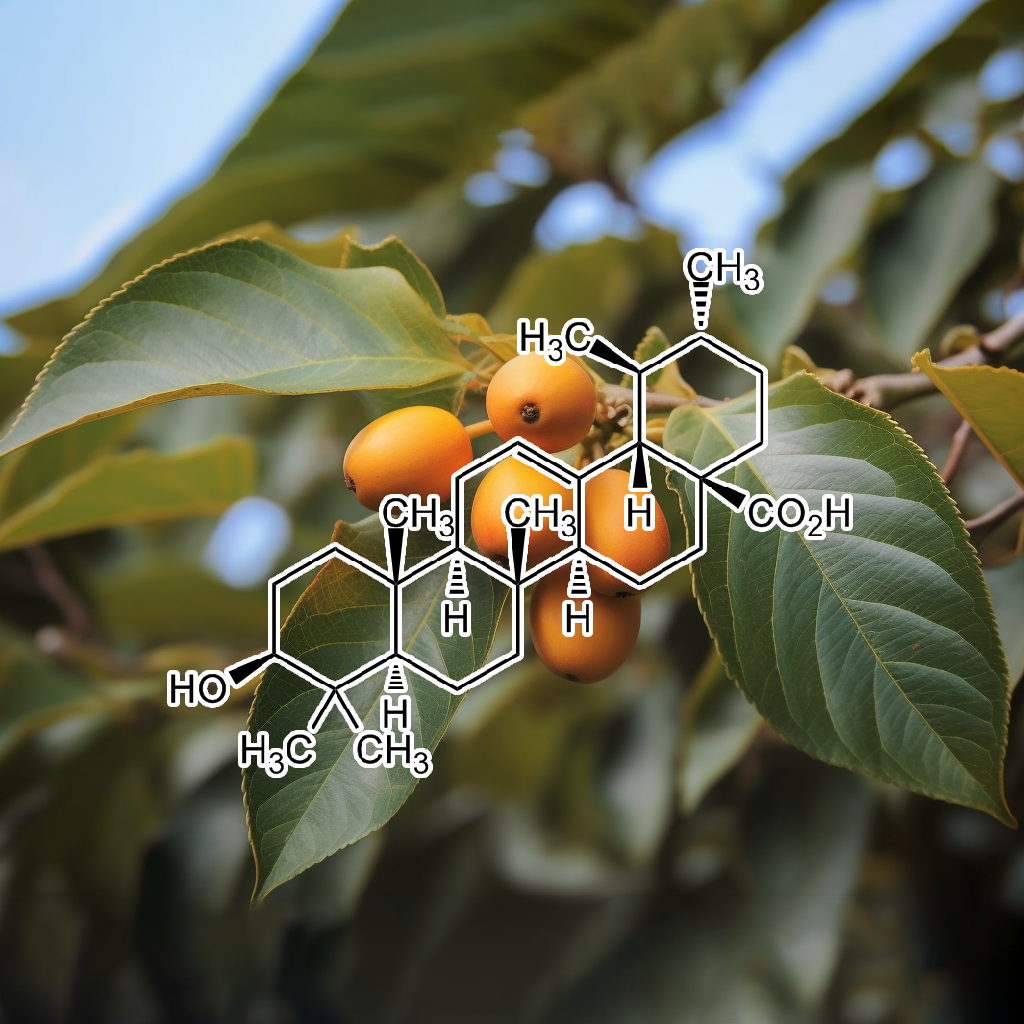
Ursolic acid (Loquat Leaf)
- Analysis Of Antioxidative And Antiviral Biomarkers Β-Amyrin, Β-Sitosterol, Lupeol, Ursolic Acid In Guiera Senegalensis Leaves Extract By Validated Hptlc …
- Anti-Inflammatory Effect Of Compound Radix Isatidis Granules [J]
- Antiproliferative And Antiviral Mechanism Of Ursolic Acid In Cervical Carcinoma Cell Lines
- Antiproliferative And Antiviral Mechanisms Of Ursolic Acid And Dexamethasone In Cervical Carcinoma Cell Lines
- Bioactive Compounds Of Loquat (Eriobotrya
- Bioactive Compounds Of Loquat (Eriobotrya Japonica (Thunb.) L.)
- Eriobotrya Japonica
- Loquat (Eriobotrya Japonica) Extract Prevents Dexamethasone-Induced Muscle Atrophy By Inhibiting The Muscle Degradation Pathway In Sprague Dawley Rats
- Loquat Leaf Extract Enhances Myogenic Differentiation, Improves Muscle Function And Attenuates Muscle Loss In Aged Rats
- Nutritional And Composition Of Fruit Cultivars: Loquat (Eriobotrya Japonica Lindl.)
- The Inhibitory Effects Of Pentacyclic Triterpenes From Loquat Leaf Against Th17 Differentiation
- Toxic Myopathy Induced By The Ingestion Of Loquat Leaf Extract
- Ursolic Acid: A Novel Antiviral Compound Inhibiting Rotavirus Infection In Vitro
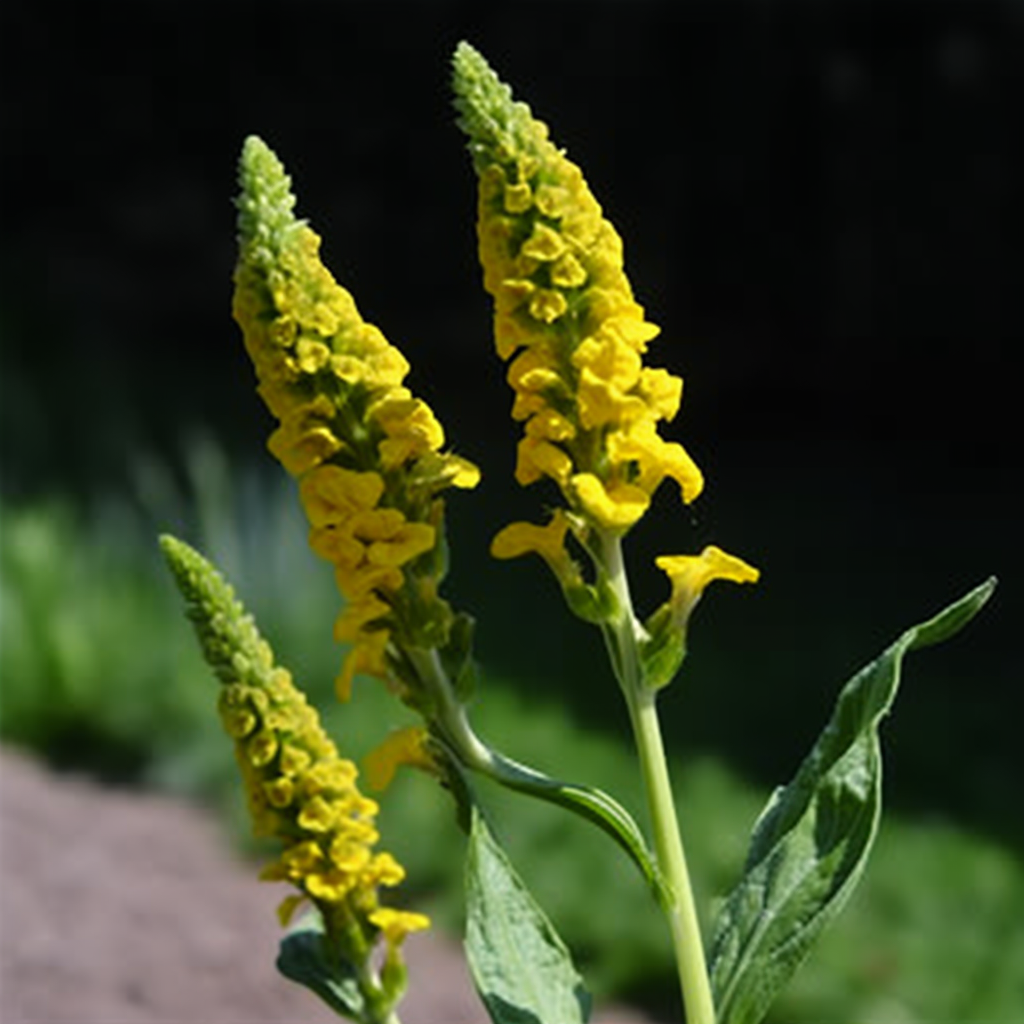
Verbascum thapsus (Mullein Extract)
- Antibacterial And Anti-Adherent Activity Of Great Mullein (Verbascum Thapsus L.) Ethanolic Extract On In Vitro Biofilm Formation Of Three Oral Streptococci
- Antimicrobial Activity Of Aqueous-Alcoholic Extracts And The Essential Oil Of Verbascum Thapsus L
- Antimicrobial Activity Of Three Endemic Verbascum Species
- Antimicrobial Potential Of The Leaves Of Common Mullein (Verbascum Thapsus L., Scrophulariaceae) On Microorganisms Isolated From Urinary Tract Infections
- Anti-Staphylococcal Activity Of Verbascum Thapsus L. Against Methicillin-Resistant Staphylococcus Aureus.
- Antiviral Effect And Mode Of Action Of Methanolic Extract Of Verbascum Thapsus L. On Pseudorabies virus (Strain Rc/79)
- Biological Activity Of Common Mullein, A Medicinal Plant
- Extensive Phytochemistry, Comprehensive Traditional Uses, And Critical Pharmacological Profile Of The Great Mullein: Verbascum Thapsus L
- In Vitro Culture Of Common Mullein (Verbascum Thapsus L.)
- In Vitro Influences Of Sugar Nutrition And Light Condition On Accumulation Of Some Phytochemicals In Verbascum Thapsus L …
- Micromorphology, Pharmacognosy, And Bio‐Elemental Analysis Of An Important Medicinal Herb: Verbascum Thapsus L.
- Optimization Of Ultrasound‐Assisted Extraction Of Functional Polysaccharides From Common Mullein (Verbascum Thapsus L.) Flowers
- Preparation Of Antibacterial Cotton Wound Dressing By Green Synthesis Silver Nanoparticles Using Mullein Leaves Extract
- Production Of Verbascoside And Its Analogues In In Vitro Cultures Of Verbascum Thapsus L.
- Study Of Sedative, Pre-Anesthetic, And Anti-Anxiety Effects Of Verbascum Thapsus L. Extract Compared With Diazepam In Rats
- The Evaluation Of Sterile Solutions Of Ilwensisaponin A And C From Verbascum Pterocalycinum Var. Mutense Hub.-Mor. On Antiviral, Antinociceptive And Anti …
- The Study Of The Verbascum Thapsus L. Herb Element Content
- Traditional Uses And Biological Activities Of Verbascum Species
- Verbacoside: A New Luteolin Glycoside From Verbascum Thapsus
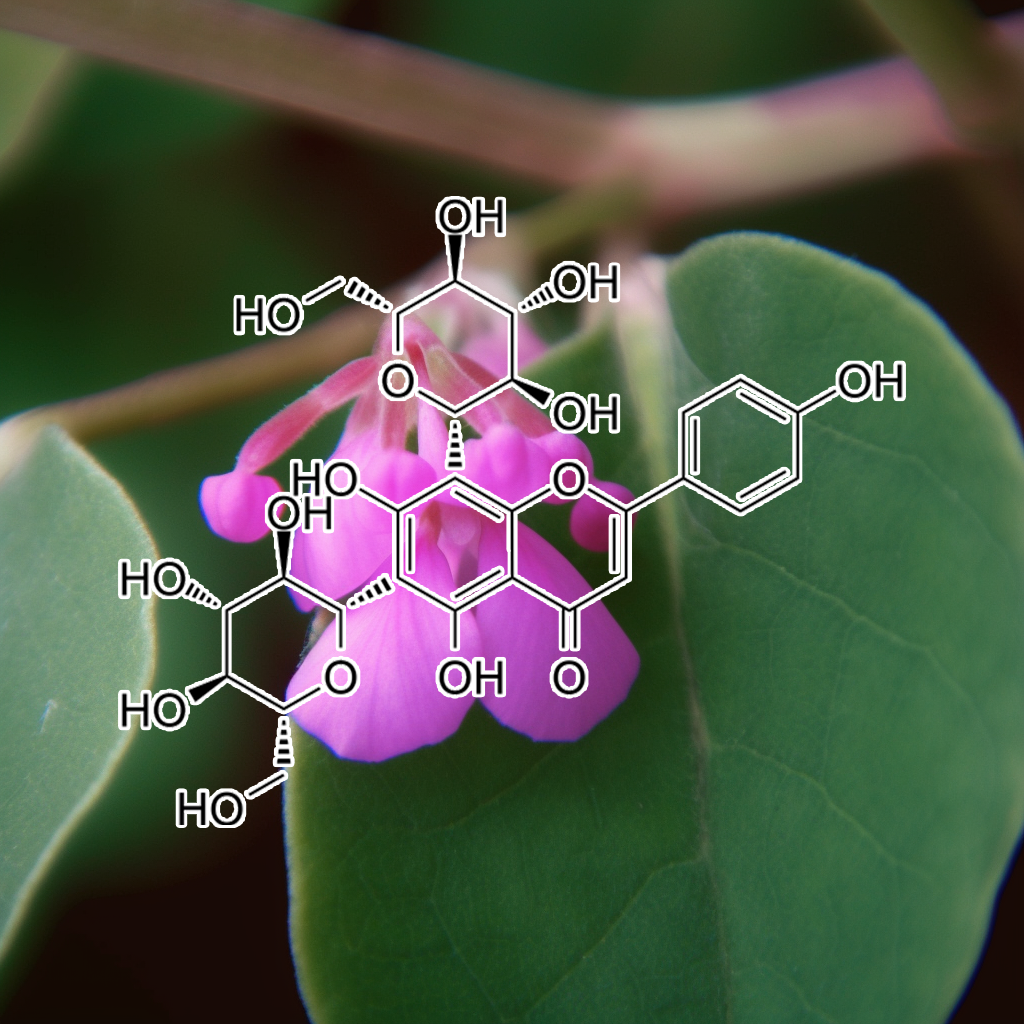
Vicenin (Desmodium styracifolium)
- Advance On The Flavonoid C-Glycosides And Health Benefits
- Herbal Products In Hypertension: Paradox Or, Paragon
- Protective Roles Of Flavonoids And Flavonoid-Rich Plant Extracts Against Urolithiasis: A Review
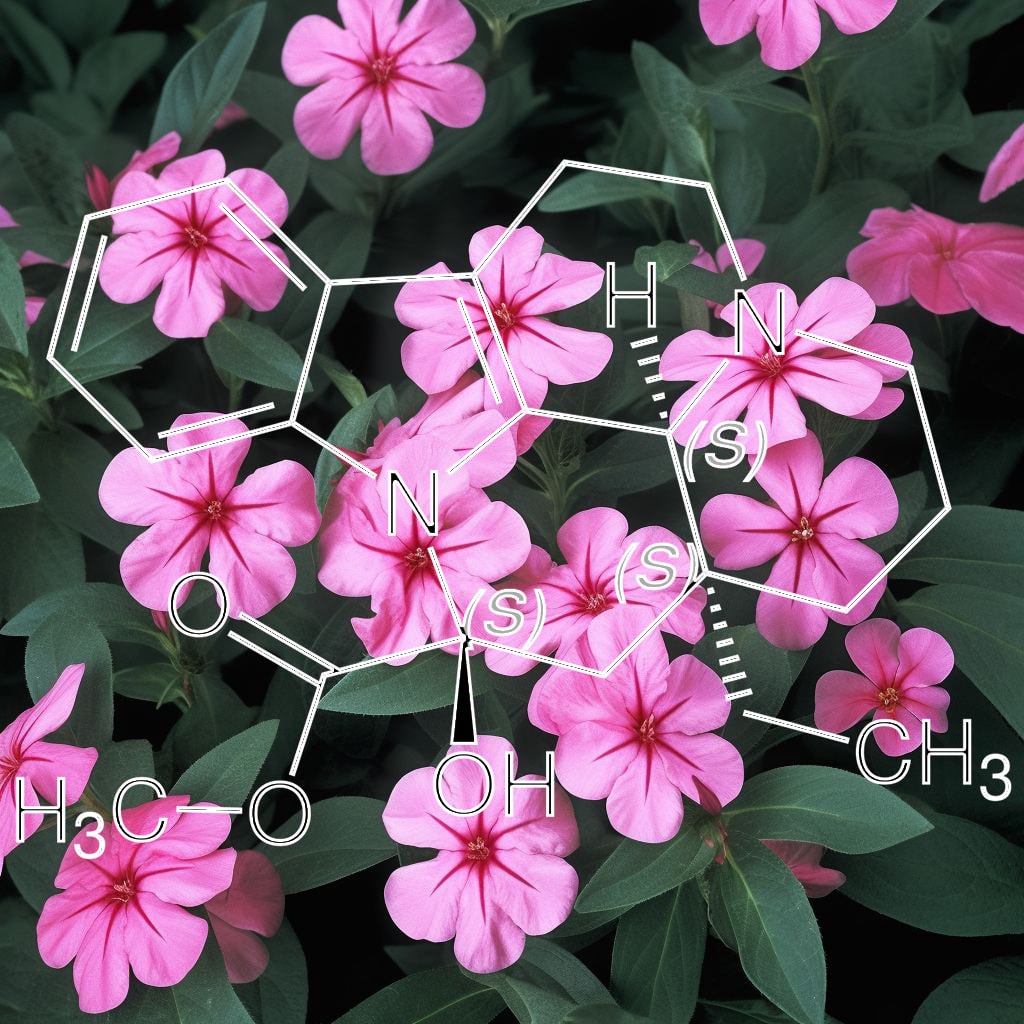
vincamine (Catharanthus roseus)
- Accumulation Effects Of Salicylic Acid Saccharide Carboxylate On The Alkaloids In Catharanthus Roseus Cells
- Alkaloids Of Catharanthus Roseus And Their Hypoglycemic Activity/Tiong Soon Huat
- Biomedical Importance Of Indoles
- Bodiversity And Antifungal Properties Of Endophytes From The Madagascar Medicinal Plants Centella Asiatica (L.) Urb. And Catharanthus Roseus (L.) G
- In Vitro Studies, Biosynthesis Of Secondary Metabolites And Pharmacological Utility Of Catharanthus Roseus (L.) G. Don.: A Review
- Natural Antiviral Compounds
- Pharmaceutical Sciences
- Phytochmical Studies On The Medicinal Herb Catharanthus Pusillus
- Production Of Indole Alkaloids In Hairy Root Cultures Of Catharanthus Roseus L. And Their Antimicrobial Activity
- The Contribution Of The Plant Kingdom To Medicine
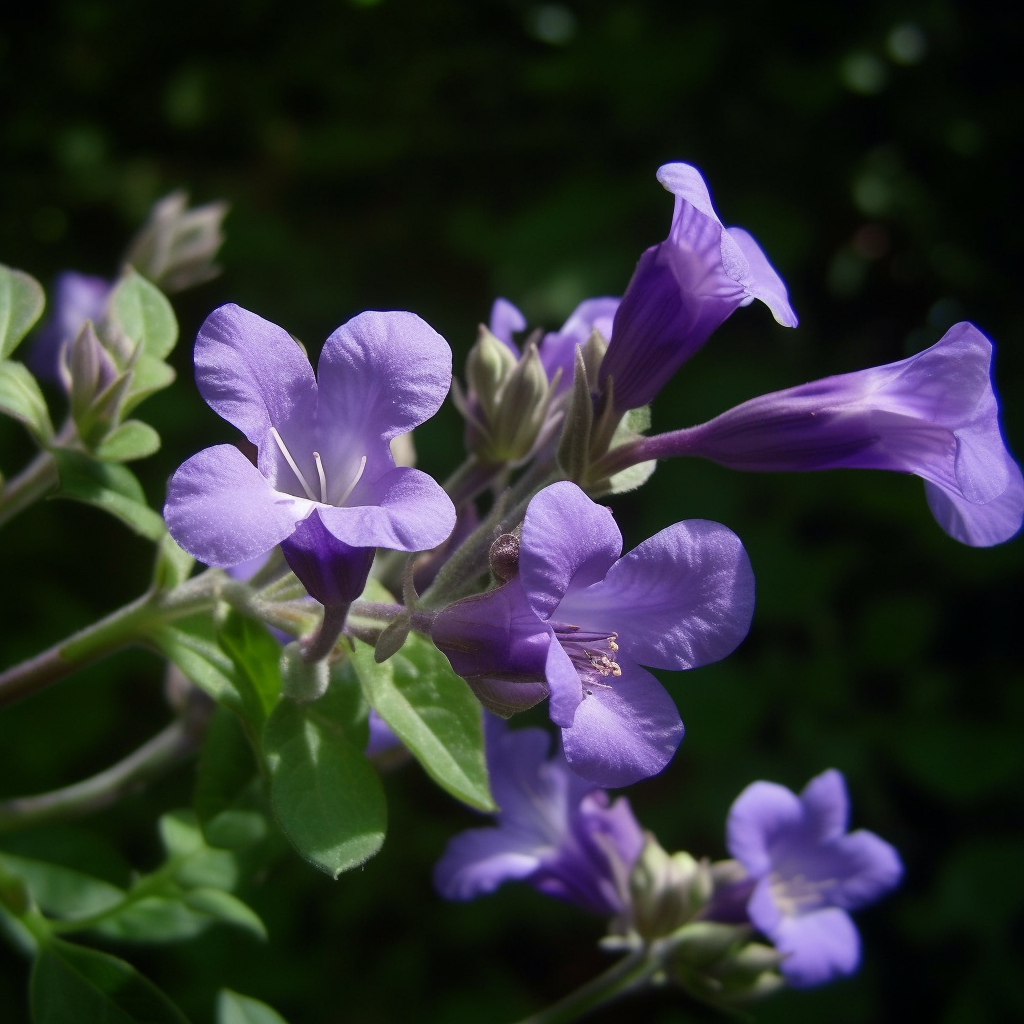
Vitex polygama
- Antiinflammatory Herbal Supplements
- Antioxidant And Hepatoprotective Activities Of The Fractions Of Ficus Microcarpa Using In Vitro And Ex Vivo Models
- Biological Activities Of A New Compound Isolated From The Aerial Parts Of Vitex Agnus Castus L.
- Effects Of Vitex Pubescens On Pregnant Rats
- Ethnopharmacological And Biotechnological Significance Of Vitex
- Hyperprogesteronemia In Response To Vitex Fischeri Consumption In Wild Chimpanzees (Pan Troglodytes Schweinfurthii)
- Phytochemical Profile And Analgesic Evaluation Of Vitex Cymosa Leaf Extracts
- The Genus Vitex: An Overview Of Iridoids As Chemotaxonomic Marker
- Three Triterpenoids From The Leaf Extract Of Vitex Doniana (Verbenaceae)
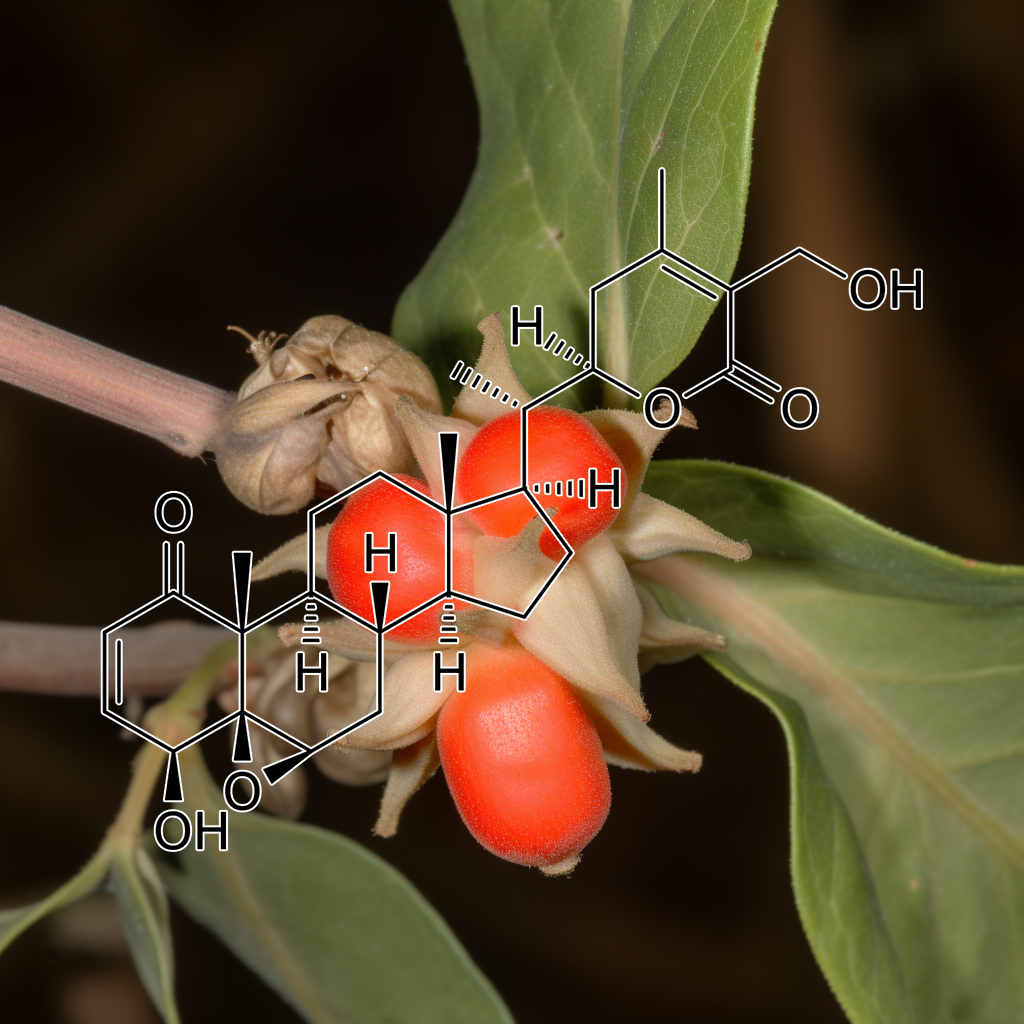
Withaferin A, b (Ashwagandha)
- Anticancer Phytocompounds: Experimental And Clinical Updates
- Development Of A Goat Model For Evaluation Of Withaferin A: Cervical Implants For The Treatment Of Cervical Intraepithelial Neoplasia
- Indian Traditional Ayurvedic Treatment Regime For Novel Coronavirus , Covid-19
- Insights Into Bovine Endometritis With Special Reference To Phytotherapy
- Nrf2 Activator Pb125® As A Potential Therapeutic Agent Against Covid-19
- Prospect Of Indian Herbs As Sources Of Antioxidants In Combating Oxidative Stress.
- Secondary Metabolites Of Traditional Medical Plants: A Case Study Of Ashwagandha (Withania Somnifera)
- Utilization Of Ashwagandha (Withania Somnifera) Root Powder In Formulation Of Health Foods
- Withania Somnifera (Linn.) Dunal: A Review Of Chemical And Pharmacological Diversity
- Secondary Metabolites Of Traditional Medical Plants: A Case Study Of Ashwagandha (Withania Somnifera)
- Utilization Of Ashwagandha (Withania Somnifera) Root Powder In Formulation Of Health Foods
- Secondary Metabolites Of Traditional Medical Plants: A Case Study Of Ashwagandha (Withania Somnifera)
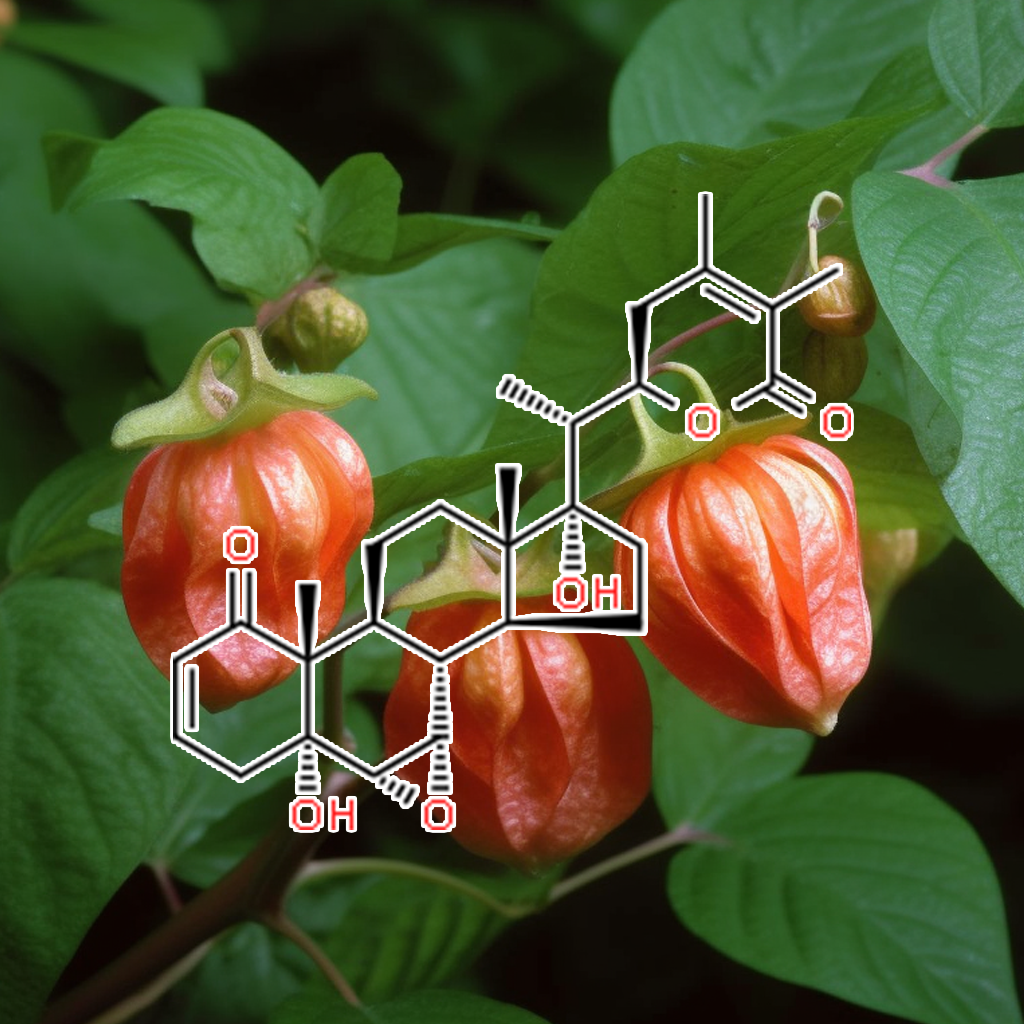
Withanone (Ashwagandha)
Newly emerged COVID-19 has been shown to engage the host cell ACE2 through its spike protein receptor binding domain (RBD). Here we show that natural phytochemical from a medicinal herb, Withania somnifera, have distinct effects on viral RBD and host ACE2 receptor complex.
Methods: We employed molecular docking to screen thousands of phytochemicals against the ACE2-RBD complex, performed molecular dynamics (MD) simulation, and estimated the electrostatic component of binding free energy, along with the computation of salt bridge electrostatics.
Results: We report that W. somnifera compound, Withanone, docked very well in the binding interface of AEC2-RBD complex, and was found to move slightly towards the interface centre on simulation. Withanone significantly decreased electrostatic component of binding free energies of ACE2-RBD complex. Two salt bridges were also identified at the interface; incorporation of Withanone destabilized these salt bridges and decreased their occupancies. We postulate, such an interruption of electrostatic interactions between the RBD and ACE2 would block or weaken COVID-19 entry and its subsequent infectivity.
Conclusion: Our data, for the first time, show that natural phytochemicals could well be the viable options for controlling COVID-19 entry into host cells, and W. somnifera may be the first choice of herbs in these directions to curb the COVID-19 infectivity.
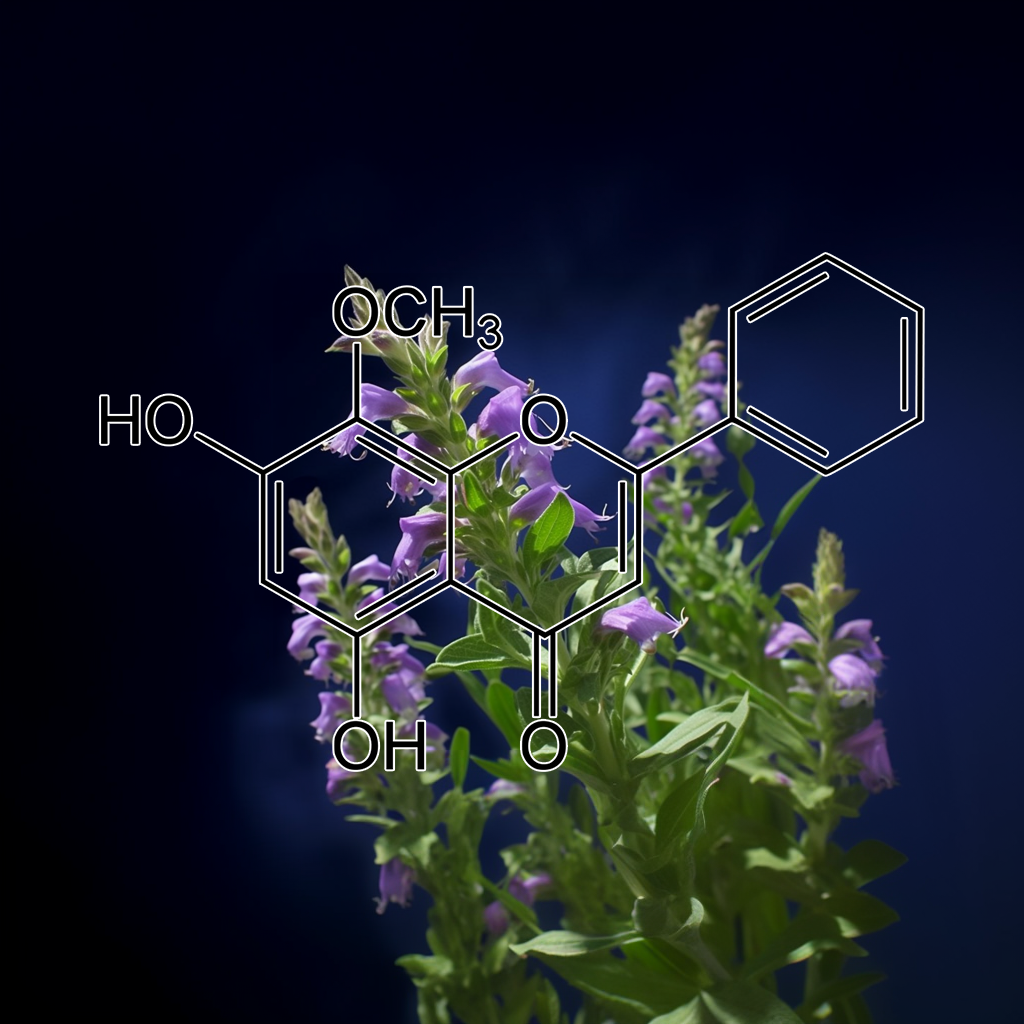
Wogonin (Scutellaria baicalensis)
- Advances Of Wogonin, An Extract From Scutellaria Baicalensis, For The Treatment Of Multiple Tumors
- Anticonvulsant Effect Of Wogonin Isolated From Scutellaria Baicalensis
- Anti-Hepatitis B virus Activity Of Wogonin In Vitro And In Vivo
- Anti-Hepatitis B virus Effects Of Wogonin Isolated From Scutellaria Baicalensis
- Antioxidative And Anti-Inflammatory Activities Of Polyhydroxyflavonoids Of Scutellaria Baicalensis Georgi
- Antitumor Actions Of Baicalein And Wogonin In Ht-29 Human Colorectal Cancer Cells
- Antiviral Chinese Medicinal Herbs Against Respiratory Syncytial virus
- Flavonoid Pharmacokinetics And Tissue Distribution After Repeated Dosing Of The Roots Of Scutellaria Baicalensis In Rats
- Free Radical Scavenging And Antioxidant Activities Of Flavonoids Extracted From The Radix Of Scutellaria Baicalensis Georgi
- Isolation And Purification Of Baicalein, Wogonin And Oroxylin A From The Medicinal Plant Scutellaria Baicalensis By High-Speed Counter-Current Chromatography
- Potent Inhibition Of Monoamine Oxidase A By Decursin From Angelica Gigas Nakai And By Wogonin From Scutellaria Baicalensis Georgi
- Production Of Cytokines And Stimulation Of Resistance To viral Infection In Human Leukocytes By Scutellaria Baicalensis Flavones
- Relaxant Effect Induced By Wogonin From Scutellaria Baicalensis On Rat Isolated Uterine Smooth Muscle
- Scutellaria Baicalensis, The Golden Herb From The Garden Of Chinese Medicinal Plants
- The Anti-Inflammatory Activity Of Scutellaria Rivularis Extracts And Its Active Components, Baicalin, Baicalein And Wogonin
- Therapeutic Potential Of Wogonin: A Naturally Occurring Flavonoid
- Wogonin A Promising Component Of Scutellaria Baicalensis: A Review On Its Chemistry, Pharmacokinetics And Biological Activities
- Wogonin, A Flavonoid Isolated From Scutellaria Baicalensis, Has Anti-viral Activities Against Influenza Infection Via Modulation Of Ampk Pathways.
- Wogonin, An Active Ingredient Of Chinese Herb Medicine Scutellaria Baicalensis, Inhibits The Mobility And Invasion Of Human Gallbladder Carcinoma Gbc-Sd Cells
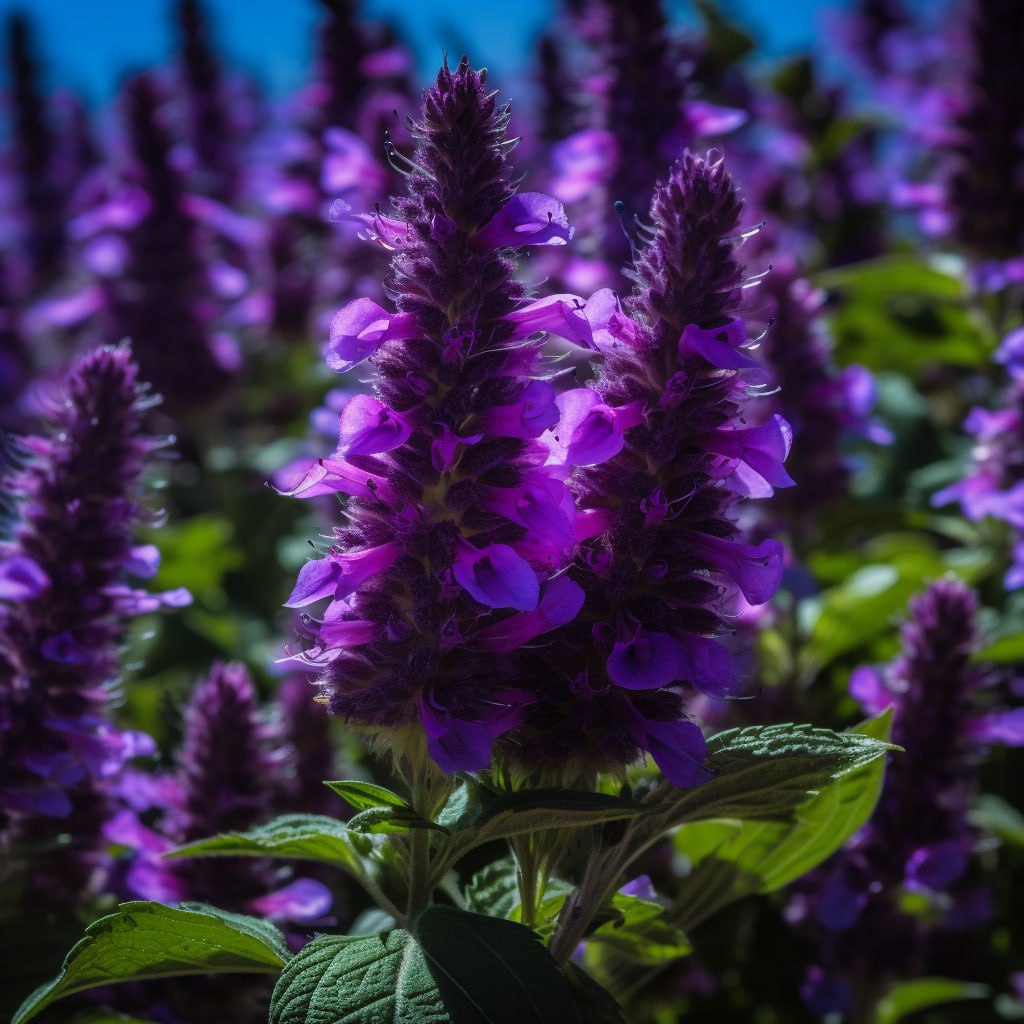
Korean Mint (Wrinkled Giant hyssop)
- Phytochemistry And Bioactivity Of Aromatic And Medicinal Plants From The Genus Agastache (Lamiaceae)
- The Experience Of Treating Patients With Pneumonia Secondary To The Coronavirus Disease 2019 Using The Guizhi Method Of Traditional Chinese Medicine
yohimbine
- Adme Properties Of Herbal Medicines In Humans: Evidence, Challenges And Strategies
- Clinical Evidence Of Herb-Drug Interactions: A Systematic Review By The Natural Standard Research Collaboration
- Evaluation Of Phytochemical Composition In Selected Medicinal Plants And Potential Application As Antimicrobial Agent
- Herbal Medications And Vitamin Supplements
- Herbal Medicine: Potential For Intoxication And Interactions With Conventional Drugs
- Interactions Between Nutraceuticals/Nutrients And Therapeutic Drugs
- Risks Associated With The Use Of Herbs And Other Dietary Supplements
- The Traditional Use Of Medicinal Plants To Treat Sexually Transmitted Diseases
- Β-Carboline Alkaloids
- Antiviral compositions that include yohimbina as an active principle.
Mandatory FDA Warning: As with any supplement, consult your medical practitioner prior to using this product if you are pregnant, may become pregnant, breastfeeding, taking medication, other dietary supplements or have a medical condition. These statements have not been evaluated by the Food and Drug Administration. This product is not intended to diagnose, treat, cure, or prevent any disease. *Daily Value has not been established.
| Size | 50g, 100g, 200g, 300g |
|---|

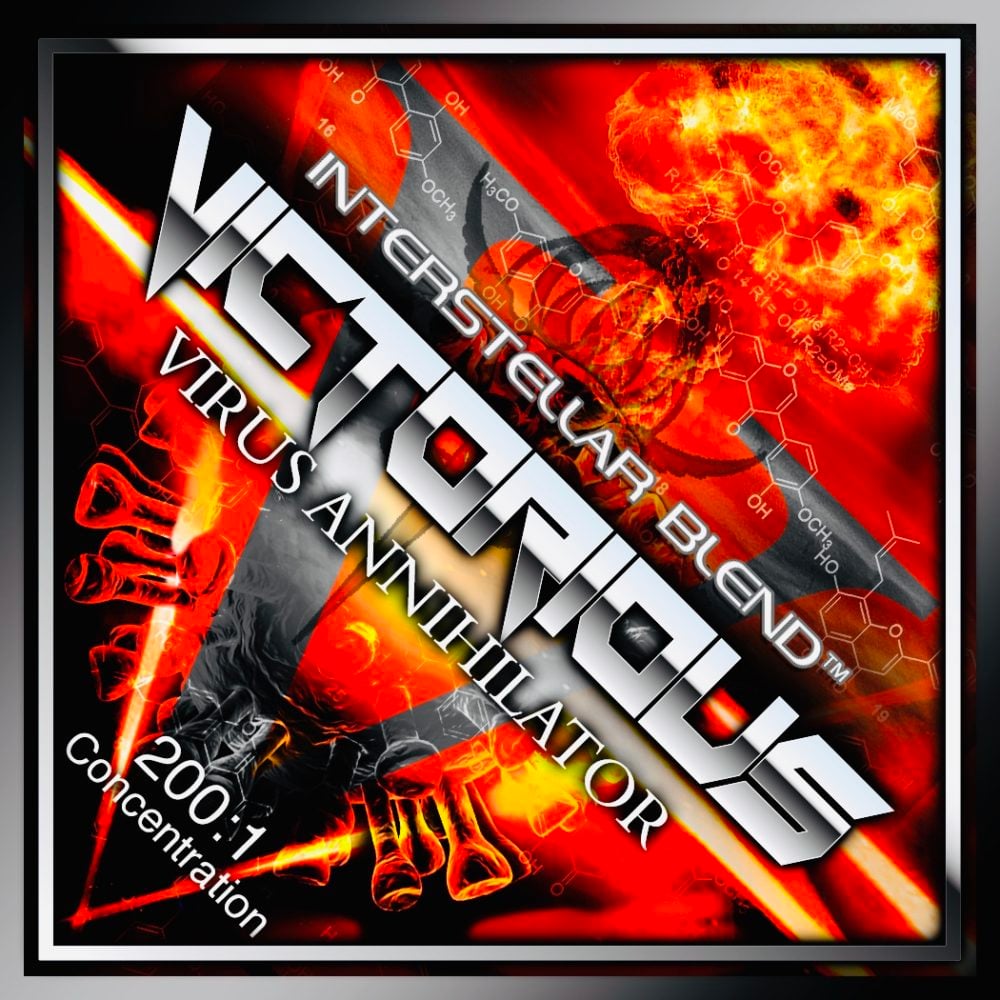
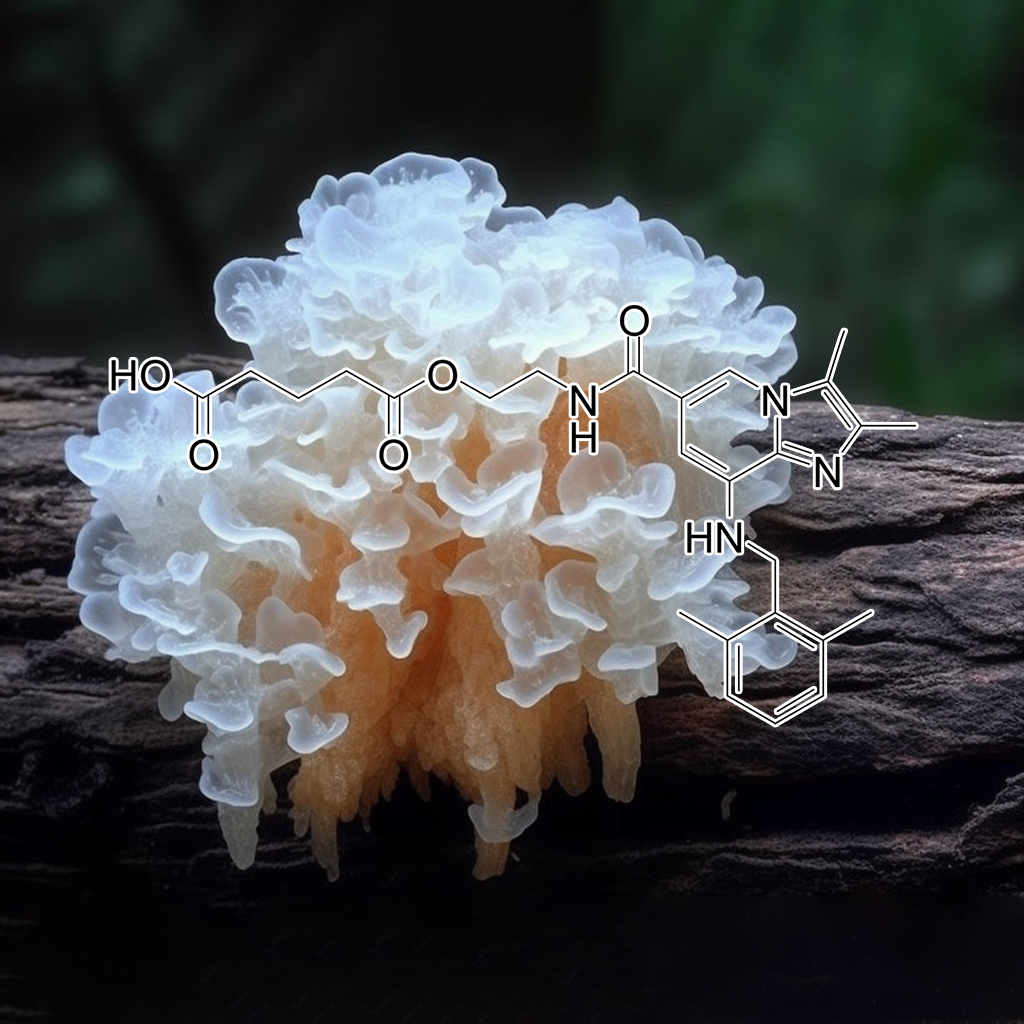
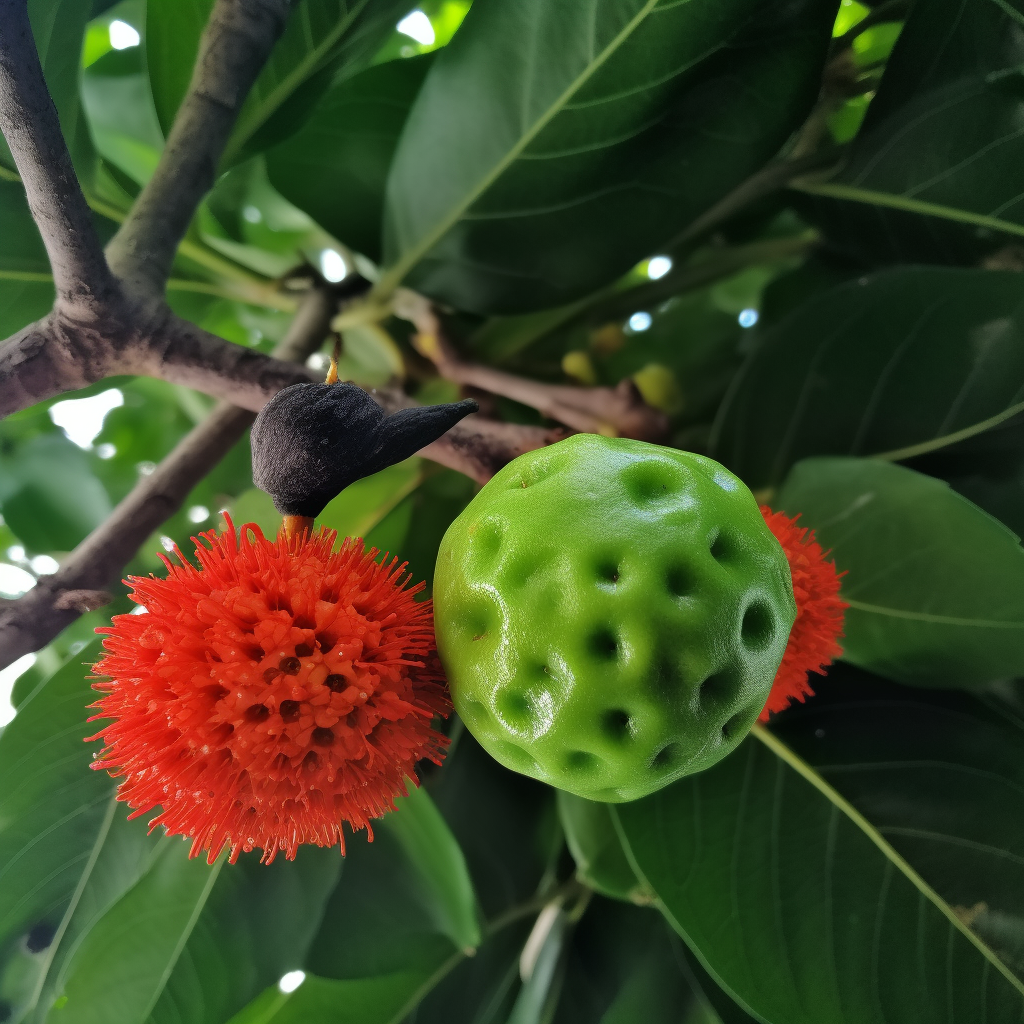
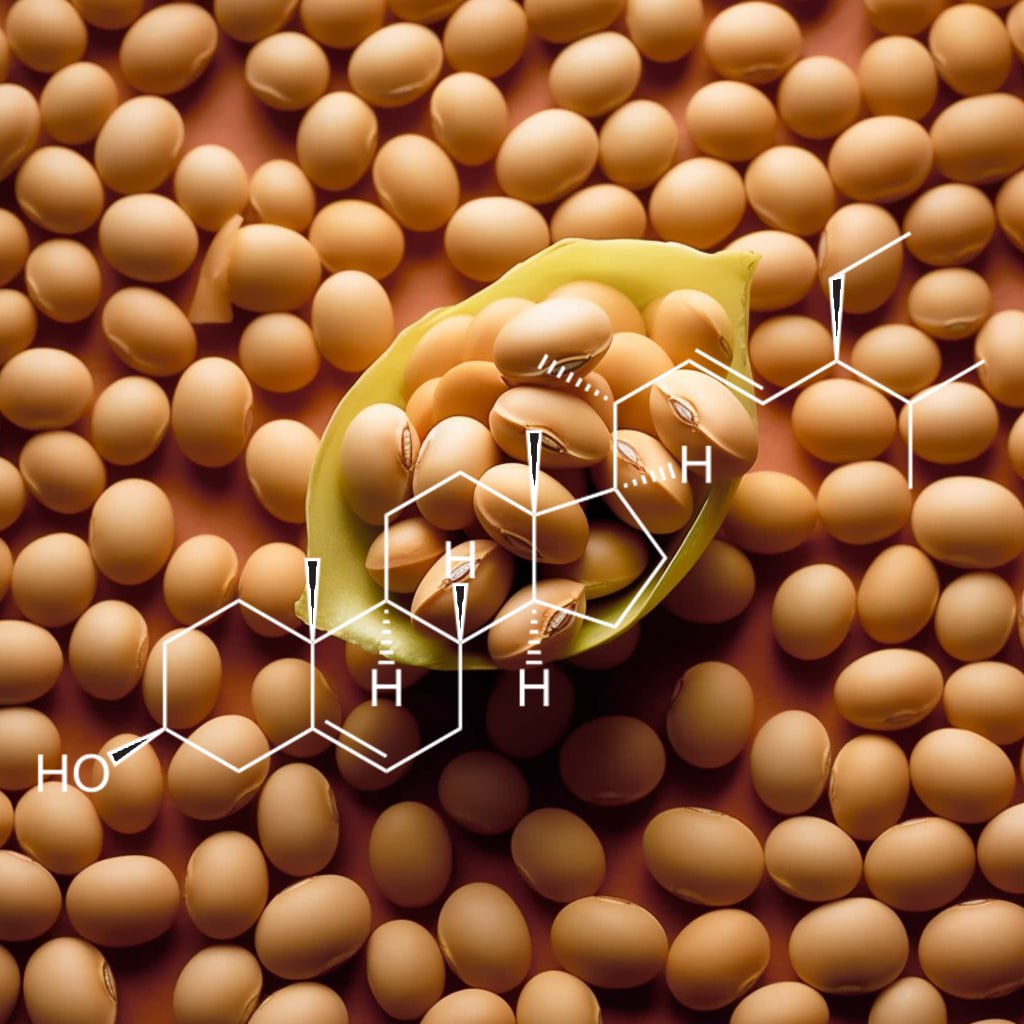
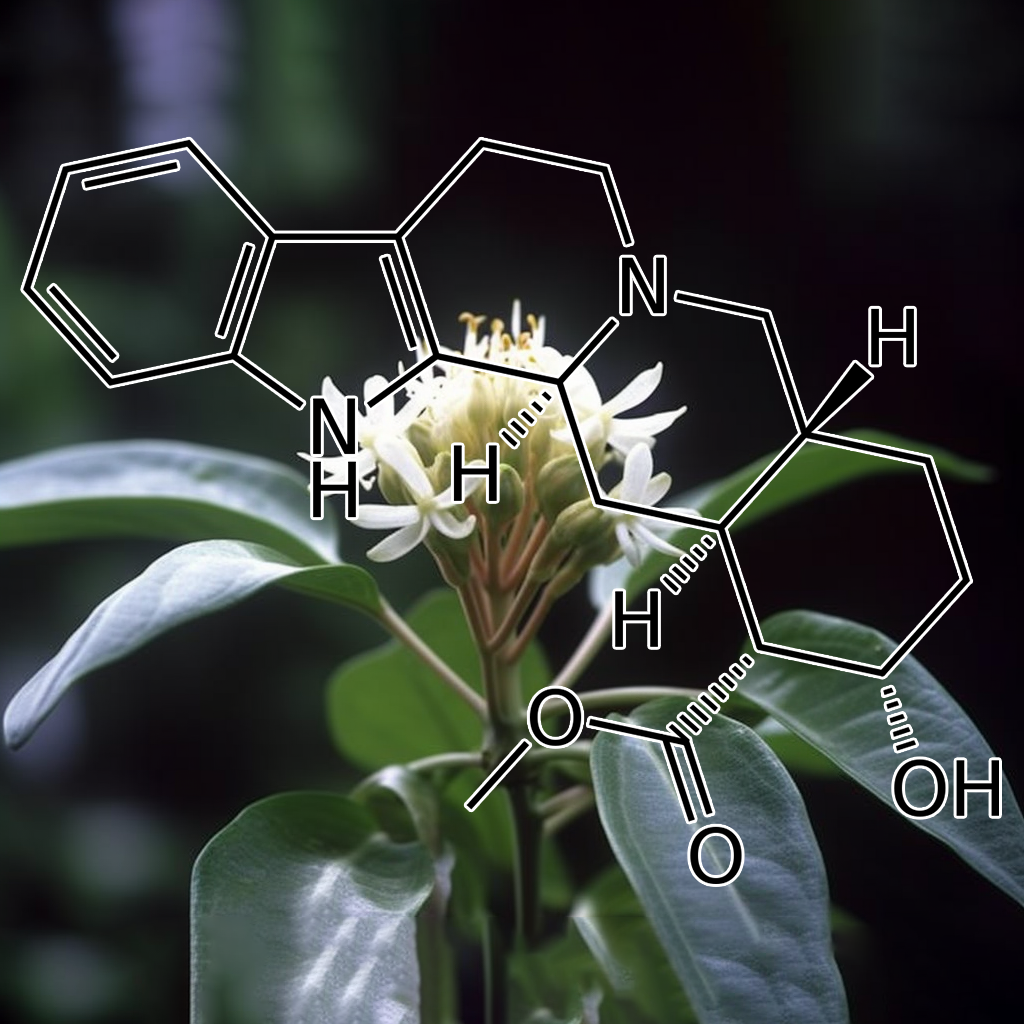
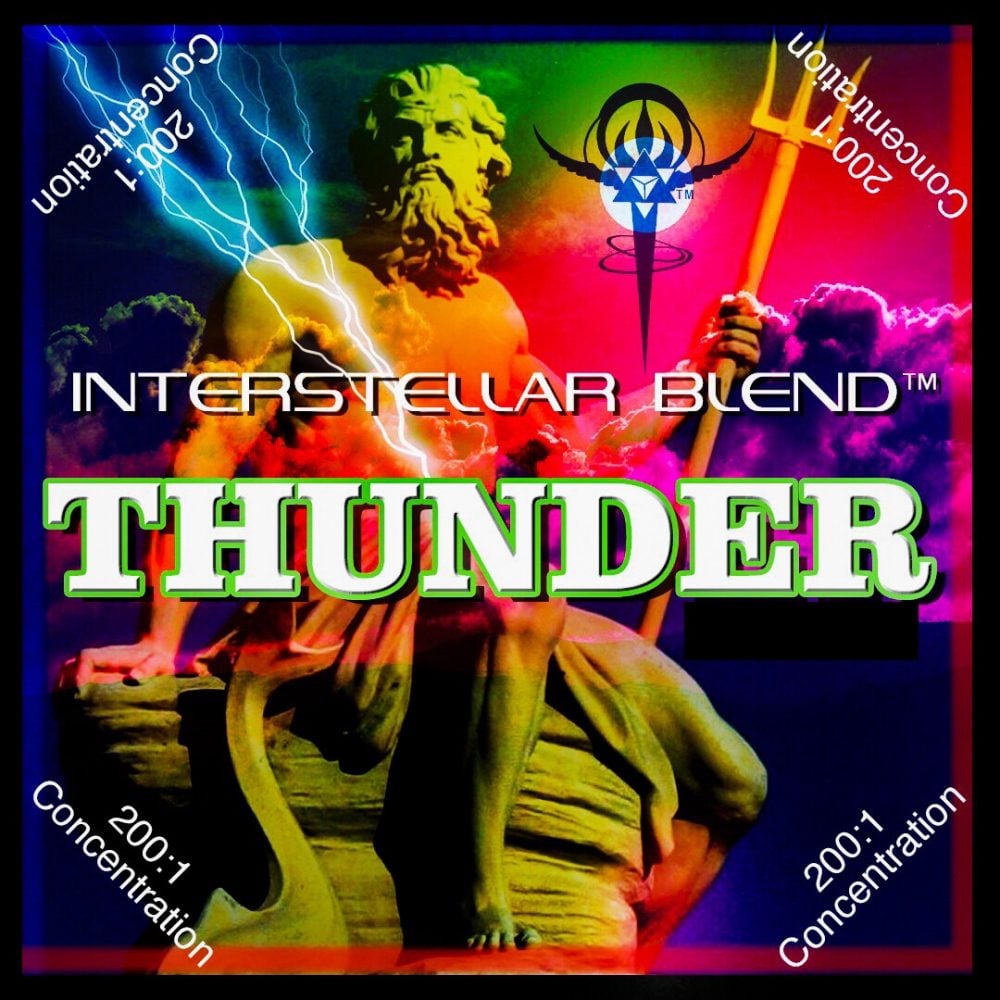
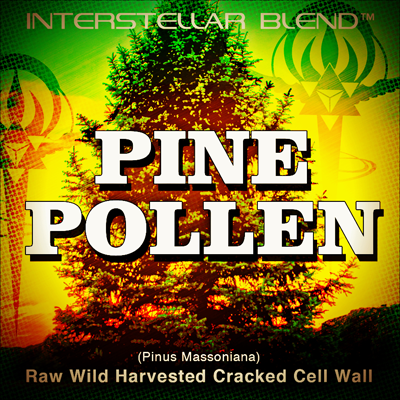

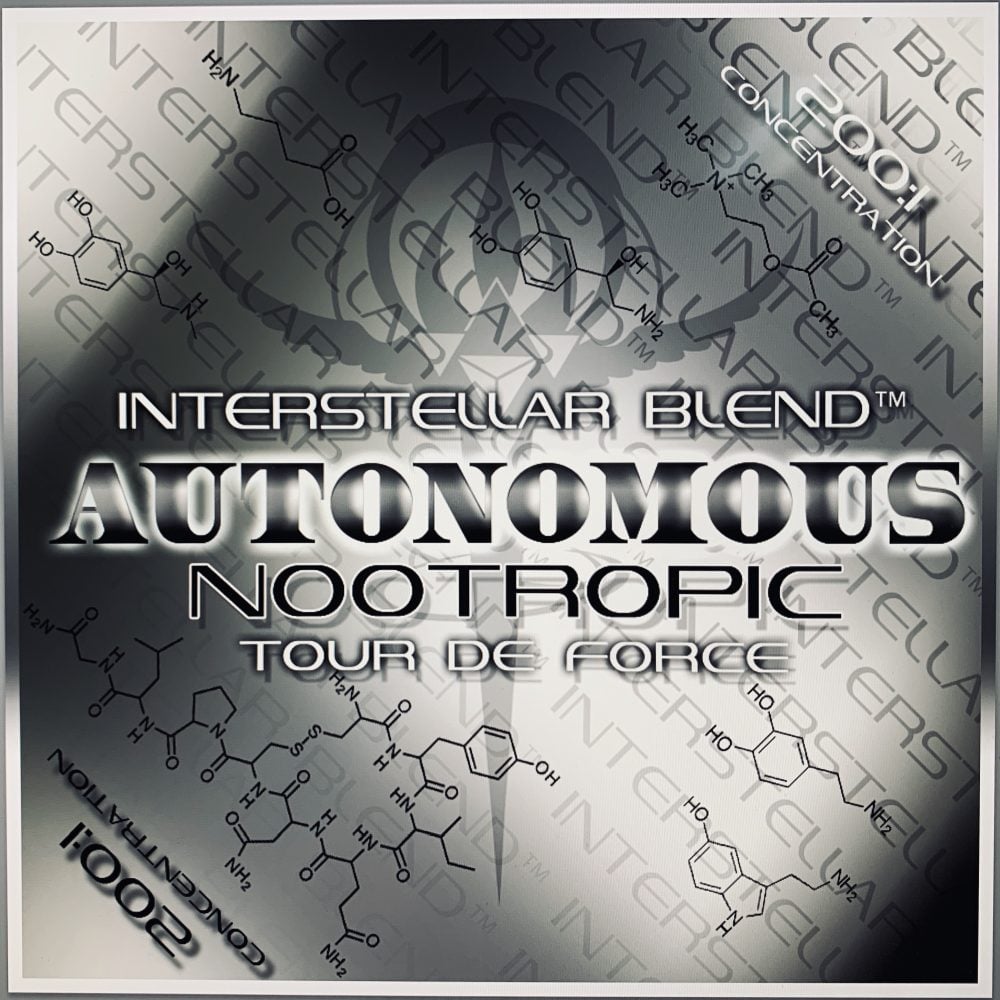
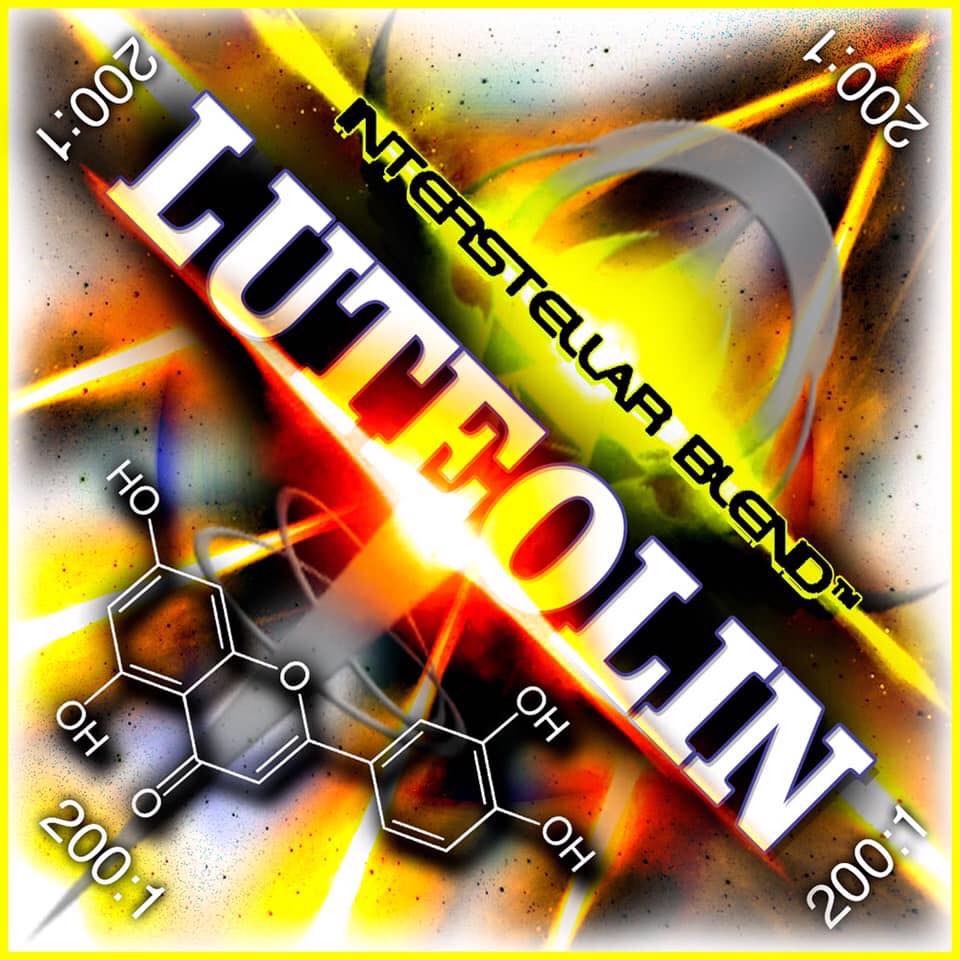
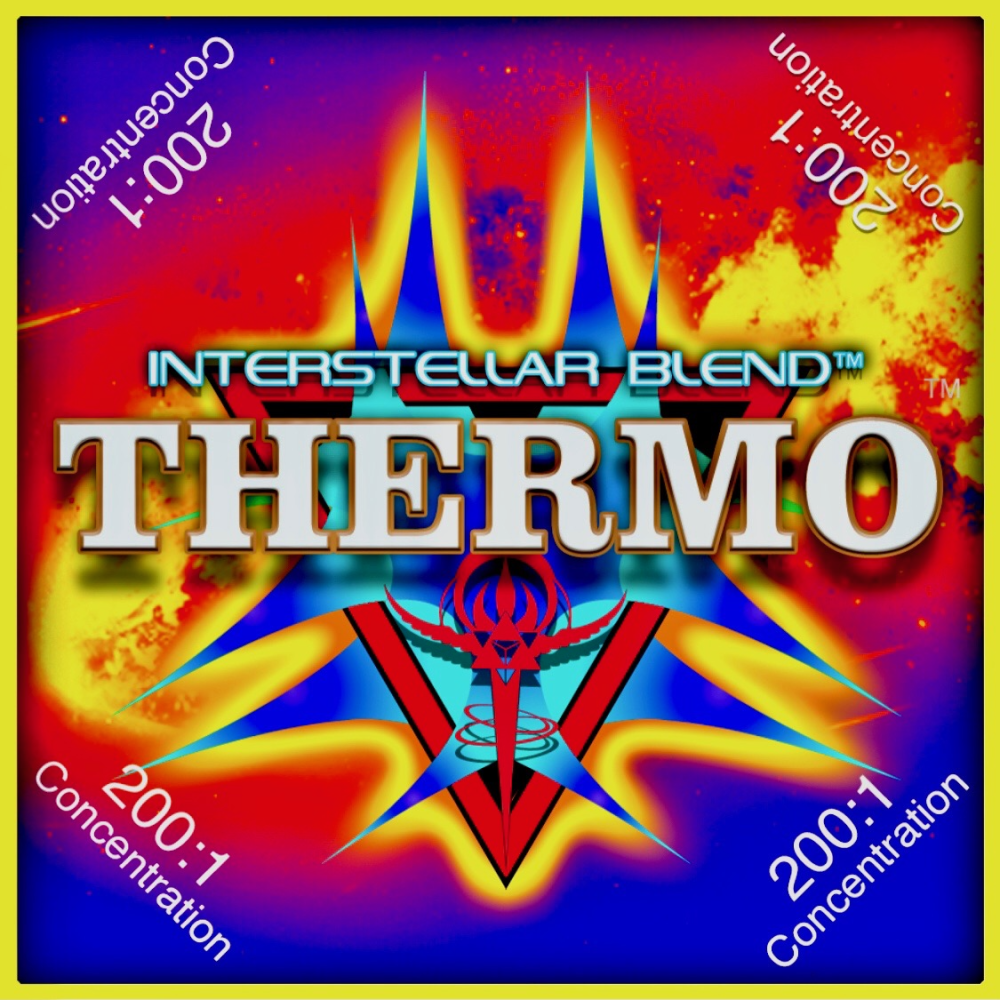
Rich Ryan –
Wow!
I had all the C0VID-19 symptoms (didn’t get tested, don’t want to get tracked) and upon starting a tsp a day of Victorious, all the symptoms were gone within 2 days!
I felt better and was able to goto work within about 4 hours. Amazing stuff!
With this and keto diet and intermittent fasting, there’s no need to worry about the big bad virus!
I’ve been taking it for about 4 weeks so far, and have also noticed that my skin is getting much smoother.
Nice Side Effect!
Andy Williams –
I’ve been using the blends for about a month now, Trinity, Seven Sages and Victorious and they are next level!
I have been taking mine in coffee with a keto diet. I stopped taking other supplements to test the effectiveness and they are nothing short of amazing. Insane energy and mental clarity and focus, waking up easier and when I added in Victorious my skin was NOTICEABLY more consistent and evenly toned, within DAYS.
I’m feeling very healthy all round. Prior to taking the blends I was already feeling great physically and mentally before starting so I was skeptical if I would feel much from the blends but let me say I feel even more amazing and they work FAST!
I did a loading phase at the start so I would personally just order the bigger sizes if you’re needing to load up for the first few days. The herbs do what Gavin says they do so you can have confidence in getting the larger amount. Just read the reviews, it’s all there or reach out to Gavin he will help you out no problem. It took around a week or so to really start feeling the effects and once they came on I backed off to the recommended amounts for maintenance which is more than enough.
Gavin has put together some pretty damn sweet blends and I’ll be using them for a long time! Don’t wait, invest in yourself and your health. It’s worth it.
Abram Armas –
I had all the common symptoms of Covid, the loss of taste smell and an awfully high fever that was getting worst. I felt completely fatigued and not able to function and not getting any better.
After introducing the anti viral blend I almost immediately that same day saw my symptoms improving. My fever was coming down, my nose congestion was going away, by the third day I was able to do my normal day to day tasks without the fatigue and the ill feeling.
I’m so grateful for Gavin, for putting this amazing blend together It has truly helped me tremendously In improving my symptoms and beating Covid.
Andy Williams (verified owner) –
Updated Victorious Review 🙂
I started taking Victorious because I got a sizeable sample with an order that I did and loved it so ordered more. One thing I noticed was that it almost immediately started clearing up my skin and “purging” my body from within.
It makes me feel incredibly healthy and gives me more energy. Some of the effects are immediate and some come on over time so it’s one to stay on for a while to get even greater benefits as you go.
It’s definitely one of the most powerful blends and you don’t need a lot to get the benefits.
My skin has totally transformed after months of use. Clearer, better complexion and tans better and more evenly. My overall vitality has definitely increased also.
Also one of the other benefits at higher dosages I felt “lean and dry” and not bloated at all. Mindset, athletic performance and health are improved.
This is WAY more than just an anti viral!! Get some!
Alecxander Castro –
I first heard from Interstellar blends from Shaun Lee on Instagram. I hesitated cuz of the price but after a few months I dove in and got every single product from Gavin to see which one was best for my lifestyle.
I work in a hedgefund so I need to have my brain on point all the time and I found that my favorite herbs were: Apigenin, Shilajit, Victorious, Peel, Spice, ALZ, Luteolin, Hypnotic to sleep, Super Tonic Hair, and Pine Pollen. I take them pure with hot water.
I lead a pretty active and healthy lifestyle and I found that combining these blends with my morning green shake of veggies and fruits, my cognitive functions and my brain in general works so much better. It even helps me to meditate more deeply and productively. They will be in my arsenal of tools to boost my brain. The more you use Apigenin, the more brain cells you form in your brain cuz of neuro genesis. How cool is that! If I understand it correctly, you get smarter by every month using it while leading a healthy lifestyle!
Taranjit Virk –
Review for Victorious:
I started to feel a little under the weather with a sore throat and headache I usually always get sick around this time as the weather starts to change. I decided to take Victorious after reading so many reviews on it and man they were not lying!! Within minutes after taking Victorious with warm water my symptoms started to disappear. Definitely buying again and passing this product on to friends and family!
Cindy Smith (verified owner) –
I had been visiting/staying with my dad while he was in a hospital rehab situation when he was diagnosed with Covid. Although I was feeling just fine, I had a Covid test, and my doctor also ordered the flu test. Well, I tested negative for Covid but positive for flu type A! I wonder why my mask did not keep me from getting the flu…hmmm…….
Anyway… I had just recently started taking some of the blends (Super Nova, Peel, Super Hair, Thermo, Pine Pollen) and immediately started mega dosing on the sample of Victorious I had received, as well as increasing my dosage of Peel. (Thank you so much for that sample of Victorious, Gavin!) I did not have any Spice on hand, but nonetheless I never did get really sick. The day after I was diagnosed I was a little achy in the morning, but by late afternoon that was gone. The third day I was nauseous with diarrhea, which I felt was my body disposing of the virus. Days 4 thru 6, I was just feeling a little tired, but no other symptoms. By day 7, I was back to normal. I never had any respiratory distress, coughing or congestion…nothing at all in my head and lungs.
I am convinced that the blends I had just recently started taking had already enhanced my immunity, and then starting with 1/2 tsp Victorious twice/day and increasing Peel accordingly that the flu was stopped dead in its tracks!
I am always going to have Victorious, Peel and Spice on hand for illness defense! Thank you, Gavin…I’m so glad I found your products!
Trinity Blackwell –
Wow. Victorious is amazing and I haven’t even ot used it on myself yet. Three months ago I brought home 3 rescue puppies, one of whom had a swollen face and swollen and weepy eyes. She also had multiple hard lumps in her ears, about which the vet couldn’t give me any insight. The prescription eye cream could only be used for a couple weeks and then the eye issues returned. I emailed Gavin and he suggested trying Victorious with her food. Within 3 days her eyes were better. If I skip a couple days it starts to return, so I don’t skip anymore. This morning I noticed that there’s only one tiny ear lump left, I’m sure soon to be gone. Amazing bonus! I’m so grateful. I feel like I’m prepared for anything now, with Victorious added to my home emergency supplies.
Shirley Oey (verified owner) –
Gavin sent me a free Victorious blend to try in November. While waiting for delivery, my cousin Elly called to tell me she got COVID. She is a nurse in a nursing home. She was having fevers and chills. I sent her the Victorious blend, By the time she received it, she had already vomiting.
I told her to take the blends immediately.
My goodness, she did so well she went back to work about 2 weeks later. I’m just sooooo happy we didn’t loose Elly. Thank you so much Gavin!! You saved her life!!
I’m been doing very well taking Victorious blend also. I work in the grocery store 40 hours a week while in low dose chemotherapy treatments for stage 4 breast cancer. My white blood count goes down to below normal levels.
I know the blend helps me from getting COVID.
Thank you again for creating this awesome blend.
Stephen Shuman –
I have been a loyal customer for years now, and once again I am shown outstanding evidence that your blends go above and beyond to protect my body. Last Saturday I was at my friends after Christmas party. It was a potluck style party where everyone brought in their Christmas left overs. Additionally there was a beautiful giant hooka set up. I’d say there were probably 20+ people there, and I thoroughly enjoyed myself. Yesterday morning I started getting reports that people were not feeling well and went to get tested, and over 75% the people there tested positive, but I was not one of them. I was not wearing a mask while I was there. I shared the hooka while I was there. I also shared drinks while I was there. I did everything that people say guarantees a covid infection. I got the regular PCR test which is 99% effective and a day later saw my negative results. Every day I take Luteolin, Victorious and Peel blends and during fasting and keto I take Trinity and Senolytics. I am 100% confident that my daily use of Gavin’s blends besides keeping me healthy in every way that matters, also protected me against a covid infection. Thank you very much Gavin!!!
Kyra V –
I tested positive for COVID right after Christmas. My symptoms were fairly minimal, but I lost my taste and smell, fatigue, and I ran a low fever for a day. My sister recommended victorious to me based on the reviews she had read. I ordered a sample to try and my symptoms were gone within a week. I was able to return to work without any difficulties the next week.
I don’t know if this is an additional side effect, but I have also struggled with systemic acne since adolescence. After taking victorious, I noticed that my acne has started to clear as well. Like I said, I don’t know if this is an official effect, but taking victorious is the only thing in my diet that has changed. I have tried countless cleansers and medications throughout my life and I am so happy that this is a healthier alternative to medications and chemicals used to clear acne.
After having so much success, I got some for my grandparents to take to help protect them during COVID. They have taken it and have not been sick with even a cold this season and they have reported higher energy levels and an overall improvement in how they are feeling. Needless to say,I am a believer and I will continue to tell everyone about victorious because it works!
Lewis M (verified owner) –
wow. this stuff is amazing, I have been reading reviews on these blends for a few months now and thinking to myself is it actually true. I decided to bite the bullet and order some victorious blend. What a delight I was in for, I brought a small package and received a free sample with my parcel that I am yet to try but im sure I will love. I just had to come back and right my review for victorious first.
working outside as a blockpaver in the uk I face a lot of weather trouble and most of the time during winter I feel run down and tired and always have a cold of a chesty cough. however after using victorious for a little under 2 weeks now ive never felt this energetic and healthy during the winter months before. usually after working in the cold all day I come home and shower and sleep but now I feel ready to take on more tasks because I don’t feel run down or ‘under the weather’. I used it in black coffee every morning and afternoon. recently I have started the dry fast that is recommended with the blends and that’s a whole different story.
I have heard about fasting before but I always thought this was for people who didn’t burn much energy during the day at work. having a very labour intense job I always though that it wasn’t possible to fast all day without consuming calories/energy. However after doing some research into ‘dry fasting’ I though why not give it a go and see how I feel. During the first day I felt hungry but that was my body jut getting used to this new plan. I had one black coffee with the blend in the morning and one just after lunch to keep my energy up at work. after day 2 I didn’t have any of the cravings for snacks or food like I normally do during work and went right through the day without any food and only a small amount of water. and I can honestly say I feel amazing I am now ready to look into the other blends and see where they take me to. very excited to get started with some of the others.
Sudevika Okeahi (verified owner) –
I bought several months worth of this Victorious blend and am absolutely stoked!
I’m taking it with Autonomous, Spice and Peel blends twice daily.
I haven’t felt better in my entire life.
These blends are priceless!
I wish more people knew about them the world would be a healthier and happier place.
I started off with Spice and Peel Blends over two years ago for chronic back and knee pains with complete relief after. I’ve now added Victorious and Autonomous to the mix this year and it’s like the entire army is protecting and nourishing my mind and body.
Things I was being told for years I had to live with and just cover with horrible medications that only caused nasty side effects and hardly gave me any relief are now completely gone and or totally maintained through taking these blends daily. I can’t say enough how grateful and thankful I am. I highly recommend to anyone reading this to try them for yourselves! You truly have nothing to lose and everything to gain!
Thank you again!
Lexi (verified owner) –
I first ordered a few blends in February this year. Since starting blends and following 22/2 protocol I have noticed so many positive changes in my overall fitness and health. I quickly found I loved Trinity, Autonomous and Luteolin so much I was ready to try some additional blends.
I decided to order Spice and Peel too. Since taking these blends and following 22/2 I have noticed improvements to my skin and I have no joint inflammation. A couple of months later, after seeing such great results, I decided to look at VICTORIOUS. Mainly because I do not intend to get the Covid vaccine. I messaged Gavin to ask if I should only take it if I’m feeling run down. He replied straight away, like always, that he takes it every day and it works well with Spice and Peel to help skin as well. I started to take it everyday and my skin has been amazing since! So much fresher and glowing and rarely a spot! I have had so many compliments and it is a massive confidence boost!
I give my children victorious when they are feeling run down or if they have a cold. They always seem to get them very mildly and improve quickly. I have found so far that I haven’t been ill since taking blends and fasting. Even when the kids have had colds I haven’t caught them.
During a recent holiday I relaxed the fasting, didn’t eat too well and was also relaxed about taking my blends. I regretted it after as my skin and joints definitely suffered! Back on 22/2 protocol and blends. Spice, Peel and Victorious have made my skin glow again. I noticed such a difference after starting spice and peel but victorious definitely seals the deal for me.
I now have tried most of Interstellar blends and they have all helped so much. I am medication free, previously I took medication for chrons disease and citalopram for depression. I very slowly weaned off off the citalopram and Gavin offered me advice to help me through the horrible withdrawal effects which I had even from just the very low dose I had been taking!! Now medication free for a few months and I couldn’t be happier about that!
Gavin posts so much research on his site and the information available is incredible to aid self healing. I’m so happy to have been introduced to blends. Feel fitter and healthier than I did even in my early 20s and I’m late 30s now! Definitely a customer for life.
Allie T –
First, let me preface by saying that I’ve been using these blends for a couple of years and they are simply amazing overall. They have healed so many things for me. I’m 58 years old, cancer survivor(wish I knew about these blends then..would have taken an entirely different direction with treatment for sure!!), was overweight–the blends have changed my life! So now on to Victorious…
I, like many of us that take the blends, didn’t take the covid vaccination (we can save that whole thing for another day, but suffice to say–and to quote the Rolling Stones–“what if the cure is worse than the disease?”). On Wednesday 9/27 I tested positive for covid(I was supposed to fly internationally so had to take the test). Yes, I had symptoms (bit of a sore throat, cough, aches), nothing earth shattering. I didn’t blink an eye. I upped my peel and spice doses and opened up the SAMPLE pack of Victorious that Gavin and team had put into one of my orders many months ago. I began taking that (along with other blends) 3 times a day, 1/4 teaspoon each dose.
The outcome? Im writing this review 6 days later, but felt 100% better THREE DAYS after starting Victorious. There is no more virus in my body. I feel great and was at the gym 4 days after that positive test. All I know is that, while others are losing their minds over this thing, we (those of us taking the blends) just flow along knowing we are protected from all of it(flus, colds, covid, etc). Blends, eating sensibly once a day ( or, in my case, once every other day). And if you find yourself in a health situation, be strong and confident that Interstellar Blends has you covered!
Alejandro Ayala (verified owner) –
A good friend of mine shared me the details of the Interstellar Blends, especially since he’s been on these blends for a long while. Later on, I contacted Gavin about what blends to take for certain things. He quickly responded back, in which I really appreciate. I ordered the Victorious, Peel, and Spice.
Man, I’m telling you, when the first time I tried Peel & Spice, I was starting to have a lot of energy within 15-20 minutes. Then, I took a dosage of Victorious, and it added more energy throughout my day. I took these on a empty stomach in the morning & wasn’t hungry for long hours later. Even when I did my second dosage of these blends, I still wasn’t hungry. I usually take other herbs for years, but I usually end up eating shortly after. However, these blends help me fast for longer periods of time.
It was perfect timing when I received these blends, especially when I made a couple orders around the same time, so I gave some packs to my mom. She was really sick at the time, so when I received my orders, she immediately took Victorious. She started to feel way better within a couple days. Plus, she didn’t feel the need to eat much after her first dosage in her mornings. She gradually start taking Peel & Spice, and was getting lots of energy while recovering. She eventually became fine quickly.
As for me, as I mentioned, I was getting lots of energy & less cravings for food. My skin has been getting more clear & my hair keeps growing faster than usual, including my nails. Even though I never have issues with my hair & nails, but it’s really interesting how fast they grow after taking these blends. Also, I was surrounded by sick people, especially in close contact, and I was still good & protected. There was a point I forgot to take my Victorious blend later in the year & wasn’t on it for a while due to traveling & forgot to take it with me. After a while, I was having some allergies. So when I arrived back later on to get my Victorious blend, I immediately start taking it again, and my symptoms lessened quickly & eventually went away.
I’m grateful for these blends, and of course I’m definitely a repetitive customer. Thank you Gavin for your creation & energy!
Lara (La) Sohn –
I have / actually now HAD Covid19 Delta variant LONG version. It has been the most traumatic experience I honestly think I’ve ever had. I was taken by ambulance to the ER after taking Ivermectin. It lowered my sodium levels so much I could have seized. I was also put on oxygen. Recovery was a complete nightmare until I started taking Victorious along with Luteolin and Supernova. Upon doing so, I started feeling a change and BETTER within hours! Four days later and I have no brain fog and feel NORMAL again after 4 weeks down- MIRACULOUS!! So much gratitude Gavin!! Absolutely cannot thank you enough for what doctors could not do <3
Jade A. –
This is another excellent blend! Ok so I ended up getting Covid. At first it was strep then it morphed somehow into Covid (who knows though…the test is less than 50% accurate). I suppose my immune system was weakened by the strep since this all happened back to back. My dad lives with me. He works at the hospital so he was exposed and got sick at the same time my son and I did.
I have a history of asthma and this went into my lungs. It was really scary. Not only that before I got the Victorious blend I had a fever of a little over 103 for more than two weeks (my son got over being sick very quickly..he was on other blends that I was taking too). The weirdest part was the fever was mainly in the back of my neck. I had chills, body aches, a vice grip feeling on my lungs( apparently from fluid build up) coughing, and more. It was awful and I was desperate.
I take herbs and am into the natural way of healing…so I remembered Gavin had come out with the Victorious Anti-Viral blend. His blends were life changing for me so I got some and finally the fever lessened within the first day to 100.9!!! By the second day it was down to 99! By the third day I had no fever. Thanks to this blend. You have no idea how grateful I was. I almost went to the hospital because I didn’t know what to do! I wish I hadn’t waited so long to get the Victorious blend!! It has been a bit of a long recovery. But the Victorious blend has helped me sooo much keeping my immune system boosted while I am healing (my lungs were filled with fluid so it is taking a bit). Also my son has hung out with some friends recently and they were sick and I had him take the Victorious blend. He didn’t get sick at all. My dad also got Covid. He believes in more conventional methods of treatment so he got the monoclonal antibodies and refused taking any herbs. Well he wasn’t getting better like he thought he would. He saw me recover quickly after taking the Victorious blend so I convinced him to try it. The same thing happened to him. The fever started to lower and was completely gone by the third day. He said it will now be his go to if he starts to get sick. I tell everyone about it because it works so well!! If I could give 10 stars I would!
Natalie Patricia Meyle –
I was given a small amount of Victorious from my daughter as I had been spending a lot of time with people that had been double whakked. I feel the best I have in years and im getting on 7 Decades around the sun. I wish i had starting using these blends earlier. Lookig forward to getting to know more of these products and there benifits.
Jennifer K (verified owner) –
I have been taking blends for 1 year. Totally love it!
On any flu or Covid19 infection, I take Victorious. Half tsp day and night, all symptoms gone in 3 days. My dad of 89 years old took Victorious, the next day no more running nose and sneezing. He is out once all the symptoms are gone. Every time, I gave him the blends. He literally disappeared from the house for hours!!
Love the knowledge that Gavin is sharing with the community. I have learned so much and the blend change how I live my life and in food consumption. I am living my Best Life now. I like to thank Gavin for sharing with us this amazing product.
– JK (Aug2022)
Luis Chavez –
Well where can I even start? I sat on the side lines for many years just observing Interstellar Blends by recommendation of Shaun Lee. I watched Gavin’s movement before I ever considered pulling the trigger. It wasn’t until I saw that he had remedies for psoriasis which is what I have been suffering from for a few years now so I figured hey this is my chance! I pulled the trigger and it has been the best decision I have ever made!! No regrets whatsoever
To begin I started off with stomach reset combo and let me just say it has been a game changer for me. In just the short amount of time of me trying it out I saw more positive results in a week than any cleanse/ diet I have been on the last couple years. The alleviation my stomach felt was next to none and don’t even get me started on that PURGE!! Feel the burn baby it takes a lot of mental strength for these powerful blends but in time you too will feel invincible using them. What’s quite amazing is that months after the stomach reset you still feel the effects and how much it has changed your body. Foods that used to be really hard to digest for me became a thing of ease. It was almost like I hopped into a whole new body.
After this amazing cleanse I tapped into all the other blends and I just have to say I CANNOT just choose one they’re all so exquisite in their own ways. From someone that has dealt with addictive personality issues these blends have completely transformed my way of being I am much more calm and collective now. I do have to give a standing ovation to a few particular blends however those would be SPICE-PEEL-TRINITY-REWIRE- VICTORIOUS
These blends have absolutely transformed me as a human being and have made my relationship with my psoriasis condition so much better. It hasn’t gone away completely but these blends fight and they fight hard!! They have managed to give me more progress than anything any hospital or clinic could possibly offer me. The amount of relief and satisfaction I get out of life makes these blends so worth it. Whether you’re dealing with any mental issues or physical or you simply want to live better. INTERSTELLAR BLENDS is the ultimate championship elixir of life just scoop some of those magical blends into a perfectly brewed cup of coffee and enjoy the ride! I feel absolutely proud to be part of this movement of fasting and achieving optimal health because at one point I just wanted to give up.. now that I know about these blends my life has forever changed. Thank you Gavin for all your hard work 💯 BAAAMMM!!!
There is so much more to be said about each individual blend but that would take an entire book to write! In a few words I’d describe the blends as
LIFE SHAPING
SACRED
HOLY
POWERFUL
WORLD CLASS
ALLEVIATING
POWERFUL
Sunday Elerson –
◦ I’ve been an Interstellar costumer for 6 years. I typically make 3-4 purchases per year. These blends are an essential part of my life. When I started I used Trinity, Thermo, Matcha and Seven Sages. This combination set me up for successful 22/2 and a weight loss of 37 pounds in about 2 months. Anxiety was a thing of the past, as was obsessing over food. At the age of 44 I had more energy than I had in my 20’s and 30’s. Now I am in my 50’s and I have no problem running to emergencies at work, where some 20 years younger tell me they can’t run to emergencies and be effective.
◦ In the 6 years as a customer, Gavin is constantly outdoing himself and always tackling issues that the others are years behind or even speak about. He was at least 2 years before others to address senescence and create the most effective senolytic out there. He was talking about ice baths before many had a clue what they were and the benefits. If you want to be ahead of the game, Gavin is your resource!
◦ Recently my granddaughter got chicken pox, about 3 days into the virus and a good breakout (I wanted her to have good immunity) I gave her 1/16 tsp of Victorious 3X and she healed up in record time. We kept waiting for the older one to break out but realized that she drank the youngest special drink, thus never got the virus despite eating and drinking after her sister.
◦ In my current interstellar arsenal I have: Victorious, Plush, Thermo, Senolytic, Glucose Blocker, Apigenin, Autophagy, Anti-Adipogenic, Super Hair, Niagra, Shilajit and Pine Pollen.
◦ I will always be an interstellar customer. The customer service is the best of any company I have ever dealt with.
◦ Sunday E.
Giannina Winter (verified owner) –
I am taking the blends now around 2 years and my psoriasis is gone. Of course you need to take care about a good diet but I love Victorious blend so much. I like to combine it with peel & Spice. My all time daily favorites. Also my parents are taking the blends now and I am very happy that they support my family and beloved ones.
Giannina Winter (verified owner) –
It’s been about two years since I started incorporating blends into my diet, and I couldn’t be happier with the results. Not only has my psoriasis disappeared, but I’ve also gained a love for the Victorious blend. Pairing it with peel & Spice has become my daily go-to, as these two blends have quickly become my all-time favorites. I’m especially grateful to see my parents now taking the blends and supporting the health of our entire family. It’s wonderful to witness the power behind a good diet and quality supplements – and I’m simply in love with the blends that have made it all possible.
Tamala Bell (verified owner) –
All I can say is that this is a virus-fighting powerhouse!
So, a couple of days ago, my throat was itching, and the next day, I had a full-blown cold, a runny nose, congestion, and my head felt like it wanted to explode! So I used over-the-counter medications like Alka-Seltzer Cold Plus severe and Theraflu. I used it for two days, and each time it just alleviated my symptoms for an hour. How about that?
So, after testing for COVID, which was happily negative, I tested twice because I had it and the symptoms were the same, but it was not COVID (thanking GOD). So I ask Gavin (who is ALWAYS ready to answer any of my questions or worries; he’s fantastic) how I can take Victorious for a cold, and he responds with one teaspoon a day in grapefruit juice. I answered okay, and he added I could break it up into half a teaspoon in the morning and half a teaspoon at night, to which I said, “Great, thank you.” So on day three of my cold, I take Victorious in the morning, and two hours later I have no headache. The next day, I take the Victorious at night, and the congestion starts to break up. On day four, I wake up feeling almost 100% better. Mind you, this has only been one full day of taking the blend. On day four, I take it in the morning, my nose stops running, and I’m feeling a lot better. Day five, I’m like 100% better. So that’s three days on Victorious, and I’m completely over my cold!
I’m very glad I had this blend in my pantry. Victorious is an unstoppable antivirus blend, and it will always be a staple in my cabinets or freezer! I’m not going to take the over-the-counter nonsense that wrecks your kidneys and everything else. Gavin, thank you so much for taking the time to address all of my worries and questions, because you know I have 101. LOL
[email protected] (verified owner) –
Im a registered NURSE and i work all day from 7am to 7pm in the E.R . So this was one of the main blends that i needed to have in my little cabinet. My immune system has not been as strong as it usually is in the past years after i got covid so i made sure to get this blend. Upon taking this blend after fasting because i was so sick i also have a little 3 year old and every time she would get sick i would get sick right after and it was really starting to bug me so i did a loading phase for 2 weeks and i started to notice that i would have more energy and that if i did get sick i would recover much faster.
I also gave this blend to my mom to try for a few days when she would come down with something and she too also noticed that her recovery time was much faster which is amazing. I take this blend normally when im not feeling well along with some extra vitamin C, but i think i will soon be ordering the peel blend as it also helps to make your immune system stronger. Another blend that i have my eye on is lung power since i did have covid i think it will be proactive for me to have this blend handy, specially since winter is right around here in new york.
My immune system feels much stronger now specially after doing the extended fast, thats when i truly noticed the effects if this potent blend and i can not wait to have more blends at hand not only for myself but for my loved ones. I also practice yoga and mindful thinking because i believe all of those components play a role in ones health. Im so happy to have been able to find these blends, happy and very gratefu!!!
Isaac (verified owner) –
Good day Mr Gavin the General I’m 49 years old man when I was 25 is was diagnosed with herpes simplex type 1 and 2 sense then my life be come miserable because that I’m exposed to the sun I have allergies if I just touch alcohol same thing if I have stress same thing I can’t make have sex with a woman because I was afraid to have some high allergy on my private part in 2010 then that was the end of my life because I was diagnosed again HIV positive to cut it short in 2023 my sister told me about you the General Mr Gavin then I told her that I will give your products a try but is being 2 month now that I’m using this I’m full of live no allergy at all even after sex I try to take whiskey (alcohol) no allergy I was alway lired but now I feel Wanda full we need more people like you in this world I don’t know how to thank you I will continue taking your magic may God bless you more and more sorry for my poor English
Amy Lewis (verified owner) –
This is a blend I’ve been taking regularly since it was introduced, and it has stopped colds in their tracks multiple times over the last few years. In the past I pretty much knew if the weather changed drastically, I was going to end up with a head cold. Since I started this blend, if I feel even the slightest symptoms coming on I double up on this one and within a few hours it is completely gone.
A few months ago I decided to test something out – felt symptoms coming on, skipped my blends for the day just to see what would happen. The next morning I woke up so congested and with a major headache. I fixed some tea with Victorious, Spice and Peel, and by mid-day I was back to my normal self with no symptoms of any cold.
If there is one blend I have to make sure I always have on hand, it is this one. I have several I take daily, and others I swap out periodically, but this one is definitely at the top of my list every time I restock. I work in an office setting where colds and flu make their rounds but thanks to this blend it doesn’t affect me and I stay healthy. This is definitely one everyone should try, especially if you are prone to catching viruses!